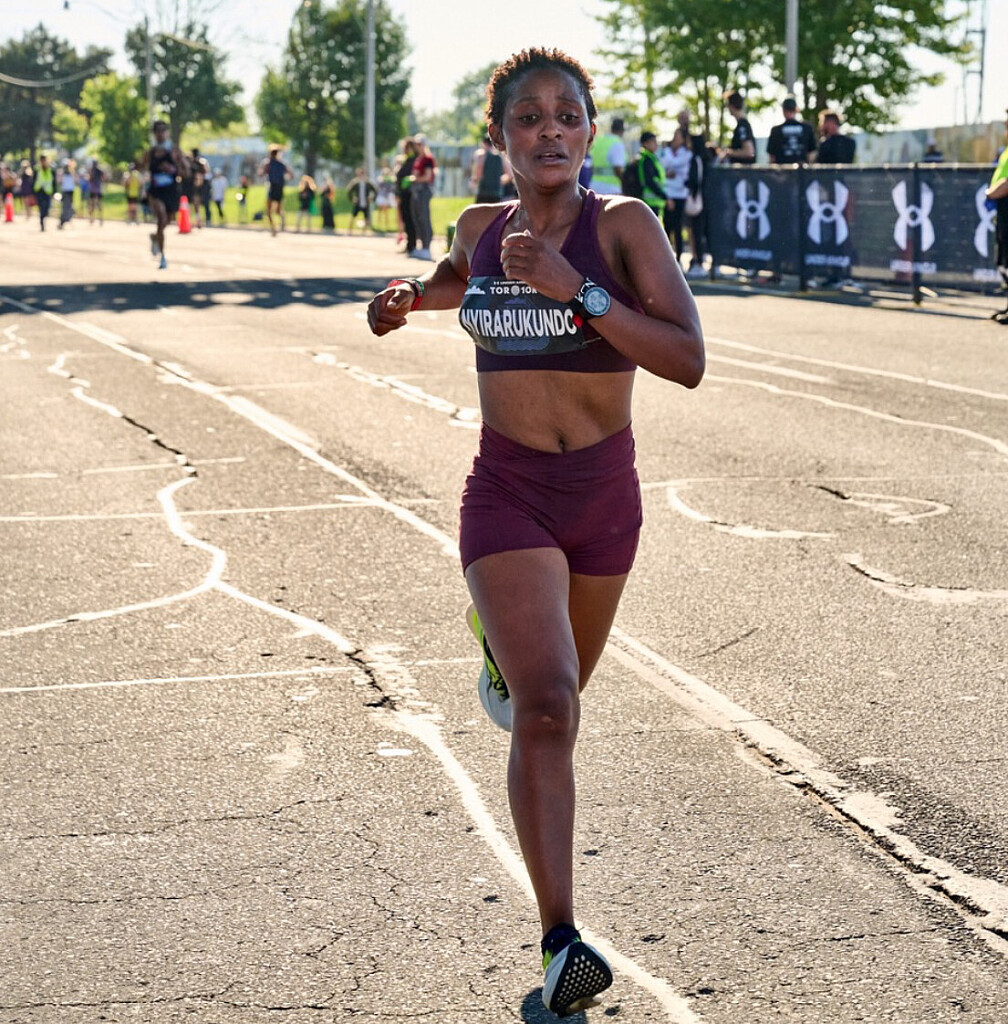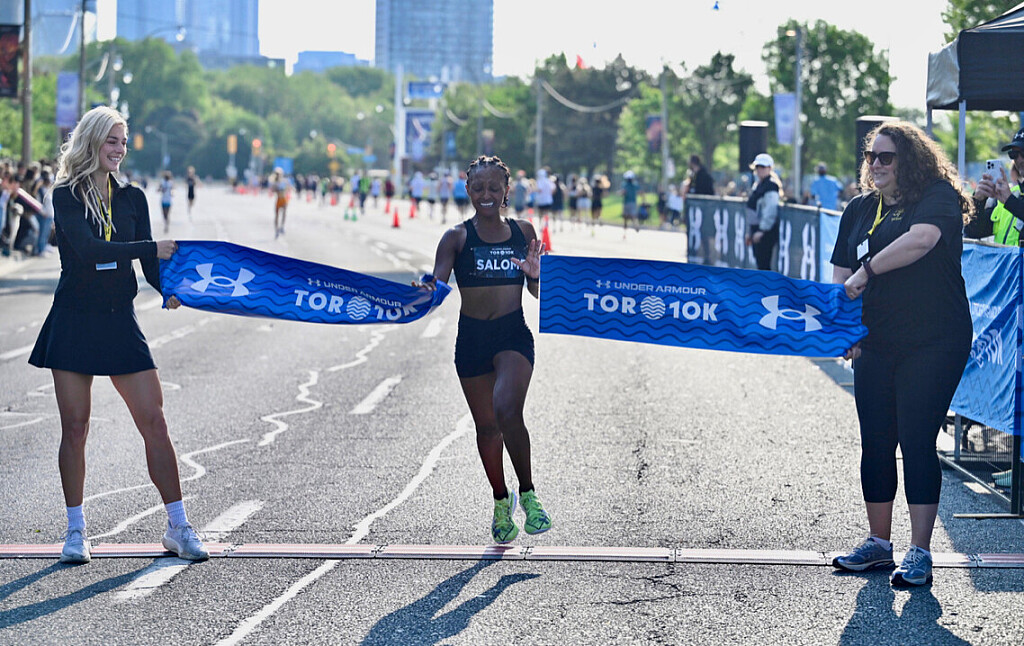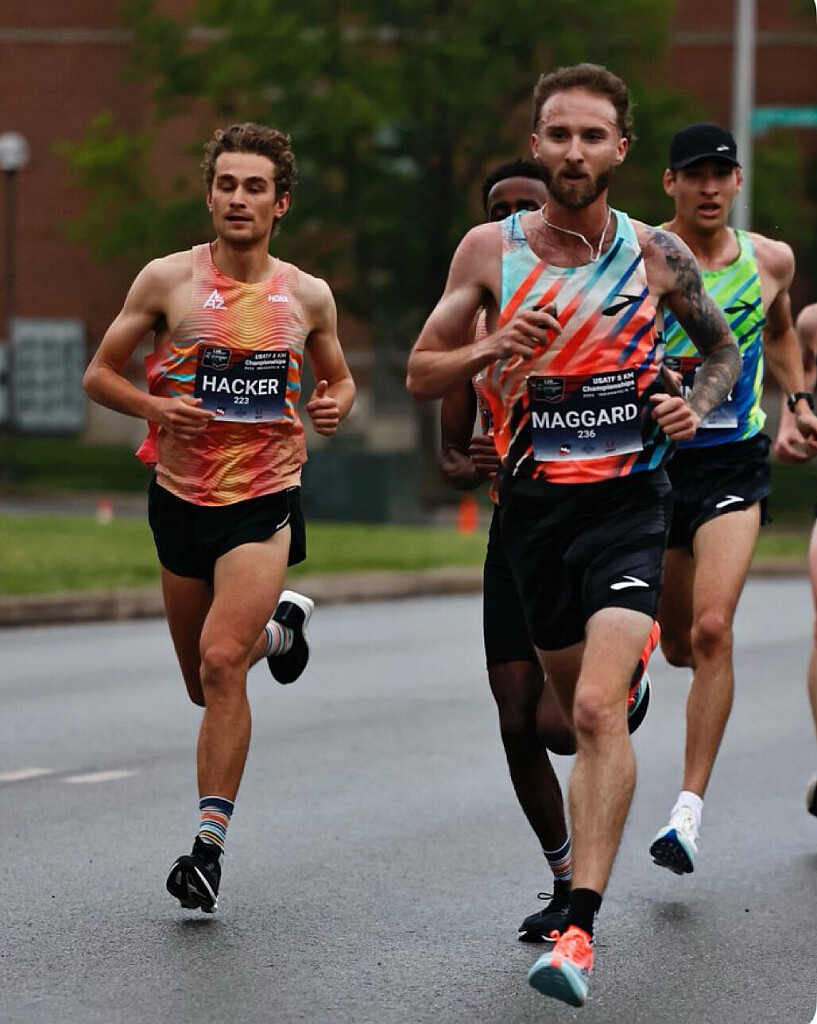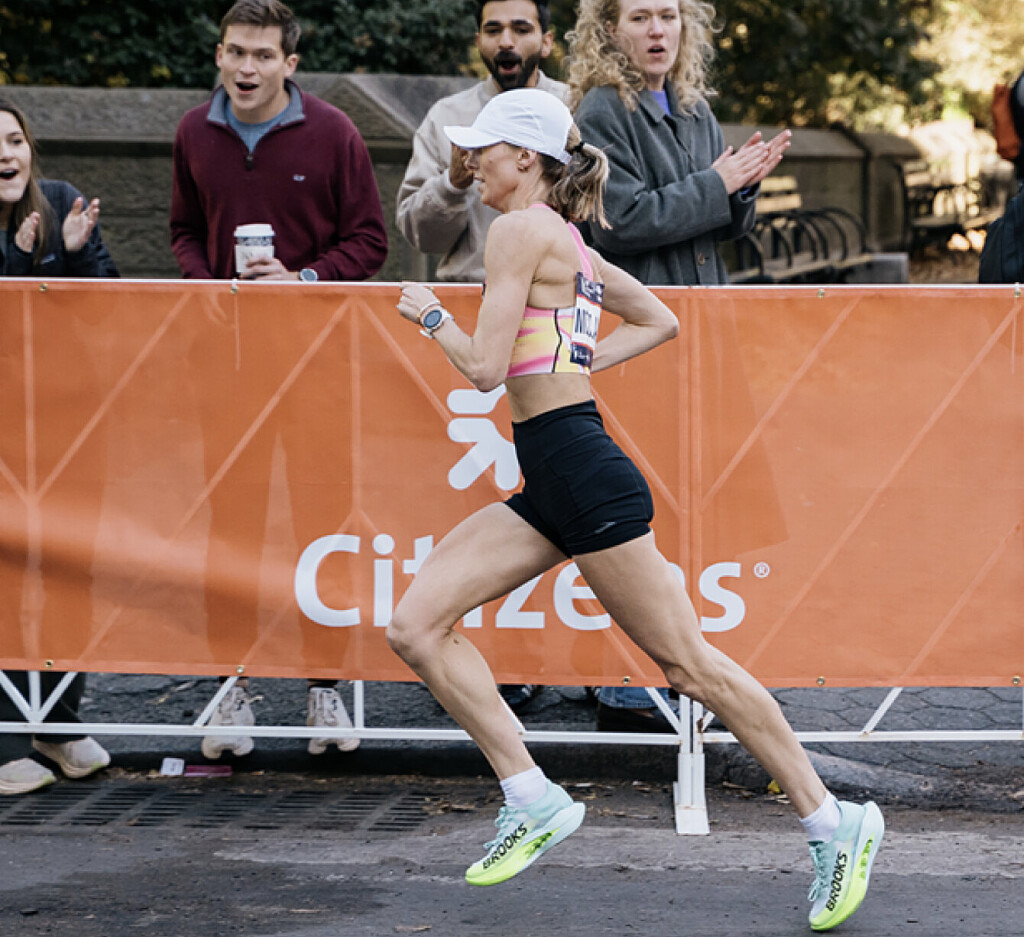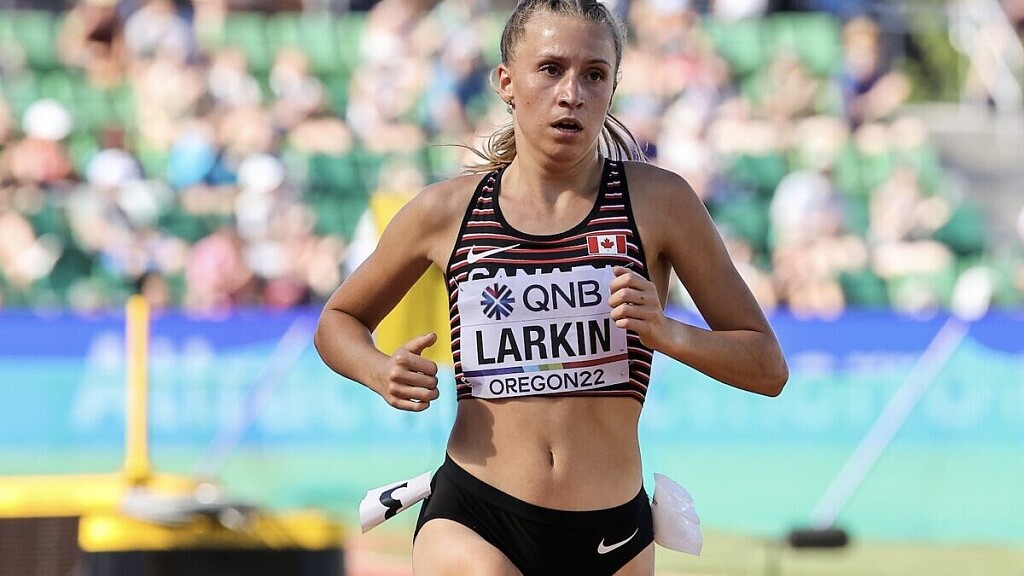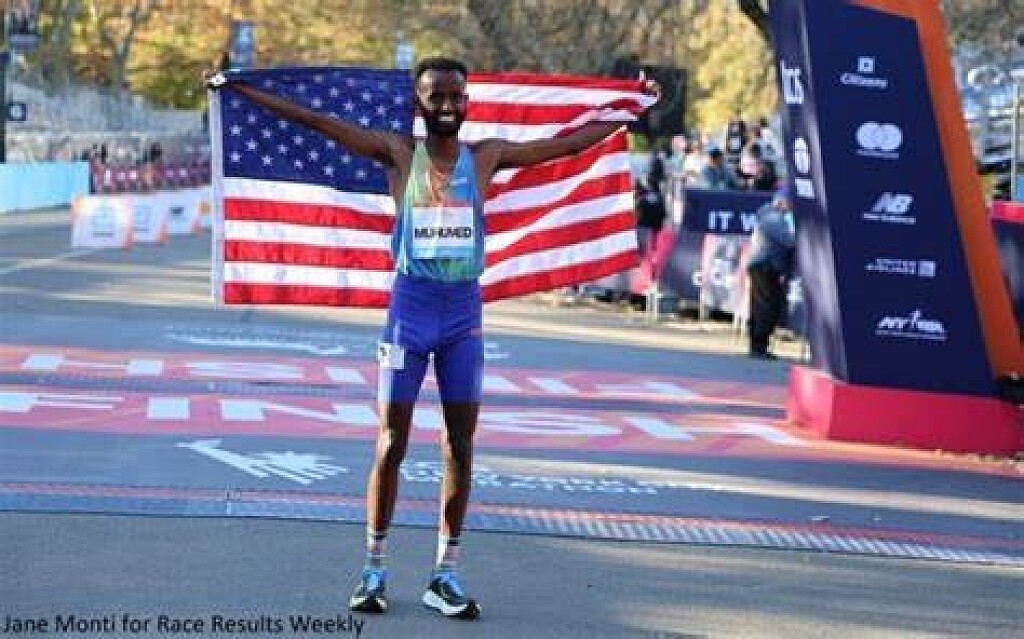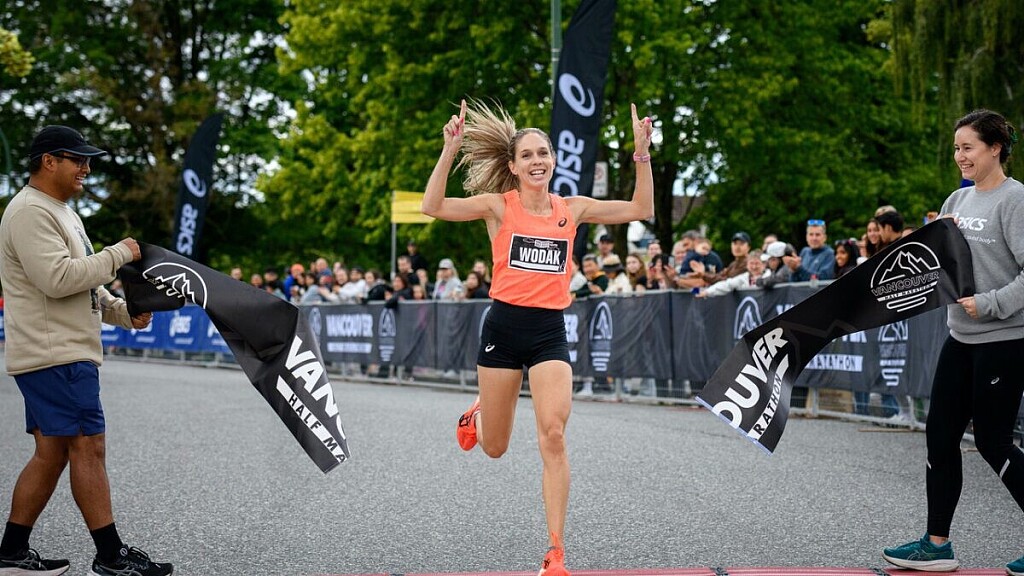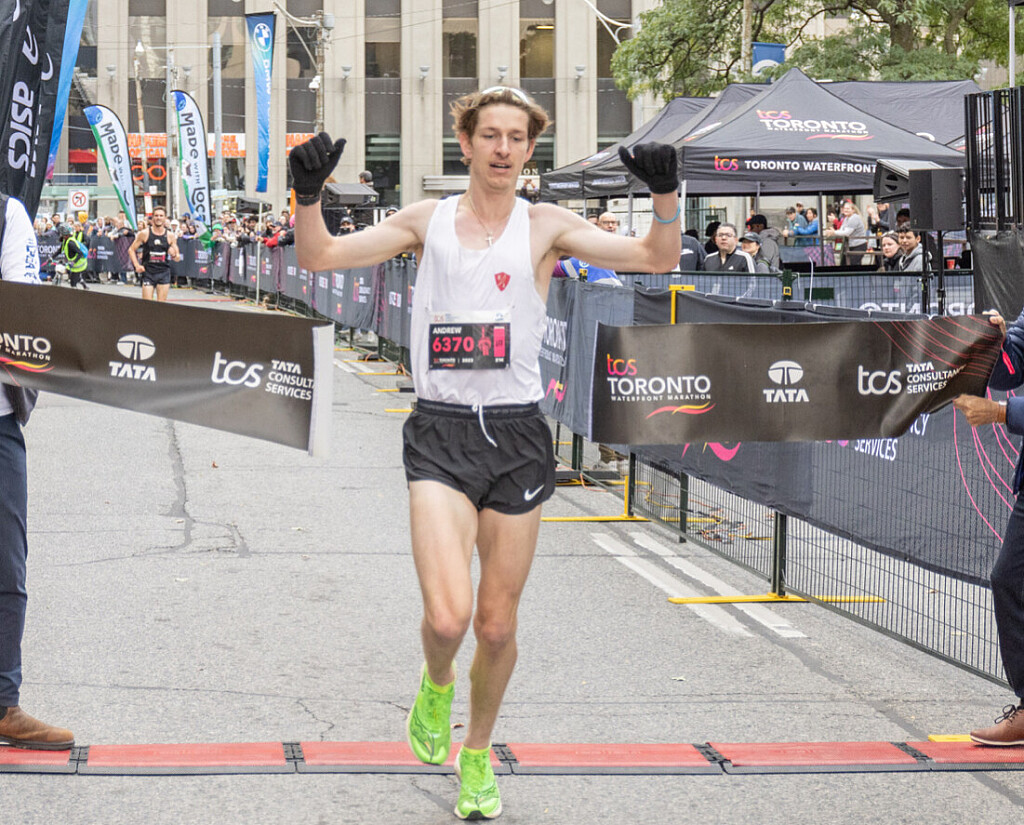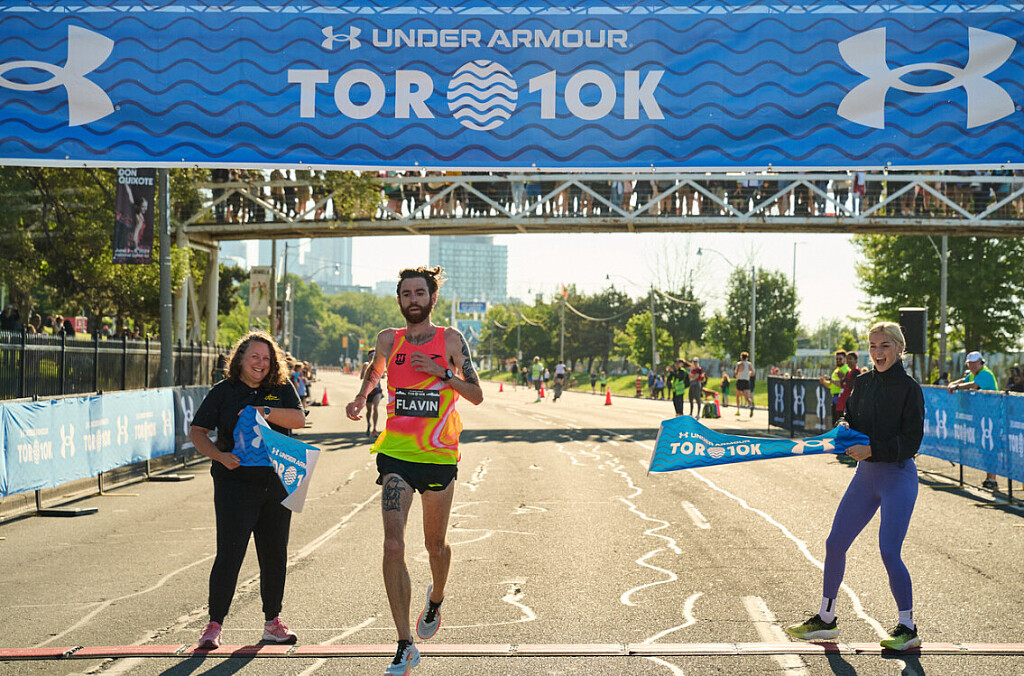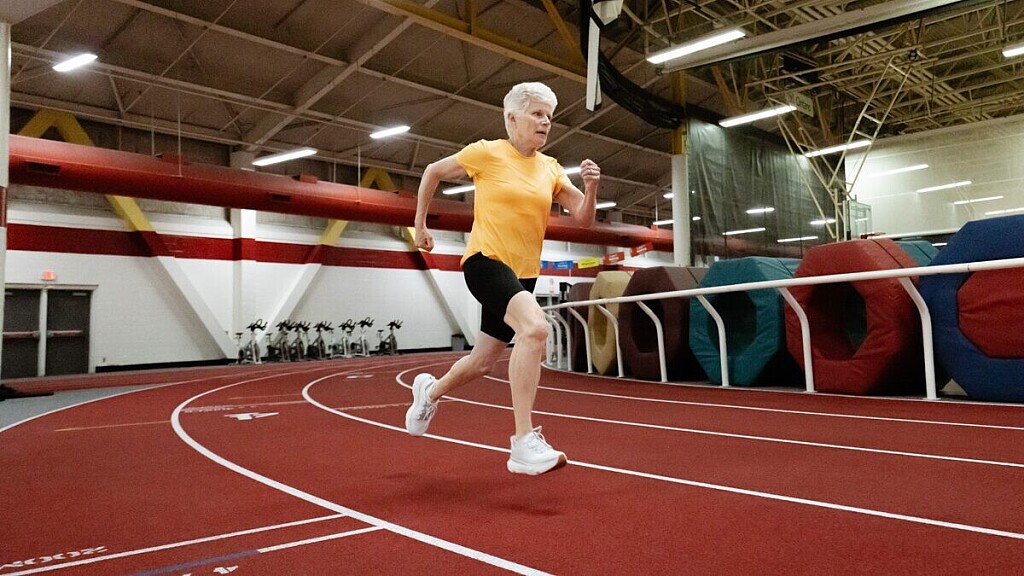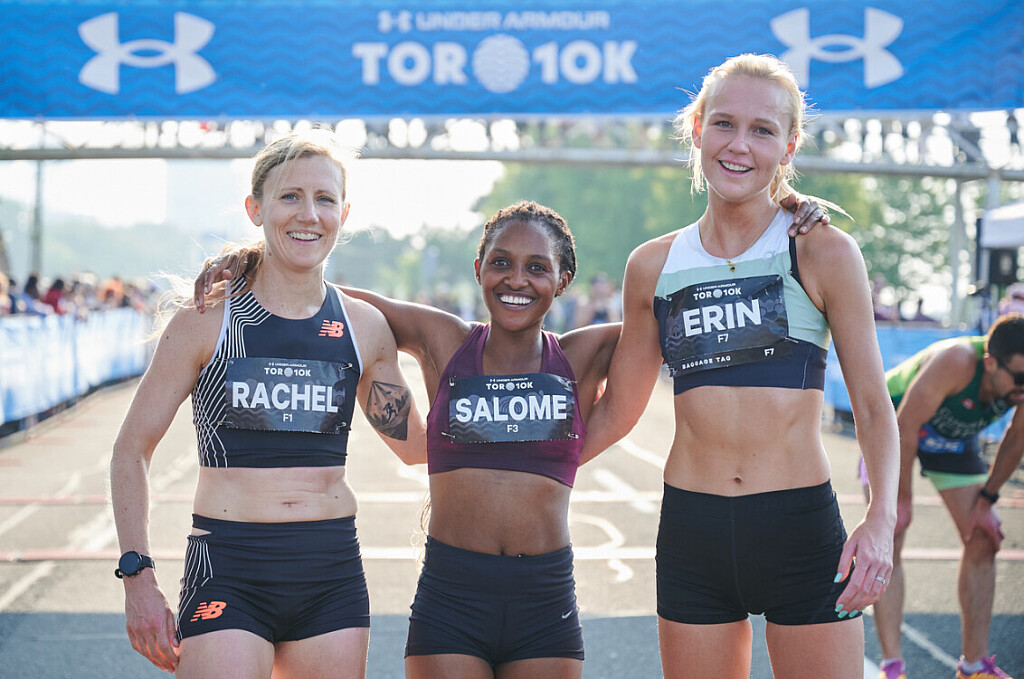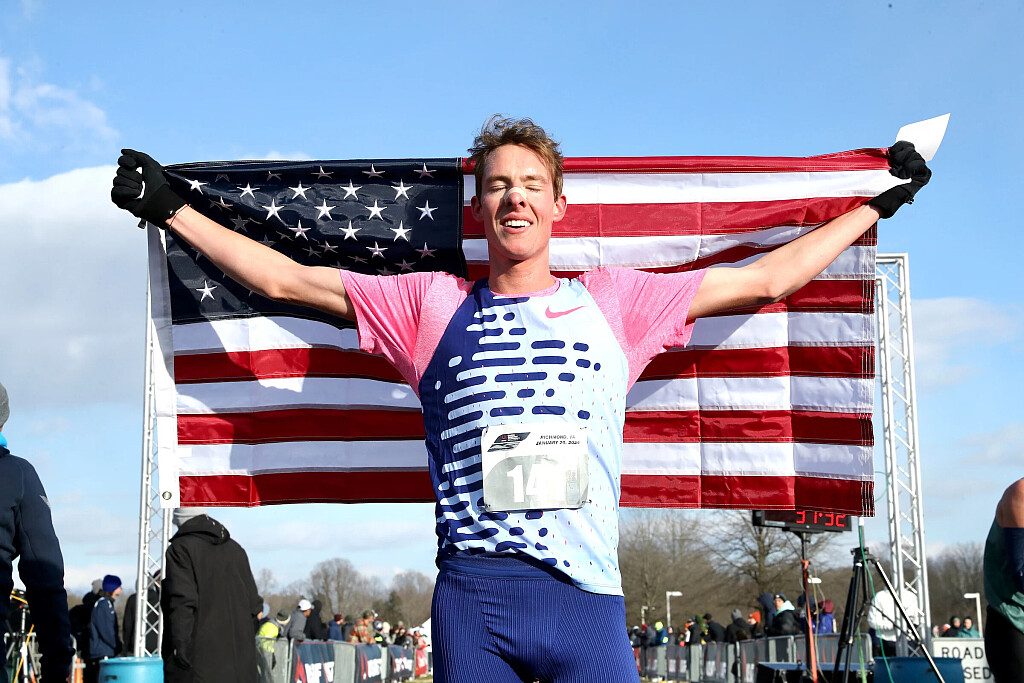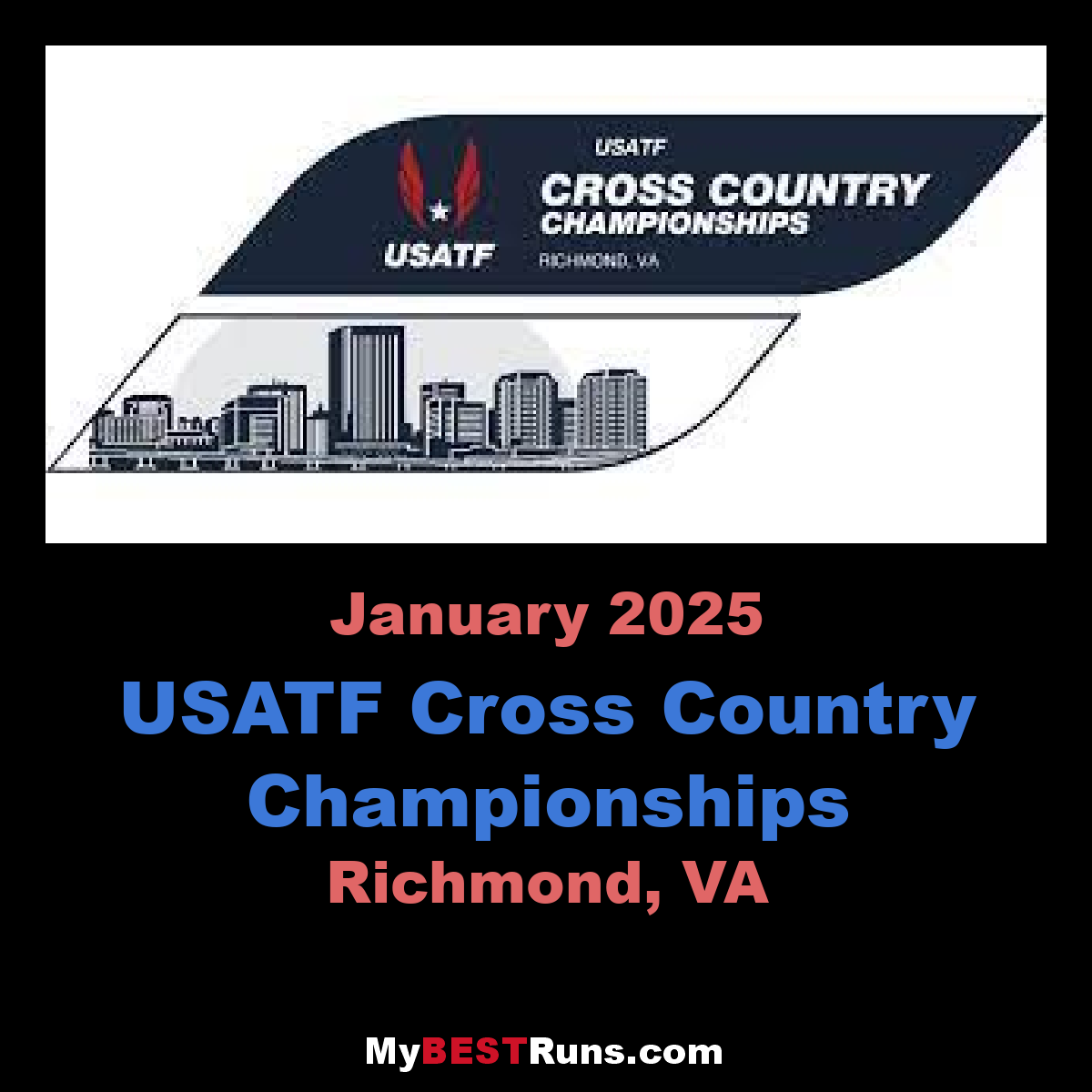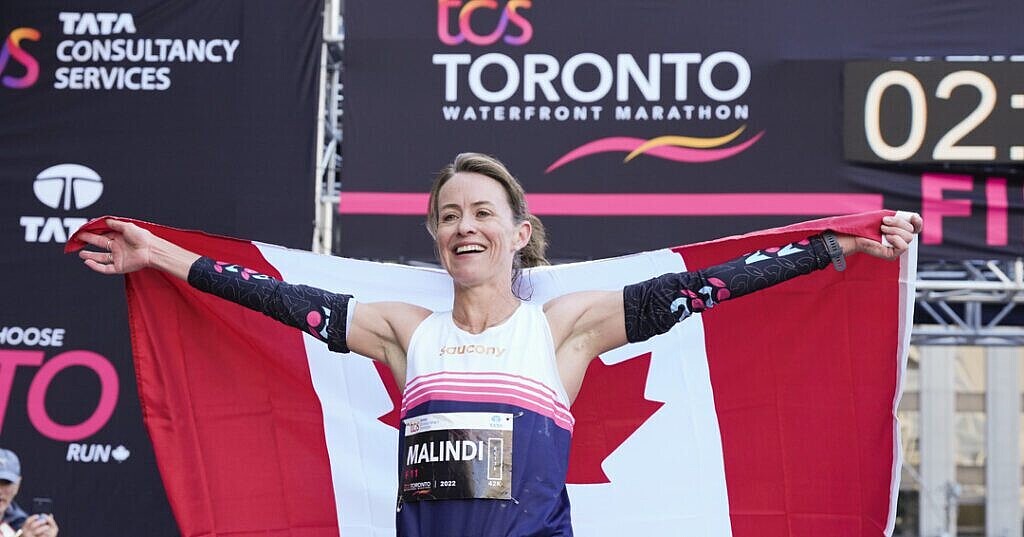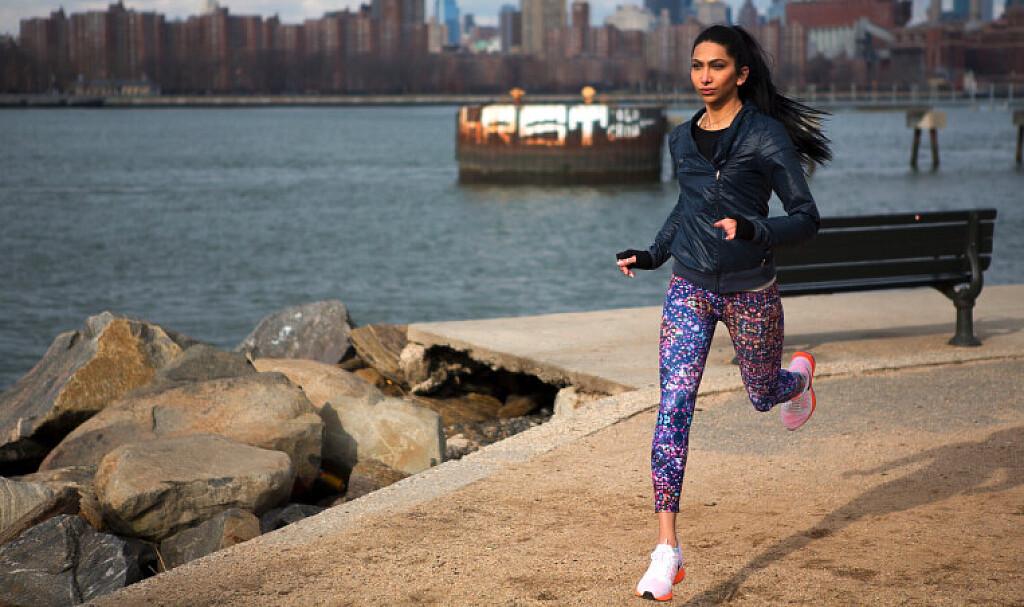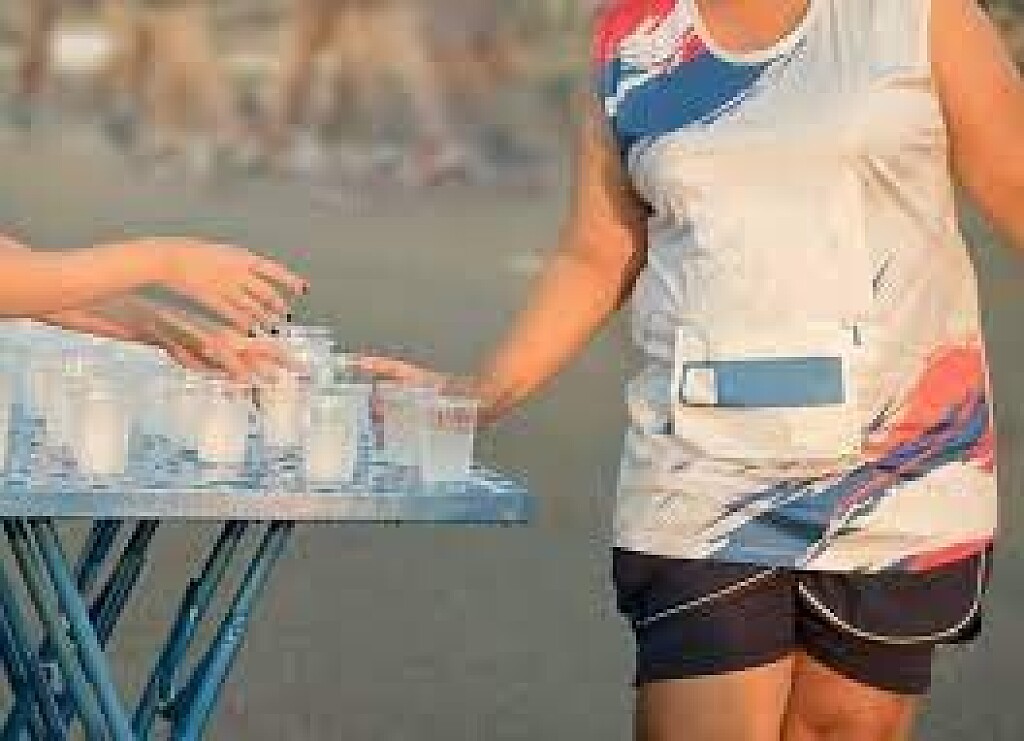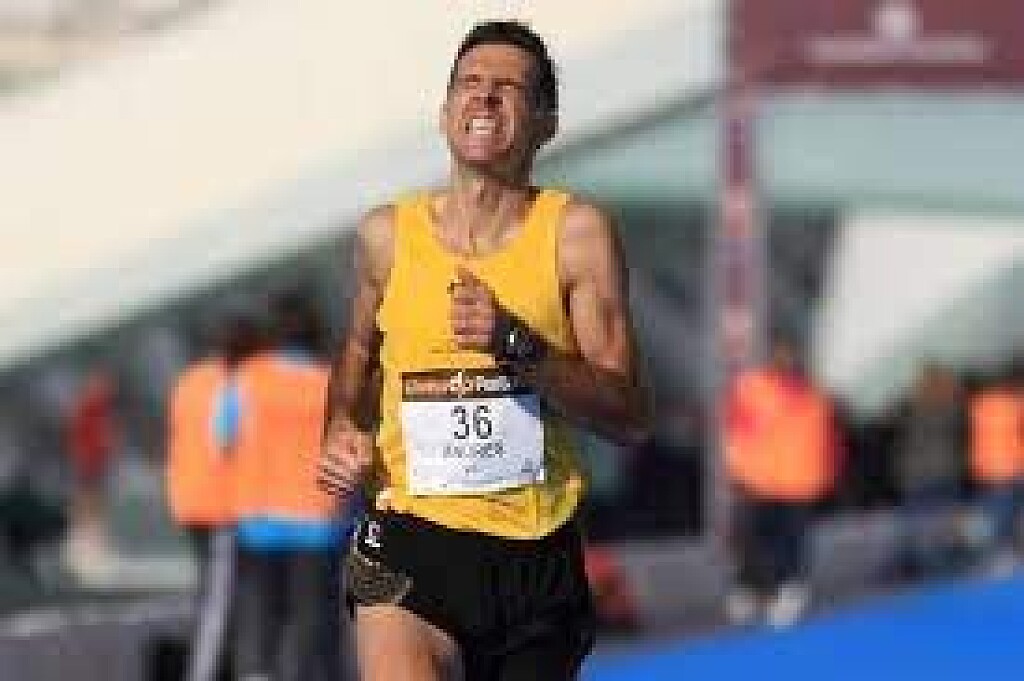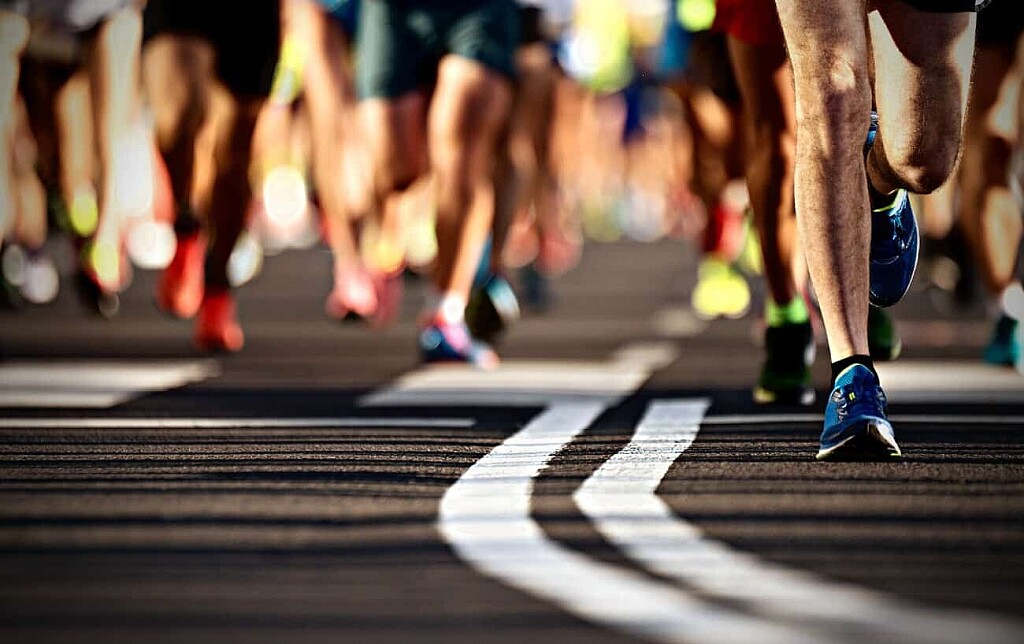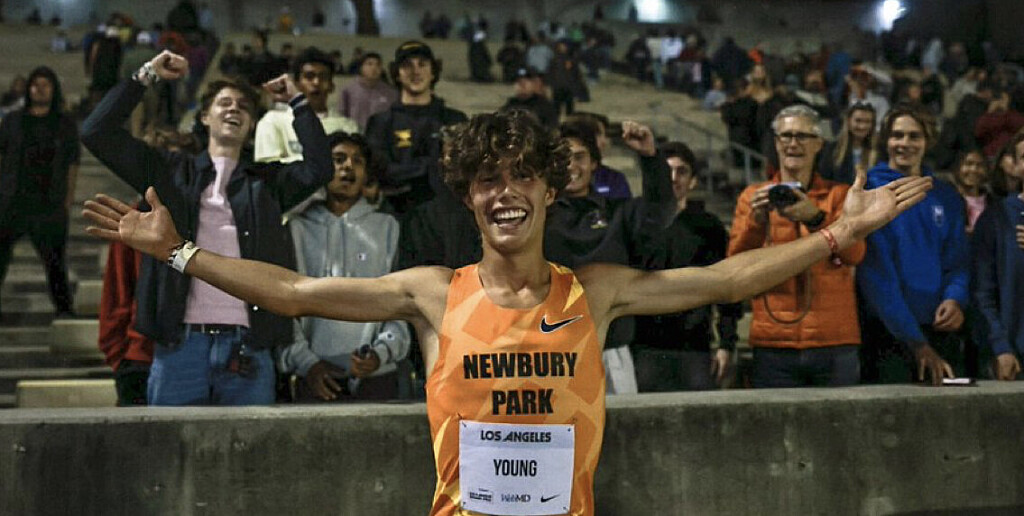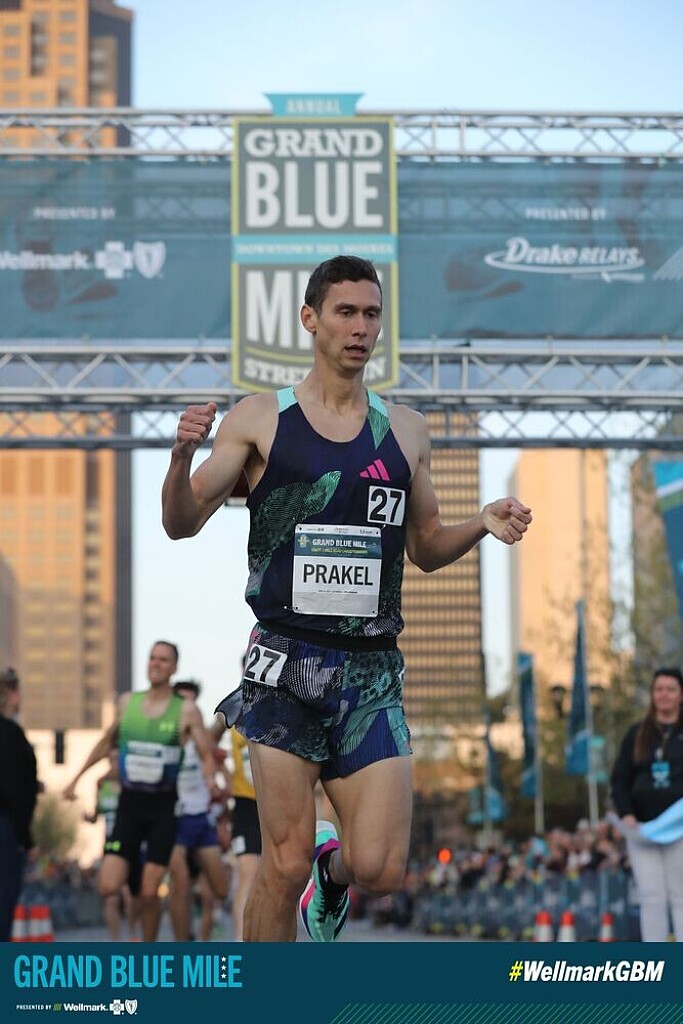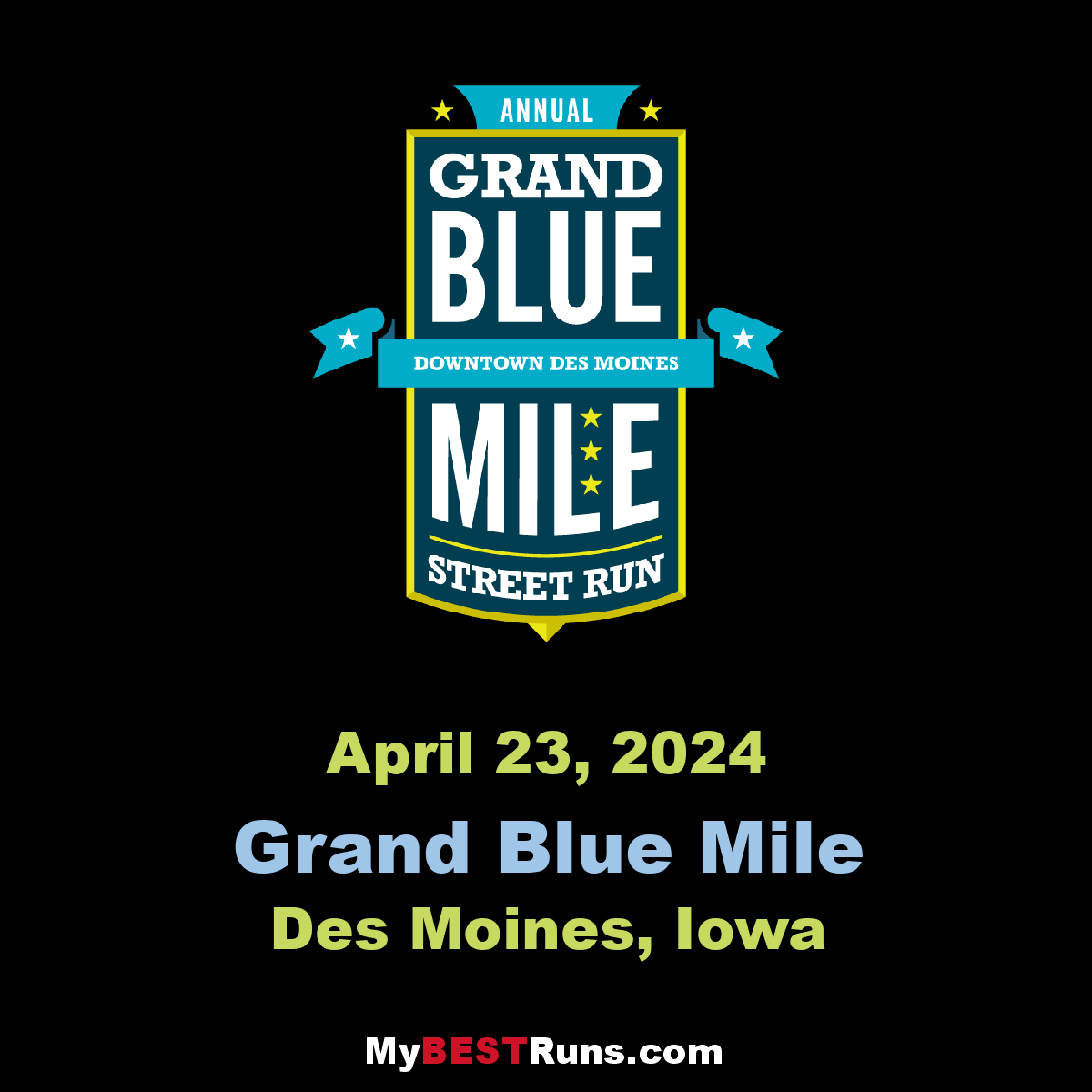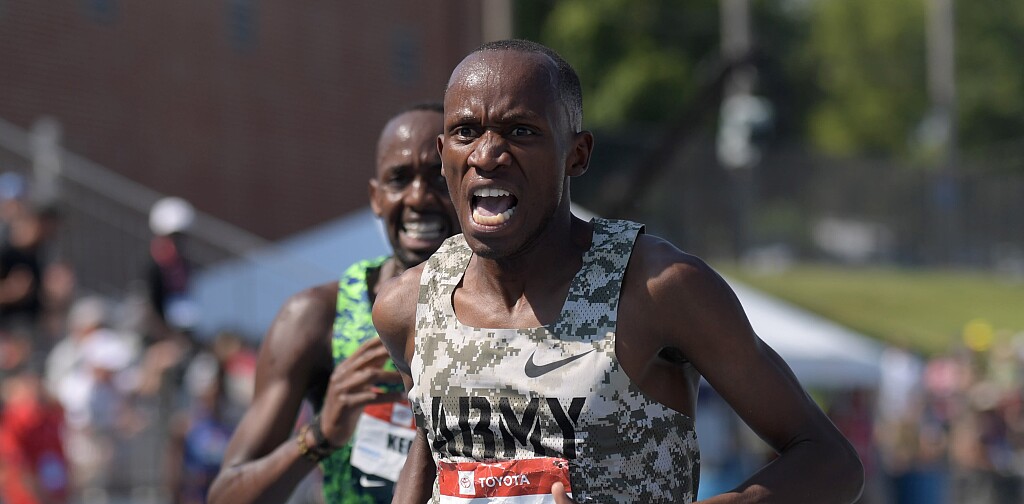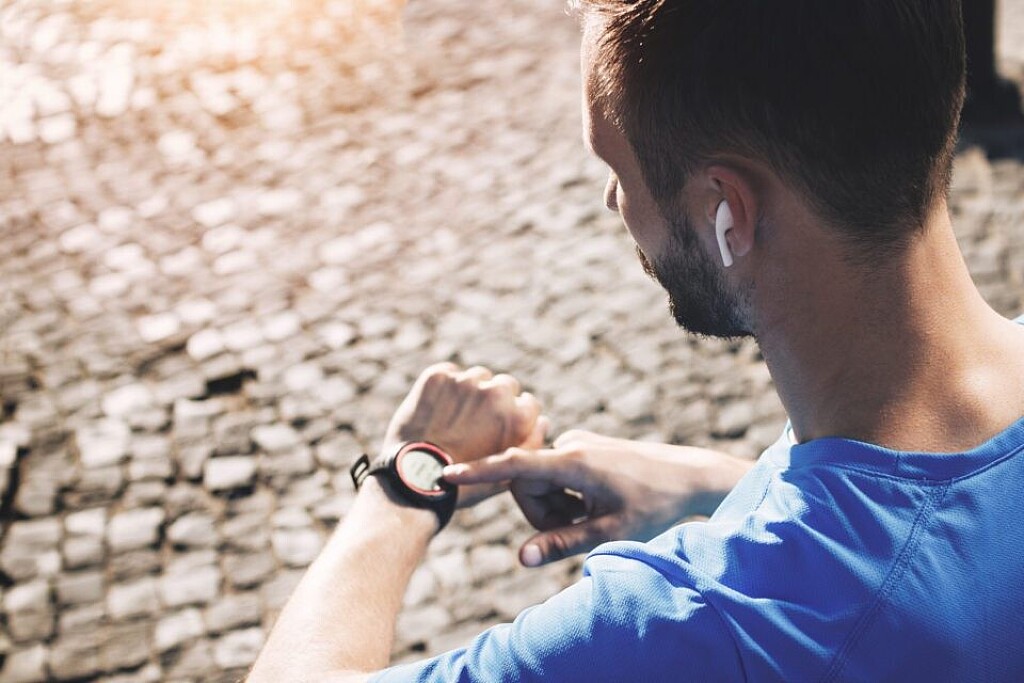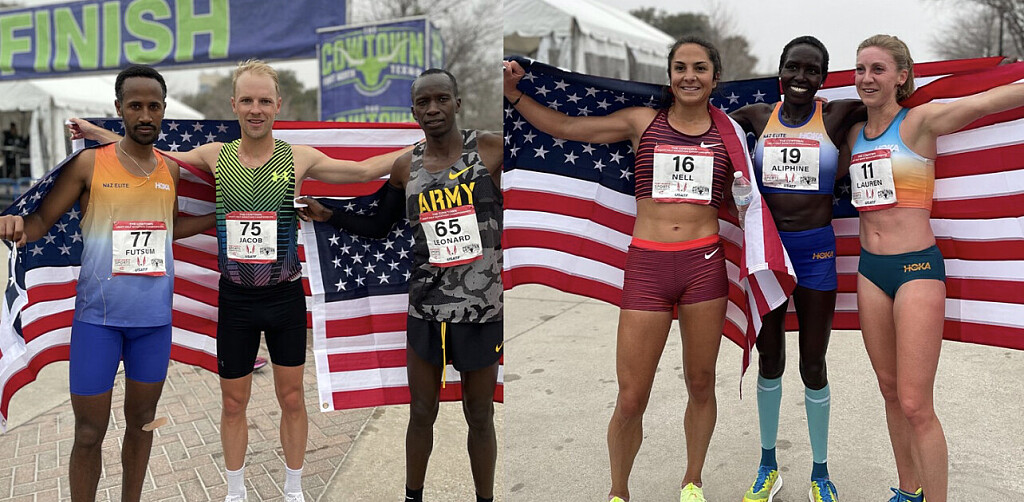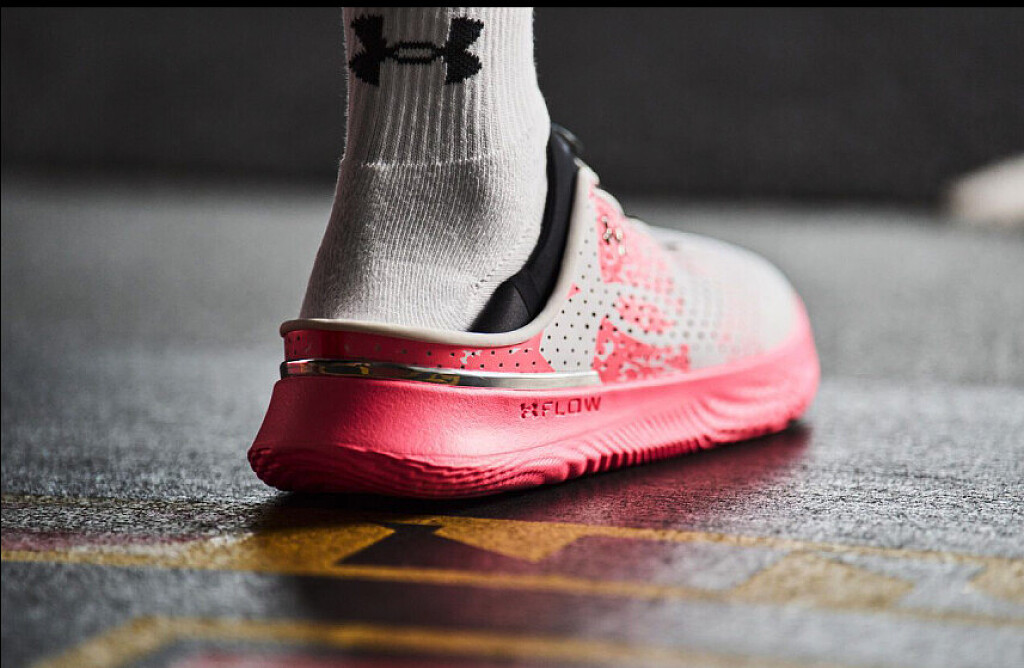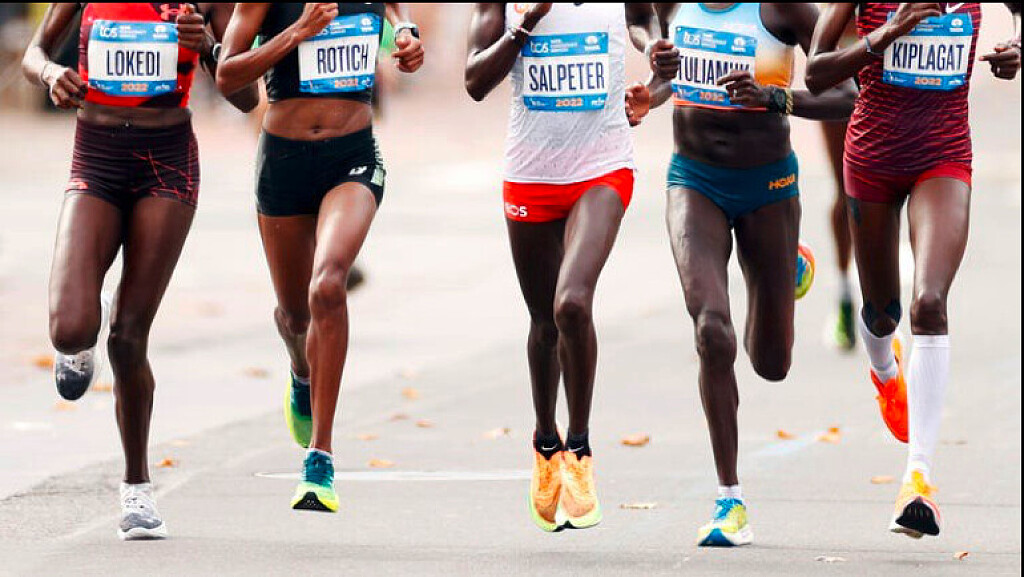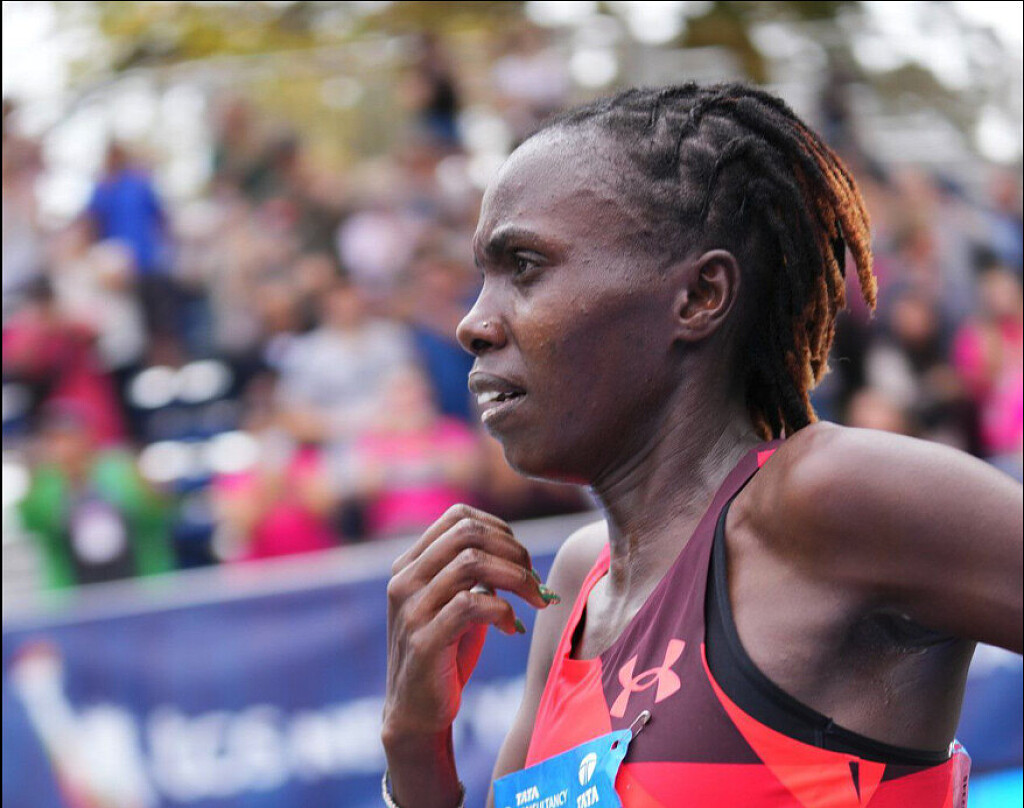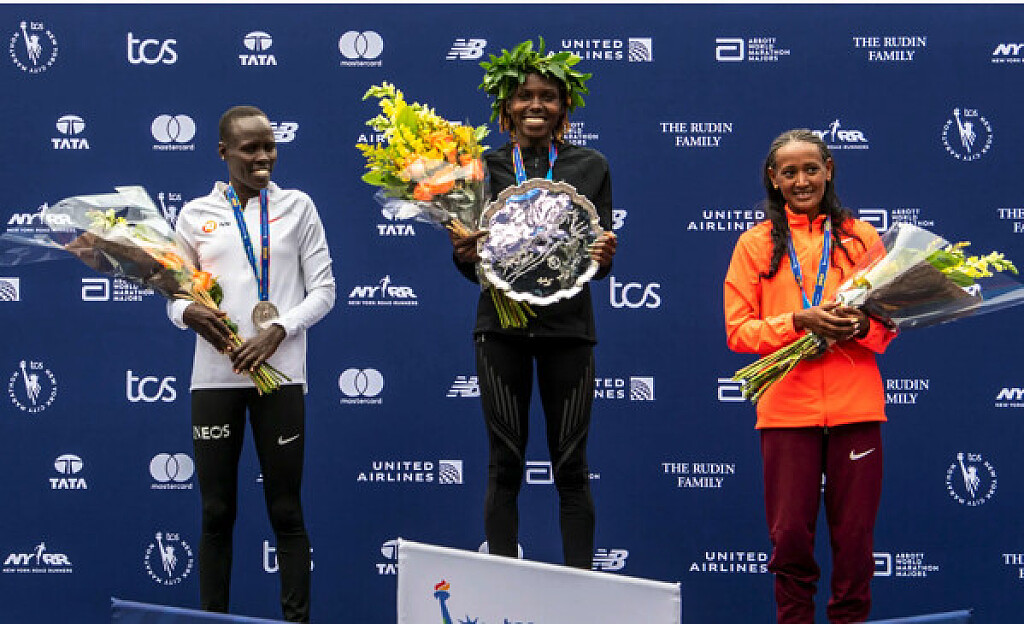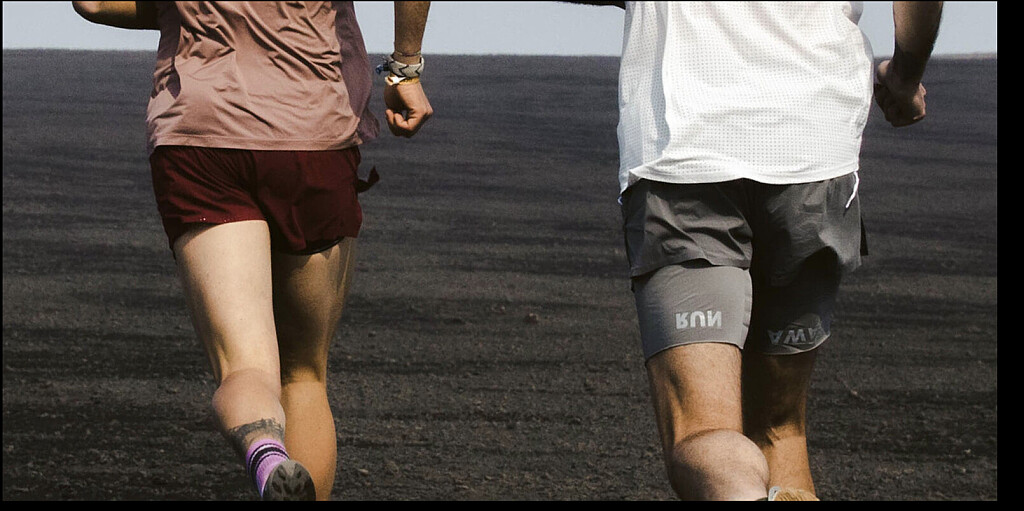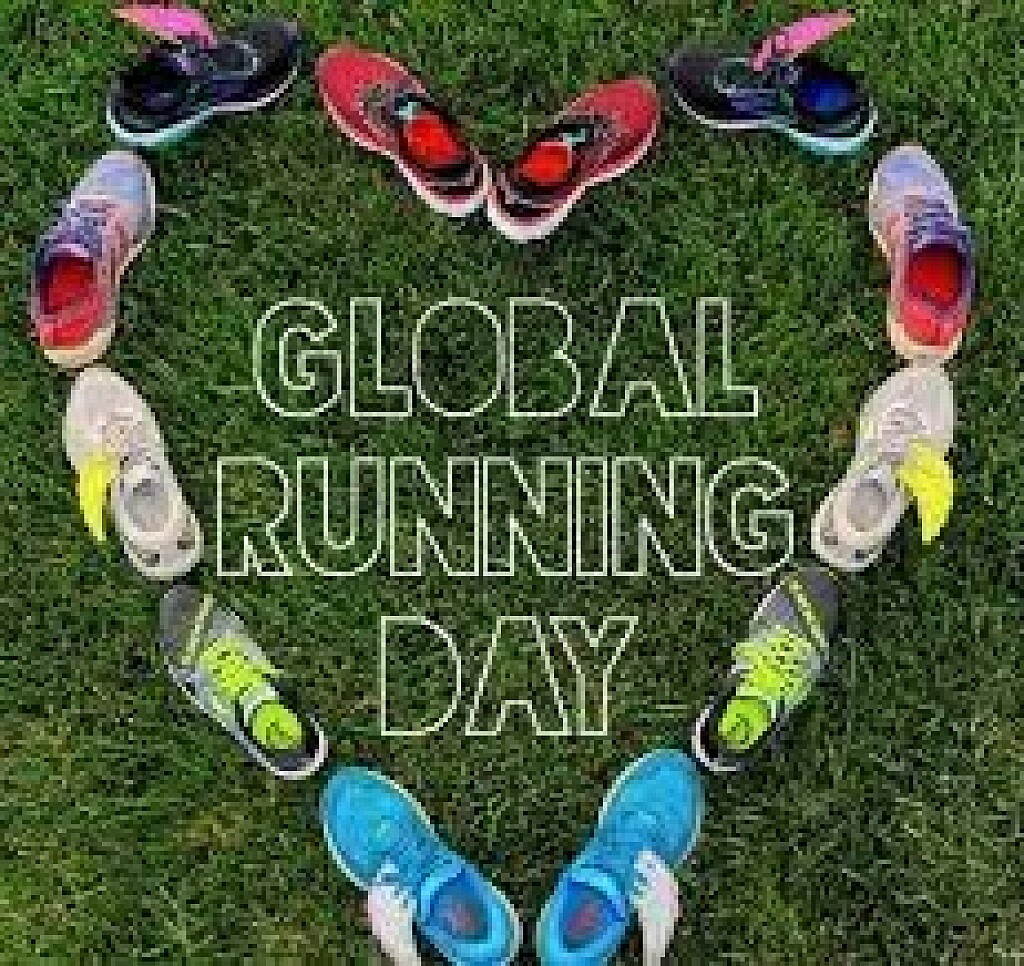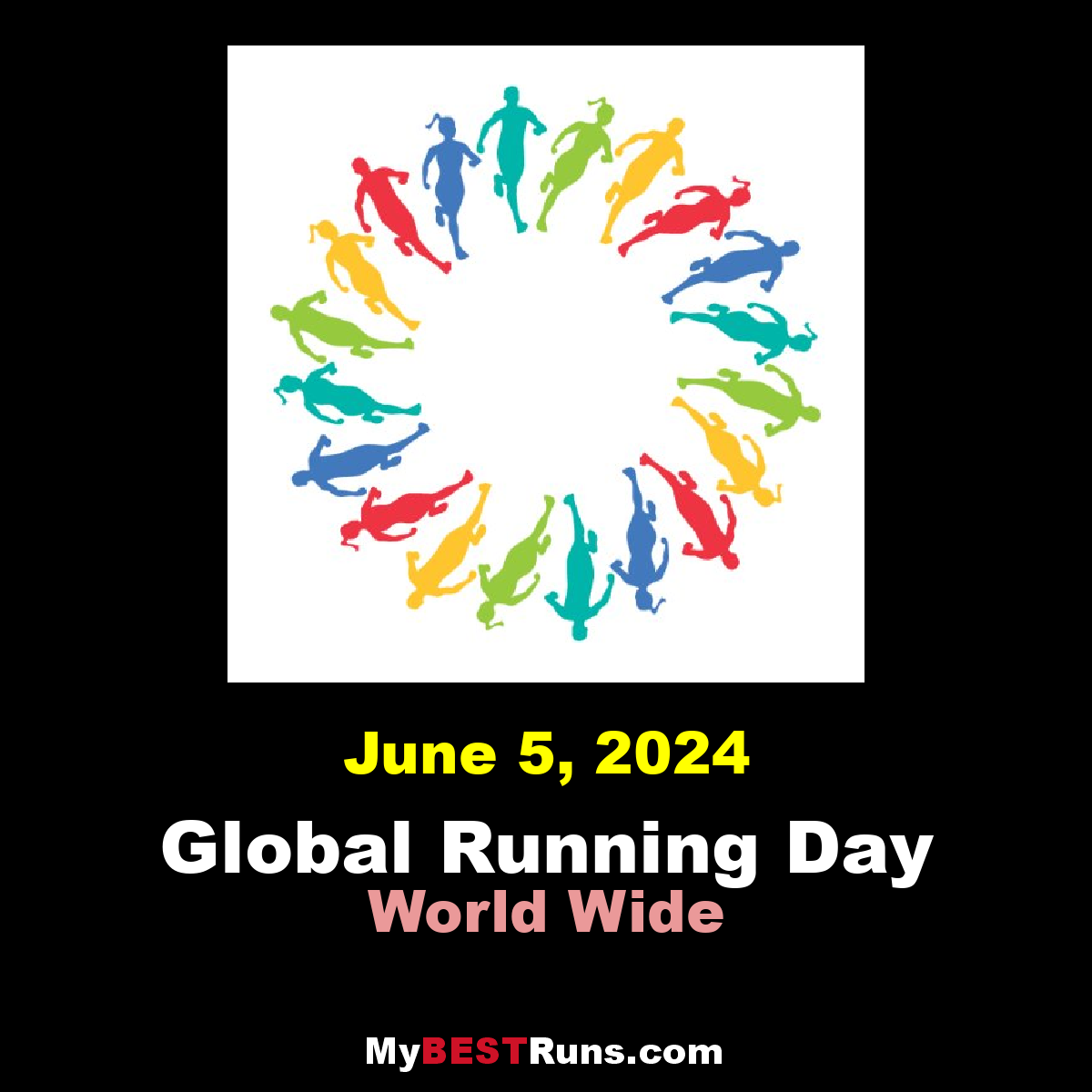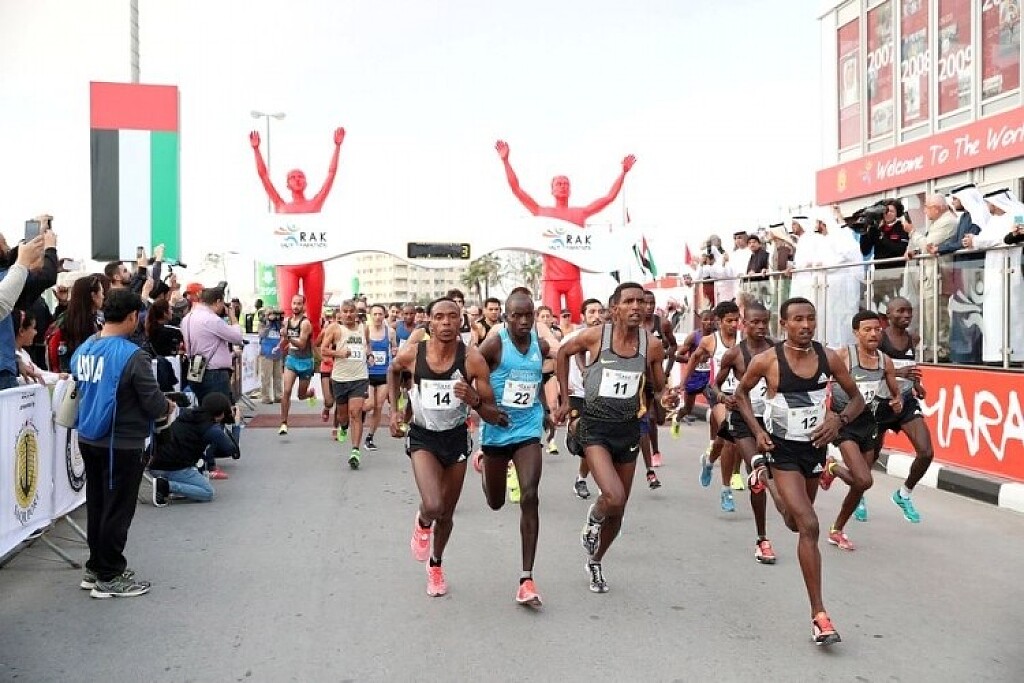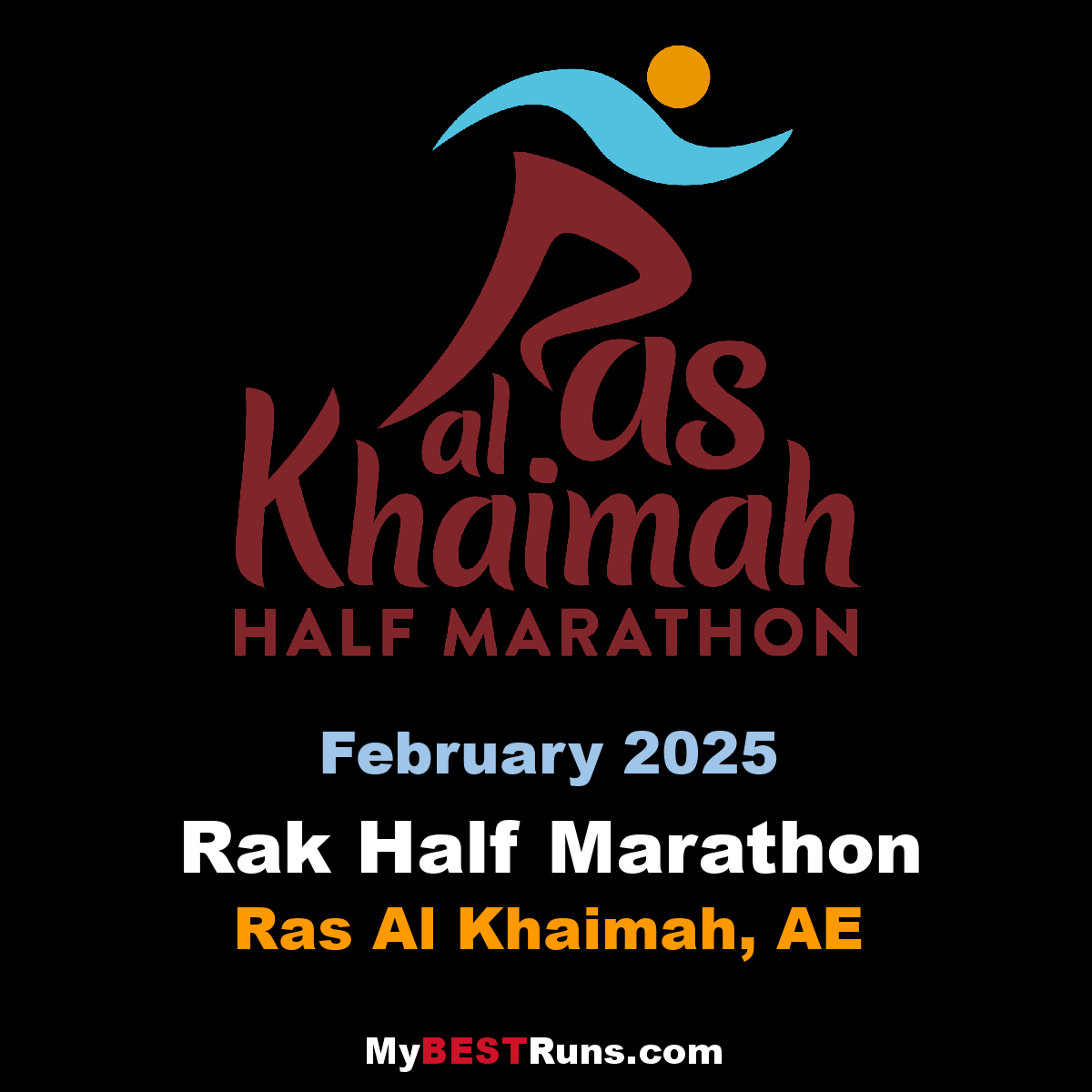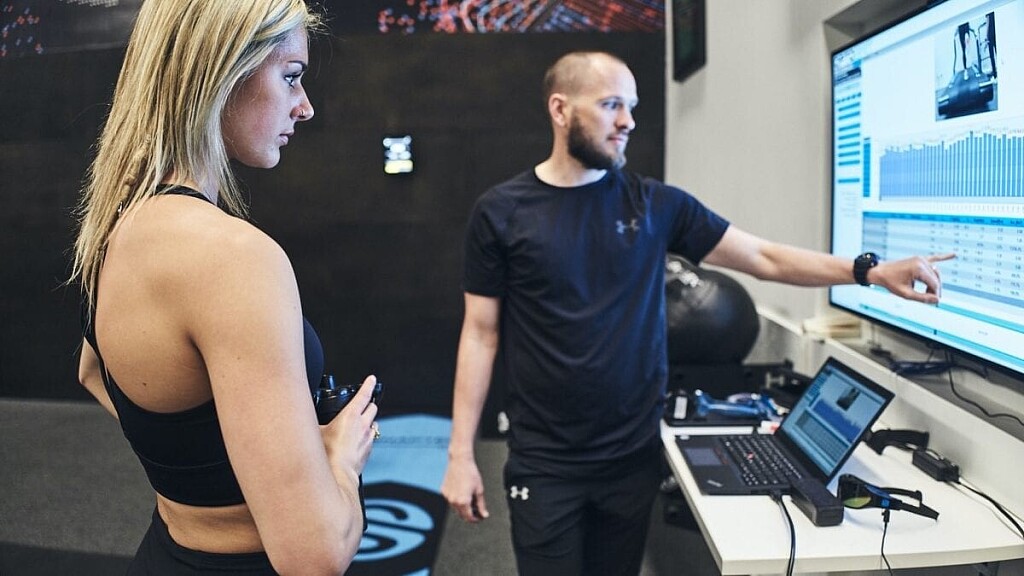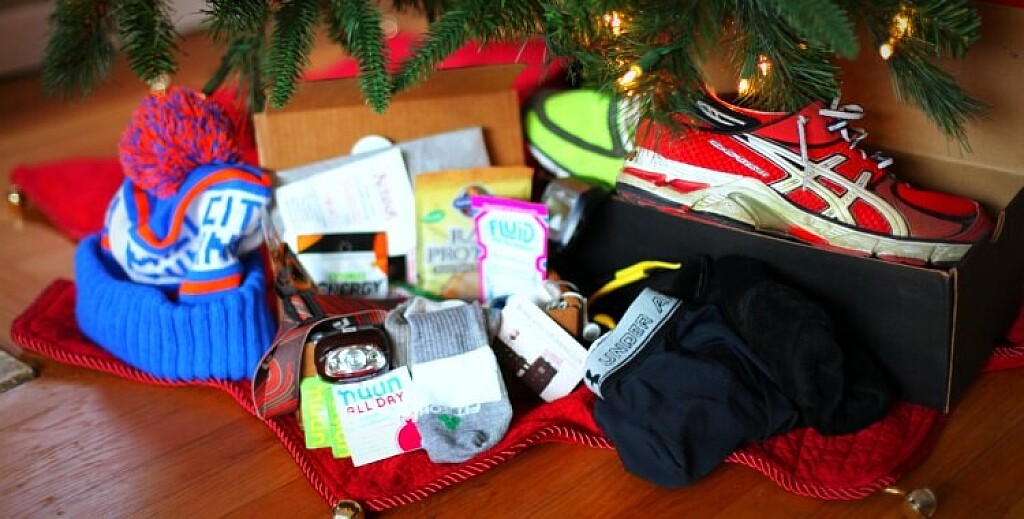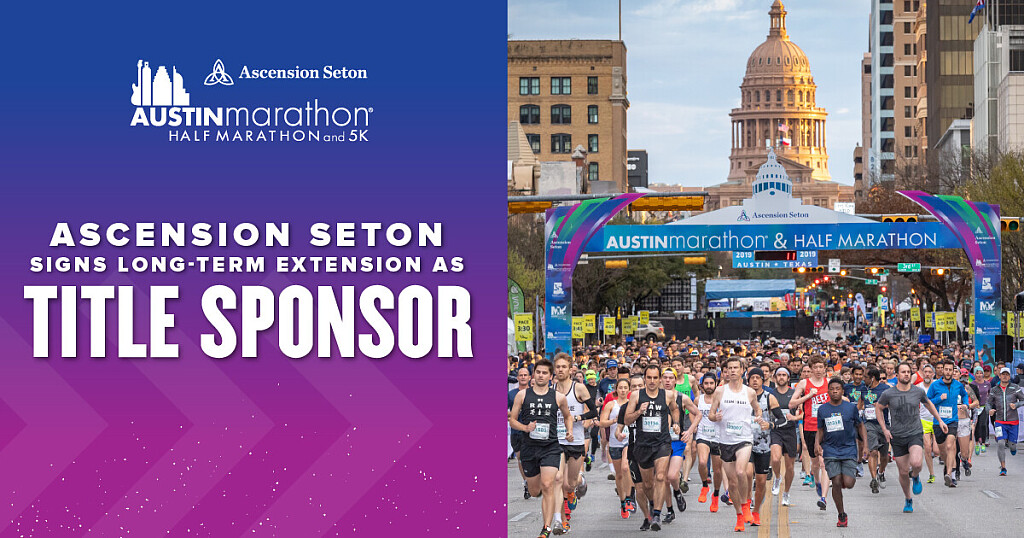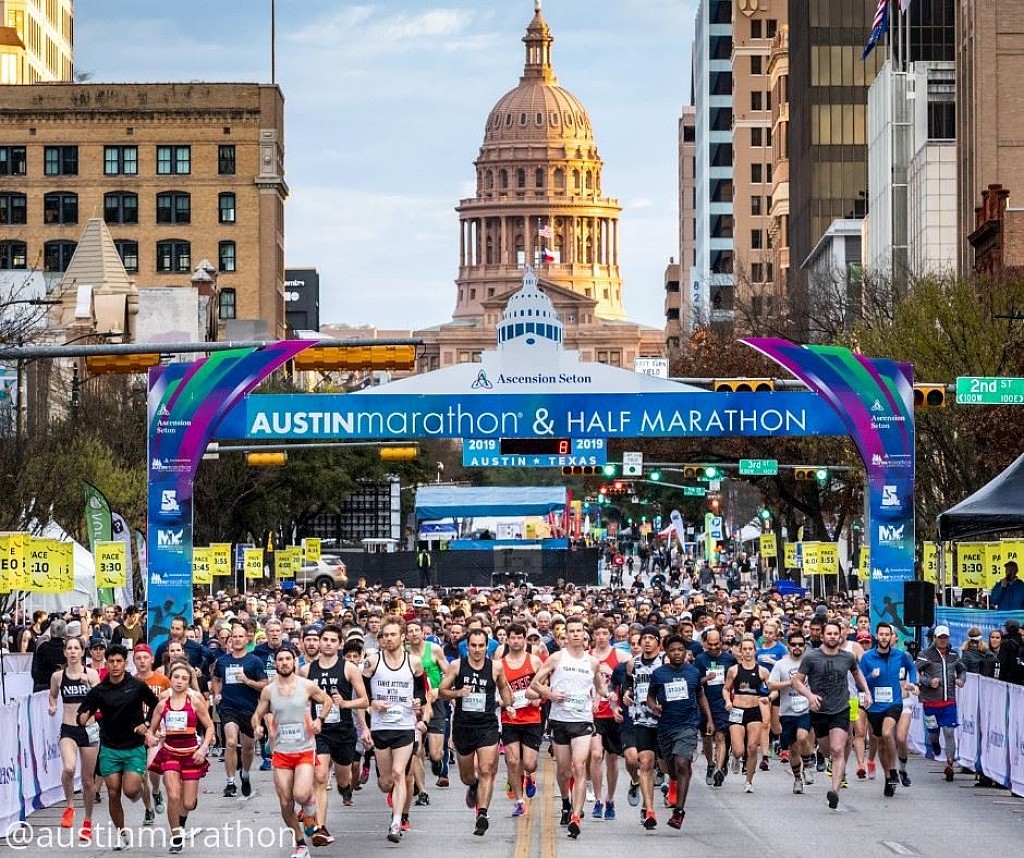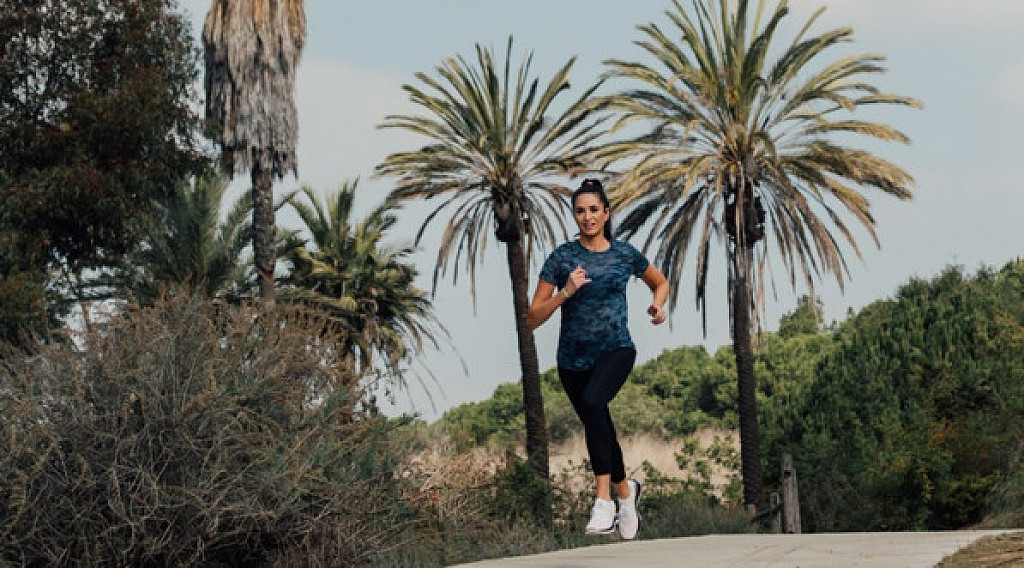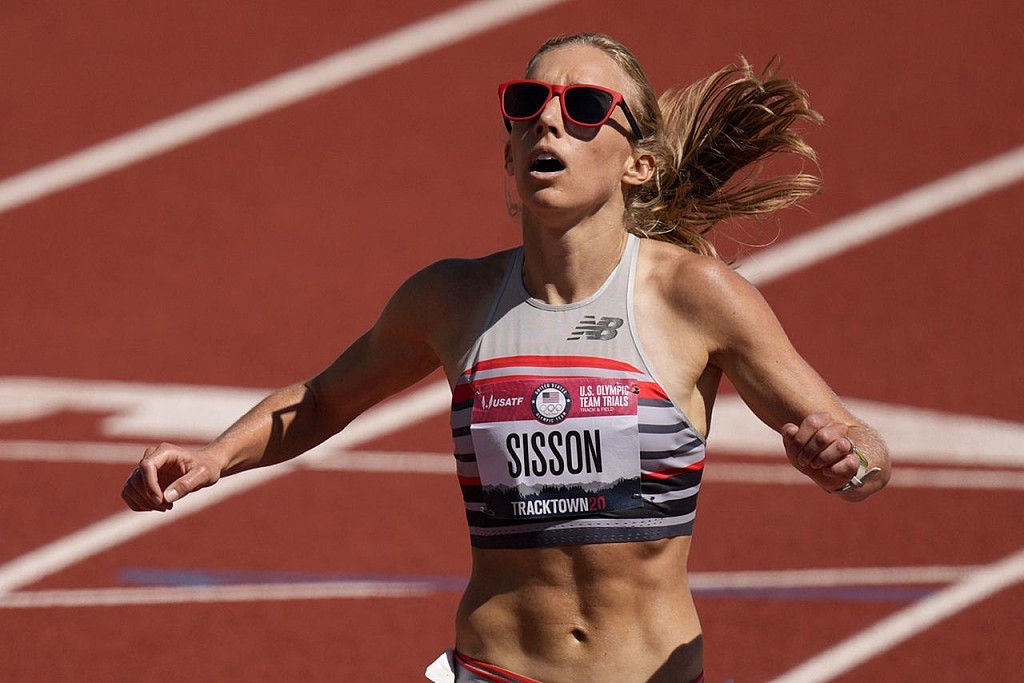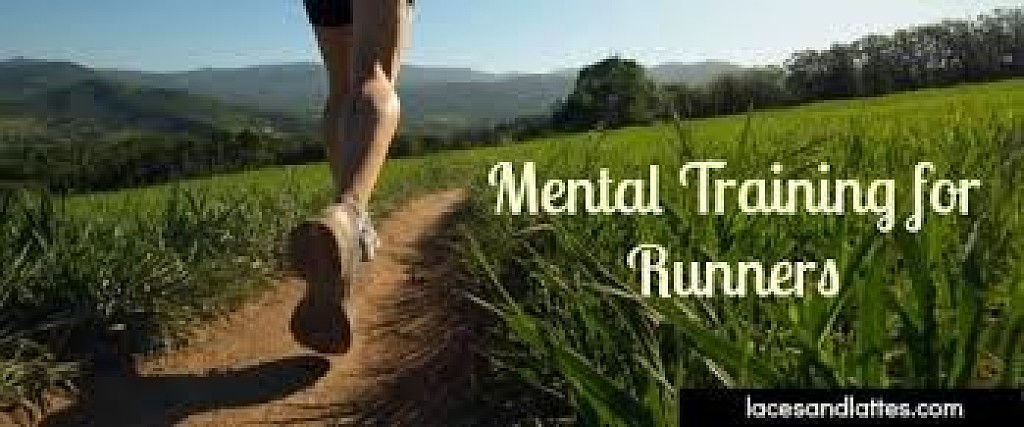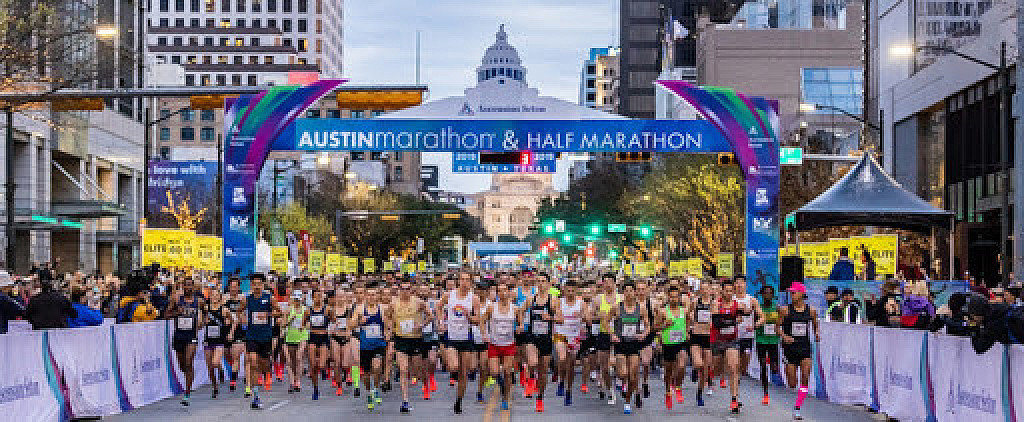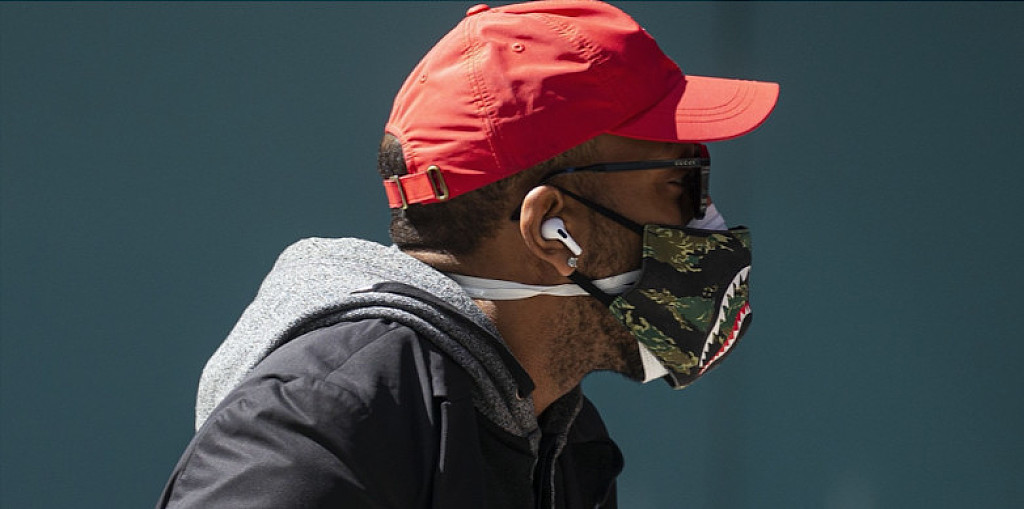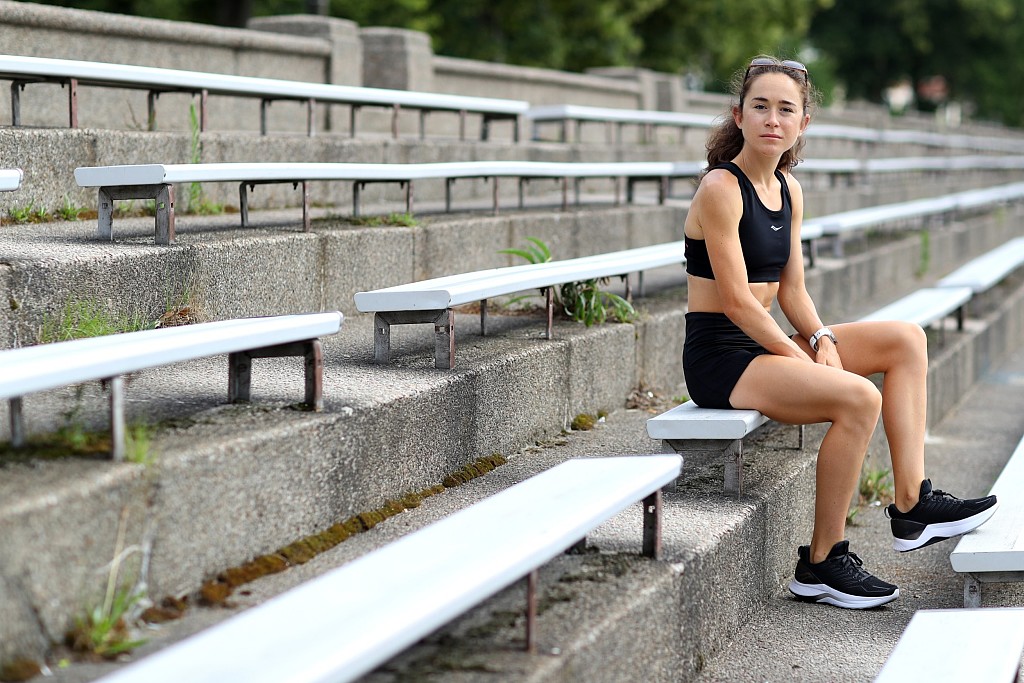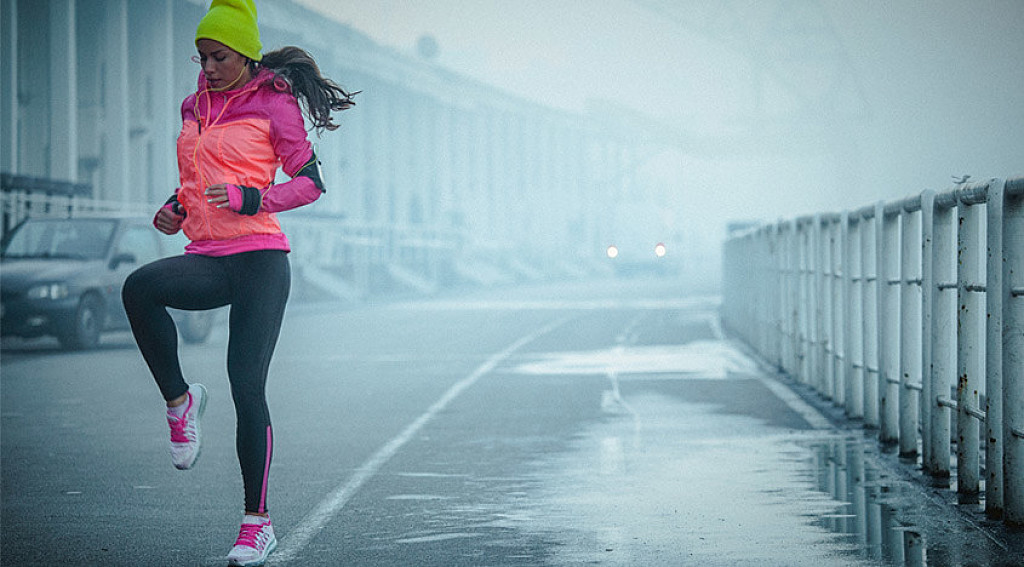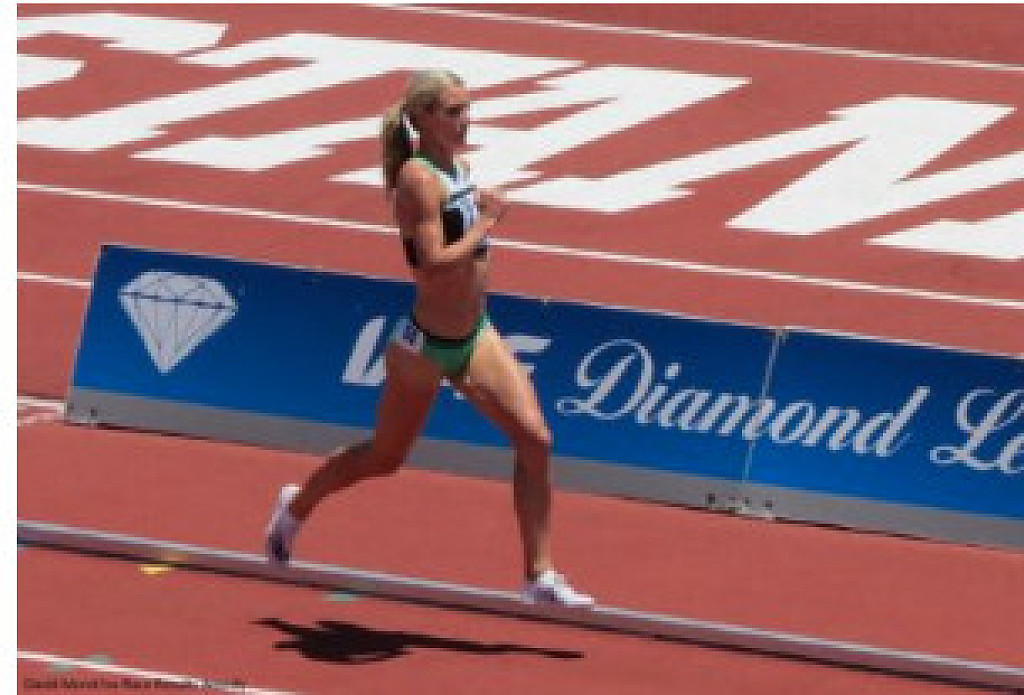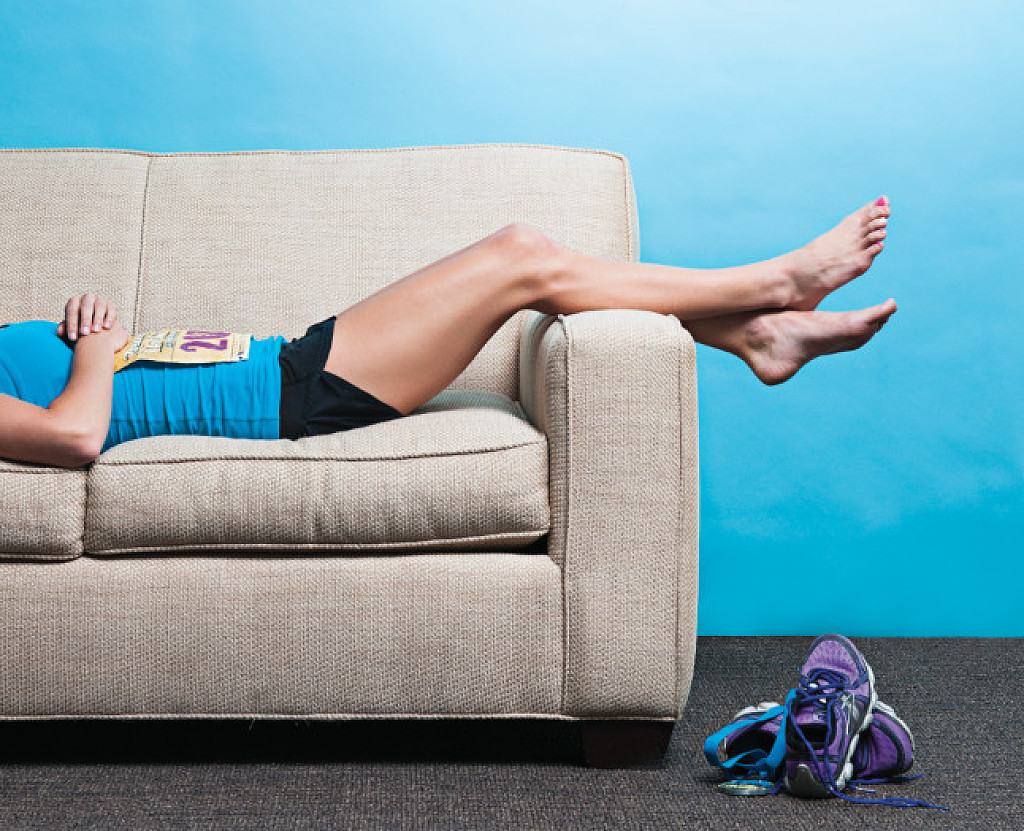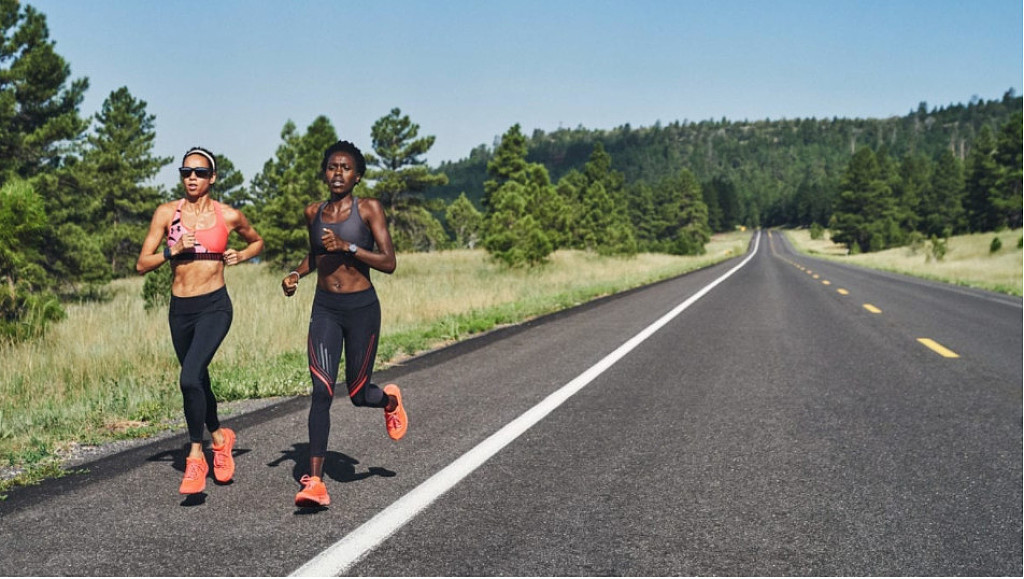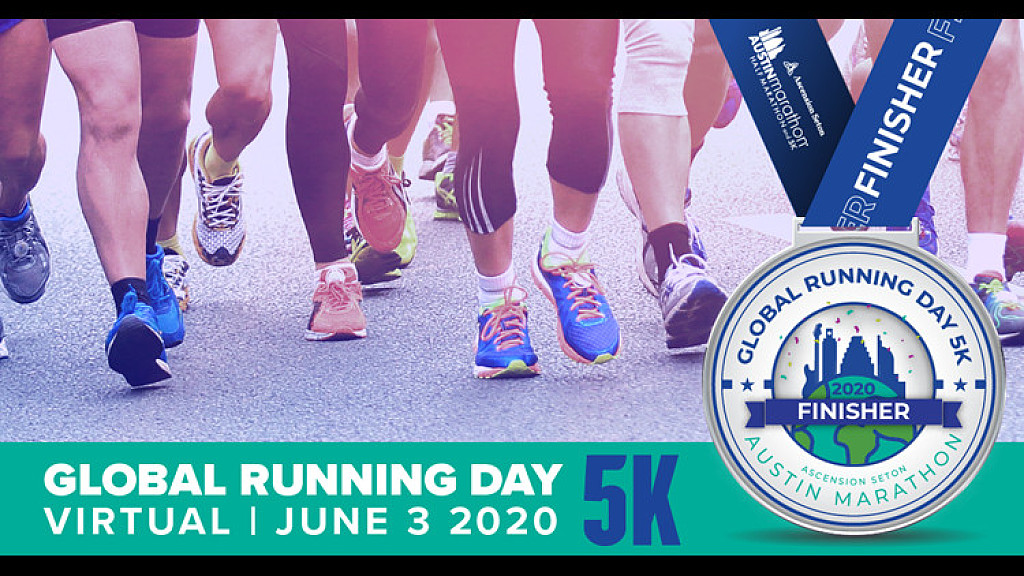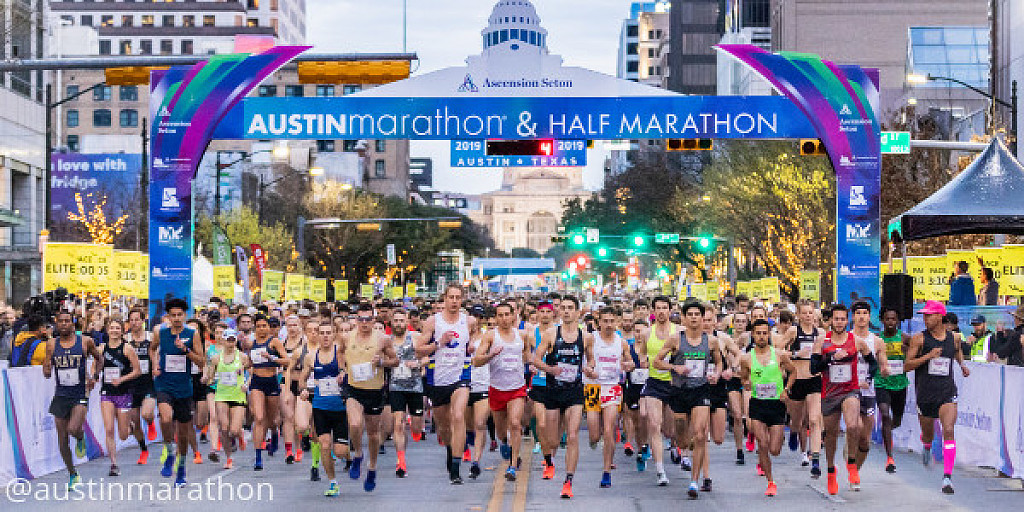Running News Daily
Running News Daily is edited by Bob Anderson. Send your news items to bob@mybestruns.com Advertising opportunities available. Train the Kenyan Way at KATA Kenya and Portugal owned and operated by Bob Anderson. Be sure to catch our movie A Long Run the movie KATA Running Camps and KATA Potato Farms - 31 now open in Kenya! https://kata.ke/
Index to Daily Posts · Sign Up For Updates · Run The World Feed
Articles tagged #Under Armour
Today's Running News
Rwandan Star Salome Nyirarukundo Set for TCS Toronto Waterfront Marathon
Salome Nyirarukundo has left a remarkable mark on the Canadian road racing scene since arriving from Rwanda seven years ago, most recently winning the 2025 Under Armour Toronto 10K. Now, the Ottawa-based runner is preparing for her next big challenge—the TCS Toronto Waterfront Marathon on October 19.
This will be her first marathon in six years. She last raced the distance at the 2019 Ottawa Marathon, finishing 4th in 2:30:44. Before that, she won the 2018 Montreal Marathon in an impressive 2:28:05.
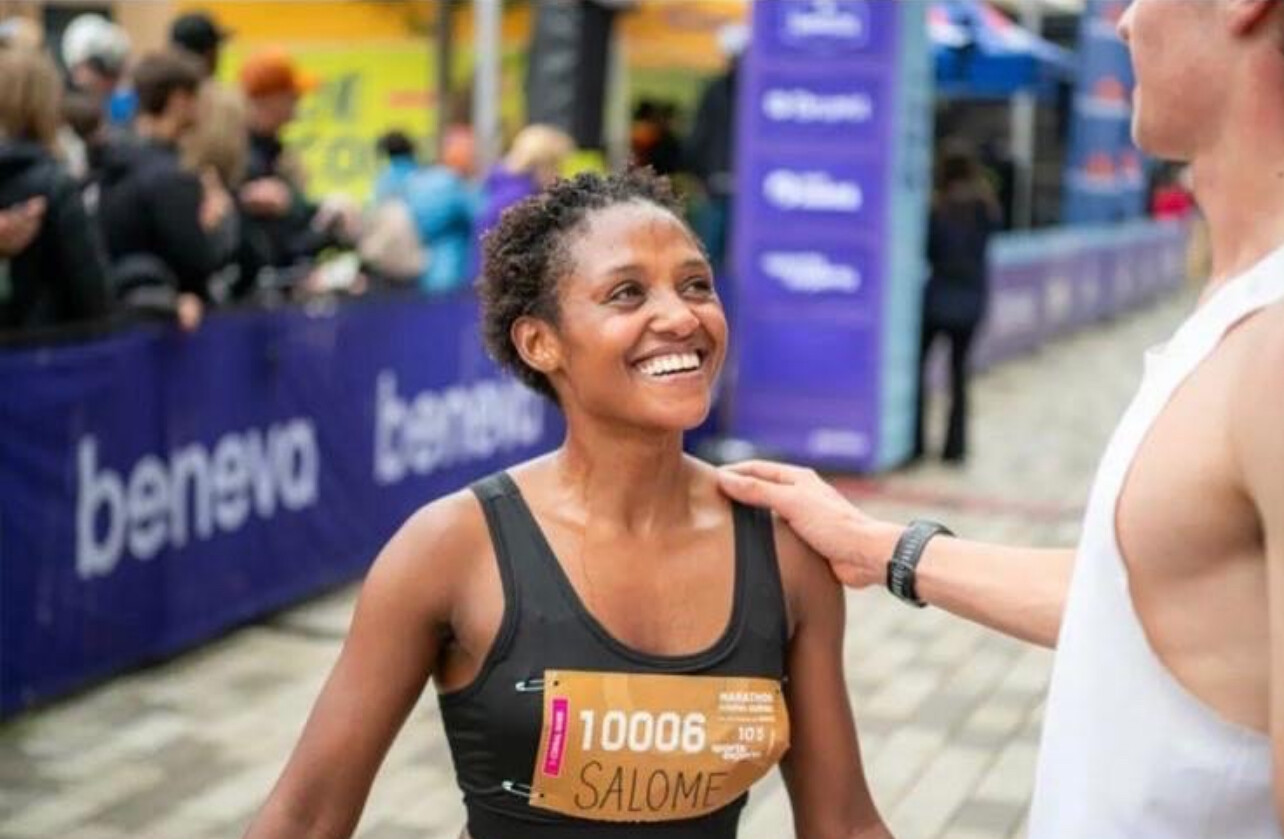
“It’s been three or four years that I have been hoping to do the Toronto Waterfront Marathon,” Nyirarukundo says. “It is a big race, but the timing was difficult before. I was injured and couldn’t participate. This year is the right moment for me to see what I can do. I always feel excited coming to Toronto because I have a good connection with the fans. I’ve run the Toronto 10K three times, and I think that experience will help me in the marathon.”
Her familiarity with the course could indeed be an advantage. The Toronto 10K shares much of its route with the marathon, running along the shores of Lake Ontario. Along with her 2025 victory, Nyirarukundo placed 2nd in both the 2023 and 2024 editions of the event.
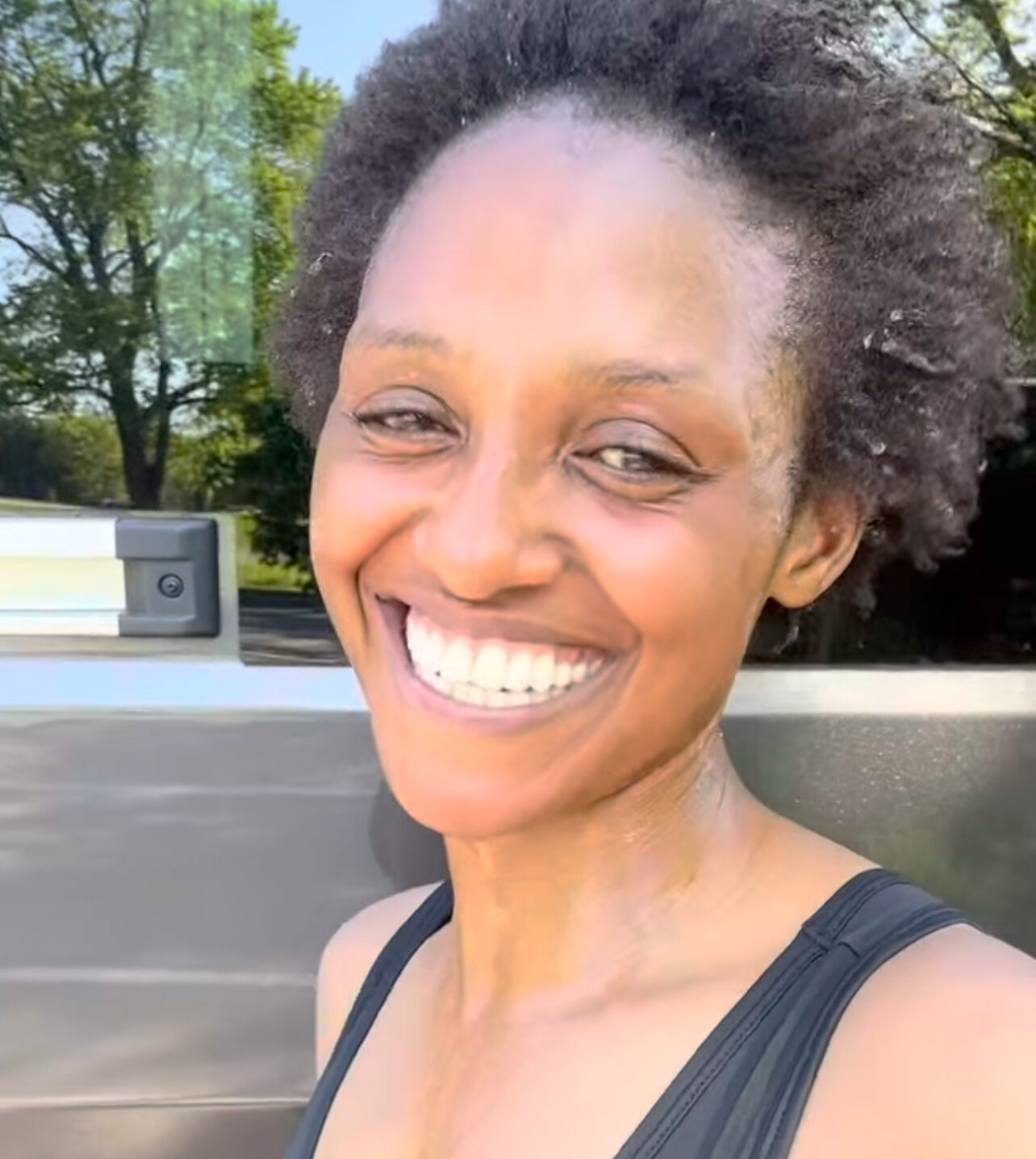
Still just 27, she has already achieved a distinguished international career. She represented Rwanda in the 10,000m at the 2016 Olympic Games and still holds her nation’s records in the 5,000m (15:34.91), 10,000m (31:45.82), and half marathon (1:08:48)—the latter faster than the Canadian national record.
Her talent was recognized early. As a teenager in Kigali, she was signed by Global Sports Communications and trained in Kaptagat, Kenya, alongside Eliud Kipchoge. She recalls him as quiet, humble, and willing to share everyday chores in camp despite his superstar status.
Since moving to Canada, Nyirarukundo has balanced training with working as a personal care worker in two Ottawa hospitals. While grateful for the employment, she admits it’s challenging to combine shift work with high-level training.
“Unfortunately, I am not in the same situation as before,” she explains. “When I ran 1:08:48 for the half marathon, I was training full-time morning and evening. Now I am doing two jobs and then training. It’s not easy, but I have confidence in myself. I believe I can still get back to that level.”
Despite her demanding schedule, she remains competitive. She placed 4th at the 2025 Canadian 10K Championships, finishing ahead of former national record holder Lanni Marchant. Seeing Canadian stars like Natasha Wodak and Malindi Elmore succeed well into their 40s has fueled her determination
“Natasha really inspired me,” Nyirarukundo says. “Last year she was number one in Canada, and I thought about quitting. But then I saw her and Rachel Hannah—very strong athletes—and I thought, ‘If they can do it, I can too.’”
Her friendship with Hannah has been another boost. The two have raced side by side in Toronto for years, and recently they trained together for a 38km long run in Plantagenet, Ontario.
Even with early-morning runs before 6:00 a.m. hospital shifts, Nyirarukundo pushes through, motivated by responsibility for her younger siblings back in Rwanda’s Rutsiro district. “I am mother and father for them,” she says. “Without them, I could not do what I am doing now.”
Balancing family obligations and training hasn’t been easy, but her passion for running remains intact. As she looks toward her Toronto Waterfront Marathon debut, Nyirarukundo has set a clear goal: to run under 2:30.
And she still makes time for life beyond running. “I don’t know how to swim, but I love outdoor camping,” she laughs. “I never did this in Rwanda. This year I’m going to Prince Edward Island for one week of camping at the end of August.”
Nyirarukundo dreams of one day representing Canada. With her mix of talent, resilience, and determination, the TCS Toronto Waterfront Marathon could mark a new beginning for this remarkable athlete.
by Paul Gains
Login to leave a comment
Ottawa Runners Victorious at the 2025 Under Armour Toronto 10K
It was a case of “third time’s a charm” for Rwanda’s Salome Nyirarukundo, as the 27-year-old claimed the women’s crown at the 2025 Under Armour Toronto 10K.
Her winning time of 34:05 bettered her performances from the past two years, when she finished second on both occasions. Given the record 8,500 runners faced a stiff headwind along the shores of Lake Ontario, her result was all the more impressive.
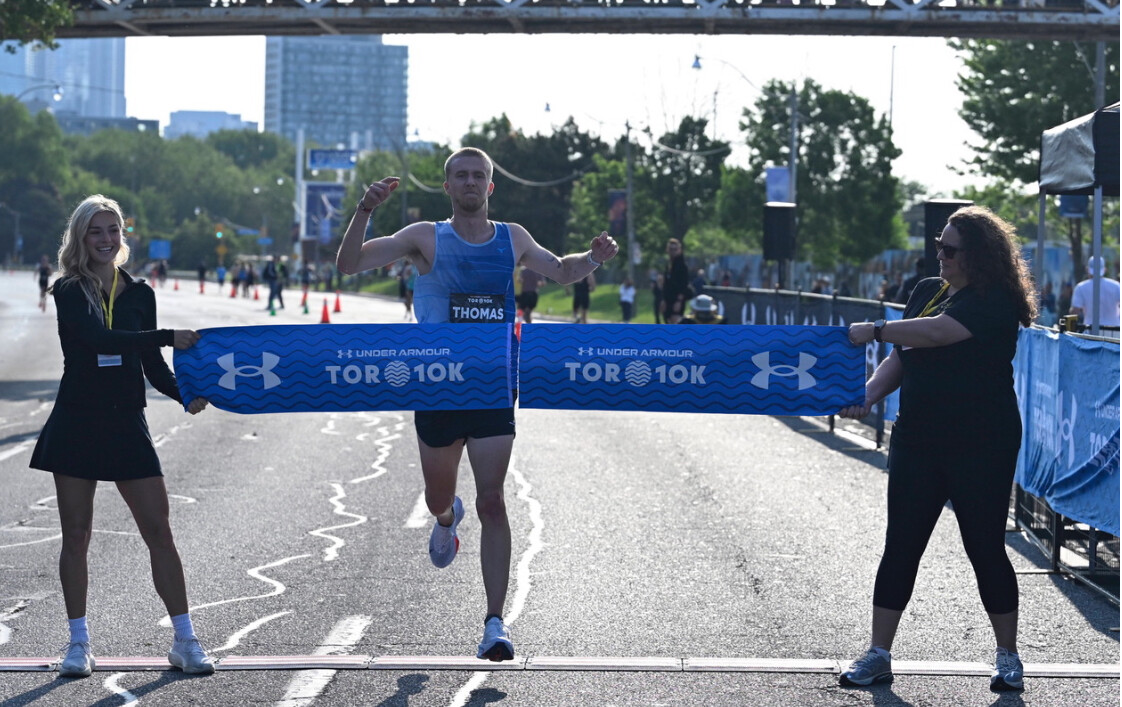
Nyirarukundo, who has lived in Ottawa for the past five years, didn’t have an easy time. Rachel Hannah, the 2015 Pan Am Games marathon bronze medalist, tried to close the gap over the final two kilometers but settled for second in 34:17. Fellow Ottawa runner Teagan Robertson finished third in 34:52.
A two-time Olympian for Rwanda (2016 Olympics, 2018 Commonwealth Games), Nyirarukundo still holds the national records in the 5,000m and 10,000m for her native country.
“I feel so amazing. I’m very emotional because I’ve come here three times and finished second twice,” Nyirarukundo said with a broad smile. “After 3K, I started pushing because I know Rachel is very strong. I was really worried I made a bad decision, but I caught up to a couple of guys and used them to stay ahead.”
At 38, Hannah remains a formidable competitor. After finishing 11th at the Houston Marathon in January and 29th at the Boston Marathon, she placed fifth at the Canadian 10K Championships in Ottawa. She admits the shorter distances keep things exciting.
“She wasn’t far ahead,” Hannah said. “It helps to have someone to chase. This was my best run here. I’ve been third a couple of times. It was windy, but I live by Lake Huron—I’m used to wind,” she laughed.
The men’s race also went Ottawa’s way as Thomas Nobbs, 25, coached by Brant Stachel, surged over the final kilometer to hold off Lee Wesselius, winning in 29:35.
Nobbs, who recently ran 28:58 at the Canadian 10K Championships (6th place), had hoped to improve on that time but adapted to race-day challenges.
“My coach said not to lead, but there I was,” Nobbs said, laughing. “I had a terrible sleep and ripped my shoelaces just before the start. But I know I’m fit, and even on a bad day I can come through.”
Originally from Vancouver, Nobbs ran two years at the University of Washington before finishing his degree at UBC. He now trains mostly solo under Stachel’s guidance.
Much of the race was shared up front with Wesselius, 31, a full-time large animal veterinarian, who finished just five seconds back.
“It was a good step forward from Ottawa,” Wesselius said. “I tried to make a move into the wind and opened a bit of a gap. But Thomas responded well and made his move at the turnaround.”
Alex Cyr of Toronto rounded out the podium in 29:45, earning respect from Nobbs for his season-long progression.
“Alex is strong in the lead. He’s probably made the biggest leap out of all of us this year,” Nobbs added.
Both Nobbs and Nyirarukundo were quick to thank Canada Running Series for organizing the event and inviting them to compete against some of the country’s best.
by Paul Gains
Login to leave a comment
Rwandan Leads Competitive Field at 2025 Under ArmourToronto 10K
Salome Nyirarukundo returns to the Under Armour Toronto 10Kon Saturday, June 14th in search of the victory that has eluded her the past two years.
The Rwandan finished second in both the 2024 and 2023 editions of this Canada Running Series race and would like nothing more than to reach the top step on the podium this time.
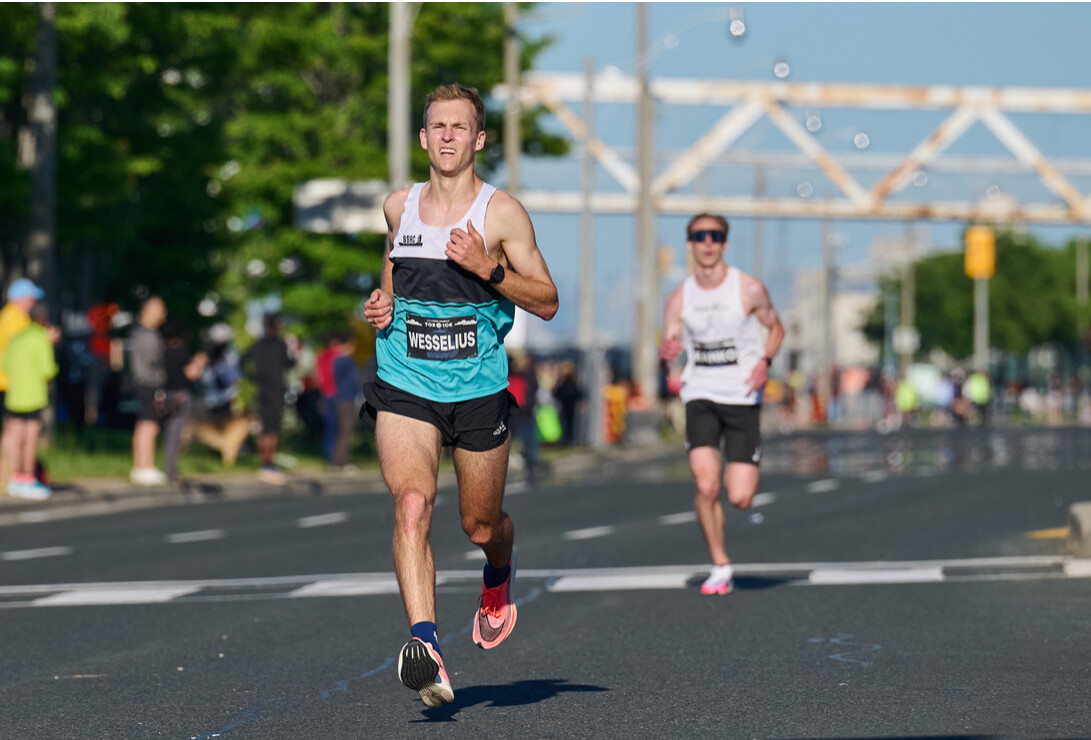
“Absolutely, you know, I am a very competitive woman I am always trying to improve myself racing better and better,” says the 27-year-old Ottawa resident. “I am sure that this year I am going to have a good race. I believe in myself and I can compete and win the race. Who knows? Everybody has a chance.”
Nyirarukundo trains with the Ottawa Lions Track and Field Club under coach Ray Elrick while holding down two jobs at local hospitals.
“I am employed in long term care as a personal support worker,” she explains. “I work at the hospital, I have actually two jobs. I am not in the shape I used to be but I am getting there.”
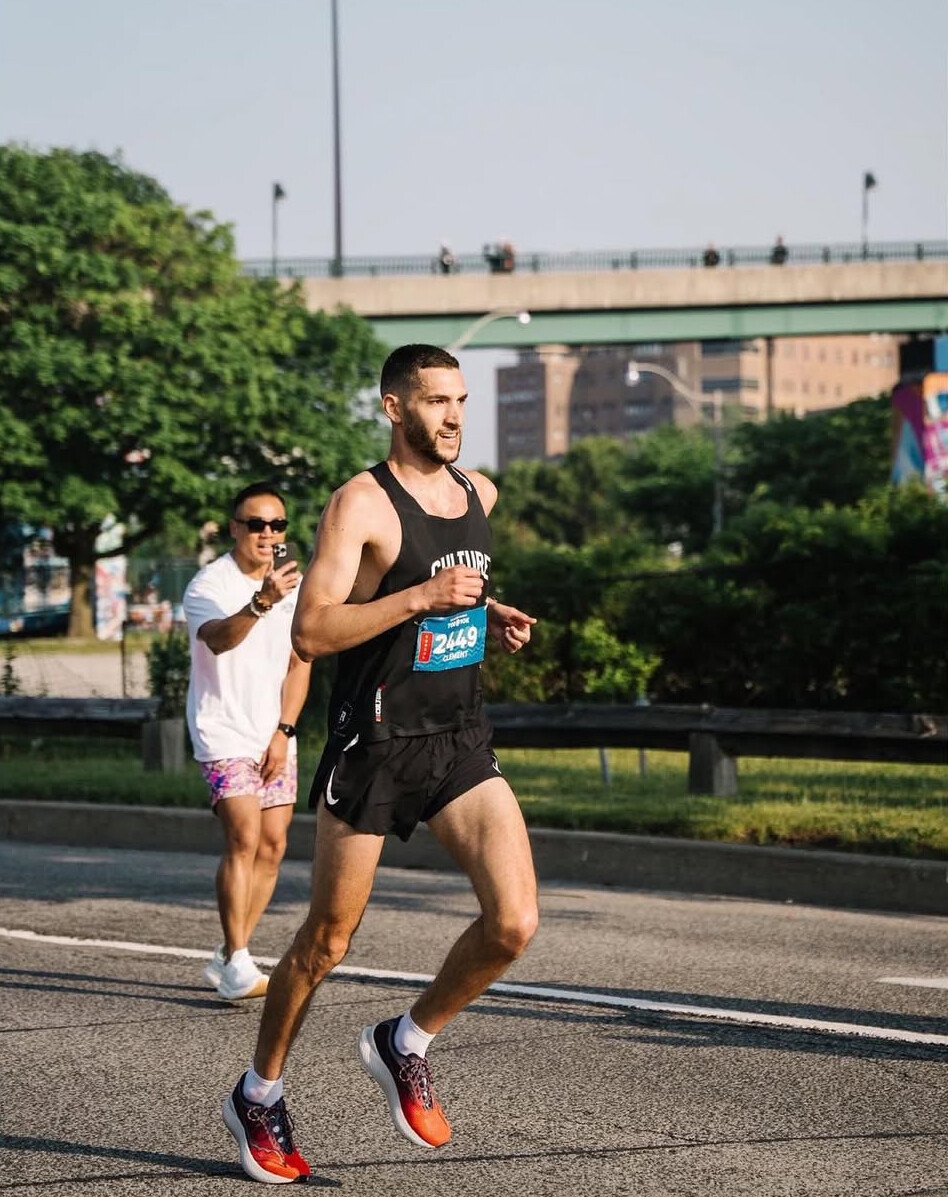
Earning a living has led her to employ tremendous time management skills and she fits in training around her work schedule. Clearly she is a special athlete with tremendous potential as she demonstrated as an 18-year-old when she set a Rwandan national 10,000m record of 31:45.82 and represented her country at the 2016 Rio Olympics. Two years later she made her way to Canada where she is now a ‘permanent resident’. One day she hopes to become a Canadian citizen.
“There was more opportunity here in Canada for people who want to make a new life,” she says of her decision to leave her home and family. “My biggest dream was having the chance to one day represent Canada whether it’s at the world championships or the Olympics. That is my biggest dream. Maybe my dream will come to true. Who knows.”
Among those she will face in Toronto are 2015 Pan Am Games marathon bronze medalist, Rachel Hannah who finished third here the past two years. The pair had another battle recently at the Canadian 10km championships in Ottawa with Nyirarukundo once again getting the better of her rival finishing 4th while the 38-year-old Hannah came home 6th.
Kylie Raftis, a graduate of Boston College, will also be a contender. The Toronto native was the top Canadian finisher at this year’s Boston Marathon finishing in 2:34:41 and in another coincidence, just one second ahead of Hannah.
The men’s race also promises to be a highly competitive affair with Lee Wesselius, the third-place finisher a year ago, returning.
The 31-year-old from River Glade, New Brunswick has a personal best of 29:13 set on this course in 2021 while finishing 7th in the Canadian 10k Championships. He also ran the 2024 TCS Toronto Waterfront Marathon - which includes the 10k course - when he improved his personal best at that distance to 2:13:52. That resulted in 9th place.
“I am pretty familiar with the course and I guess I have raced on it enough to know what parts are easier,” he offers. “I have a good grasp of the course.
“I think I am in pretty similar shape to when I ran my personal best. In Ottawa I ran 13 or 14 seconds off my ‘PB’ but we went out close to ’29 flat’ pace. I think if the pace was a little more smooth it possibly would have been in the cards (in Ottawa) for a new personal best.”
Wesselius is working as a large animal veterinarian in Winchester, Ontario just south of Ottawa and says he’s learned to manage to pack in between 160 and 180 kilometres a week around his busy work schedule. Once a month he must work on-call on a weekend which can pose complications.
“I will stay close to the practice and kind of hope that I am not called out,” he says of his response to the potential conflicts between his two vocations.
Among the challengers Wesselius will face is Connor Black of the London Western Track Club. He was the 2022 Canadian Cross Country champion and has improved significantly since finishing one place behind Wesselius in the 2021 Canadian 10k Championships.
Then there’s Thomas Nobbs, who was second in a personal best (1:03:02) in the Project 13.1 Half Marathon in Congers, New York back in March. He then finished 7th in the Vancouver Sun Run 10k in 29:18 though that course has a slight decline in elevation rendering times unofficial.
Wesselius will be seeking a podium place and knows he has a chance at victory but he’s clinical in his assessment.
“I will have to see what the fields are like. You mentioned Connor Black is running I know he’s pretty fit,” Wesselius admits. “And Thomas Nobbs is also in pretty good shape. I do feel I am in better shape than I was the previous two times. It depends on how the race plays out.”
With a week remaining until the Under Armour Toronto 10K the race has over 8,000 entries. It’s not surprising. The race has attracted runners from nine Canadian provinces, two territories, thirteen US states and twenty-eight countries.
by Paul Gains
Login to leave a comment
Fast Finishes in Indy as Hacker and Andrews Claim 5K Crowns
On a crisp morning in downtown Indianapolis, the 2025 USATF 5 km Championships delivered thrilling finishes and fast times, with Olin Hacker and Josette Andrews emerging as national champions.
In the men’s race, Olin Hacker of HOKA Northern Arizona Elite made a decisive move in the final kilometer, pulling away from a tightly packed lead group. His surge proved untouchable, and he crossed the finish line in 13:31.93 to claim the national title. Casey Clinger of Brooks was just a stride behind in 13:33.04, with Hacker’s teammate Ahmed Muhumed rounding out the podium in 13:36.88—completing a trio of sub-13:40 finishers.
Men’s Top 10 Finishers
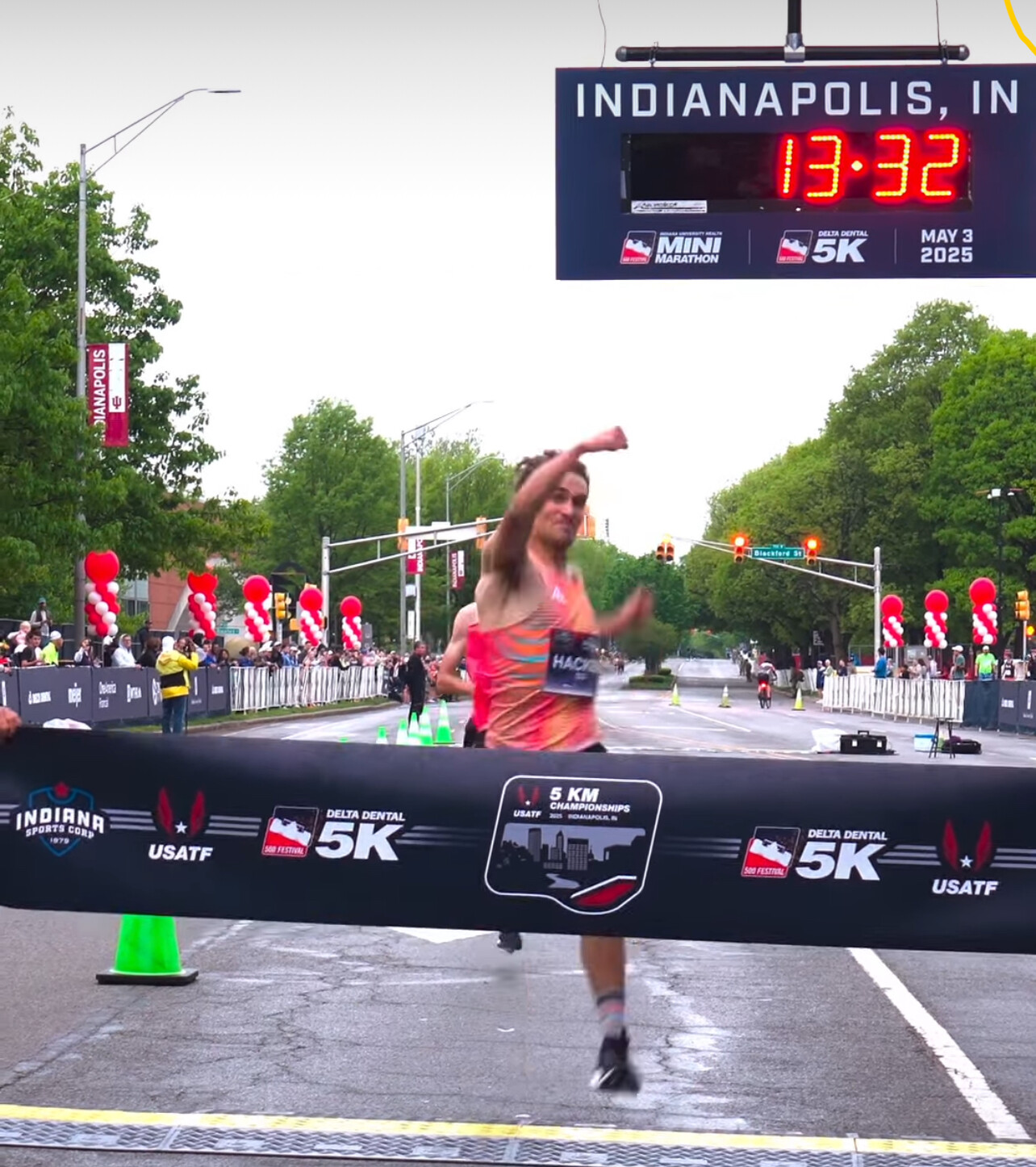
1. Olin Hacker (HOKA NAZ Elite) – 13:31.93
2. Casey Clinger (Brooks) – 13:33.04
3. Ahmed Muhumed (HOKA NAZ Elite) – 13:36.88
4. Morgan Beadlescomb (adidas) – 13:39.50
5. Graham Crawford (Reebok) – 13:42.10
6. Reed Fischer (Tinman Elite) – 13:44.75
7. Sam Chelanga (Nike) – 13:47.30
8. Ben Flanagan (On Running) – 13:49.60
9. Emmanuel Bor (U.S. Army) – 13:52.25
10. Eric Avila (HOKA) – 13:54.80
In the women’s race, Josette Andrews showed impressive strength and timing, kicking hard in the final stretch to take the win in 15:12.34. Emily Infeld of Nike followed closely in 15:14.50, and Karissa Schweizer of Bowerman Track Club secured third in 15:16.75, as the top trio pushed each other to the line.
Women’s Top 10 Finishers
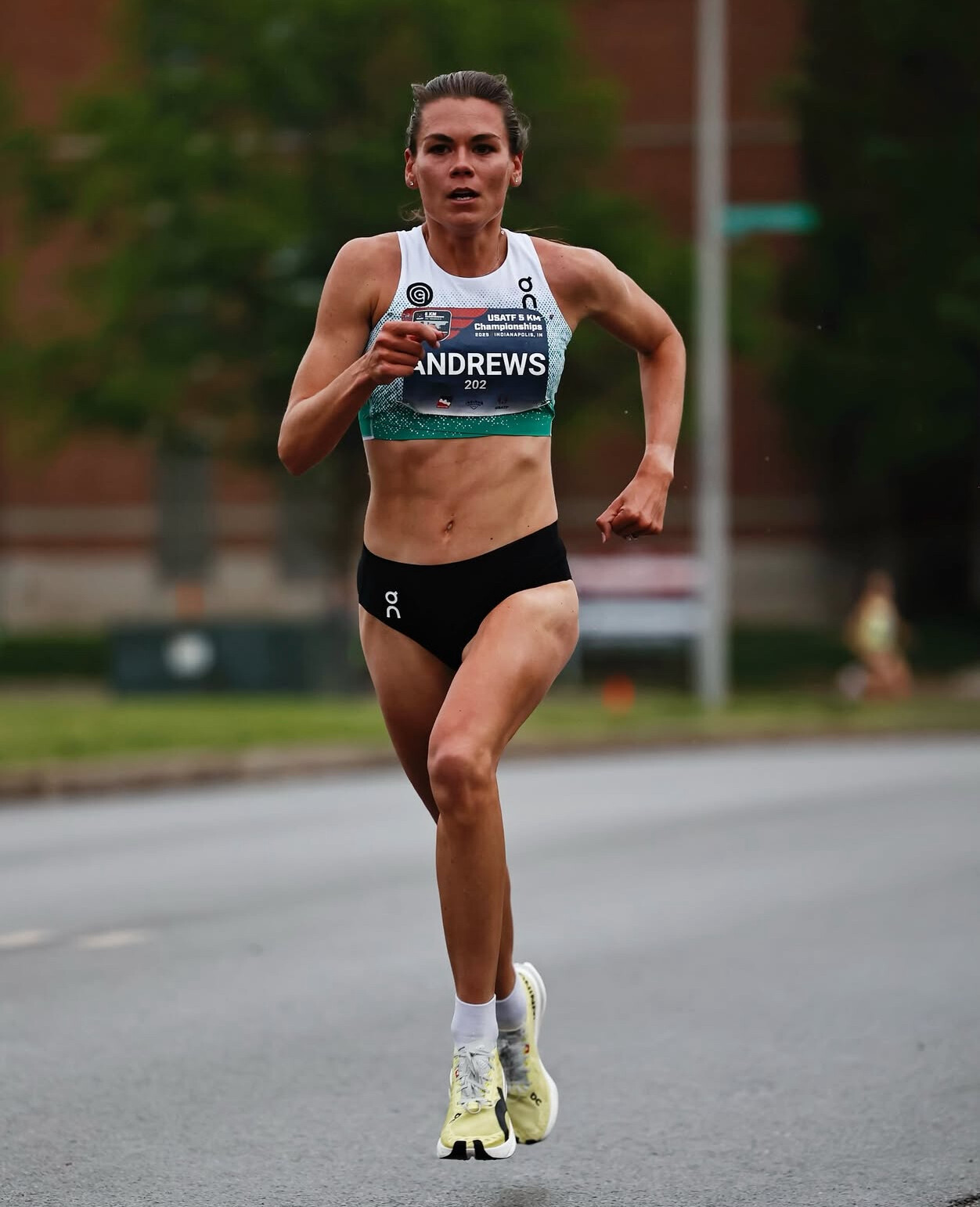
1. Josette Andrews – 15:12.34
2. Emily Infeld (Nike) – 15:14.50
3. Karissa Schweizer (Nike Bowerman TC) – 15:16.75
4. Elly Henes (adidas) – 15:19.20
5. Rachel Schneider (Under Armour) – 15:22.85
6. Abbey Cooper (New Balance) – 15:25.40
7. Molly Seidel (Saucony) – 15:28.95
8. Vanessa Fraser (Nike) – 15:31.50
9. Emily Lipari (adidas) – 15:34.05
10. Natosha Rogers (Hansons-Brooks) – 15:36.60
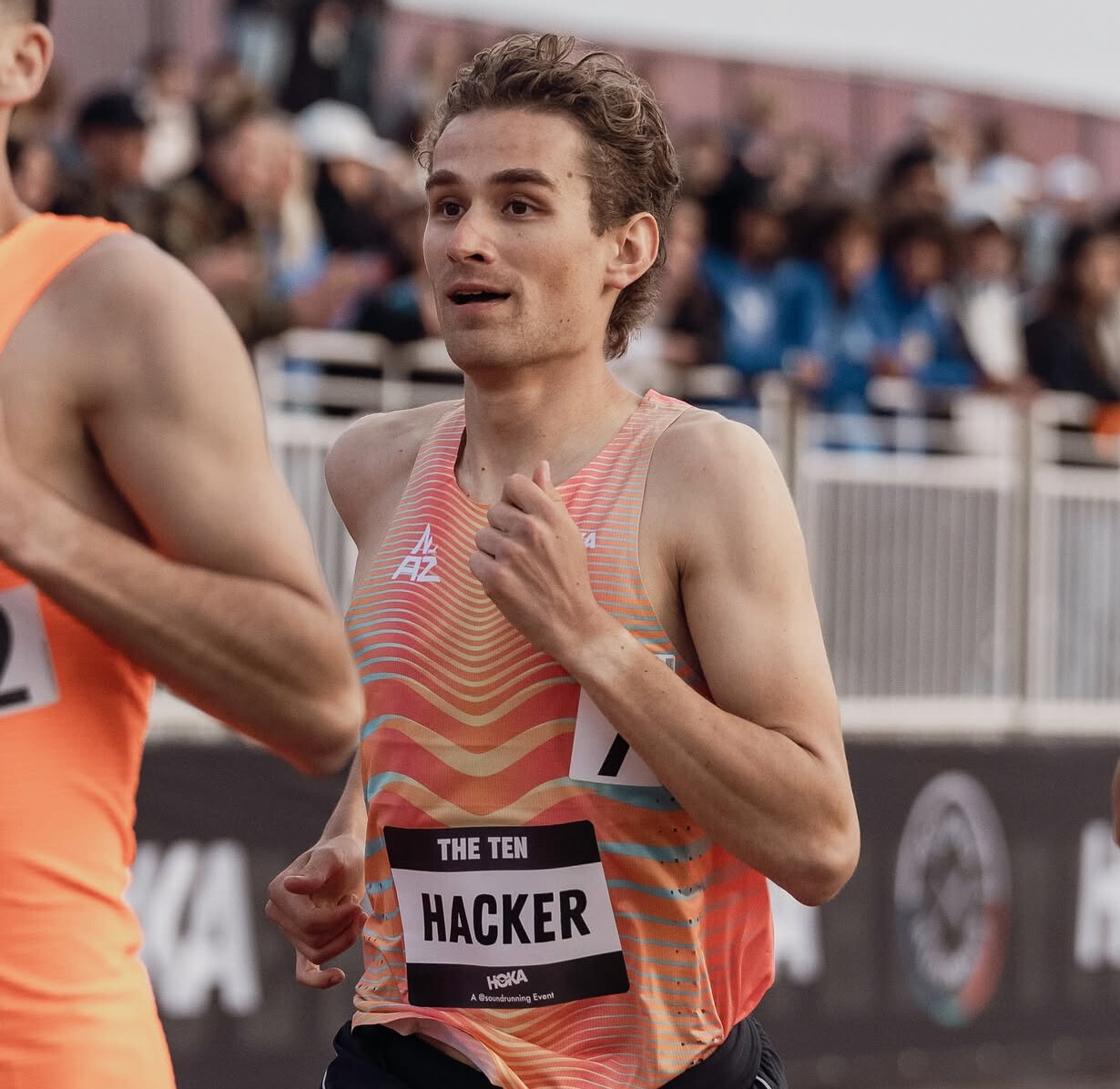
The performances in Indianapolis set the tone for what promises to be a fast and competitive summer racing season across the U.S. road circuit.
by Boris Baron
Login to leave a comment
OneAmerica 500 Festival Mini-Marathon
The mission of the 500 Festival is to produce life-enriching events and programs while celebrating the spirit and legacy of the Indianapolis 500 and fostering positive impact on the city of Indianapolis and state of Indiana. As an organization providing multiple events and programs, many of which are free to attend and impact over 500,000 people annually, our mission to...
more...Racing Super Shoes Will Be Lighter, More Responsive, and Likely Even Faster in 2025
New models from Adidas, Brooks, Hoka, On, Puma, and Saucony highlight a speedy new crop of racing and training super shoesEager to run a new personal best in the marathon in 2025? Or are you itching to crank out a quicker half marathon than you ran in 2024? Or maybe a fast effort in a trail race? The continued evolution of speedy shoe technology will be on your side. With new midsole foams and propulsion plate configurations, top-tier racing shoes will be lighter, more responsive, and presumably faster in 2025.
That goes for both road racing and trail racing super shoes that will be hitting running shops from late winter to early summer.Asics, New Balance, and Under Armour will have lighter and more energetic road racing shoes coming out by late spring, while Nike is expected to release its Ultrafly 2 trail racing super shoe in June. While those models are still under embargo, we’ve got the scoop on several race-day super shoes and high-performance training shoes unveiled at The Running Event trade show in November in the roundup below. We haven’t fully wear-tested these shoes yet, so it’s just a preview of what’s to come. When wear-testing is complete, we’ll produce both first-run reviews and in-depth multi-tester reviews with input from the Outside wear-test team and data from the Outside Gear Lab in Denver.2025 Road Racing Super Shoes
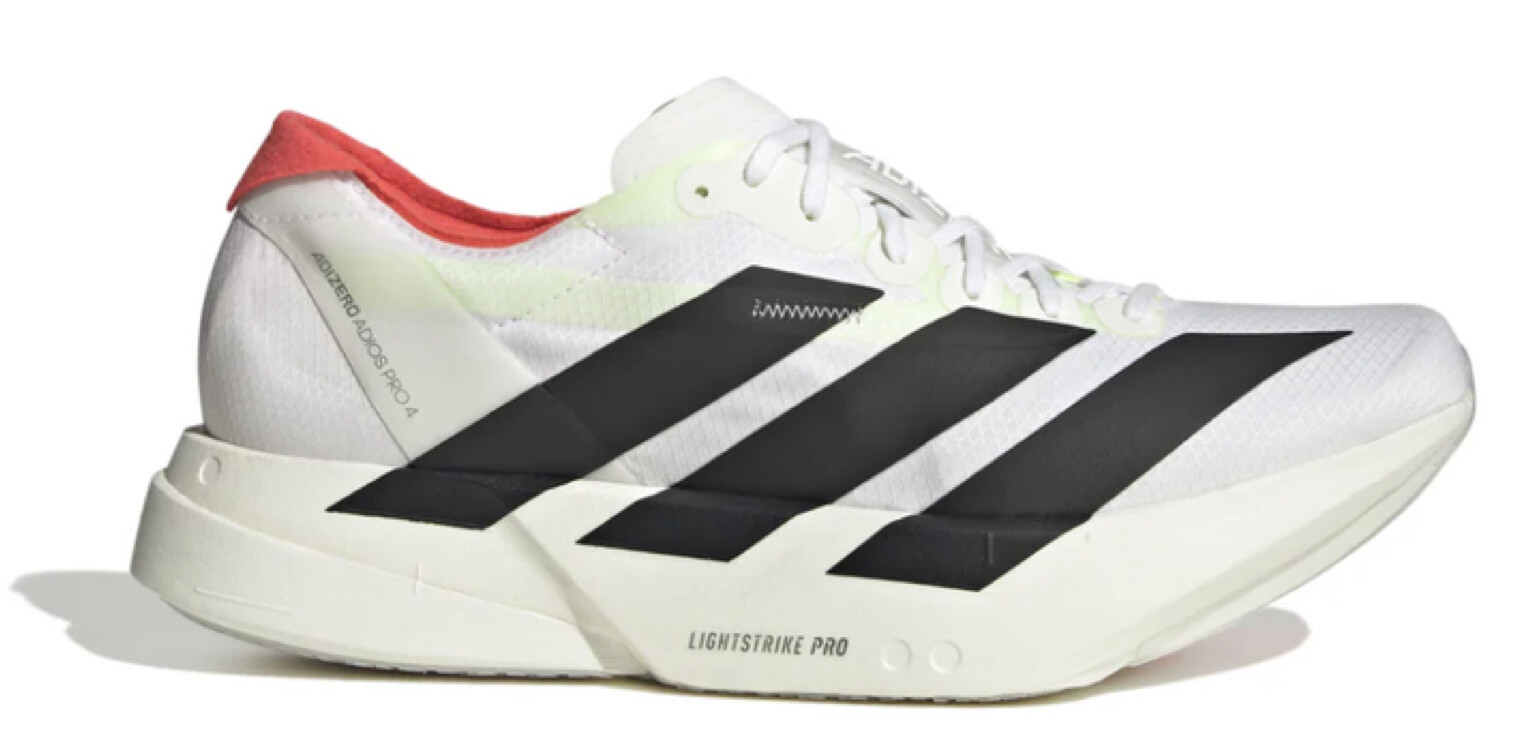
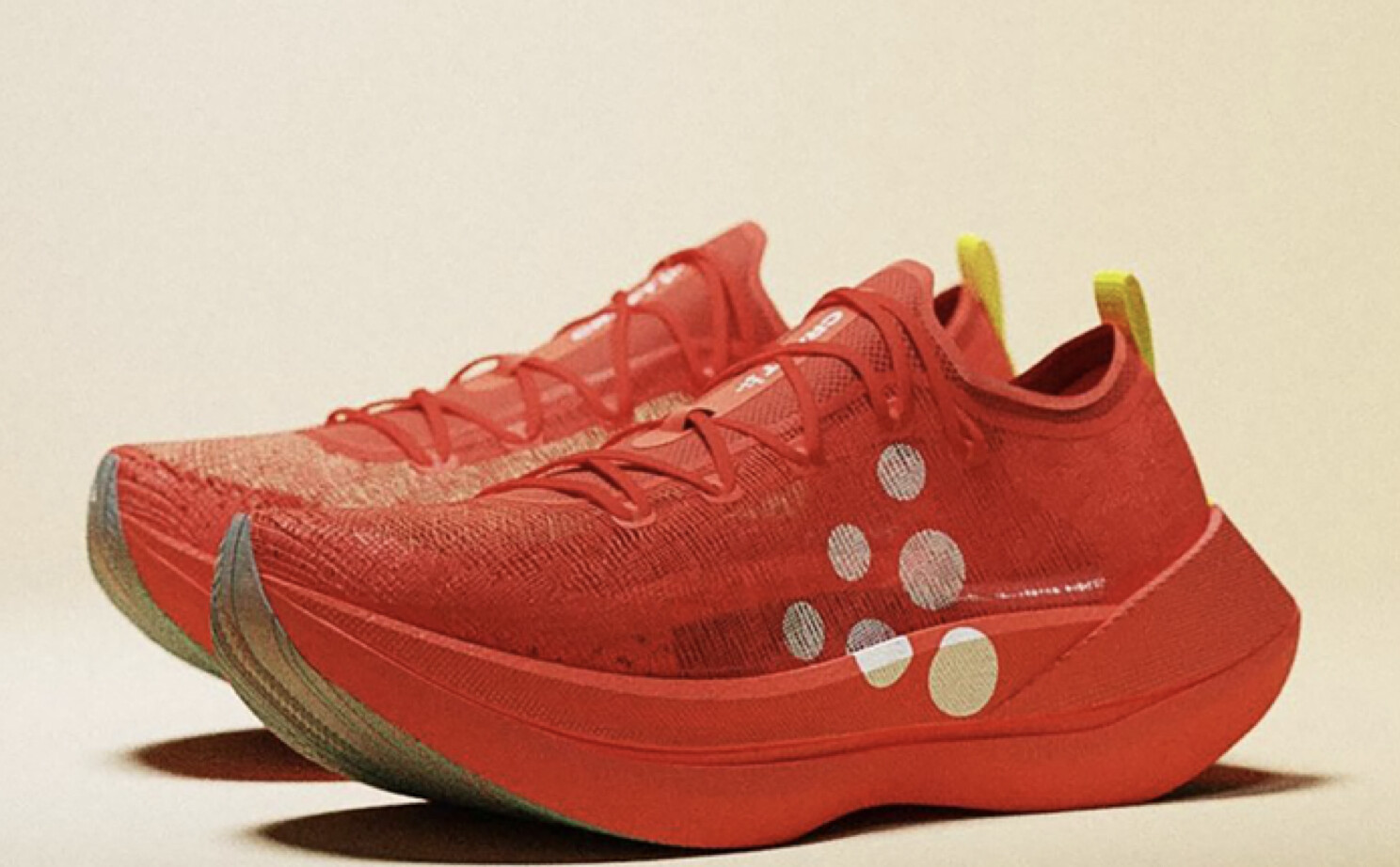
Adidas Adizero Adios Pro 4, $250
Approximate Weights: 6.0 oz. (women’s 8), 7.0 oz. (men’s 9)Heel-Toe Offsets: 6mm drop; 39mm (heel), 33mm (forefoot)Release Date: January
The Adizero Adios Pro 4 was released in limited numbers just before the Berlin Marathon in September, but it will hit stores in mass quantities worldwide in January. It’s been updated with a bouncier Lightstrike Pro midsole, a lighter, stronger stretch-mesh upper with internal locking bands, a new configuration of the Evo Pro EnergyRods, and an aggressive new geometry in which the forefoot rocker point is at 60 percent of the shoe’s length. Several Adidas pros raced in this shoe in the New York City Marathon, including women’s winner Sheila Chepkirui and men’s runner-up Evans Chebet.Brooks Hyperion Elite 4 PB, $250
Approximate Weights: 6.6 oz. (women’s 8), 8.6 oz. (men’s 9)Heel-Toe Offsets: 6.5mm drop; 38.5mm (heel), 32mm (forefoot)Release Date: February
Brooks has been working on enhancing its top-tier road racing shoes for several years. It released the Brooks Hyperion Elite 4 with its DNA Flash v2 midsole compound prior to the 2024 U.S. Olympic Trials Marathon last February, but early in 2025 it will release the Hyperion Elite 4 PB with the brand’s new DNA Gold supercritical midsole foam, a very light and responsive nitrogen-infused 100 percent Peba material, and a very light and airy knit-mesh upper.Brooks Hyperion Elite 5, $275
Approximate Weights: 5.8 oz. (women’s 8), 6.9 oz. (men’s 9)Heel-Toe Offsets: 8mm drop; 40mm (heel), 32mm (forefoot)Release Date: JulyBrooks had hoped to keep the Hyperion Elite 5 under wraps by showing it under embargo at The Running Event trade show, but someone leaked it so it decided to release the details and images of it. It has a DNA GOLD 100 percent PEBA foam midsole with a unique series of half-orb bubble configurations under the arch for optimal compression and decompression. It also has a very light and airy knit-mesh upper and minimal outsole rubber to keep it as light as possible.Craft Kype Pro, $300
Approximate Weights: 5.8 oz. (women’s 8), 6.9 oz. (men’s 9)Heel-Toe Offsets: 8mm drop; 40mm (heel), 32mm (forefoot)Release Date: March
Craft says the unique heel split design of its new Kype PRO racing shoe significantly reduces the contact surface area between the shoe and the ground, allowing for quicker toe-offs and a more efficient stride pattern. The skeleton-like carbon-fiber propulsion plate (developed in collaboration with Arris) embedded in the midsole of its Peba-based Xx midsole foam weighs less than half of an ounce and has a split heel design and enhanced stiffness The ultra-light AeroMesh knit upper is made from a durable mono yarn knit that offers support, pliability, and breathability, while the bottom of the shoe features a thin, lightweight rubber outsole was developed with Italian bicycle tire manufacturer Vittoria.Hoka Cielo X 1 2.0, $275
Approximate Weights: 7.0 oz. (women’s 8), 8.1 oz. (men’s 9)Heel-toe offset: 10mm; 48mm (heel), 41mm (forefoot)Expected launch: February
Login to leave a comment
Ontario runner signs pro contract with Under Armour
On Thursday, Rosseau, Ont., native Gracelyn Larkin announced her contract with Under Armour’s pro running club, Dark Sky Distance, which is based in Flagstaff, Ariz. The 5,000m Canadian outdoor champion from 2022 is a recent graduate of Northern Arizona University (NAU), and formerly competed for the University of New Mexico (UNM) from 2019-2023.
Already located in Flagstaff following her graduation, Larkin will continue training at altitude under coaches Shayla Houlihan and Stephen Haas. The Canadian will be among former UNM teammate and Olympian Weini Kelati and 2022 New York City Marathon champion Sharon Lokedi, who also represent Under Armour.
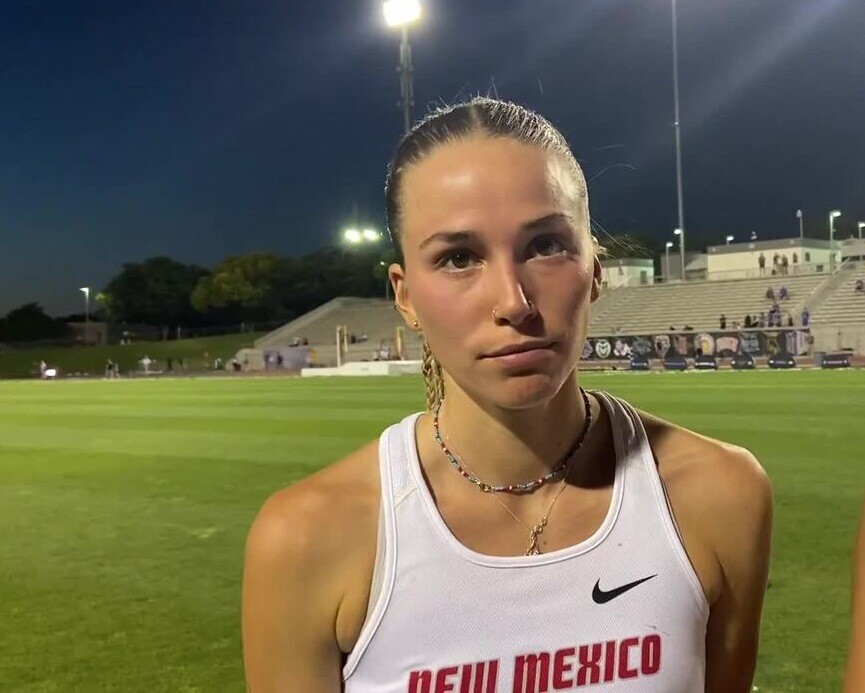
The 23-year-old boasts personal bests of 15:23.63 in the 5,000m and 32:32.61 in the 10,000m. A successful collegiate career saw Larkin earn All-American status seven times, before she went on to represent Canada in the 5,000m at the 2022 World Championships in Eugene, Ore.
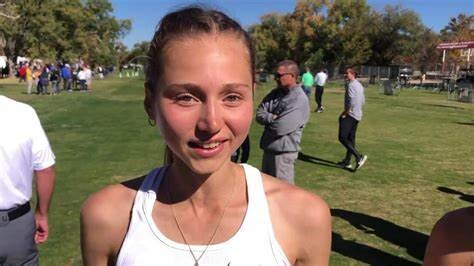
Over the summer, Larkin chased a spot on the Canadian Olympic team. At the Harry Jerome Classic 5,000m in Burnaby, B.C., in June, she clocked 15:25.83 to claim fifth place in a quick race; the time was just two seconds off her personal best. Later that month, Larkin competed at the Canadian Olympic Track and Field Trials in Montreal, placing fourth in the women’s 5,000m final with a time of 15:36.41. The UNM graduate was less than three seconds behind the winner, Gabriela Debues-Stafford. Despite strong efforts, Larkin fell short of qualifying for Paris 2024.
“I’m very grateful to be joining such an amazing group of hard-working individuals,” Larkin said in the announcement post on Instagram. “Working with Under Armour is an amazing opportunity and I can’t wait to represent them over the upcoming years. I look forward to learning from my teammates and coaches while I develop as a professional athlete!”
by Cameron Ormond
Login to leave a comment
2024 USATF 5K: Ahmed Muhumed And Annie Rodenfels Win
Annie Rodenfels went back-to-back while Ahmed Muhumed claimed his second US title of the year at the 2024 USATF 5K Road Championships on Saturday morning in Central Park. Rodenfels, who runs for the B.A.A. High Performance Team, broke away from Emily Venters and Emma Grace Hurley in the final mile to win in 15:20.
Muhumed, who won the US 8k road title in July and was the runner-up here last year, dropped the field with a hard move at 2 miles and held off a late charge from Sam Prakel to win in 13:38 to Prakel’s 13:39.
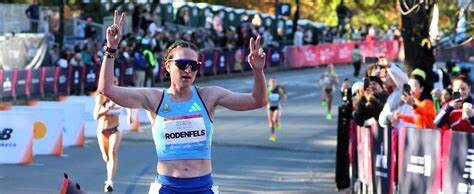
Top 10 results
Men
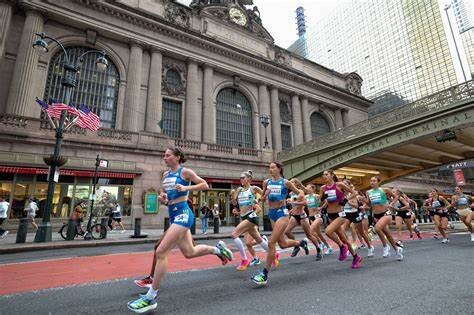
1. Ahmed Muhumed, HOKA NAZ Elite 13:38
2. Sam Prakel, adidas 13:39
3. Brian Barraza, Roots Running Project 13:42
4. Kirubel Erassa, unattached 13:44
5. Hillary Bor, HOKA One One 13:45
6. Anthony Rotich, US Army 13:48
7. Drew Bosley, unattached 13:49
8. Afewerki Zeru, McKirdy Trained 13:52
9. Abbabiya Simbassa, Under Armour 13:57
10. Morgan Beadlescomb, adidas 13:59
Women
1. Annie Rodenfels, B.A.A. 15:20
2. Emily Venters, Nike 15:25
3. Emma Grace Hurley, Asics 15:31
4. Bailey Hertenstein, Nike 15:32
5. Susanna Sullivan, Brooks 15:36
6. Abby Nichols, HOKA NAZ Elite 15:41
7. Paige Wood, HOKA NAZ Elite 15:41
8. Taylor Roe, Puma 15:43
9. Natosha Rogers, Puma 15:45
10. Molly Born, Puma 15:47
by Jonathan Gault
Login to leave a comment
Dash to the Finish Line
Be a part of the world-famous TCS New York City Marathon excitement, run through the streets of Manhattan, and finish at the famed Marathon finish line in Central Park—without running 26.2 miles! On TCS New York City Marathon Saturday, our NYRR Dash to the Finish Line 5K (3.1 miles) will take place for all runners who want to join in...
more...Natasha Wodak hoping to surprise herself at Toronto Waterfront Marathon
The TCS Toronto Waterfront Marathon (TWM) returns on Sunday, doubling as the Canadian Marathon Championships. For our Canadian elite athletes, Sunday’s race provides a chance to qualify for the marathon at the 2025 World Athletics Championships, to be held in Tokyo. Canadian record holder Natasha Wodak will toe the line in Toronto for the first time in 11 years, setting her sights on her first-ever Canadian marathon title.
Wodak made her marathon debut here in 2013. The 42-year-old from Vancouver has been on a golden streak this year, winning the Vancouver Half Marathon in June and Vancouver’s Eastside 10K in September. But earlier this year, she fell short of her goal to qualify for Canadian Olympic team after completing four marathon builds and taking three attempts at the race in the span of 18 months.
“The marathon is a beast”
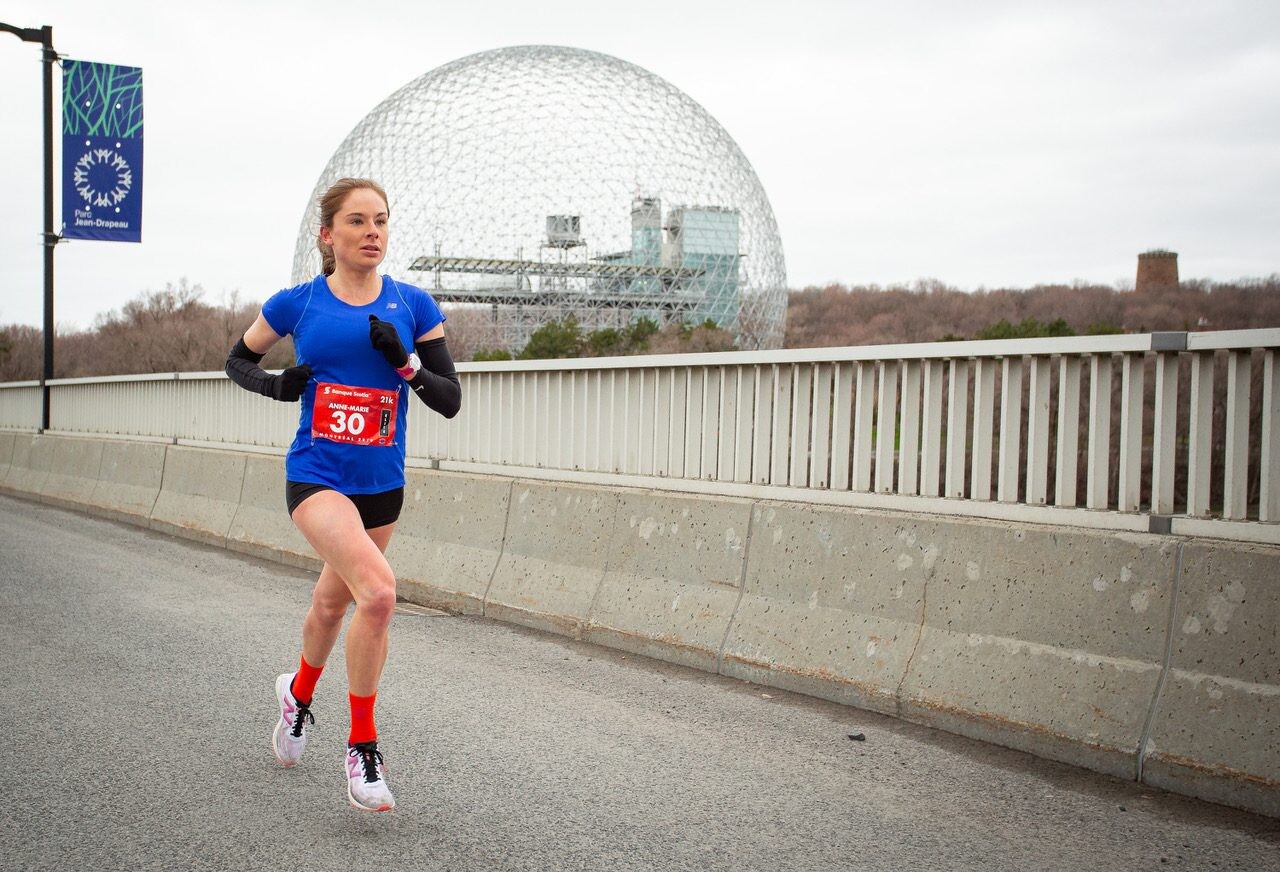
“Nothing is guaranteed,” Wodak says. “Never in a million years would I have thought that after running 2:23:00, I wouldn’t be able to come within four minutes of that, four different times in 18 months.” Wodak completed the 42.2K event at the 2023 Budapest World Championships, 2024 Houston and Hamburg marathon events, falling short of the Olympic standard each time, and had scratched from the 2023 London Marathon after coming down with a stomach bug. “The marathon is a beast; you’ve got to have the right day, the right fitness, the right weather–everything has to click on the right day.”
The two-time Olympian holds a personal best of 2:23:12, which has stood as the Canadian record since the 2022 Berlin Marathon. “The A goal is to win the Canadian marathon championships,” she says, hoping to add that title to her already impressive resume. “Everyone wants to be a national champion.”
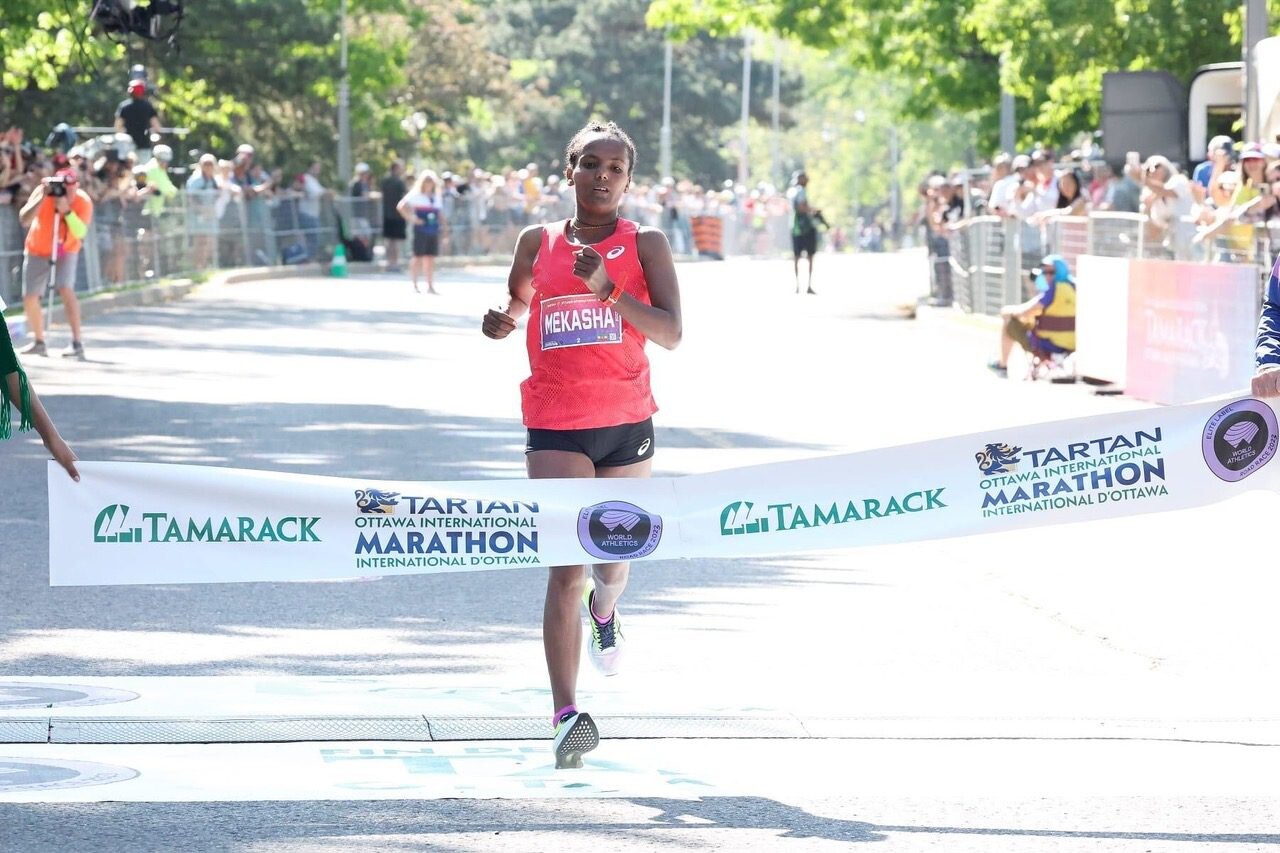
After steering away from her original plan to race at the Valencia Marathon, Wodak is taking a different approach at Toronto’s big-city race; she can finally enjoy racing in Canada in front of family and friends without the pressure of hitting the Olympic standard. She adds that the generous prize purse offered by TWM was an incentive. She revealed she plans on starting out conservatively, with the hope of having a fast second half. “I’ll go out at 2:25 to 2:26 pace, and hope to catch a few of the women who go out too hard,” she says. “It would be really nice to place in the top three. If all goes well, maybe I can surprise myself and others by having a really fast last 10K.”
After her attempts to qualify for Paris 2024, Wodak says she has learned not to take anything for granted. She says she began to jump into workouts with friends, running because she wanted to and doing what felt good. “I did enjoy the process over time, so I have no regrets,” she says. “It’s a privilege to do this.”
Erin Mawhinney to make marathon debut
Defending TWM half-marathon champion Erin Mawhinney will be doubling her usual distance to make her first-ever attempt at 42.2K. The 28-year-old, a two-time winner of the Under Armour Toronto 10K, has been slowly building up her mileage while training for the past three years with coach and two-time Olympian Reid Coolsaet; at the peak of her build, she reached 190 km in one week–quite a contrast to the maximum of 43 km she used to run weekly in university. The increase in mileage means increased time dedicated to training, adding to her already-busy schedule; the Hamilton native works full-time as a nurse, with the occasional night shift. “My apartment is a mess all the time, and I’m always out of groceries, since I’m eating more to support that mileage,” she says.
“You go in a little bit blind,” Mawhinney says. “You can sort of predict from the half-marathon what might happen, but it’s also a completely different event.” Her half-marathon best stands at 1:11:50, which she ran in March. “Somewhere in the low 2:30s would be a great day, but I’m mostly just excited to try out a marathon.”
Anne-Marie Comeau to seek redemption
Anne-Marie Comeau of Saint-Ferréol-les-Neiges, Que., is the reigning Canadian Marathon Championships silver medallist; the 2018 winter Olympian in cross-country skiing led for 42.1 kilometres of last year’s race before being passed by Quebec City’s Caroline Pomerleau, who nabbed the title. Comeau, who is 28, struggled over the last 10 km, and aims to pack her pockets with gels this year to avoid fading in the final stretch. “I had a rough year,” she says. “I’ve done a lot of marathon builds without actually racing.” Comeau was set to race the Houston Marathon and the Boston Marathon, but had to scratch from both, first due to Covid, and then to a shoulder dislocation while skiing.
Finally getting the chance to race, Comeau has set big foals for herself. “I want to get a personal best,” she says. “My marathon PB (2:34:51) is from last year on this course. I’m going to start a bit slower, at 2:31 to 2:32 pace, and see if I’m able to push harder toward the end.”
International field
Waganesh Mekasha of Ethiopia has her eyes set on the course record this year. The 32-year-old holds a personal best of 2:22:45 from the 2019 Dubai Marathon and took second in Toronto last fall, with a time of 2:23:12. “I enjoyed the race last year,” she says. “The course was great. The pacer dropped early and it affected us.” Her best time sits just off the course record of 2:22:16. The 2023 Ottawa Marathon champion feels as though she has prepared even better than last year. “If the pace goes out well and the weather is good, the course record is possible,” she says.
Ethiopia’s Roza Dereje comes into the race with the fastest personal best in the women’s field (2:18:30), and will also be fighting to take down the five-year-old course record. “I’m ready and prepared to challenge the course record,” she says. Dereje, 27, finished fourth in the marathon at the Tokyo Olympic Games, and became a mother in 2023. This is her first time visiting Canada.
For the first time in the race weekend’s history, the 5K race, traditionally held on the same day as the marathon and half-marathon, has been moved to Saturday; the race has already raised more than $3,000,000 for the TCS Charity Program.
How to watch
The 2024 TCS Toronto Waterfront Marathon and Canadian Marathon Championships can be streamed on Sunday, Oct. 20, on World Athletics Inside Track, CBC Sports, or the CBC Gem app. The TCS Toronto Waterfront Marathon is one of the first North American marathons to be featured on the WA Inside Track worldwide feed. This year, 30,000 participants from 70 countries will take part in Toronto’s race weekend (a record). All runners can be tracked using the official TCS Toronto Waterfront Marathon app, available for download on the App Store and Google Play.
by Cameron Ormond
Login to leave a comment
TCS Toronto Waterfront Marathon
The Scotiabank Toronto Waterfront Marathon, Half-Marathon & 5k Run / Walk is organized by Canada Running Series Inc., organizers of the Canada Running Series, "A selection of Canada's best runs!" Canada Running Series annually organizes eight events in Montreal, Toronto and Vancouver that vary in distance from the 5k to the marathon. The Scotiabank Toronto Waterfront Marathon and Half-Marathon are...
more...Toronto’s Andrew Alexander to Debut at TCS Toronto Waterfront Marathon
Organizers of the TCS Toronto Waterfront Marathon are once again excited about the upcoming marathon debut of a young Canadian runner.
The lure of winning a Canadian championship title - the national marathon championships being run concurrently with this World Athletics Elite Label race - has brought 25-year-old Andrew Alexander to the fight.
“I want to be the first Canadian to cross the line,” says the Toronto native. “I want to be at least one one-thousandth of a second ahead of the second Canadian. If the (fast) time comes with that I will be happy. But for the first marathon it’s just get this out and, if it goes well, focus on time chasing after that.”
Considering this graduate of Notre Dame University won the 2023 Canadian indoor 1,500m and 3,000m titles and then claimed the national 10,000m gold in May of this year, racing the marathon is one giant leap. Still, he has a lot of support for this challenge.
Coached by former Canadian 1,500m record holder, Dave Reid, and current Canadian 3,000m steeplechase record holder, Matt Hughes, that potential was clearly demonstrated when he won the 2023 TCS Toronto Waterfront Half Marathon in 62:44. He has also run 10,000m on the track in 28:17.24, not world class, but encouraging for a marathon runner.
“Since I started working with them they said they thought my event would be the marathon as much as it’s painful to hear that,” he recalls with a laugh. “I thought there was no better time than now. I had completed the Olympics trials (1,500m) last summer and didn’t really have the result I was looking for. I haven’t done a marathon so let’s give this a go!
“Toronto is as great a place as any other to start my marathon journey just because it’s home and I am familiar with it, and I have tons of people support. I am looking forward to it.”
With both Reid and Hughes often accompanying him on their bikes he has increased his training volume to around 160km a week. Whereas his longest run a year ago might be roughly 28 kilometres during this buildup for Toronto Waterfront he has added some Sunday runs of 40-43 kilometres.
“The big challenge has been getting used to the fluids and nutrition intake kind of taking it in right,” he reveals. “After the first few workouts while practicing nutrition I threw up immediately after.
“I remember thinking to myself ‘Oh my God what have I signed up for? ’Practicing that over the last few weeks I have honed in on that and it’s going well.”
At the beginning of 2024 Reid and Hughes helped arrange a six-week altitude training camp in Flagstaff, Arizona for their athlete - his first experience at high altitude. Alexander stayed with the Under Armour Dark Sky Group and called it a ‘gut punch’ as the acclimation took some time. Still, he believes it helped lay a base for the upcoming season.
Alexander attended Neil McNeil High School in Scarborough, Ontario - an institution where the late comedian John Candy also studied - and while running for the school he earned a place on Canada’s team for the 2017 World Cross Country Championships in Kampala, Uganda.
After he had won the Ontario High School championships (OFSAA) for Neil McNeil he accepted a scholarship to Notre Dame University. Five years with the ‘Fighting Irish’ led to him coming home with a Bachelor’s degree in neuroscience and a Master’s in Business Management. For the moment he is focusing on his running career and has temporarily delayed a career that would utilize his education. Working part time in a specialty running store together with an online apparel store provides income.
Turning his attention once again to the TCS Toronto Waterfront Marathon he eventually concedes having thought of a time goal for his debut - a couple of minutes on either side of 2 hours 10 minutes would be sufficient he says. But being a Canadian champion is the primary motivator.
“The national championship side of it definitely excites me,” he explains. “I have heard there is more depth on the Canadian side this year which I am super excited about. I just love the competition and competing against our Canadian guys.
by Paul Gains
Login to leave a comment
TCS Toronto Waterfront Marathon
The Scotiabank Toronto Waterfront Marathon, Half-Marathon & 5k Run / Walk is organized by Canada Running Series Inc., organizers of the Canada Running Series, "A selection of Canada's best runs!" Canada Running Series annually organizes eight events in Montreal, Toronto and Vancouver that vary in distance from the 5k to the marathon. The Scotiabank Toronto Waterfront Marathon and Half-Marathon are...
more...JP Flavin and Erin Mawhinney Victorious at 2024 Under Armour Toronto 10K
JP Flavin rang up Under Armour Toronto 10K organizers last week and asked if there was a place in the event for him. His eleventh-hour plea came just before the race limit of 7,500 was reached. Lucky for him.
The 25 year old New Jersey native showed his gratitude by front running his way to a victory in 29:20 and in the process pulling top Canadian Andrew Davies to a new personal best of 29:25. Third place overall went to Lee Wesselius in 29:49 and the third Canadian was Rob Kanko in 30 minutes flat.
“I am very thankful they let me in the race,” said Flavin, a member of the Brooks Hanson Project based in Rochester Hills, Michigan. “I did really well. I kept 4:40 miles throughout, which was my plan. It was fun.”
Midway through the race - the lead pack of seven runners reached 5K in 14:32 - he went to the front with the objective of breaking pre-race favorite Andrew Davies.
The Sarnia native has been training in Vancouver, where he is a law student at the University of British Columbia. Earlier this year, he ran a personal best 10,000m on the track (28:34.63) and also finished 2nd in the NAIA (collegiate) national championships in that event, which caught the attention of his peers.
“I knew if I stayed with Andrew to the last two kilometres, odds are he would outkick me,” Flavin added. “So a little before 5K, I started picking it up. I wanted to use that long hill [at the Canadian Legion] to come hard off it.”
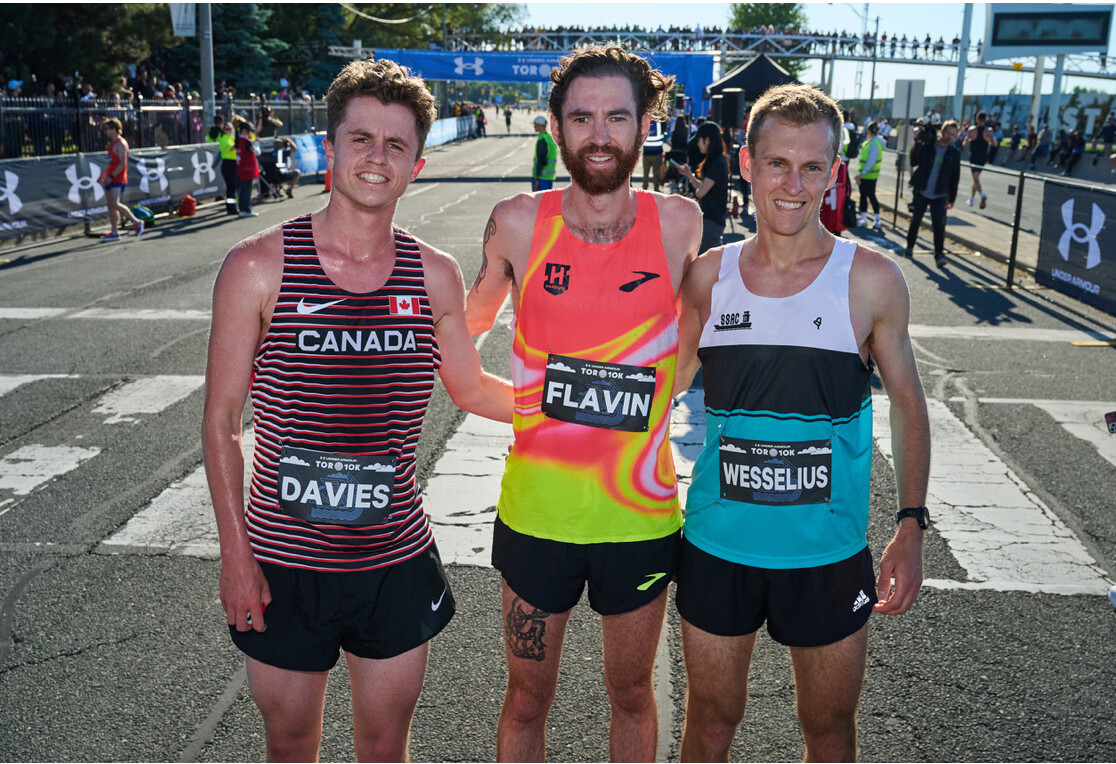
"When I made my move and started feeling bad at mile five, I could hear from the crowd; they were screaming his name a little bit. So I knew I had to pay attention, stay on it, and not let up too much. I was able to grind and finish off strong.”
Davies was satisfied with his personal best. When Flavin made his move, he made an effort to maintain contact but could never close the gap.
"I was trying to cover it as best I could without risking blowing up at the end,” he revealed. “I couldn’t quite cover it. I stayed pretty close. I couldn’t catch him over the last two kilometres. He held that gap the whole way.”
Despite his earlier 10,000m success in the spring, Davies admitted he has lately been focusing on the 5,000m, the event he will race at the Canadian Olympic trials June 26-30 in Montreal.
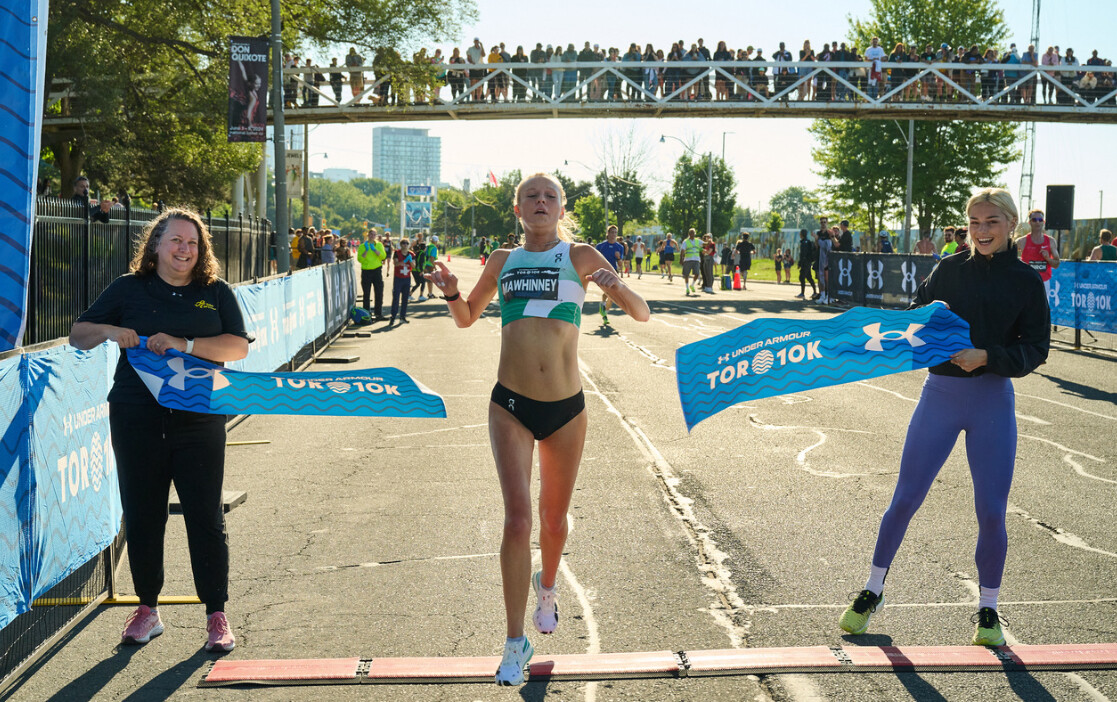
While the men’s race had its drama, the women’s race saw the same podium finishers as in 2023, although Erin Mawhinney’s title defence was emphatic. The 28-year-old Hamilton, Ontario, nursing consultant won by 25 seconds over Salome Nyirarukundo.
Mahwinney’s 33:40 time was a pleasant surprise after she learned earlier in the year she was iron deficient.
“This was the first race since February that I haven’t felt dizzy, so this is the first one in a while that has felt like that,” says Mawhinney, who was greeted at the finish by her coach, two time Canadian Olympic marathoner, Reid Coolsaet.
Respect for her competitors was evident in her further comments.
“At no point was I confident of winning,” she declared. “Salome is so talented, and I knew there was a good chance she would come flying by but someone yelled at me with a kilometre to go that I had a good gap.
To run in the 33s, especially today, it's hotter and windier than last year, to run the same time as last year off much less training is great.”
Mawhinney also credited Toronto running coach Paddy Birch for helping her through the windy stretches along Lake Shore Boulevard.
“I owe my life to Paddy Birch. He was sort of breaking some of the wind and pacing up to about 8K, so I didn’t have to think quite as hard about it,” she added. “He is much faster than me, but I think he was going for an easy run. He was (pacing me) on purpose when he was talking to me.”
Nyirarukundo, who competed for Rwanda at the 2016 Olympics, now lives in Ottawa. She complained about having an upset stomach last night and into the race morning.
“I was a little bit tired. This morning I had a problemwith stomach. Even now, I have it,” she said with a smile, “so I was struggling even to finish, but because I am a fighter, I just tried to finish. It was not bad.”
“I appreciate the organisers; they are very, very good to the elites. It is really good and I enjoy the people (on the course) who are cheering.”
Rachel Hannah, now recovered from her 3rd place finish in the Ottawa Marathon, was 3rd in today’s race. Her time of 34:10, almost a minute faster than her 2023 finish, pleased her.
Once again, the Under Armour Toronto 10K served as the Canadian Masters’ championships, with Toronto’s Allison Drynan crossing the line first in the 45-49 age bracket, recording a time of 38:46. She finished just 8 seconds ahead of Miriam Zittel (40-44).
In the men’s master’s race, Bryan Rusche earned top honours with his 33:37 performance, and Brian Byrne of London, Ontario, finished next in 33:51.
Race director Alan Brookes was delighted with the sold-out event and pointed out that runners from nine provinces, two territories (the Yukon and the Northwest Territories), eighteen American states, and twenty countries enjoyed the day.
by Paul Gains
Login to leave a comment
Under Armour Diversity Series: Toronto’s Karla Del Grande
For multiple world record holder Karla Del Grande, age is just a state of mind.
Under Armour has teamed up with Canadian Running to produce the Under Armour Diversity Series—an exclusive feature content series designed to highlight and promote individuals and organizations who have demonstrated a commitment to grow the sport of running, support those who are underrepresented and help others. The series features stories and podcasts highlighting these extraordinary Canadians who are making a difference in their communities and on the national running scene.
Karla Del Grande has a few big goals: First, she wants to set another world record, and take home another medal at World Masters Athletics Championships this year. She wants to support her track team at Variety Village in Toronto. And she really, really wants masters athletes to know that the track is open to everyone.
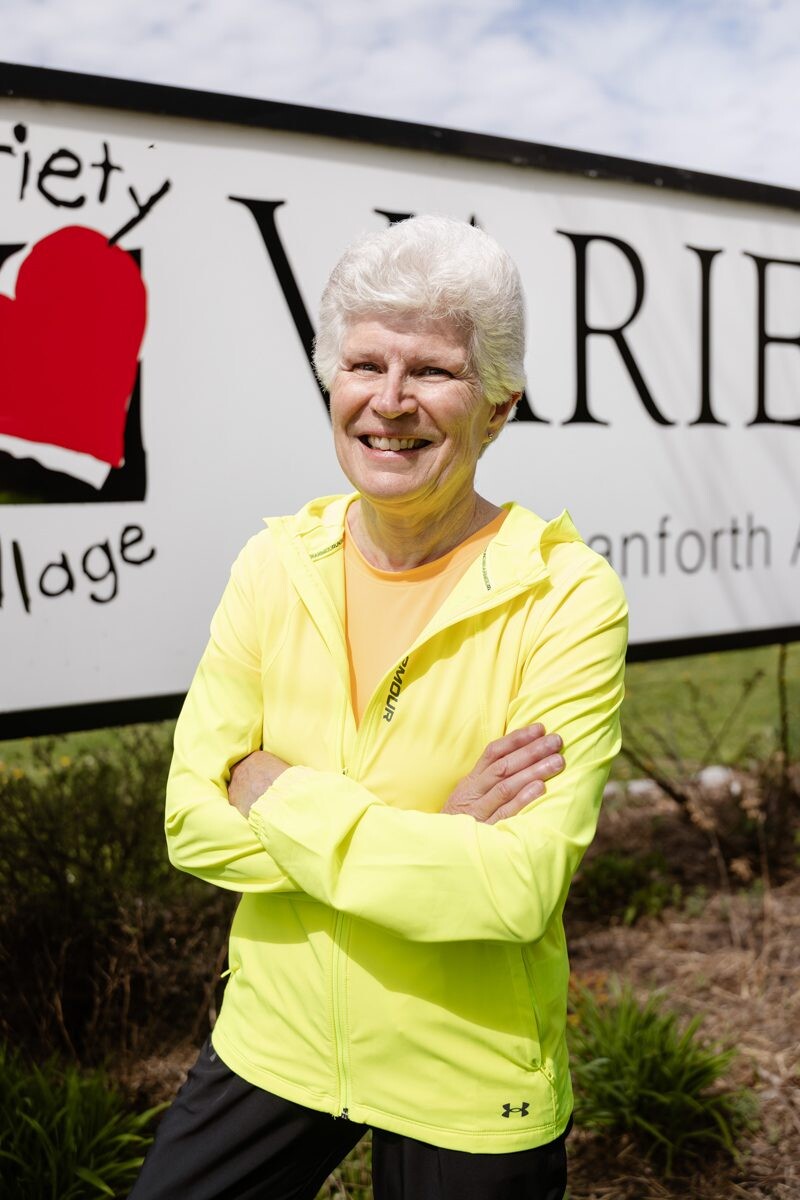
After all, she didn’t find her way there until she was nearly 50 years old. Now, at 71, she’s become a poster-woman of the sport in Canada, thanks to her indomitable record-setting, her sheer dedication to the sport and her love of bringing new people in.
We met up on a snowy day in March at Variety Village, where she trains and runs with the Variety Village Athletics Club. I arrived late, just in time to catch the last 15 minutes of her workout class. Rather than let me stand on the sidelines, she jogged over, grabbed me by the hand, and pulled me into the group class, where athletes of all ages, shapes, sizes and abilities started doing rubber band work with a partner.
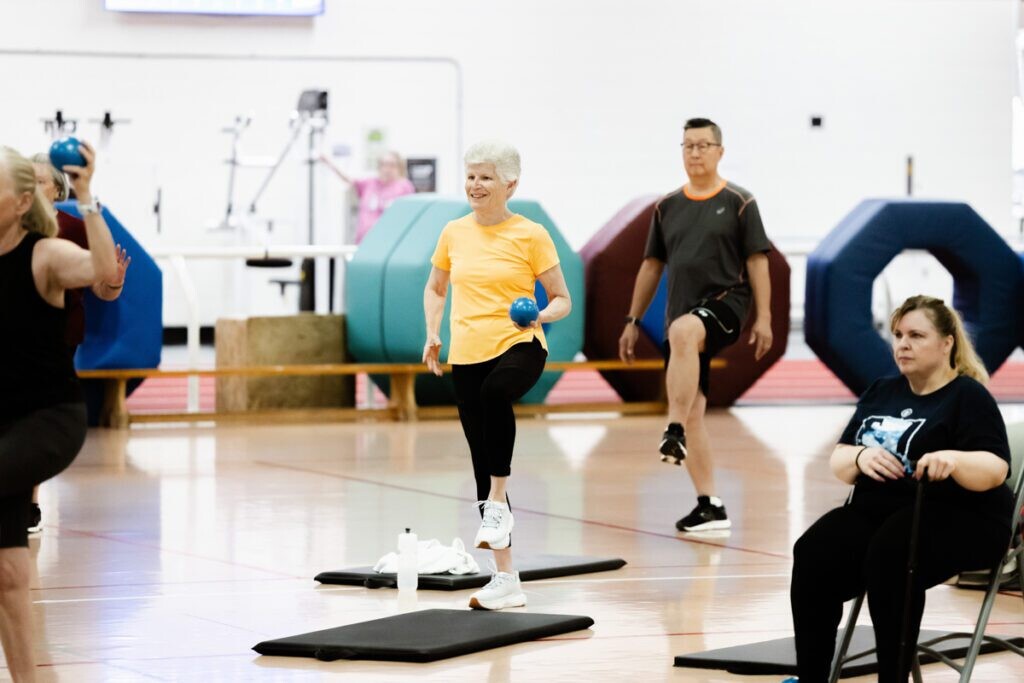
(“Everybody has the right to be part of a gym and have that social connection, no matter who you are, whether you’re a wheelchair user, or you have a mobility issue or anything else,” says Jill Ross Moreash, the class instructor, a former teacher and one of the fittest women I’ve ever seen, told me after class.)
Del Grande handed me a band after I shucked my winter coat and shoes. “You can be my partner,” she said. The workout was not easy.
This isn’t the first time Del Grande has helped bring someone into one of the workout classes. She recalls another snowy day, when she was heading into Variety Village for track practice, and she noticed an older woman standing next to her car, looking bereft. Del Grande started up a conversation, quickly learning the woman had recently been widowed and was hoping to find some conversation and community, but was overwhelmed about going into the gym. Del Grande shepherded her in, gave her a tour, helped her get signed up and brought her to class. She’s so well known as a woman who brings people into the community that she’s honoured on the wall at Variety Village.
That’s how she is on the track, as well: open and generous with her time (while still training to set world records, of course).
As a young girl, Del Grande was sporty, but she and her gym bestie (a race walker named Nicky Slovitt) both recall how, in gym class when they were in school, girls weren’t encouraged to run. That whole bit about our ovaries falling out if we sprinted or high jumped? Not a joke, if you were a gym teacher in the 60s, apparently. They believed it.
The track club at Variety Village isn’t just masters athletes; head coach Jamal Miller has created a vast community of runners ranging from pre-teens to the 70+ age group, with elite runners training alongside new track athletes. “We’re the best kept secret in Scarborough,” says assistant coach Katie Watkins. “We’re in a little bubble of what the world should be. Our track club is quite a diverse team. We cater to people of all abilities, from those living with disabilities to grassroots runners, starting off at age four, all the way up to world champions. The unique part about Jamal and how he trains is that if you’re interested, and you want to try it, he wants to work with you.”
Del Grande is at Variety Village early most days of the week. On Monday, she swims or aqua-jogs, then does weights. (“It’s a longevity thing,” she says. “You need to have balance between focusing on performance but also thinking toward longevity.”) Tuesday, she trains on the indoor track that runs around Variety VIllage’s main gym space. Wednesday is another weight session, this time in a class, and she runs again Thursday. Friday through Sunday depend on what her competition schedule looks like–when we met up on Wednesday, she was racing on Sunday, so the rest of the week was relatively easy, to prepare for that.
Del Grande found the track by accident–a work friend introduced her to running workouts on the track, and it grew from there. At the time, she did casual 5K and 10K runs and races, but she wouldn’t call herself a runner. Her friend brought her along to a track workout held by a local shop. “I really liked the short stuff,” she recalls. “We’d be doing track workouts and everybody else would be complaining that you had to go fast, and going around the track over and over was boring. But I loved it. And finally somebody said, ‘Well, why aren’t you racing it?'”
It was a lightbulb moment. “I thought adults just did road races,” she says. “It’s very hard to get out the information about the sprinting. But it exists–and there are adults doing high jump and shot put and all the other track and field sports, as well.”
She signed up, one thing led to another, and now, she’s one of the fastest female masters athletes in Canada.
“We always say that you’re never too old, you’re only too young to join Canadian Masters Athletics,” she laughs.
by Molly Hurford
Login to leave a comment
MAHWINNEY AND DAVIES LEAD ELITES AT UNDER ARMOUR TORONTO 10K
Erin Mawhinney will defend her Under Armour Toronto 10K title Saturday June 15th the next stop on the 2024 Canada Running Series.
A year ago, the Hamilton resident won the race, which traces Toronto’s scenic Lake Shore Boulevard, in a personal best of 33 minutes 34 seconds. The result was a pleasant surprise and confirmed her arrival as one of Canada’s elite road racers.
“I would like to take a stab at defending my title I know there are some fast girls running,” the 27 year old says before adding, ”Truthfully I have struggled with some low iron the past couple of weeks. But being able to defend the win would be great. Running close to 33 minutes flat would also be great at this time.
Despite the medical hiccup - which is now behind her - Mawhinney has followed coach Reid Coolsaet’s training program closely and has gradually increased her training volume. Indeed, she has had weeks where she has run as much as 160km while working full-time as a nursing consultant.
Mawhinney completed her Master of Nursing degree last year after spending six years nursing in the intensive care unit at Hamilton’s St Joseph’s Hospital. Combining long, demanding shifts with her training program was challenging but she credits Coolsaet, a two-time Canadian Olympian, with providing a flexible plan.
“I did straight night shifts and I found that sticking on straight nights was a little bit easier for running,” she remembers. “I found the flipping back and forth between days and night was sort of chaotic.
“I would let Reid know and he was great with being flexible. I worked a lot of overtime during Covid because we were overwhelmed in the ICU during that time. There would be some days where I was too tired to double. There were even times when I had to sleep at the hospital between shifts because there was a risk of exposure in my apartment building.”
In addition to winning the 2023 Under Armour Toronto 10KMawhinney captured first place in the 2023 TCS Toronto Waterfront Half Marathon last October (1:13:50). Now she and Coolsaet are targeting a possible marathon debut this coming fall.
“We are thinking TCS Toronto Waterfront in the fall will be my marathon debut so that is the main focus for the rest of the year,” she reveals.
Recently Mawhinney’s concerns for the homeless crisis in the Hamilton neighbourhood she has called home the past seven years resulted in her penning an essay on her observations. Her advocacy is paying off.
“A big win recently was having City Housing Hamilton approve a new public health nurse role I proposed to them,” she adds. “(It is) to help those in higher social-need subsidized housing keep their tenancy and avoid needing to use the emergency room.”
Among those lining up against her Saturday are 2015 Pan Am Games marathon bronze medalist, Rachel Hannah, who was 3rd in the 2024 Ottawa Marathon last month and, most significantly, was 3rd in the Under Armour Toronto 10K last year and last year’s runner-up, Salome Nyirarukundo the 26 year-old Rwandan who has made Ottawa her home.
The men’s field is led by Andrew Davies, a second-year law student at the University of British Columbia. Although his 10k best is 29:32 last month he ran a superb 10,000m on the track recording 28:34.63.
“If you get one of the really fast road courses I definitely feel you can be just as fast, maybe even faster, on the roads (than on the track) with the new shoes,” he declares.
The 23-year-old Davies claims, however, he will focus more on the competition than on recording a fast time.
“I am not really going to focus on the time too much,” Davies, who hails from Sarnia, Ontario, says. “I have been transitioning now to focus on the 5,000m leading to the track Nationals at the end of the month. I will focus on racing whoever else is (at the Toronto 10k). I am not going in with a time goal.
“My 5,000m PB (13:37.39) is three years old and I would like to lower that into the (low) 13:30’s and run Nationals and then in the fall I’d like to run as well as I can in the Canadian cross countrychampionships. I was 4th there this past year. If I could medal there that would be awesome."
The fastest performer in the men’s field is Lee Wesselius whose personal best 29:13 earned him 7th in the 2021 Canadian 10k Championships held on a slightly modified Toronto Waterfront course. Also racing is Rob Kanko who was 3rd in the 2023 Under Armour Toronto 10K in a personal best of 30:02.
The race will once again serve as the Canadian Masters 10k championships. Baghdad Rachem will defend the title he won a year ago on this same course. The Verdun, Quebec resident won that day in 32:05 beating 44-year-old Reid Coolsaet by 13 seconds.
Edmonton’s Jay Smith finished 3rd in 2023 in 39:23 and leads the female master’s division entries.
by Paul Gains
Login to leave a comment
Cooper Teare And Weini Kelati Win 2024 USATF Cross Country Titles
Weini Kelati and Cooper Teare earned convincing victories at the 2024 USATF Cross Country Championships, held on Saturday at Pole Green Park in Mechanicsville, Va. Running just six days after setting an American record in the half marathon in Houston, Kelati took off just after 4k and destroyed the field, running 32:58.6 for the 10k course to win by 37.3 seconds — the largest margin of victory since Aliphine Tuliamuk‘s 48.2 in 2017.
Teare took a different approach, staying patient as former University of Colorado runner turned Olympic triathlete Morgan Pearson pushed the pace during the second half of the race. Teare was the only one to go with Pearson’s move at 8k and made a strong move of his own at 9k that allowed him to cruise to victory in 29:06.5. 2020 champion Anthony Rotich of the US Army was 2nd in 29:11.6 as Pearson hung on for 4th. Teare’s training partner Cole Hocker was 12th in 29:52.3.
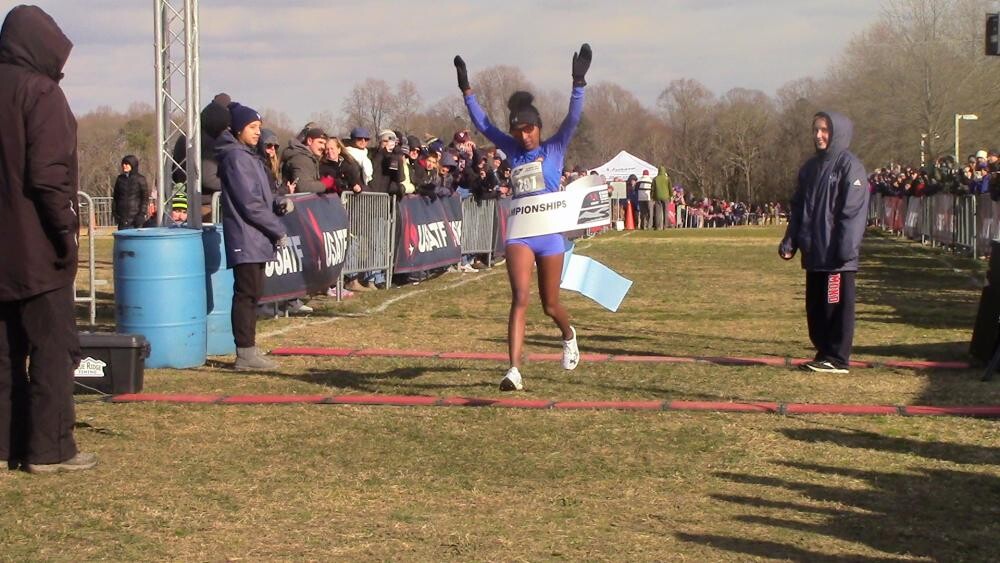
The top six finishers in each raced earned the right to represent Team USA at the World Cross Country Championships in Belgrade, Serbia, on March 30. Kelati’s coach/agent Stephen Haas told LetsRun last week that Kelati plans to run there while Teare’s agent Isaya Okwiya said Teare’s plans are still TBD.
High school junior Zariel Macchia of Shirley, N.Y., won the women’s U20 race in 20:31.0 for the 6k course; Macchia previously won the title as a freshman in 2022. Notre Dame freshman Kevin Sanchez won the men’s U20 title in 24:07.1 for the 8k course.

Cooper Teare shows his range with impressive victory
Teare was the 2021 NCAA 5,000m champion at the University of Oregon and has shown that his range extends both up and down the distance spectrum. Teare is the NCAA mile record holder at 3:50.39 and was the 2022 US champion at 1500 and now he is the US cross country champion. That sort of range has become increasingly common on the international level but in the US, it’s rare for a 1500 guy to run USA XC, let alone win it. Teare is the first man to win US titles at both 1500 meters and cross country since John Mason in 1968, and even that comes with a caveat as the US championships were separate from the Olympic Trials back then. Before Mason, the last guy to win both was Abel Kiviat (cross country in 1913, US mile title in 1914). You all remember him.
On the women’s side, Shelby Houlihan, since banned for a doping violation, won USA XC and the US 1500 title back in 2019.
Teare’s coach Ben Thomas told Carrie Tollefson, who was calling the race for USATF.TV, that the aim of this race was just to see where his fitness was at against a top field. Clearly, it’s very good. In his first race since leaving the Bowerman Track Club after the 2023 season, Teare, wearing a bright pink undershirt beneath his Nike singlet, ran with the lead pack until Morgan Pearson began to string things out just before entering the final 2k loop. As opposed to Pearson, who was giving it all he could to drop the field, Teare looked relaxed and in control, and at 9k he eased past Pearson into the lead before dropping the hammer to win comfortably. It was a smart run and an impressive display of fitness.
Teare may also have slayed some demons from his last cross country race in 2021, when he crawled across the finish line in the final meters. Now he’s gone from 247th at NCAA XC to a national champion.
Teare’s plans for the rest of the winter are up in the air. He will run in a stacked 2-mile at Millrose on February 11 against the likes of Grant Fisher and Josh Kerr before competing at USA Indoors a week later. World Indoors could be an option if he makes the team — as could World XC, if he wants it. No matter what he chooses, Saturday’s run was a great way for Teare to kick off the Olympic year.
Weini Kelati demolishes the competition
On paper, Kelati, who runs for Under Armour’s Dark Sky Distance team in Flagstaff, was the class of this field. The only question was whether she would be recovered from racing hard at last weekend’s Houston Half Marathon, where she set the American record of 66:25. The answer was a definitive “yes” as Kelati, after running with the leaders for the first 4k, dropped a 3:05 5th kilometer to break open the field. From there, her lead would only grow to the finish line as she won by a massive 37.3 seconds over runner-up Emma Hurley.
Kelati was not at her best heading into last year’s World XC in Australia as she had missed some time in the buildup due to injury. She still managed to finish a respectable 21st overall. Her aims will be much higher for this year’s edition in Belgrade.
Kelati also made some history with her win today. She’s the first woman to win Foot Locker, NCAA, and USA cross country titles.
by Jonathan Gault
Login to leave a comment
USATF Cross Country Championships
About USATF Based in Indianapolis, USA Track & Field (USATF) is the National Governing Body for track and field, long distance running, and race walking in the United States. USATF encompasses the world's oldest organized sports, the most-watched events of Olympic broadcasts, the number one high school and junior high school participatory sport, and more than 30 million adult runners...
more...Malindi Elmore to run Berlin Marathon
Malindi Elmore will toe the start line at this year’s Berlin Marathon–the same course where Natasha Wodak broke Elmore’s Canadian marathon record last year.
Elmore is among a blazingly fast women’s field the Berlin Marathon has confirmed for the Sept. 24 race. Other runners announced so far include Kenya’s Sheila Chepkirui (who finished fourth at this year’s London Marathon) and a strong Ethiopian contingent led by 2022 Berlin champion and course record holder Tigst Assefa, Tigist Abayechew and Workenesh Edesa.
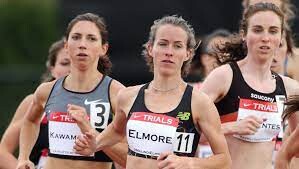
The famously flat and fast Berlin course could lay the groundwork for Elmore to reclaim the mantle as the fastest Canadian female marathoner. Her former Canadian marathon record of 2:24:50, which she set at the Houston Marathon in 2020, was bested by Wodak by more than 90 seconds in the German capital last September (2:23:12). Wodak, who is currently in Budapest for the World Athletics Championships, is not expected to compete in Berlin.
Elmore looks to be in a good position to reclaim the Canadian crown following a string of strong performances. The Kelowna, B.C., native took the women’s title in 2:25:14 at the Canadian Marathon Championship at the TCS Toronto Waterfront Marathon last October. In April, Elmore ran a massive PB at the Gifu Half Marathon in Japan, posting a final time of 1:10:11 and finishing fourth overall.
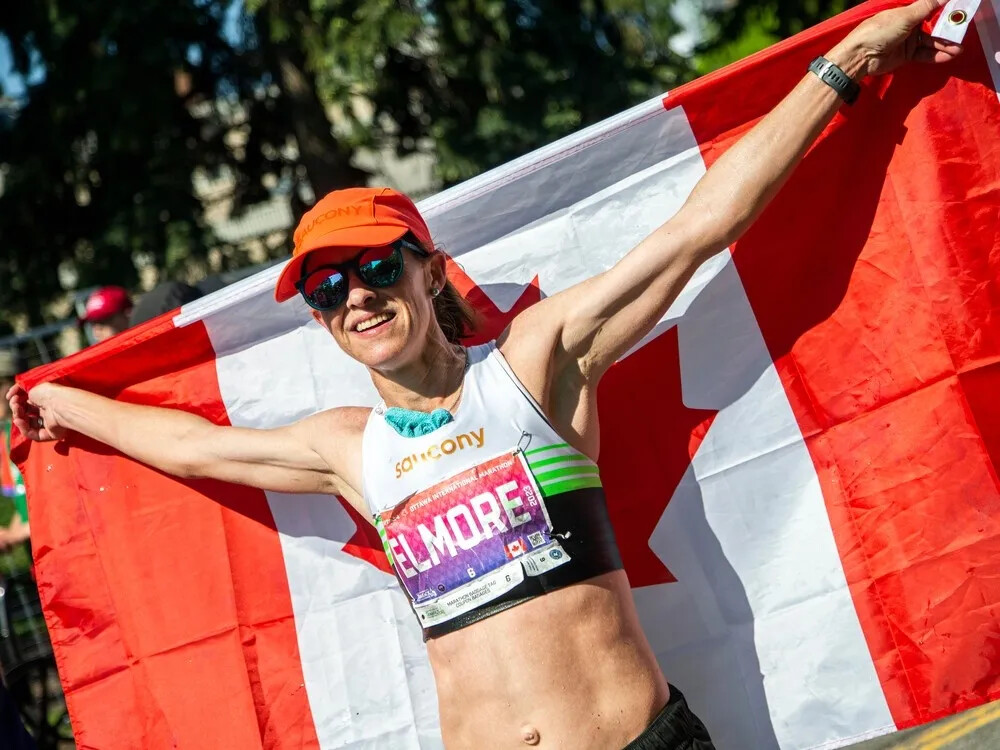
The following month, she threw down a gutsy performance at the 2023 Tartan Ottawa International Marathon. Going into the race with the goal of the 2024 Olympic standard of 2:26:50, she was on pace for 2:26 through 30K and sat in fourth position. As the temperature climbed to 24 C, she gave everything she had over the final 12 kilometres, moving up two spots to finish second to Ethiopia’s Waganesh Mekasha in 2:27:45.
Elmore has also been making bold statements at shorter distances. Last September she bested her own course record in the tenth Under Armour Eastside 10K in Vancouver, running a blistering 32:37.
by Running Magazine
Login to leave a comment
BMW Berlin Marathon
The story of the BERLIN-MARATHON is a story of the development of road running. When the first BERLIN-MARATHON was started on 13th October 1974 on a minor road next to the stadium of the organisers‘ club SC Charlottenburg Berlin 286 athletes had entered. The first winners were runners from Berlin: Günter Hallas (2:44:53), who still runs the BERLIN-MARATHON today, and...
more...Do Women Need Gender-Specific Running Shoes?
Hint: It’s not a yes or no answer—it’s about having options
I’ve been wearing running shoes for 30-plus years, and still, when I lace up a new pair that fits me just right, it makes me want to take them for a spin right then and there—but finding perfectly fitting running shoes can be a challenge, even for someone like me who has access to innumerable pairs as a running shoe reviewer.
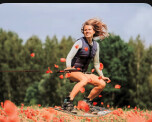
Because I test shoes, people always ask me, “What’s the best running shoe?” And while my male counterpart, Cory Smith, and I vet, test, and write up all the best shoes on the market each season for the Outside Gear Guides and other roundups throughout the year, I always respond with some version of: “There are a lot of great ones out there, but what’s most important is that those great shoes fit your specific feet.”
Much of the running experience depends on comfort, and so much about comfort depends on how well a running shoe fits the individual person’s foot. Yes, other factors differentiate running shoes from each other—midsole compounds, traction, upper materials, lacing systems—and all of them matter in creating a comfortable and effective ride for individual runners and their technique and preferences. But none of it matters if the shoe rubs, bites, or binds your feet uncomfortably. Fit should never be overlooked, and it is linked to the shape of your foot, which is tied to your gender.
So how big a role does gender play in finding your ideal running shoe? Most brands offer men’s and women’s sizes and colorways in each of their shoe models, with both size ranges based on the same last, or, the shape/mold around which the interior of the shoe is built. Some shoes come in men’s sizes only (usually shoes from smaller brands and “niche” models, like weatherized mountain running shoes). Women buy those shoes, but the fit isn’t always right. Many of them have a higher-cut heel cup than women’s models, which can put pressure on a woman’s Achilles. And most often, a men’s shoe fits wider than a women’s.
A handful of brands (Altra, Asics, Hoka, New Balance, Saucony) offer some of their shoe models in widths for both men and women, which offer a broader range of choices. But a select few brands (Altra, Adidas, Hoka, Under Armour) offer all or some of their models in truly gender-specific fits—shoes molded off of gender-specific feet to create gender-specific lasts. And a few brands have come to market with models meant just for women: Lululemon’s Blissfeel and Blissfeel Trail, Hilma’s road-to-trail shoe, UnderArmour’s Flow Synchronicity road shoe, and Puma’s Run XX Nitro road shoe are some examples.
Brian Beckstead, co-founder of shoe company Altra—a brand that’s offered men’s and women’s-specific fits in all of their models since the brand launched in 2011—explains how the differences between men’s and women’s-specific lasts are found around three main places in the foot. One: Women’s lasts are generally narrower in the heel than men’s or gender-neutral lasts, because women tend to have narrower heels. Two: Women’s lasts generally have more support around the midfoot, or arch, because ladies generally have higher arches than men. And three: Because men and women tend to have different “Q-angles”—the angle drawn between the hip, the patella, and the upper shin, which differs genetically for the purpose of child-bearing, according to the National Library of Medicine—most women’s lasts are built up slightly around the interior of the heel or calcaneus bone, with more room on the lateral side of that bone.
But gendered fits aren’t always black and white. “I know women who like to buy the men’s fit [of Altras] and I know men who like to buy the women’s shoes just because they have a really narrow heel,” says Beckstead. “It’s a matter of having options. It’s just a matter of having more variations for a dialed-in fit.”
Regardless of brand preferences and gender designations, some women have wide feet and flat or fallen arches, and some men have narrow feet and high arches. Not all women have more pronounced Q-angles than men. (Personally, I have narrow feet with fallen arches, and appreciate a little space in the toe box, but a secure midfoot wrap.)
And what if you don’t identify as either male or female? That’s a question the running shoe development team at Salomon has been asking lately, as they’ve relaunched a handful of their trail running shoe models as “unisex,” with what aims to be inclusive color palettes (though the fit is based off a men’s last).
It’s a trend we may see continuing throughout the footwear space.
What really matters, regardless of your gender or how you identify, is that you find a running shoe that fits your particular foot. Ill-fitting shoes can create blisters and discomfort, which can make you alter your gait and lead to injury. Great fitting shoes, on the other hand, can excite you to head out for a run and make that experience as enjoyable as possible.
So head to a local running shop with good reviews where you can get to know your feet with some professional help and assess the options available to you. The perfect shoe for you is out there.
by Outside Online
Login to leave a comment
How often should you grab water during a 10K?
If you’re thirsty for success in your next 10K race, figuring out hydration could unlock your full potential on the pavement. But how often should you grab water during the race? We’ve got the refreshing scoop on when and how often you should take H2O, so sit back and quench your thirst for knowledge!
Lara Rogers, head coach of the Under Armour professional team UA Mission Run Baltimore Distance group in Baltimore, and mentor to future stars training for the 2024 Paris Olympics, shares her insights on hydration. With her expertise, you’ll be equipped to conquer the 10K with a well-hydrated stride.
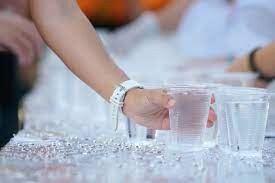
According to Rogers, the frequency of water intake depends on factors like weather conditions, sweat rate, pre-race hydration levels and personal preferences. “For runs under an hour, your body won’t require much water, as there isn’t enough time to absorb and utilize it effectively. However, in warmer temperatures (above 24 C), consuming water every 15 minutes or 3K can help ward off dehydration.”

Preparation is key, and Rogers advises drinking 12-16 ounces of water a couple of hours before the race, gradually reducing intake one hour before to avoid a sloshy stomach. “During the race, if you feel dehydrated, wet your mouth and spit out the water to combat dryness while satisfying your thirst,” says Rogers.
“Listen to your body’s signals,” says Rogers. Ignoring thirst can lead to dehydration, so make use of water stations on the 10K course. Find the hydration balance that works for you and that leads to a stellar performance.
by Marley Dickinson
Login to leave a comment
Three tips for nailing the perfect pace on race day
It doesn’t matter how experienced or inexperienced a runner you are–everyone has made the mistake of going out too fast in a race. It’s a painful affair, both physically and mentally, when you see others blowing by you because you’ve gone out too swiftly. The thing is, you will never win the race in the first kilometre, but you might well lose it.
Lara Rogers, the head coach of the Under Armour professional team UA Mission Run Baltimore Distance group in Baltimore, coaches some of the top up-and-coming middle-distance athletes training for the 2024 Paris Olympics. Rogers shares three tips on how to find that sweet spot and maintain a consistent rhythm throughout the race.
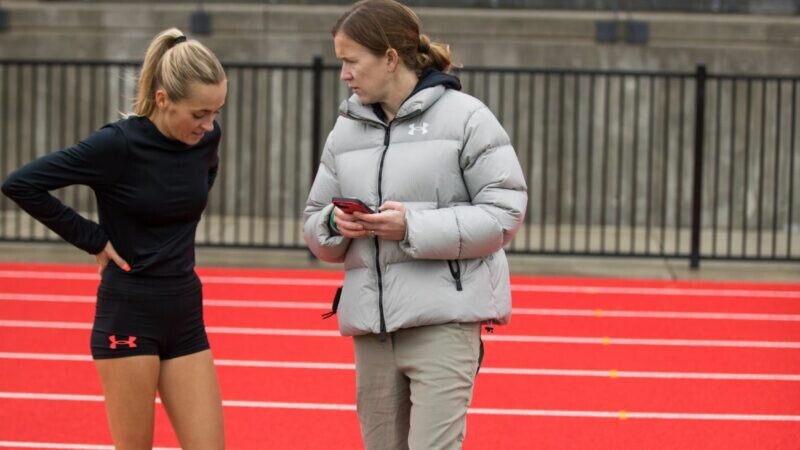
1.- Be realistic
Firstly, know your target pace. Set realistic and achievable pace goals based on your training and previous races. This requires understanding your fitness level and the demands of the race distance. If you are running your first 5K or 10K, it’s better to start at a modest pace and speed up as the race progresses.
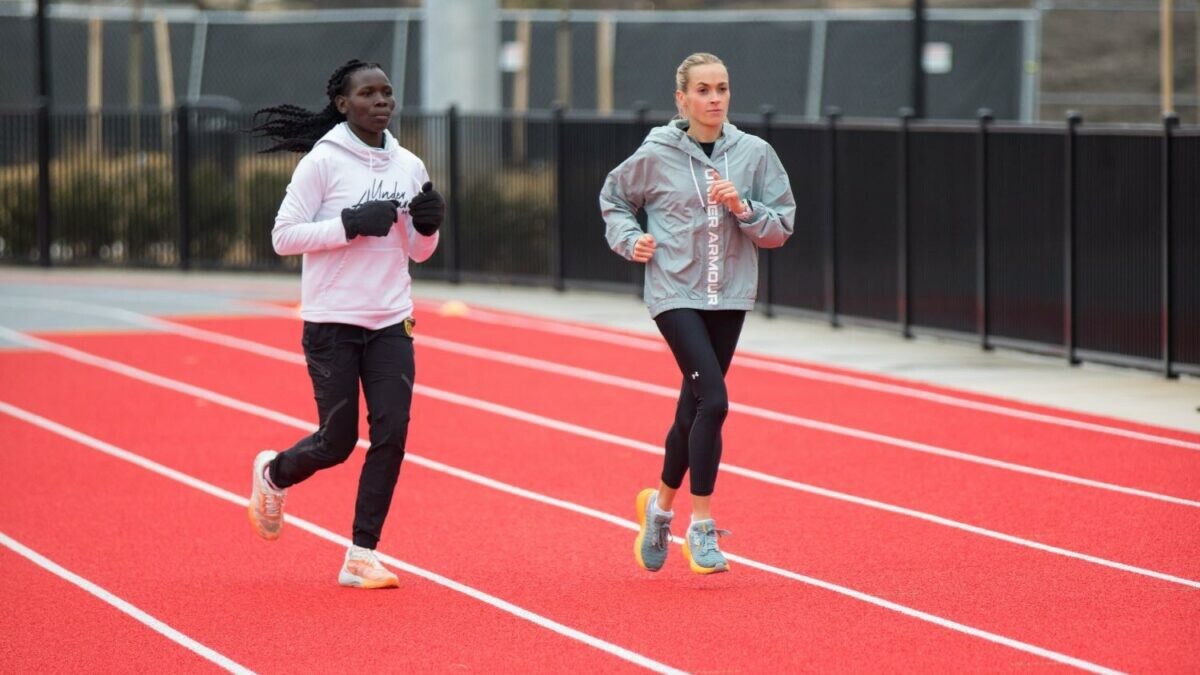
If you have some recent races under your belt, you can always use them as a reference. A recent 5K is a great race predictor for what you can run for 10K, as is the 10K for the half-marathon. For example, if you have a personal best of 25 minutes for 5K, doubling your time and adding two to four minutes should give you a realistic range to train toward.
2.- Get a feel for it in training
In the weeks leading up to race day, spend a few sessions trying to nail that goal pace. Practising this can help your body get familiar with different paces and develop a sense of pacing. By practising at race pace, you are training your body to maintain that specific speed and get comfortable with that effort.
Incorporating tempo runs, intervals and race simulations are all great sessions to build your comfort level. My favourite workout to find your perfect pace is 10 reps of 400m, or five reps of 800m, at your potential goal pace, with equal recovery. If you can conquer this, it’ll help you feel confident with your pacing as you gear up for race day.
3.- Be patient
It is easy to get carried away at the start with the excitement of race day, but trust your training and remember that finishing strong is the most important part. Remember to be patient, and using a pace group of runners shooting for a similar goal time can help you nail the perfect pace from the start.
While it’s important to stick to your target pace, it’s also important to be flexible and make adjustments if necessary. Factors like weather conditions, terrain and how you feel on race day can all impact your performance. Trust your training, stay focused and strive for a steady rhythm. By following these three tips, you’ll increase your chances of achieving your race day goals.
by Marley Dickinson
Login to leave a comment
When should you start training for your summer 10K?
This time of year, more people are inclined to start running due to warmer temperatures and longer daylight hours. Getting outdoors and seeing others compete in races can spark motivation to sign up for one yourself. Whether you are a beginner or a seasoned veteran, registering for a 10K can be a fun challenge. Preparing for a 10K race requires careful planning and adequate training, and it’s important to give yourself enough time to train effectively. But how long should that be?
The head coach of the Under Armour professional team, UA Mission Run Baltimore Distance, Lara Rogers, shares her knowledge and expertise to help you prepare for your 10K. Rogers is one of several women who serve as the head coach of a professional distance team in the U.S. The UA Mission Run Baltimore Distance team, established in 2022, consists of promising athletes focused on middle-distance events and aiming for the 2024 Olympics in Paris.
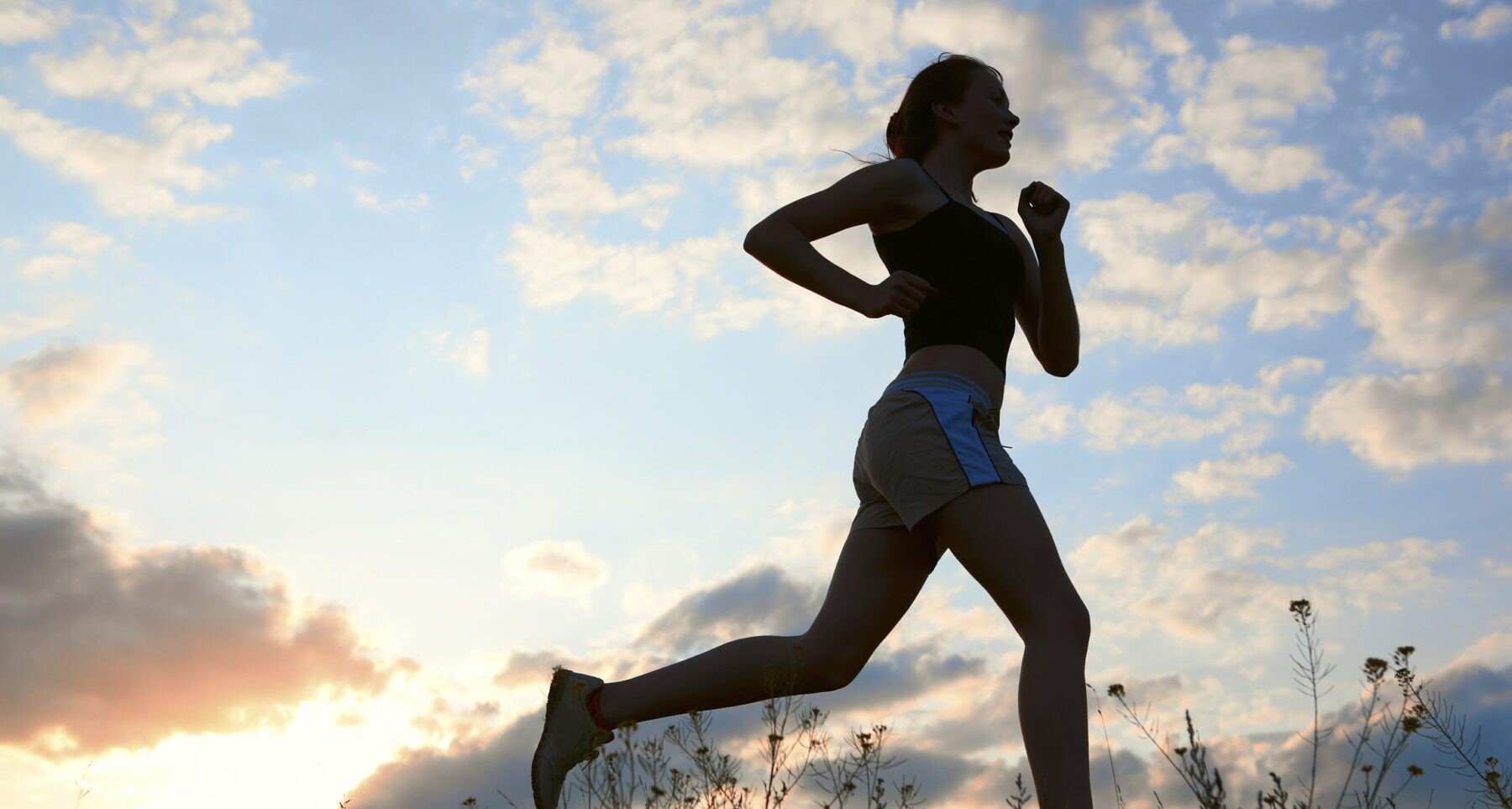
When training for a 10K, Rogers says it’s good to give yourself 10 to 12 weeks if you’re starting from scratch. “For the first four to six weeks, the goal is to get familiar with running and build a foundation,” says Rogers. “Once you have your foundation, start adding more technical work over the final four weeks, such as interval training and tempo work.”
Rogers says that if you have a more experienced running background and already have a base, you can get by with six to eight weeks of training. “Use the first couple of weeks to build up volume, then four to five weeks to incorporate speed or harder workouts, and finally a taper week or two before the race,” she advises.
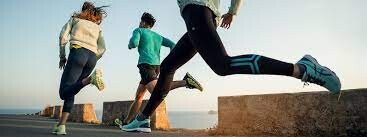
She also emphasizes the importance of hydration and heat management during summer 10K training. “Run during cooler times of the day, such as early morning or evening, to avoid overheating,” says Rogers. “Stay well-hydrated before, during, and after your runs, and consider carrying water or having access to water stations for longer training sessions.”
With consistent training and preparation, following these tips will help you become well-prepared to tackle the challenges of a summer 10K race and achieve your racing goals.
by Marley Dickinson
Login to leave a comment
10 Reasons to Start Following Track and Field This Year
The 2023 season should be full of record-breaking performances from the sport’s biggest stars. Here are the most important things to know.
Track is back, and if the results from the indoor season and early outdoor meets are any indication, it should be another year of eye-popping results around 400-meter ovals this summer.
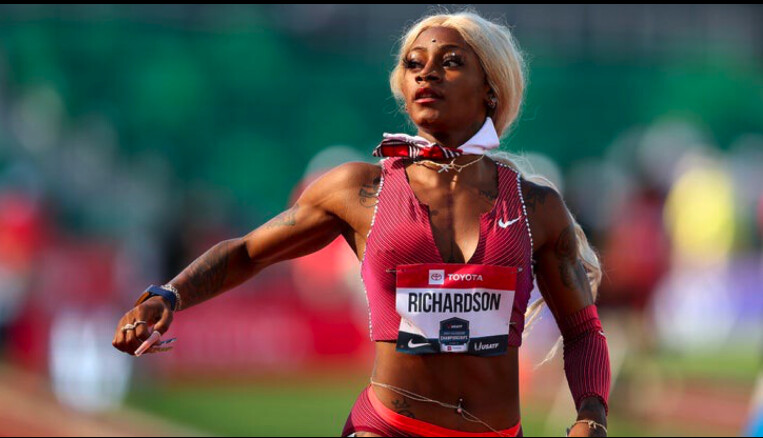
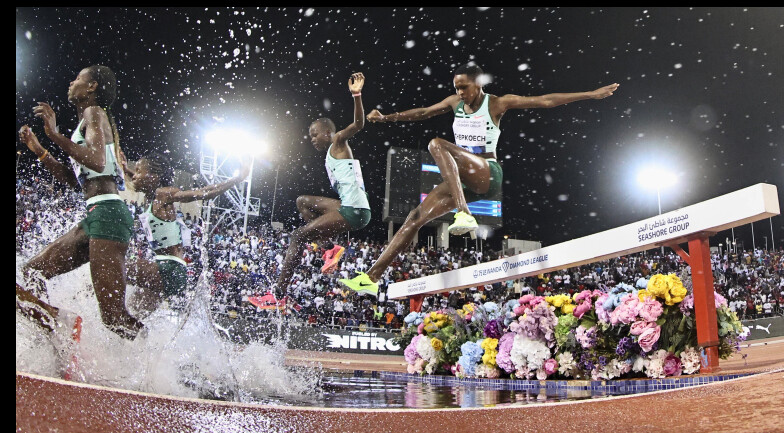
Why is track and field relevant to the average recreational runner?
Perhaps you’re running some of the same distances in your training and racing. Or maybe you have a connection to some of the events from your youth, days in gym class or on the playground. From a human performance perspective, no sport showcases the all-out speed, red-line endurance, max power, dynamic agility, and meticulous bodily control as track and field does.
Here’s a primer on the most awe-inspiring athletes and events of this summer’s track season. Because, come on: with a sport that includes events as multifaceted as the pole vault, as primal as the shot put, and as wild as the 3,000-meter steeplechase—a 1.8-mile race with 28 fixed barriers to hurdle and seven water pits to jump—what’s not to like?
One of the many things that makes track and field so special is that it’s one of the most diverse sports on the planet, both culturally and athletically.
Last summer, athletes from a record 29 different countries earned medals in the 25 different running, jumping, and throwing events at the World Athletics Championships in Eugene, Oregon.
At the highest level, there are athletes of all shapes and sizes from every culture and socioeconomic background. While there certainly are racial and cultural stereotypes that need dissolving and vast inequality among competing countries, from a performance point of view the sport is largely meritocratic, based on the time or distance achieved in a given competition.
Watching American Sydney McLaughlin-Levrone masterfully win the 400-meter hurdles in a world-record time last summer in front of a deafening crowd at Hayward Field in Eugene was a riveting experience. It was vastly different than watching Grenada’s Anderson Peters win the javelin world title with a career-best throw of 90.54 meters on his final attempt to beat India’s Neeraj Chopra, but both had edge-of-your-seat excitement, athletic excellence, and cultural significance.
One of the knocks against track and field in recent years is that it hasn’t done enough to attract casual fans the way professional football, basketball, hockey, and soccer have. Following the On Track Fest, the USATF Los Angeles Grand Prix on May 26-27 in Los Angeles is trying to up the ante by combining a mix of elite-level competition, an interactive fan festival, and top-tier musical performances.
Billed as the one of the deepest track meets ever held on U.S. soil, it will feature a star-studded 400-meter face-off featuring Americans Michael Norman, the reigning world champion, and Kirani James, a three-time Olympic medalist from Grenada, and a women’s 100-meter hurdles clash with world champion Tobi Amusan of Nigeria, Olympic silver medalist Keni Harrison of the U.S., and Olympic gold medalist Jasmine Camacho-Quinn of Puerto Rico.
Saturday’s action will be broadcast live on NBC Sports from 4:30 P.M. to 6 P.M. ET and be followed by a concert event called the Legends Jam, which will include appearances from some legendary athletes and be headlined by Grammy-winning singer Judith Hill.
American sprint sensation Sha’Carri Richardson will be racing the 100-meter dash at the USATF Los Angeles Grand Prix. You probably remember her for her perceived failures more than the astounding times she’s actually achieved on the track.
Two years ago, the sprinter from Dallas blew away the field in the 100-meter dash at the U.S. Olympic Trials with a 10.86 effort, but then she was famously suspended after testing positive for cannabis (which is on the World Anti-Doping Agency’s list of banned substances) and missed the Tokyo Olympics as a result. (She admitted using the drug to cope with the pressure of qualifying for the Olympics while also mourning the recent death of her biological mother.)
Then last year, despite strong early season performances, Richardson failed to make the finals of the 100-meter or 200-meter at the U.S. championships, so she missed out on running in the first world championships held on American soil.
This year, the 23-year-old sprinter appears to be locked in and better than ever, posting a world-leading 10.76 100-meter time on May 5 in Doha (she also ran an eye-popping 10.57 with an over-the-limit tailwind on April 9 in Florida) and posted the second-fastest time in the 200-meter (22.07) on May 13 at a meet in Kenya.
If she keeps it all together, expect Richardson to finally contend with elite Jamaican sprinters Shericka Jackson and Shelly-Ann Fraser-Pryce in the 100 and 4×100-meter relay in August at the World Athletics Championships in Budapest, Hungary.
A few years ago, American sprinter Fred Kerley was on his way to becoming one of the world’s best 400-meter runners. But he wanted more than that. What he really had his heart set on was becoming the world’s fastest man, a moniker that goes with the most dominant sprinter in the 100-meter dash.
Ignoring doubters, Kerley retooled his training and earned the silver medal in the 100-meter at the Tokyo Olympics (.04 seconds behind Italy’s Marcell Jacobs) and then continued his ascent last year by winning the U.S. championships (in 9.76, the sixth-fastest time in history) and world championships (9.86).
The 28-year-old from San Antonio, Texas, also became one of just two other runners (along with American Michael Norman and South African Wayde van Niekerk) to ever run sub-10 seconds in the 100-meter, sub-20 seconds in the 200-meter, and sub-44 seconds in the 400-meter. So far this year, Kerley has two of the four fastest 100-meter times of the season, including a speedy 9.88 on May 21 in Japan.
After trading barbs on social media this spring, Kerley and Jacobs are expected to face off in an epic 100-meter showdown on May 28 at a Diamond League meet in Rabat, Morocco, marking the first time the Olympic gold medalist and the world champion in the men’s 100m face off since the 2012 Olympic final, when Jamaican Usain Bolt beat countryman Yohan Blake. American Trayvon Bromell, the silver medalist at last year’s world championships, is also in the field, so it should be an extraordinary tilt.
If you’re a gambler, bet on Kerley to win that one and eventually get close to Bolt’s 9.58 world record. (To do so, he’ll be running faster than 26 miles per hour!) But don’t count out Kenya’s Ferdinand Omanyala, the early world leader (9.84), or fellow American sub-9.9 guys Bromell, Norman, Christian Coleman, and Noah Lyles at the 2023 World Athletics Championships on August 20, in Budapest. Depending on which three Americans join Kerley (who has an automatic qualifier) at the world championships, it’s actually quite likely the U.S. could sweep the top four spots in the 100 in Budapest.
If you’ve ever wanted to see the world’s top track and field stars competing live in the U.S., this is the year to do it. The May 26-27 USATF Los Angeles Grand Prix meet and June 3-4 Portland Track Festival are part of what might be the mosst compelling outdoor track season ever held on U.S. soil.
If you’re looking for an athlete to marvel at, start with Sydney McLaughlin-Levrone, the gold medalist in the 400-meter hurdles at the Olympics in 2021 and World Athletics Championships last summer. She’s been one of the sport’s rising stars since she was a teenager and yet she’s only 23. Her trajectory is still rising—especially since she moved to Los Angeles to train under coach Bob Kersee. Driven by her strong faith, McLaughlin-Levrone is the personification of hard work, grace and competitiveness.
This year she’ll temporarily step away from her primary event to show off her pure sprinting prowess when she opens her season in a “flat” 400-meter race at the Diamond League meet in Paris on June 9. Her personal best in the 400-meter is 50.07 seconds, set when she was a freshman at the University of Kentucky, but she clocked a speedy 50.68 while running over hurdles, en route to a world-record setting win at last summer’s world championships.
Her best 400-meter split as part of a 4×400-meter relay is 47.91, so it’s within reason to think she could be one of several runners to challenge the long-standing world record of 47.60 set in 1985 by East German Marita Koch. Because McLaughlin-Levrone has an automatic qualifier to the world championships in the 400-meter hurdles, she will likely run the open 400-meter at the U.S. championships and decide after the meet which one she’ll focus on.
American 800-meter ace Athing Mu has looked unbeatable for the past several years as she won Olympic gold in the event at the Tokyo Olympics and last year’s world championships. In fact, she has been unbeatable, having won 13 straight races since she dropped out of a mile race at the Millrose Games in January 2022. Going back to 2020 (when she was a senior in high school) and 2021 (during her one season at Texas A&M), she’s finished first in 51 of her past 53 races (relays included), with her only loss being a narrow runner-up finish to Kaelin Roberts in the 400-meter at the 2021 NCAA indoor championships.
Mu, who is also coached by Kersee and trains with McLaughlin-Levrone, seems to be the most likely athlete to challenge the women’s 800-meter world record of 1:53.28, set in 1983 by the Czech Republic’s Jarmila Kratochvílová. It’s the longest standing record in track and field, and only two runners have come within a second of it in the past 15 years. Her personal best of 1:55.04 is an American record and the eighth-fastest time in history. She’s still only 20 years old, so she has many years to keep improving and other historic opportunities ahead of her.
Mu said earlier this year she’d like to try a 400-800-meter double at an Olympics or world championships if the schedule permits—it’s only been done once successfully by Cuba’s Alberto Juantorena at the 1976 Games—but her coach has said she might attempt a 800-1,500-meter double next year at the Paris Olympics.
This year, Mu will run the 1,500 meters at the USATF Championships in July, but will likely defend her 800-meter title at the world championships in Budapest, as well as potentially running on the U.S. women’s 4×400-meter relay and the mixed-gender 4×400-meter relay (with McLaughlin-Levrone) for an opportunity to win three gold medals in a single championships.
With apologies to quarterback extraordinaire Patrick Mahomes, gymnastics all-arounder Simone Biles, and skiing superstar Mikela Shiffrin, pole vaulter Armand Duplantis just might be the most dynamically talented athlete in the world. That’s because he’s the world’s most dominant athlete (and has set six world records) in arguably the most demanding discipline, not only in track and field but quite possibly in any sport. No sport discipline involves such a dynamic combination of speed, power, precision and agility, and Duplantis, who is only 23, is already the greatest of all-time.
Prove me wrong or watch him set his latest world record (6.22 meters or 20 feet, 5 inches) at an indoor meet on February 25 in Clermont-Ferrand, France. That’s the equivalent of vaulting onto the roof of a two-story building, and in his case, often with room to spare.
Duplantis, who grew up in Lafayette, Louisiana, to athletic parents with Swedish and Finnish heritage, represents Sweden in international competitions. He started pole vaulting at age three, set his first of 11 age-group world-best marks at age seven, and won an NCAA title in 2019 as a freshman competing for LSU before turning pro.
All indications are that North Carolina State junior Katelyn Tuohy could become the next American running star. All she has done since she was young is win races and break records.
After winning the NCAA outdoor 5,000-meter a year ago, she won the NCAA cross country title in November. During the indoor track season this past winter, she set a new collegiate mile record (4:24.26) and won both the 3,000-meter and 5,000-meter title at the NCAA indoor championships in March. On May 7, the 21-year-old from Thiells, New York, broke the NCAA outdoor 5,000-meter record by 17 seconds, clocking 15:03.12 at the Sound Running On Track Fest.
Tuohy will be running both the 1,500-meter and 5,000-meter at the NCAA East Regional May 24-27 in Jacksonville, Florida, with the hopes of eventually advancing to the finals of both events at the June 7-10 NCAA Division I championship meet in Austin, Texas.
University of Arkansas junior Britton Wilson is a top collegiate star who is ready for prime time at the pro level. She won the 400-meter in a world-leading and collegiate record time of 49.13 in mid-May at the SEC Championships, where she also won the 400-meter hurdles (53.23) in a world-leading time. The 22-year-old from Richmond, Virginia, was the runner-up in the 400-meter hurdles at last year’s U.S. championships and fifth in the world championships, and could contend for a spot on Team USA in either event at the July 6-9 U.S. championships.
Kerley and Lyles are expected to square off in a 200-meter race at the USATF New York Grand Prix meet on June 24 at Icahn Stadium on Randall’s Island in New York City. There are also two high-level Puma American Track League meets in Tennessee—the Music City Track Carnival June 2 in Nashville and the Ed Murphey Classic August 4-5 in Memphis—and two Under Armour Sunset Tour meets organized by Sound Running on July 22 in Los Angeles and July 29 in Baltimore.
The best U.S. meet of the year, though, will be the USATF Outdoor Championships held July 6-9 in Eugene, Oregon, where American athletes will be vying for top-three finishes to earn a chance to compete for Team USA at the 2023 World Athletics Championships August 19-27 in Budapest.
The U.S. season will culminate with the September 16-17 Pre Classic in Eugene, Oregon, a two two-day meet that will double as the finals of the international Diamond League circuit and should include many of the top athletes who will be representing their countries in next summer’s Paris Olympics. (And if you want to see the country’s top high school athletes run unfathomable times for teenagers, check out the Brooks PR Invitational on June 14 in Seattle, Washington.)
At the June 2 Diamond League meet in Rome, Italy, the men’s field in the 5,000-meter run will have what might be the fastest field ever assembled, with 13 runners who have personal best times of 12:59 or faster.
The field will be headlined by Joshua Cheptegei of Uganda, who lowered the world record to 12:35.36 in Monaco three years ago. (That’s a pace of 4:03 per mile!). But it will also include Kenya’s Jacob Krop (12:45.71) and Nicholas Kipkorir (12:46.33), Ethiopia’s Yomif Kejelcha (12:46.79), American Grant Fisher (12:46.79), Canadian Mohammed Ahmed (12:47.20), and Guatemalan-American Luis Grijalva (13:02.94), among others. With a big prize purse at stake and pacesetters ramping up the speed from the start, it should be a race for the ages.
by Outside Online
Login to leave a comment
Galen Rupp’s high school 5000m record (13:37.91) stood for 18 years, 9 months, 6 days Connor Burns’ high school 5000m record (13:37.30) stood for 20 days. Lex Young went 13:34.96 last night in Los Angeles
It’s not every day that the 18th place finisher in a race steals the headlines but Newbury Park High School senior (CA) Lex Young highlighted the first night of the LA Grand Prix by breaking the U.S. high school 5000m record in 13:34.96. U.S. road 5K champion Abdihamid Nur won the race in a personal best of 13:05.17 and locked up his World Championship qualifying standard.
What you need to know:
– The previous high school record of 13:37.30 was set just three weeks ago by Connor Burns at Sound Running’s Track Fest. He broke Galen Rupp’s record of 13:37.91, which had stood since 2004.
– This should not come as much of a surprise after Young ran 13:43.95 last year. He didn’t have the best start to the year after finishing the 2022 cross-country season injured and then finishing third in the 5000m at New Balance Nationals Indoor in 14:00.64. Young has raced sparingly this outdoor season but took a big step forward with a 13:44.83 at the Bryan Clay Invitational on April 14. He called his shot and publicly announced he was going after Burns’ record in the leadup to Friday night’s race.
What told him in training that this was possible:
“The times kept on getting faster and the effort kept on feeling easier, where I knew with the training progressing in the same way, I’d be ready by now.”
On racing a majority of the race solo:
“I knew it would be pretty darn fast but I thought there would be more people in that 13:30-13:40 range. So when everyone was still together at a mile and I was dropping off, I had to take a couple of breaths and think, ‘I’m falling off the back but it’s not because I’m dying but if I keep on going with them, I don’t want to dig myself down into a deeper hole.’ They were going really fast. They went like 4:17, which is faster than I need to go for the record. I wanted to be a bit more conservative.”
On what it’s like being a high school star in the social media era, where performances are under a bigger microscope and open to more criticism:
“When I produce the content, it motivates other people to try and do what I’m doing. Ultimately that is so worth it. People come up to me and they tell me how much it’s inspired them and that means so much. No matter how much people will hate or people who comment and doubt, I will always keep producing the content because I know how much it can help people as other people’s content has helped me.”
Other highlights from the LA Grand Prix:
– Emily Lipari won the women’s 5000m in 15:08.87 for her second-best career performance. She closed with a 69.34-second final lap.
– Team New Balance Boston’s Emily Mackay won the women’s 1500m in a personal best of 4:07.03. She spoke about what she’s learned in her first full year as a pro.
– Kieran Lumb notched a personal best of 3:35.99 to outkick NACAC champion Eric Holt in the men’s 1500m. He discussed his decision to turn professional and sign with On.
– Under Armour Mission Run Baltimore’s Ahmed Jaziri won the men’s 3000m steeplechase in 8:17.64 – just barely missing the World Championships qualifying standard.
– Former Colorado Buff Madie Boreman took 10 seconds off her personal best to win the women’s steeplechase in 9:22.99. She is now being coached by Julie Benson and could be a contender for the U.S. team.
– Craig Engels won his first race of the year with a 1:47.32 in the men’s 800m. He took three months off due to a torn calf and Achilles injury.
– Laurie Barton of the Brooks Beasts won the women’s 800m in 2:02.54.
----
Chris Chavez launched CITIUS MAG in 2016 as a passion project while working full-time for Sports Illustrated. He covered the 2016 Olympics in Rio de Janeiro and grew his humble blog into a multi-pronged media company. He completed all six World Marathon Majors and is an aspiring sub-five-minute miler.
by Citius Magazine
Login to leave a comment
Nikki Hiltz, Sam Prakel both become two-time winners at Usaft 1 mile road
The USATF Indoor 1,500-meter winners demonstrated they could also rule the roads Tuesday night at the USATF 1 Mile Championships.
Nearly 10 weeks after both winning USATF Indoor titles Feb. 18 in Albuquerque, N.M., adidas professional Sam Prakel and Lululemon athlete Nikki Hiltz each secured their second career national road championships as part of the annual Grand Blue Mile event.
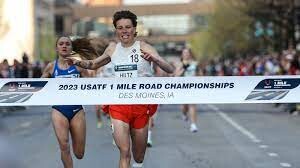
Hiltz produced the fastest performance in the history of the women’s race, which began in 2009, clocking 4 minutes, 27.97 seconds to edge reigning USATF Outdoor 1,500 champion Sinclaire Johnson of Nike’s Union Athletics Club in 4:28.70.
Hiltz, who prevailed in 2019 in Des Moines in 4:29.7, became the only athlete in event history to produce a pair of sub-4:30 efforts, benefitting from a 65-second opening quarter-mile and the pack reaching the midway point in 2:14.
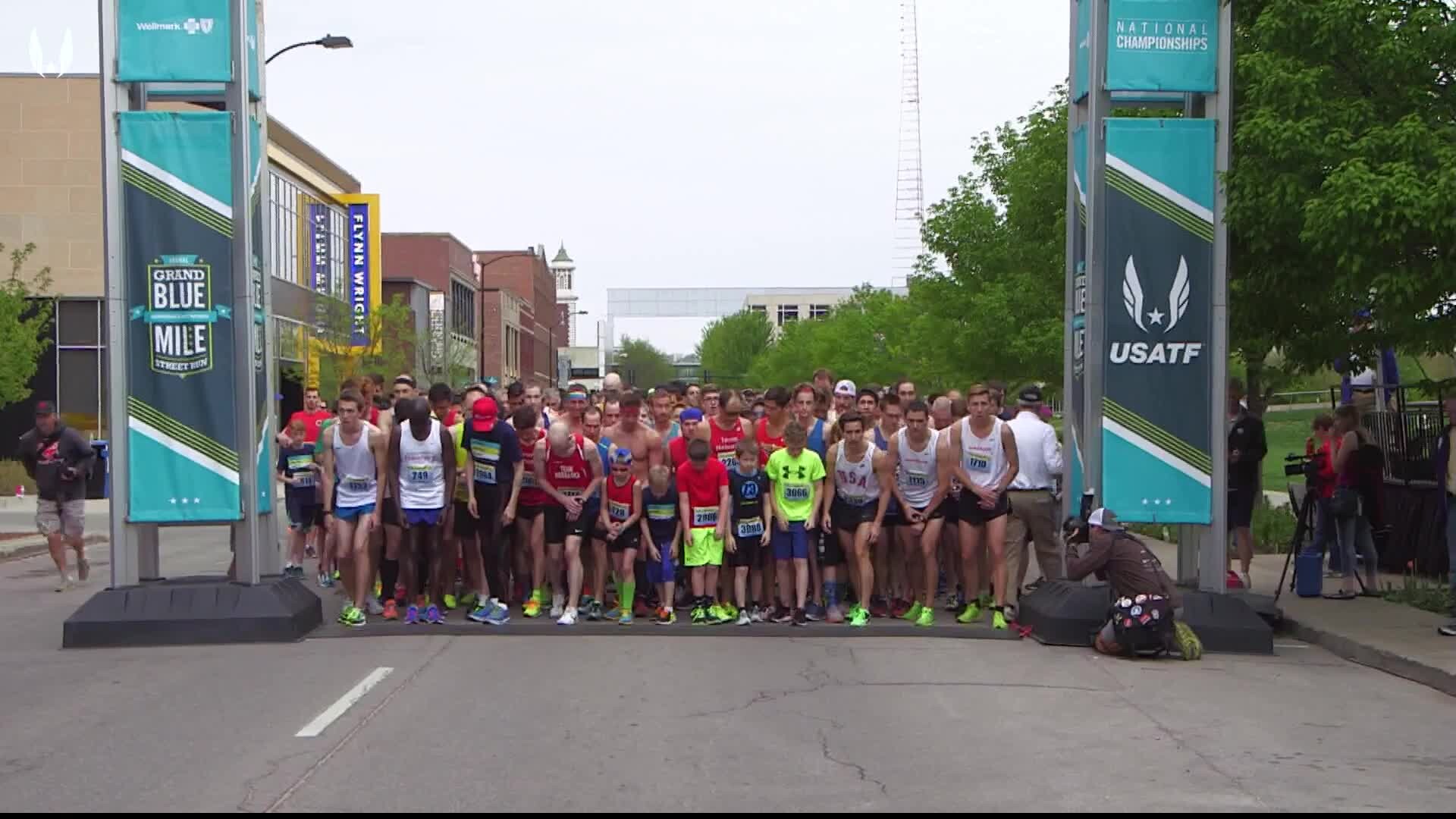
Emily Lipari, who had the previous all-time mark of 4:29.3 in 2020, and Johnson are the only other competitors to achieve a sub-4:30 performance in the race.
Hiltz, who ran a lifetime-best 1:59.03 in the 800 meters April 14 at the Bryan Clay Invitational at Azusa Pacific University, earned $5,000 for the victory and an additional $2,500 for the record bonus. Hiltz also joined Heather Kampf and Emily Lipari as the only three competitors to capture multiple women’s championships in event history.
Addy Wiley, a freshman at Huntington University in Indiana who secured five NAIA Indoor national titles March 2-4 in South Dakota, raced for the first time since that memorable showcase and took third in 4:30.94.
Wiley, 19, became the youngest top-three finisher in event history and achieved the No. 6 all-time performance in the nine years the competition has been held in Des Moines.
Wiley, who placed fourth in the 1,500 at the USATF Indoor Championships in February in Albuquerque, elevated to No. 7 in the history of the national road mile competition, including Sara Hall clocking 4:30.8 in Minnesota to secure the 2011 crown.
Colleen Quigley, representing Lululemon, finished fourth in 4:31.1 in her debut at the event, with Nike’s Shannon Osika and Alex Teubel also being credited with 4:31 performances to secure fifth and sixth.
Alli Cash (4:32), Jenn Randall (4:33), Micaela DeGenero (4:34) and Helen Schlachtenhaufen (4:37) completed the top 10 women’s competitors in the 23-athlete race.
Prakel prevailed in 4:01.21, remaining patient following an opening quarter mile of 61 seconds and a 2:05 split at the midway point, to take control in the final 500 meters and never relinquish his advantage.
Under Armour Mission Run Baltimore Distance athlete Casey Comber edged last year’s champion Vincent Ciattei by a 4:02.88 to 4:02.91 margin to grab second.
Prakel, who ran 13;22.78 in the 5,000 meters April 14 at Bryan Clay, also secured a $5,000 prize for the road mile title, becoming only the third male athlete in event history to capture multiple championships, joining David Torrence (2009-11) and Garrett Heath (2013 and 2015).
Prakel produced the fastest all-time mark in Des Moines with his 3:58.3 effort in 2020. Ben Blankenship holds the meet record with his title in 3:55.8 in 2016 in Minnesota.
Nick Randazzo, Kasey Knevelbaard and Jake Gillum were all credited with 4:04 performances to finish fourth, fifth and sixth, followed by Shane Streich and David Ribich both clocking 4:05 for seventh and eighth, Craig Nowak earning ninth in 4:06 and Colin Abert taking 10th in 4:08 in the 17-athlete race.
Login to leave a comment
Grand Blue Mile
The Grand Blue Mile was created by Wellmark Blue Cross and Blue Shield and the Drake Relays to encourage healthy habits and empower positive change. Held annually since 2010, the Grand Blue Mile has hosted more than 30,000 participants from 26 states, six countries, and four continents. The annual event brings friends and families together to celebrate wellness through a...
more...USA Record For Hillary Bor Yields $59,000 Payday At Cherry Blossom 10 Mile
The 50th edition of the Credit Union Cherry Blossom 10 Mile here this morning ended with a bang when Olympic steeplechaser Hillary Bor not only won the men’s division of the USATF 10 Mile Championships, but also claimed a $50,000 bonus for breaking Greg Meyer’s 40-year-old national record by just two seconds.
Bor, 33, who represents Hoka One One and wore bib 13, clocked 46:11, three seconds behind overall race champion Tsegay Kidanu of Ethiopia. Including his prize money, Bor collected a total of $59,000.
“I came here to break the record and the weather wasn’t going to stop me,” Bor told Race Results Weekly, referring to the unusually cold temperatures and strong winds. “It’s something I’ve been working for since October last year.”
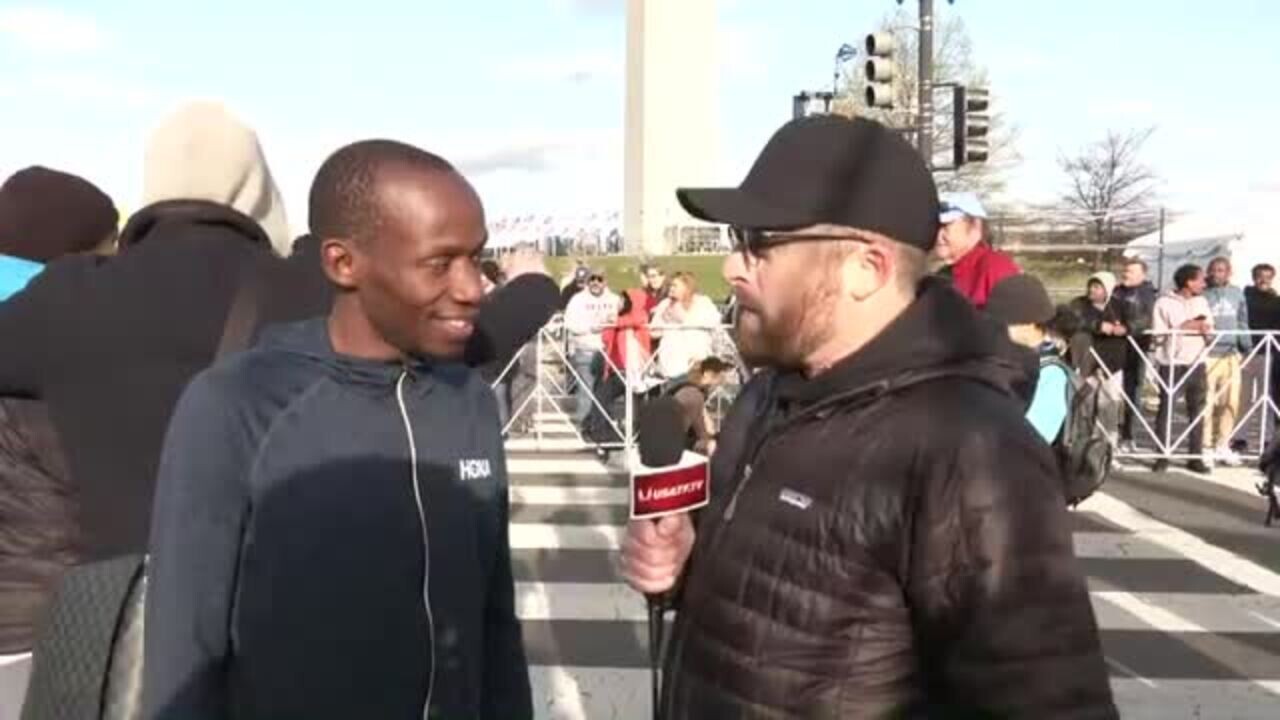
Last October Bor won the USATF 10 Mile Championships in St. Paul, Minn. He ran 46:06 in that race, a championships and course record, but that course was 31 meters downhill and not eligible for record setting. However, Bor and coach Scott Simmons realized that breaking Meyer’s mark was within his capabilities, especially because a faster time run by two-time Olympic medalist, Galen Rupp, was never ratified by USATF. Rupp ran a 10 mile split of 45:54 at the Row River Half-Marathon in Dorena, Ore., in October, 2020, but the paperwork for verifying that record was never completed or approved.
“My coach knew I was in really good shape to run 45 (minutes),” Bor said. “But, the weather’s not good today. The last two miles was just the wind on our face the whole time.”
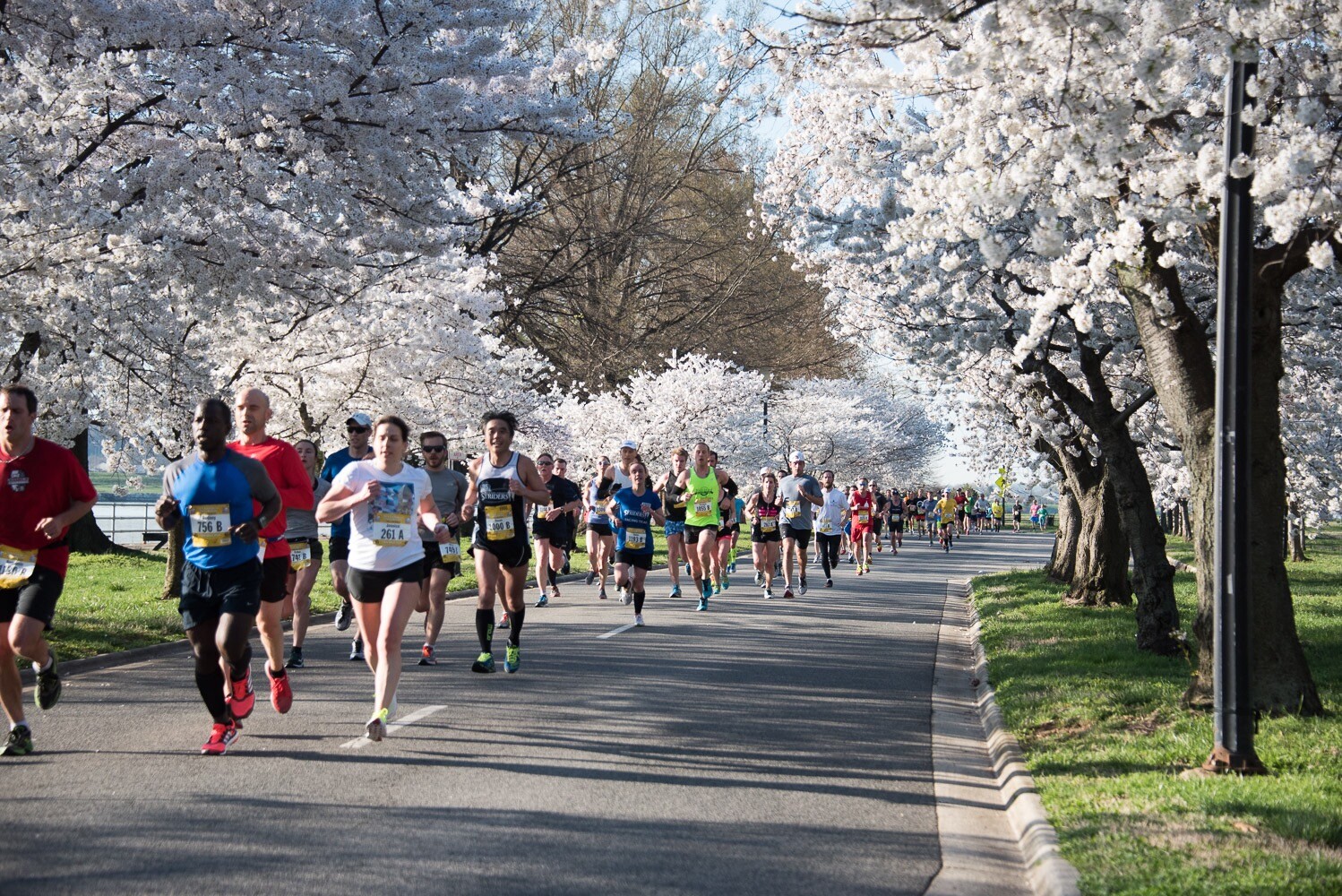
Indeed, it was in those last two miles that Bor and Kidanu did their best to push each other. Kidanu, who represents Asics, was just trying to keep up the pressure on Bor.
“The wind was very strong and it made it very tough,” Kidanu told Race Results Weekly through a translator. He continued: “At the beginning there were a lot of us, but later only a few of us. But the wind made it very difficult. Two of us were able to prevail and we battled one another. In the end, I was able to win.”
In the final sprint to the line, Bor wasn’t really sure where he stood against the clock. The wind was so strong that the 9-mile marker blew down, despite being weighted with sandbags. Also, Bor started the race without his watch.
“Today, I didn’t have my watch so that was not really good because I didn’t know the splits,” Bor said, looking slightly embarrassed. “When I saw the split at 8 miles I knew I needed to run 4:45, but the wind was too much. I just put my head down and just grind, and grind, and grind.”
Biya Simbassa (Under Armour) finished a distant third in 47:09 and finished second in the national championships division. Kenya’s Charles Langat (Asics) was fourth in 47:25, and Jacob Thomson (Under Armour) took fifth –and third in the national championships– in 47:27.
Bor, who will return to the steeplechase during the track season, said that today’s race was all about self-belief.
“It shows if you put something in your head you can accomplish it,” he said.
The women’s competition was a tale of two races.
In the overall competition, Uganda’s Sarah Chelangat (Nike) surged away from the field just before the five mile mark. Her six-mile split was a snappy 4:56, and that put her 22 seconds ahead at that point. Despite running directly into the wind (and alone) in the final miles, she was able to extend her lead to 30 seconds by the ninth mile, and 33 seconds by the finish. Her winning time of 52:04 was excellent given the conditions, but she fell well short of the 51:23 world best for an all-women’s race which would have given her a share of the race’s $50,000 bonus pool.
Behind Chelangat, there was a heated battle for both second place overall and the USATF title. In the ninth mile, Emma Grace Hurley (Atlanta Track Club Elite), Sara Hall (Asics), Nell Rojas (Nike), and Molly Grabill (Unattached) separated themselves from the rest of the pack, all of them trying for the national title. As they crested the final hill before the course turns slightly downhill to the finish line, Hall and Rojas were locked in a sprint for the win. Hall, who is running the Boston Marathon in 15 days, got the best of Rojas, 52:37 to 52:38.
Hall, who turns 40 on April 15, almost skipped today’s race. She just returned from a family trip to Ethiopia where her training didn’t go well because she got sick.
“Honestly, I feel so thankful for today because four days ago I wasn’t going to race,” Hall told Race Results Weekly. “I had COVID last week and training was just so rough. I had a fever. I had two different viruses back to back.”
But like Bor, Hall had the power of self-belief working for her today.
“I think my whole career I’ve just chosen to show up,” Hall said, wrapped in an American flag. “So, just today I decided to show up and I’m really glad I did, especially with Asics sponsoring this event.”
While the wind –which Rojas called “nasty”– was a challenge, Hall saw it as an opportunity to prepare mentally for Boston where conditions can be difficult, too. She thought about the 2018 race where temperatures were just above freezing and athletes had to run through a driving rain storm.
“I was thinking about Boston because, you know, 2018 with that headwind and the storm,” Hall said. “I have Boston in two weeks, so this is just a good time to practice.
Like Bor, Hall had thought about trying for a share in the record bonus pool, but discarded that idea when she felt the power of the wind.
“Normally, I would have wanted to go for the record out here, but with the significant wind I didn’t know if that was going to be in the cards, so I just chose to compete,” she said. “I think this was a great opportunity to do that with Boston coming up.”
With her win here today, Hall has won a total of 12 national titles, four at 10 miles (2017, 2018, 2019, and 2023).
Hurley finished fourth (third American) in 52:41, and Grabill got fifth (fourth American) in 52:42. Defending champion Susanna Sullivan, who led most of the first half of the race, finished seventh (sixth American) in 53:25. She’s running the TCS London Marathon in three weeks and has been doing heavy mileage.
“I’m ready to run a marathon,” she said, smiling, as she changed into warm clothes in the athlete recovery area.
Some 16,000 runners competed today after about 6,000 ran the companion 5-K yesterday (which took place in the rain). Several former race champions were on hand to celebrate the 50th edition, including Kathrine Switzer (1973), Greg Meyer (1983), Eleanor Simonsick (1982 and 1983), and Bill Rodgers (1978 through 1981). Race director Phil Stewart reflected on how the race had endured for so many years and through so many cultural and political changes.
“Through Watergate, gas crises, the fall of the Berlin Wall, the invention of the internet, the first and second Iraq Wars, the 2008 financial crisis, America’s first Black President, two impeachments, an insurrection and the War in Ukraine, runners have returned each spring for what is known as the ‘Runners Rite of Spring,'” Stewart said at last night’s pre-race dinner.
by David Monti
Login to leave a comment
Cherry Blossom Ten Mile Run
The Credit Union Cherry Blossom is known as "The Runner's Rite of Spring" in the Nation's Capital. The staging area for the event is on the Washington Monument Grounds, and the course passes in sight of all of the major Washington, DC Memorials. The event serves as a fundraiser for the Children's Miracle Network Hospitals, a consortium of 170 premier...
more...How runners can use fitness tracker apps to find motivation in training
After months of training in the cold of winter, we don’t blame you if you’re losing your motivation to get out the door for a run every day. Even though spring is so close (which means racing season is, too), the promise of good weather might not even be enough to excite you at this point. So, how are you going to break out of this rut? There are plenty of ways to rediscover your motivation, and one option could be through a tracking app. We know it sounds strange, but trust us, a tracking app could give you just what you need to get back to being excited to train.
Newbie tracking
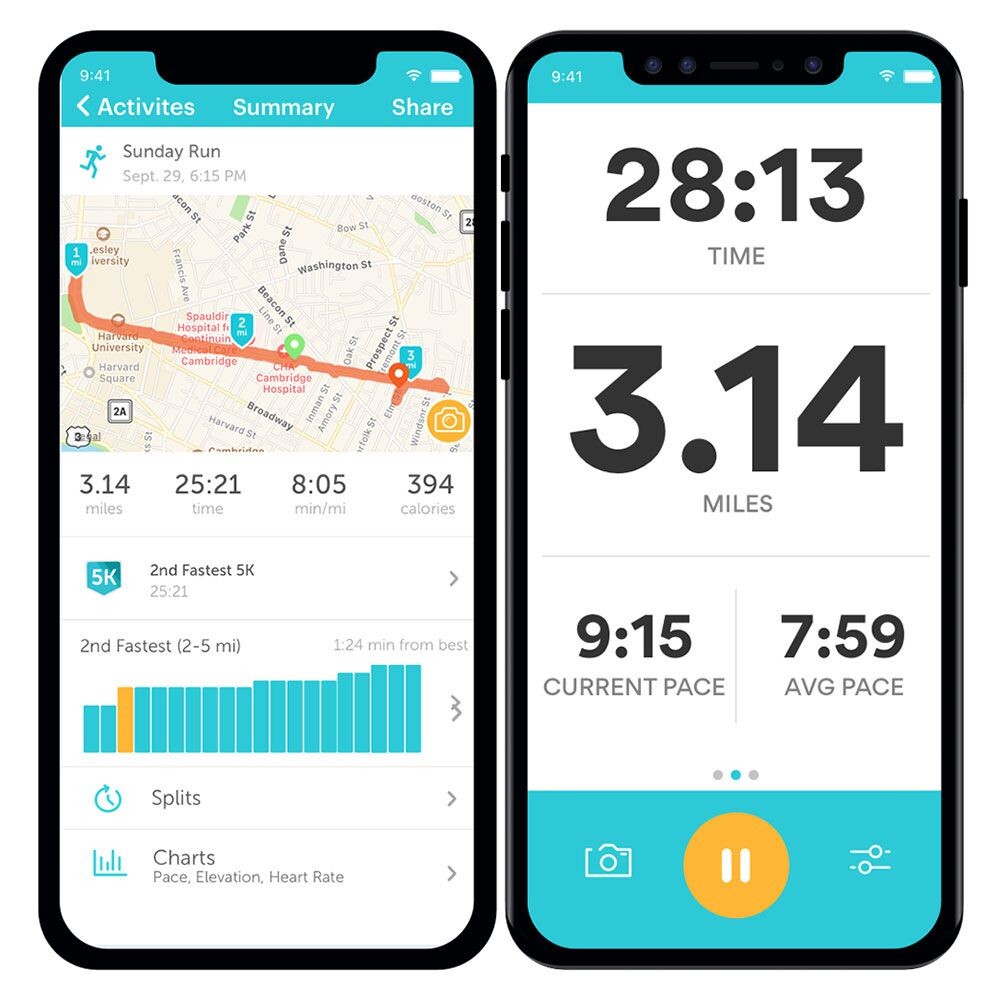
If you’ve never used a tracking app, then simply recording your runs might be enough to get you pumped and eager to train. It can be easy to get bogged down if you’re unsure of the time you’ve been running, your pace or your total distance in every run. Using an app to see these stats will change the way you train, and that change could lead to new-found motivation.
Strava challenges and community
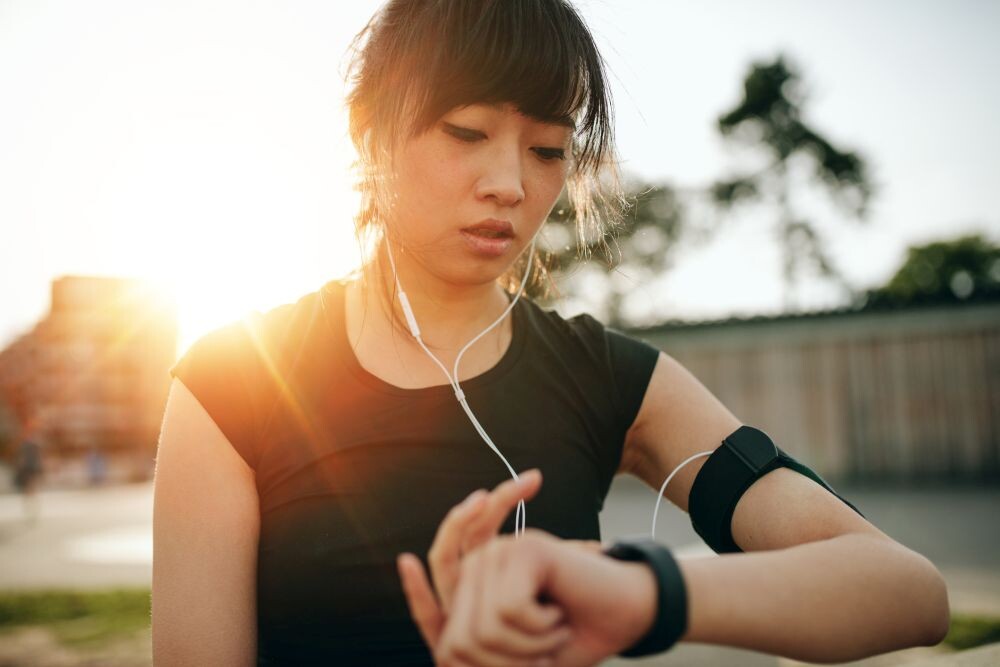
On Strava, there are two main ways that you can regain your motivation to train. The first is the app’s challenge tab, where you can enter dozens of different virtual projects, from distance-based challenges (like running 100K in a month), to goals regarding elevation (climb 2,000m in a month, for example) and more.
The community you’ll find on Strava is another feature that could reignite your desire to train. Strava is a form of social media, and you can follow your friends, elite athletes and anyone else you can find on the app. Seeing other people’s workouts and receiving kudos for yours might be what you need to get into a better headspace in training.
MapMyRun coaching
MapMyRun is Under Armour’s run tracking app, and while it has the usual features you’ll find in other running apps, the main one that could help people with low motivation is its coaching capabilities. If you have a pair of Under Armour shoes from the company’s HOVR lineup, you can connect your phone (and the MapMyRun app) to your shoes via bluetooth. Once you do that, MapMyRun will give you tips on form, cadence and more in real time, helping you become a better runner with every workout. Knowing that you’re improving with the help of MapMyRun may be the key to your next motivational kick.
RunGo’s routes
You might be unmotivated to train simply because you’re bored. It’s easy to fall into a routine in training, and you may find that you’re running the same routes day after day. If you’re looking for a change of scenery with some new routes, check out RunGo, a Canadian-made run-tracking app. On RunGo, you can map out new routes before each run, and the app will then tell you exactly where and when to turn when you’re out and about. (It even works on trails.) A change of scenery might be what you’ve been missing, and RunGo will make sure you get it without having to worry about getting lost.
Virtual races
Virtual races may have become popular during the pandemic, but even though we’re racing in person once more, these events are still easy to find online. Maybe some competition (even the virtual kind) is all you need to reignite your passion for training. While some virtual races require you to use a specific tracking app, many don’t, and as long as you use a reliable app to prove you ran the right distance, you’re set. Download a tracking app, test it out and sign up for a virtual event. Re-introducing goals into your training will almost certainly help you rediscover your motivation.
by Ben Snider-McGrath
Login to leave a comment
Thomson and Tuliamuk came out on top at USATF Half marathon championships
FORT WORTH, TX — The racing strategies were different, but the end result was the same for Jacob Thomson and Aliphine Tuliamuk Sunday morning in Fort Worth, Texas, as both runners claimed victory at the USATF Half Marathon Championships.
On-demand race videos and coverage of the USATF Half Marathon Championships hosted by the Cowtown Marathon, the second stop on the 2023 USATF Running Circuit.
A conservative early pace in the men’s race kept together the entire starting field, as Olympian Jared Ward jumping to the lead and taking on the pacing duties. He was joined up front by fellow Saucony pro Brian Shrader, as the 18-man lead pack passed through 5 km in 15:23. Just past the 5 km split, Thomson decided to push the pace, jumping to the lead and opening up a nearly five second gap. Thomson would continue to string the field out, running 30 seconds faster for the next 5 km split, as the Under Armour pro came through 10 km in 30:16.
As Thomson came through 10 km, defending champion Leonard Korir, 2022 runner-up Futsum Zienasellassie, Shrader, and Abbabiya Simbassa led the pack, bridging the divide and catching up to Thomson. The quickening of pace diminished the lead group, leaving a pack of 10 with half the race to go.
As mile 10 came about, Shrader jumped to the lead and started to push the pace. The pack of 10 strung out again, with only Thomson, Korir, Zienasellassie, and Simbassa able to maintain contact. For the next three miles, the five-man pack ran stride for stride, each feeling out when the right time to make a push to the finish would be. With one final turn before the finish, Thomson made the decisive move, surging ahead, using the momentum from the final turn to propel himself into the lead.
Thomson locked his eyes on the finish, pumping his arms wildly, and in the end was able to fend off the field to claim his first USATF title in 1:02:38. A stride behind Thomson, Korir and Zienasellassie battled to the finish for the second year in a row, with Korir able to withstand the kick of Zienasellassie, placing second in 1:02:39.
Zienasellassie carried his momentum from his USATF Marathon Championships victory in December to earn another top three USATF Running Circuit finish, finishing with the same time of Korir in 1:02:39. Simbassa came home fourth overall in 1:02:41, placing just ahead of Shrader, who hung on to take fifth in 1:02:43. Of note, Thomson, Korir, and Shrader will meet again next Saturday on the streets of Jacksonville, Florida, as all three are entered in the USATF 15 km Championships. Scott Fauble finished sixth in 1:02:49, while Tyler McCandless also broke the 63-minute barrier with his seventh-place finish of 1:02:52. Colin Bennie finished eighth in 1:03:08, Colin Mickow took home ninth place in 1:03:22, and Matt McDonald claimed tenth in 1:03:43, all earning points towards the USATF Running Circuit overall standings.
Unlike the conservative pace of the men’s early miles, the women’s field got off the start line and immediately hit an honest pace. HOKA Northern Arizona elite teammates Lauren Paquette and Tuliamuk jumped to the front, with Paquette in particular pushing the pace.
As Paquette led the way through the first 5 km, passing through the split in 16:31, she and Tuliamuk built an early ten second lead over the rest of the field. That lead would grow to 50 seconds over the next 5 km, as the duo came through 10 km in 32:45. Paquette did much of the pace setting over the next 5 km, with Tuliamuk just off her shoulder, both coming through 15 km in 49:16, now over a minute and a half clear of the chase pack.
At this point in the race, Tuliamuk took over the lead, and while for a moment it looked as if the two would continue to run stride for stride, Tuliamuk’s move to the front pushed the pace just enough to where Paquette started to fall off the pace and Tuliamuk built a few second lead over her teammate over the next mile.
Tuliamuk continued to push, building her lead to 12 seconds with one mile to go. As Tuliamuk came down the final straightaway, she glanced over her shoulder, then charged ahead to cross the finish line with a smile on her face, claiming her seventh USATF title in 1:09:36. Behind Tuliamuk, Paquette held on and finished a fantastic race in second place in 1:09:51.
The two teammates embraced at the finish line and then watched the rest of the top women race to the finish. Veteran Nell Rojas pulled away from the chase pack of four women over the final two miles of the race, separating herself to easily cross the finish in third place, clocking 1:11:08. Molly Grabill earned a fourth-place finish in 1:11:16, while Jessa Hanson took fifth in 1:11:26. Tuliamuk’s and Paquette’s other teammate in the race, Paige Wood, finished sixth overall in 1:11:32. Rounding out the top ten finishers, Katja Goldring scored a seventh-place finish in 1:12:36. Olympian Molly Seidel finished eighth in 1:13:07, while Bridget Belyeu and Lindsey Bradley finished ninth and tenth in 1:15:05 and 1:15:12.
The USATF Running Circuit resumes next Saturday, March 4, as the USATF 15 km Championships take place in Jacksonville, Florida, with the Gate River Run hosting the third stop on the circuit
Login to leave a comment
Under Armour launches SlipSpeed, the versatile slip-on training shoe
Sometimes putting on shoes is an effort–there’s a reason why Crocs are so popular! Many young athletes and runners will crush the back of their training shoes instead of taking 10 seconds to tie them up. But you need an alternative to Crocs for the gym.
Looking to satisfy young athletes who can’t be bothered to tie their shoes, Under Armour has created the revolutionary UA SlipSpeed–a training shoe versatile enough to go from performance training to recovery mode in seconds with a convertible heel.

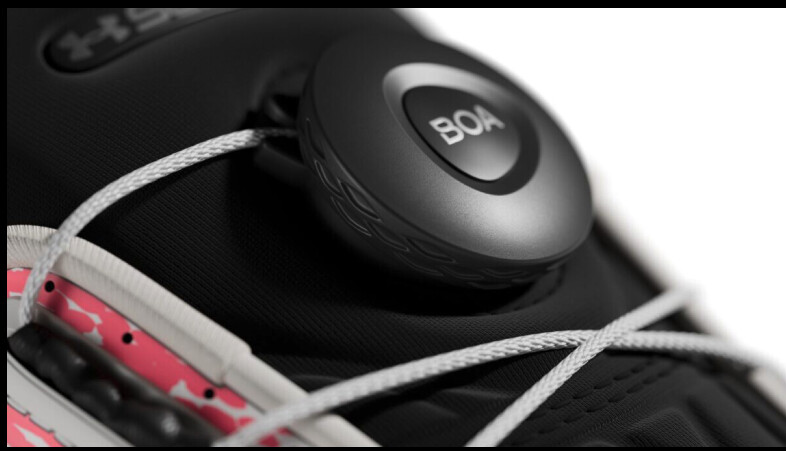
When an athlete crushes the heel of a traditional shoe, it deteriorates the shoe’s performance. The UA SlipSpeed features heel-folding technology that gives athletes a comfy underfoot experience without compromising performance. The shoe also features a BOA-fit lacing system that delivers an adjustable, personalized fit to secure your feet for squat reps or mobility exercises.
The SlipSpeed is a true one-day shoe: if you’re rocking the SlipSpeed, you won’t need to bring another pair of shoes with you, so no matter whether you have a high-impact activity or casual wear planned, it’s comfortable and flexible enough for both, thanks to the crushable heel and BOA lacing system.
Level up your training and get a shoe engineered for maximum comfort, style and performance with options for all-day wear. Do not look past the UA SlipSpeed, which you can get online at underarmour.ca for CAD $190.
by Running magazine
Login to leave a comment
Who Wore Which Shoes at the New York City Marathon?
The running shoe hype train was high in New York City with a few fast yet-to-be-released shoes in the men’s and women’s elite fields.
For a few miles early in the New York City Marathon, Desi Linden surged into the lead of the women’s elite field. The two-time Olympian and 2018 Boston Marathon champion didn’t think she’d run away and win the race that way, but she was just trying to keep the pace honest.
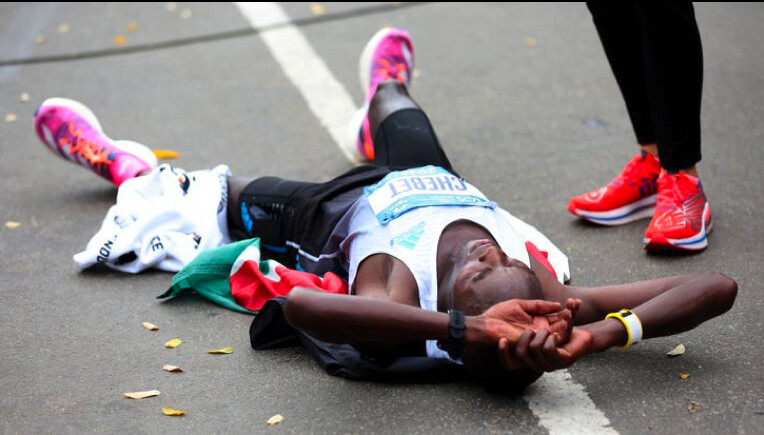
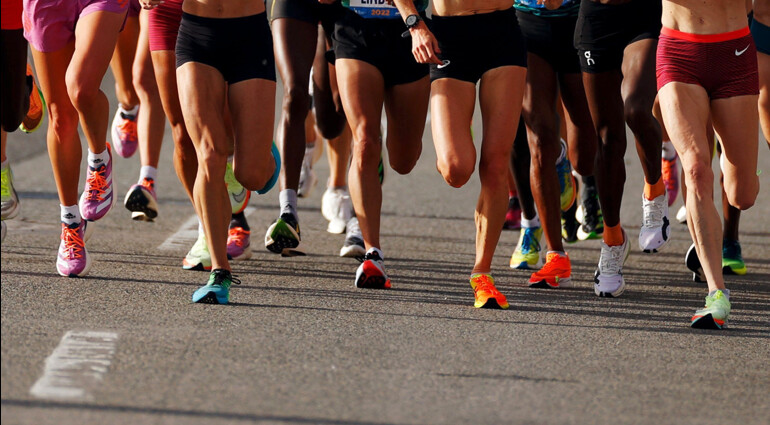
However, hiding in plain sight on her feet as she was off the front of the pack was a yet-to-be-released pair of orange, white and black Brooks prototype racing shoes. A day later, no one is willing to give up any details of the shoe, except that, like all of the other top-tier racing shoes in both the men’s and women’s elite fields, it features a carbon plate embedded in a hyper-responsive foam midsole. And although it’s all in accordance with World Athletics regulations, it won’t be released in Spring 2024 … so we’ll all have to wait a bit to see what that shoe is all about.
Linden’s shoes weren’t the only speedy outliers among the top 25 men’s and women’s finishers. While Nike, Adidas and ASICS shoes were the most prevalent brands among elite runners, there were several shoes that aren’t yet available to the public.
For example, the first runner to cross the finish line of this year’s New York City Marathon, women’s winner Sharon Lokedi, was wearing a pair of Under Armour Velociti Elite shoes. That’s notable for several reasons—because it was Lokedi’s first marathon, because the shoe won’t become available until early 2023 and because it’s the first podium finish at a major international marathon for a runner wearing Under Armour shoes.
There were also three pairs of yet-to-be-released Hoka Rocket X 2 shoes on the feet of three Hoka NAZ Elite runners — two of whom set new personal best times, Aliphine Tuliamuk (7th, 2:26:18) Matthew Baxter (12th, 2:17:15). Those fluorescent yellow shoes with orange, white and blue accents and blue laces were on the feet of Hoka pros at the Boston Marathon in April and Ironman World Championships in Hawaii in October, but they won’t be released to the public until late February or early March.
Meanwhile, the winner of the men’s race, Evans Chebet, was wearing a pair of Adidas Adizero Adios Pro 3, a shoe worn by four other runners in the top 25 of the men’s race and six among the women’s top 25, making it the second most prevalent model among the elites. Oddly, that was the same shoe worn by Brazil’s Daniel do Nascimento, who went out at record-setting sub-2:03 pace on his own, only to crumple to the ground at mile 21 after succumbing to fatigue and cramping.
The most common shoe among the top finishers was the Nike ZoomX Vaporfly Next% 2, which was on the feet of 11 of the 50 runners among the women’s and men’s top 25 finishers. There were eight runners wearing either the first or second version of the ASICS MetaSpeed Sky.
Six runners wore Nike Air Zoom Alphafly Flyknit shoes, three wore Nike Air Zoom Alphalfy NEXT% 2. There were two pairs of On Cloudboom Echo 3 in the field, including those worn by Hellen Obiri who finished sixth while running a 2:25:49 in her marathon debut, while three runners wore Puma Fast R Nitro Elite.
And what about actor Ashton Kutcher? He wore a pair of purple Nike Air Zoom Alphafly NEXT% Flyknit shoes and finished in a very respectable 3:54:01.
Matt James, the former lead of the Bachelor, finished in 3:46:45 with Shalane Flanagan as his guide wearing a pair of New Balance FuelCell Comp Trainer shoes. Flanagan wore Nike Air Zoom Alphafly Next% Flyknit shoes, as did Meghan Duggan, an Olympic gold medalist hockey player who ran a solid 3:52:03. Lauren Ridloff, actress from “The Walking Dead,” ran in a pair of Brooks Glycerin 20 and finished in 4:05:48, while Chelsea Clinton, daughter of Bill and Hillary Clinton finished in 4:20:34 wearing a pair of Brooks Ghost 14 and Tommy Rivers Puzey (aka “Tommy Rivs,” a former elite runner who survived a deadly bout of cancer in 2020, wore a pair of Craft CTM Ultra Carbon Race Rebel and finished in 6:13:54.
Here’s a rundown of what was on the feet of the top 25 women’s and men’s finishers in the Big Apple.
1. Sharon Lokedi (Kenya) 2:23:23 — Under Armour Velociti Elite
2. Lonah Salpeter (Israel) 2:23:30 — Nike ZoomX Vaporfly Next% 2
3. Gotytom Gebreslase (Ethiopia) 2:23:39 – Nike ZoomX Vaporfly Next% 2
4. Edna Kiplagat (Kenya) 2:24:16 — Nike ZoomX Vaporfly Next% 2
5. Viola Cheptoo (Kenya) 2:25:34 — Adidas Adizero Adios Pro 3
6. Hellen Obiri (Kenya) 2:25:49 — On Cloudboom Echo 3
7. Aliphine Tuliamuk (USA) 2:26:18 — Hoka Rocket X 2
8. Emma Bates (USA) 2:26:53 — ASICS MetaSpeed Sky+
9. Jessica Stenson (Australia) 2:27:27 – ASICS MetaSpeed Sky
10. Nell Rojas (USA) 2:28:32 — Nike Air Zoom Alphafly Flyknit
11. Lindsay Flanagan (USA) 2:29:28 – ASICS MetaSpeed Sky
12. Gerda Steyn (South Africa) 2:30:22 — Adidas Adizero Adios Pro 3
13. Stephanie Bruce (USA) 2:30:34 — Hoka Rocket X 2
14. Caroline Rotich (Kenya) 2:30:59 — ASICS MetaSpeed Sky+
15. Keira D’Amato (USA) 2:31:31 — Nike Air Zoom Alphafly Flyknit
16. Des Linden (USA) 2:32:37 — Brooks Prototype
17. Mao Uesugi (Japan) 2:32:56 — Adidas Adizero Adios Pro 3
18. Eloise Wellings (Australia) 2:34:50 — Adidas Adizero Adios Pro 3
19. Sarah Pagano (USA) 2:35:03 — Adidas Adizero Adios Pro 3
20. Grace Kahura (Kenya) 2:35:32 — Nike ZoomX Vaporfly Next% 2
21. Annie Frisbie (USA) 2:35:35 — Puma Fast R Nitro Elite
22. Molly Grabill (USA) 2:39:45 — Nike Air Zoom Alphafly NEXT% Flyknit
23. Kayla Lampe (USA) 2:40:42 — ASICS MetaSpeed Sky+
24. Maegan Krifchin (USA) 2:40:52 — Adidas Adizero Adios Pro 3
25. Roberta Groner (USA) 2:43:06 — Nike Air Zoom Alphafly NEXT% 2
1. Evans Chebet (Kenya) 2:08:41 — Adidas Adizero Adios Pro 3
2. Shura Kitata (Ethiopia) 2:08:54 — Nike ZoomX Vaporfly Next% 2
3. Abdi Nageeye (Netherlands) 2:10:31 — Nike ZoomX Vaporfly Next% 2
4. Mohamed El Aaraby (Morocco) 2:11:00 — ASICS MetaSpeed Sky+
5. Suguru Osako (Japan) 2:11:31 — Nike ZoomX Vaporfly Next% 2
6. Tetsuya Yoroizaka (Japan) 2:12:12 — Nike ZoomX Vaporfly Next% 2
7. Albert Korir (Kenya) 2:13:27 — Adidas Adizero Adios Pro 3
8. Daniele Meucci (Italy) 2:13:29 — ASICS MetaSpeed Sky+
9. Scott Fauble (USA) 2:13:35 — Nike Air Zoom Alphafly NEXT% 2
10. Reed Fischer (USA) 2:15:23 — Adidas Adizero Adios Pro 3
11. Jared Ward (USA) 2:17:09 — Saucony Endorphin Pro 3
12. Matthew Baxter (New Zealand) 2:17:15 — Hoka Rocket X 2
13. Leonard Korir (USA) 2:17:29 — Nike ZoomX Vaporfly Next% 2
14. Matthew Llano (USA) 2:20:04 — Under Armour Velociti Elite
15. Olivier Irabaruta (Burundi) 2:20:14 — On Cloudboom Echo 3
16. Hendrik Pfeiffer (Germany) 2:22:31 — Puma Fast R Nitro Elite
17. Jonas Hampton (USA) 2:22:58 — Adidas Adizero Adios Pro 3
18. Alberto Mena (USA) 2:23:10 — Nike ZoomX Vaporfly Next% 2
19. Jacob Shiohira (USA) 2:23:33 — Nike Air Zoom Alphafly Flyknit
20. Edward Mulder (USA) 2:23:42 — Nike Air Zoom Alphafly Flyknit
21. Jordan Daniel (USA) 2:24:27 — Nike ZoomX Vaporfly Next% 2
22. Nathan Martin (USA) 2:25:27 — ASICS MetaSpeed Sky+
23. Jeff Thies (USA) 2:25:45 — Nike Air Zoom Alphafly NEXT% 2
24. Shadrack Kipchirchir (USA) 2:28:15 — Puma Fast R Nitro Elite
25. Abi Joseph (USA) 2:29:16 — Nike Air Zoom Alphafly Flyknit
by Outside
Login to leave a comment
Sharon Lokedi's New York City Marathon won a "major" victory for Under Armour
One thing Sharon Lokedi of Kenya and her sponsor, Under Armour, have in common is they both came into the 2022 New York City Marathon as underdogs. Lokedi, a standout collegiate athlete in the NCAA at the University of Kansas, was making her marathon debut in NYC, but since turning pro in 2019, she did not have a breakthrough performance on her resume. And every major marathon since Des Linden at the Boston Marathon with Brooks in 2018 has been won by an athlete wearing either Nike, Adidas or Asics.On Sunday, the two made history together. Lokedi became only the second woman to win NYC in her marathon debut, following in the footsteps of her Kenyan compatriot Tegla Loroupe, who won in 1994. Lokedi was the first athlete to win an Abbott World Marathon Major wearing a pair of Under Armour shoes.The shoes she wore were a World Athletics-approved prototype of the new iterations of the Flow Velociti Elite—a shoe designed for 10K and half marathon distances to help you move forward with speed and efficiency.Designed as a contender to rival the top competitors in the market, the Flow Velociti Elite is for runners who need a balance of flexibility and cushioning in their racing shoes. Every stride with the Velociti Elite is amplified by a full-length carbon-fibre plate sandwiched in a soft midsole foam, which compresses and springs back for added lift and energy return, delivering an explosive lift-off.
The UA Flow Velociti Elite comes in at 212 grams and has an 8 mm offset.When Lokedi signed with Under Armour after winning the 10,000m at the 2019 NCAA Championships, they promised her top-of-the-line footwear development and innovation, to set her up for success.
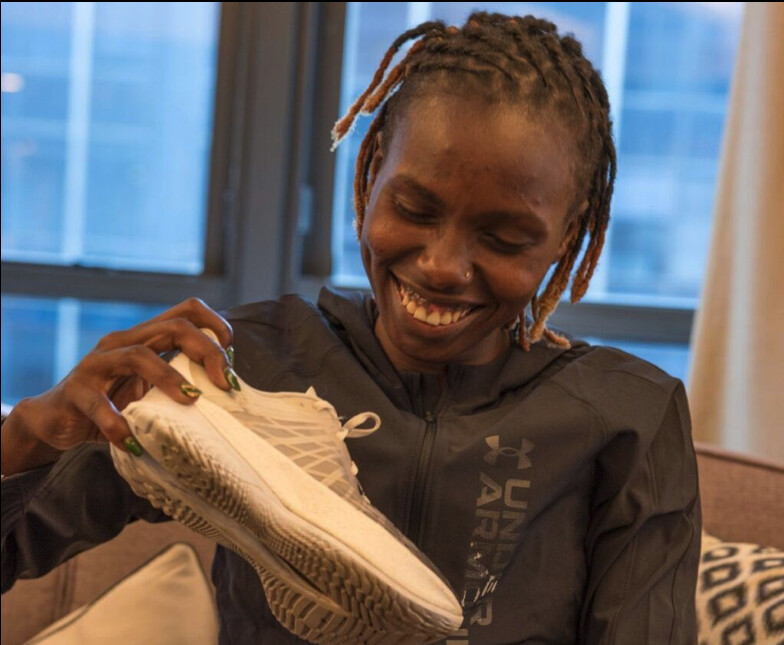
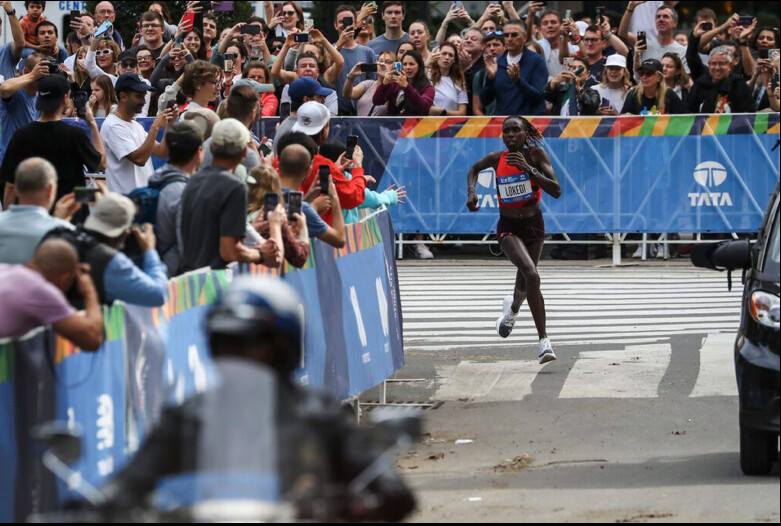
“It’s an honour to be the first Under Armour athlete to win a major marathon,” said Lokedi. “I am so grateful to be a part of a brand that builds and supports their athletes to be the best they can be.”
She currently trains in Flagstaff, Ariz., under the direction of coach Stephen Haas and Pat Casey with the UA Misson Run Dark Sky Distance Project.In 2020, when the group was founded, Haas and Casey worked with Under Armour to build a team of athletes who could train with Lokedi. Although she has resided in the U.S. since 2014, she holds Kenyan citizenship and competed at Kenyan Olympic Trials in 2021 (finishing seventh in the 10,000m).
The new variation of the UA Flow Velociti Elite will hit the Canadian market with limited availability on UA.com in the spring of 2023.
by Running Magazine
Login to leave a comment
2022 New York City Marathon Sharon Lokedi and Evans Chebet Complete a Kenyan Sweep
In record heat for November, Kenyans dominate the New York City Marathon.
Evans Chebet was among the runners who watched as Daniel do Nascimento separated himself from the rest of the men’s field at the New York City Marathon on Sunday. Do Nascimento, a 24-year-old Brazilian who is known for being — what is the word? — assertive, was a blur as he surged into the lead, then a speck off in the distance, and then gone from view entirely.
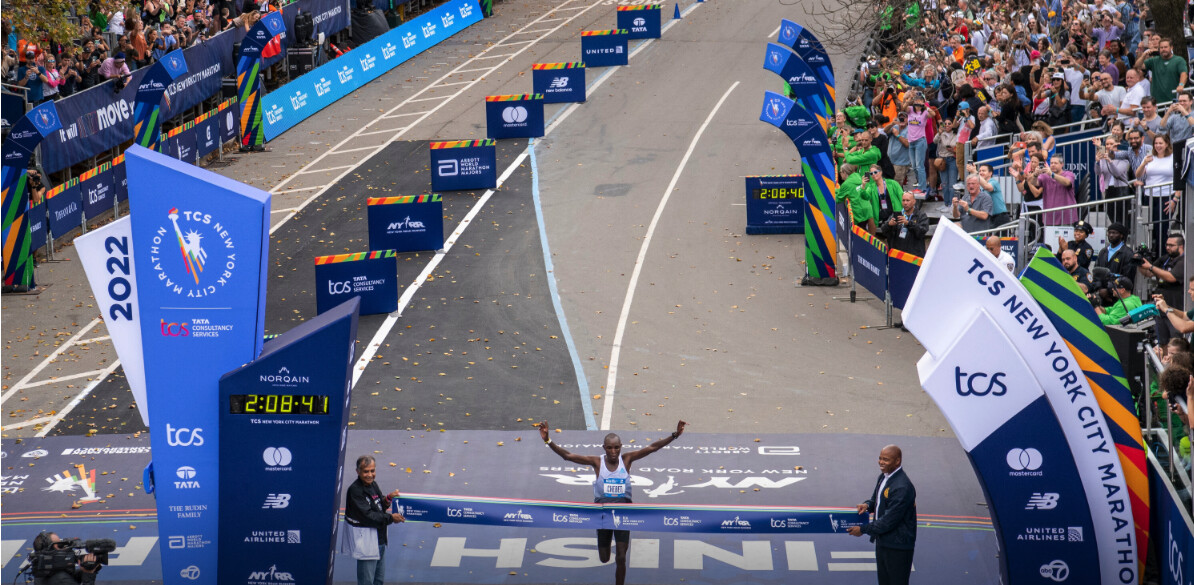
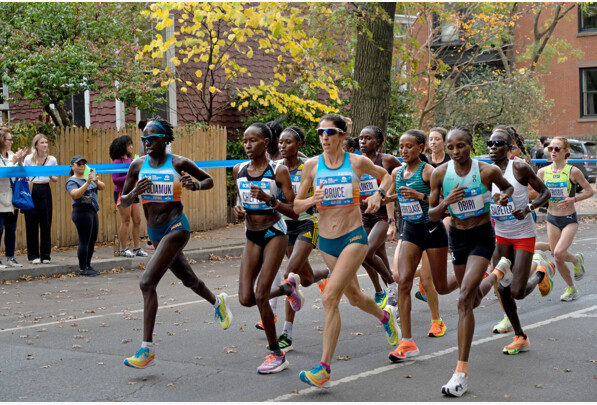
Chebet, a soft-spoken Kenyan who arrived in New York having already won the Boston Marathon this year, opted to exercise patience. Sure enough, as he approached the 21st mile of Sunday’s race, he saw do Nascimento again: face down by the side of the road, being tended to by medical personnel.
“I felt bad for him,” Chebet said in Swahili through a translator, “but I had to continue the race.”
On an unseasonably warm day, Chebet survived both the conditions and the competition, winning in 2 hours 8 minutes 41 seconds to complete a clean sweep for Kenyan men in all six of the world marathon majors this year. Chebet, 33, did his part by winning two of them — and two of the toughest. Of course, considering what Chebet had done in Boston, no one was surprised to see him tackle New York with great composure.
“Boston was actually harder,” said Chebet, who wore his laurel wreath to his news conference.
The women’s finish was much more unexpected. Sharon Lokedi, a Kenyan who raced in college at Kansas, was fearless in her marathon debut, breaking free from a celebrated field to win in 2:23:23.“Perfect weather for me,” said Lokedi, 28, who splits her time between Kenya and Flagstaff, Ariz., where she trains with the Under Armour-sponsored Dark Sky Distance group. “I didn’t expect to win. I expected to run well. But it ended up being a good outcome.”
Lokedi left an all-star cast in her wake. Lonah Chemtai Salpeter, a Kenyan-born Israeli who arrived in New York with the fastest time in the field, finished second. Gotytom Gebreslase of Ethiopia, the reigning world champion, was third. Edna Kiplagat of Kenya, who, at 42, is one of the world’s most decorated marathoners, was fourth. And Viola Cheptoo of Kenya, last year’s runner-up, was fifth.
“It was hot, but I was really prepared,” said Lokedi, who was the N.C.A.A. champion in the 10,000 meters in 2018. “I picked up water at every station to pour on myself.”Do Nascimento, who set a South American record when he finished third in the Seoul Marathon this year in 2:04:51, was the story in New York for much of the morning — until it all began to go poorly for him. Easily recognizable in his lavender tights and space-age sunglasses, he built a two-minute lead more than halfway through the race. But others in the field had seen him try that sort of bold strategy before.In brutal conditions at the Tokyo Olympics last year, do Nascimento was among the leaders when he collapsed in scenes that were vaguely horrifying and was forced to withdraw.
On Sunday, his superhuman pace was beginning to slow when he pulled off the course for an 18-second pit stop at a portable toilet. He emerged with his lead intact, albeit narrower, but it was clear that he was in trouble. About six miles short of the finish, he sank to the pavement and was forced to abandon the race.
“I want to feel sorry for him when I saw him on the ground,” said Abdi Nageeye of the Netherlands, who finished third. “But I was like, ‘Come on, man, this is the second time. You did that in the Olympics.’ ”
A spokesman for the marathon said do Nascimento was recovering at his hotel.
It was not an easy day for anyone. Galen Rupp, a two-time Olympic medalist who was making his long-awaited New York debut, dropped out about 18 miles into the race with a hip injury. And Shura Kitata of Ethiopia, who finished second behind Chebet, lumbered onto the stage for his news conference as if his legs were made of concrete. A race official handed Kitata a giant bag of ice, which he placed on his thighs.“It was very hot,” he said through a translator, “and that made it very tough.”
It was the warmest marathon on record since the race was moved to its traditional early November date in 1986. The temperature in Central Park was 73 degrees Fahrenheit at 11 a.m., shortly before the elite runners began to cross the finish line.
Scott Fauble, 31, was the top American on the men’s side, finishing ninth — a solid result coming the morning after he signed a new sponsorship deal with Nike. Fauble, who was also the top American finisher at the Boston Marathon this year, had been without a sponsor for months.
After agreeing to terms on a contract at dinner on Saturday night, Fauble took an Uber to the Nike store in Manhattan to pick up sneakers. The rest of his racing gear arrived at his hotel later that night.
“It’s quite a rush to get your singlet for the next day at 10 p.m. the night before the race,” he said.
On the women’s side, three Americans finished in the top 10. Aliphine Tuliamuk was seventh, Emma Bates was eighth and Nell Rojas was 10th. Tuliamuk, 33, who won the marathon at the U.S. Olympic trials in 2020 and gave birth to her daughter, Zoe, in January 2021, had not raced in a marathon since she injured herself at the Tokyo Games last year. On Sunday, she finished in a personal-best time of 2:26:18.
“I think that I excel when the conditions are not perfect,” Tuliamuk said. “I rise to the occasion, and I believe that today that was the case.”
Still, she had to overcome some adversity. In early September, she said, she experienced swelling in one of her ankles that forced her to take a couple of weeks off from training.
“In the back of my mind, I wished that I had a few more weeks” to train, she said. “But I also decided to focus on gratitude because I didn’t know that I was going to be here. And the fact that I was able to put in some solid training and had a chance to be competitive, I was just very grateful for that.”Gina Gregorio always watches the race from the corner of Warren Street and Fourth Avenue. This year she held signs that read, “Run to the Polls.”
“I love it when we’re right before the election because we can actually ask people to get out to vote, and it’s like nonpartisan, although I have had partisan signs before because I feel like it’s a great place to have your voice heard,” Gregorio said.
Login to leave a comment
TCS New York City Marathon
The first New York City Marathon, organized in 1970 by Fred Lebow and Vince Chiappetta, was held entirely in Central Park. Of 127 entrants, only 55 men finished; the sole female entrant dropped out due to illness. Winners were given inexpensive wristwatches and recycled baseball and bowling trophies. The entry fee was $1 and the total event budget...
more...Can a Pair of Running Shorts Be Worth $200?
If within your first minute on the Satisfy product page you don’t do take a second look at the prices, kudos. You’re a less judgmental (or far wealthier) person than me.
“Who are these people?!” was my main thought the first few times I surveyed the site. My question was two-fold. First, who are the people paying $236 for a pair of trail shorts, or $215 for a tie dye short-sleeve shirt, or $322 for a pair of tights, or $65 for a bandana, or…you get the idea. Second, who are the people making this 70s-fonts-meet-space-age-fabrics gear splattered with phrases like “running cult member” and “run away?”
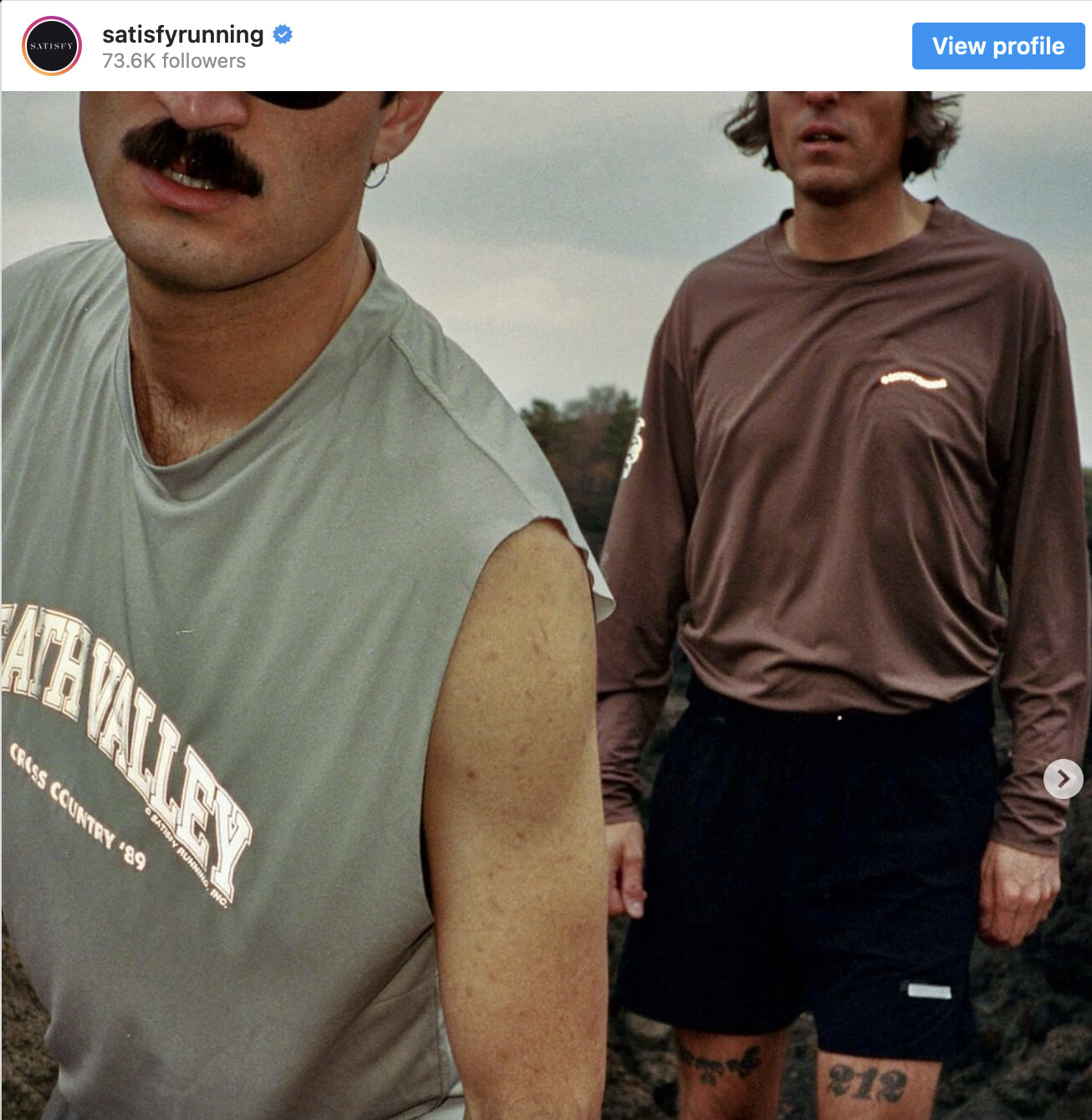
“I’m not obsessed with fashion,” Partouche says. “I’m obsessed with great products with a function.” Design, he says, “is always about solving problems—I want to run in the desert, I want to run in the mountains, what do I need? So we start with that story and we develop the product around the story.” Then, he continues, “we add cultural value, references that create a connection with the product, like a print, a tie dye, hand feel. It’s a balance of functionality and design. I like this image of a mix table, trying to push both knobs to the max without exploding the speaker. It’s a very romantic approach.” Indeed it is: “I want to squeeze in a few miles around the neighborhood before work” doesn’t strike quite the same chord.
Partouche’s vision of “cultural value” is both quite precise and hard to capture in a few words.
“My perception was not the spandex runner, it was running in the [19]60s, 70s,” he says. “No one else was really embracing this style of look and running. For me, running is like skateboarding. It’s a sport for rebels. I like this idea of bringing back running to its core values.”
Visually, think short shorts, bandanas, retro graphics, and occasional purposefully distressed tops. The latter come via Satisfy’s MothTech process, which incorporates small holes for ventilation. (Runner’s World did a collaboration with Satisfy last fall that incorporated a 70s-era version of the magazine’s name on MothTech tops.) A boxy, cold-weather top with elbow patches and a slight turtleneck I tested is unlikely to be mistaken for, say, Under Armour apparel. (My wife calls it my cosmonaut top.) Tops and bottoms come with the care tag on the outside of the garment, to eliminate the possibility of chafing. The tags can be detached, leaving a thin remainder strip visible on the front.
I shared the Satisfy site with a running friend who has taught design. They responded with a list of phrases like “if running clothes were a trucker hat” and “engineered authenticity.” They also wrote, “This branding strikes me as a winking parody of indifference, offering a uniform anyone can purchase that’s designed to look like you give no shits about fashion when training and you are a serious macho runner like the runners back in the day—but a big dumb logo patch that signals to your peers in the know that this is actually a running lifestyle brand.”
About those prices
Partouche says Satisfy’s potentially eye-popping prices can be explained by the company’s approach to fabrics and production. The brand’s technical fabrics might cost 20 euros per meter. “You can find some big brand shorts for [this price],” he says. “This is only for us the price of the fabric,” which he claims can be 20 times more expensive per meter than what’s used to make Nike shorts. “That’s why you can’t compare—it’s just not the same product,” Partouche says. When it doesn’t use technical fabrics, Satisfy uses natural ones such as merino wool and organic cotton, and recycled fabrics.
Gear made of fabrics sourced in Europe are also produced in Europe. “Seventy to 80 percent of our products are produced in Portugal, under very fair [labor] conditions,” Partouche says. “That’s one big difference.” The merino that Satisfy uses is woven in Japan, and then the gear is produced there to lessen its environmental impact.
Partouche says the brand’s approach to product lines is also inspired by good environmental practices. There’s an evergreen line that’s always in stock, and there are occasional drops, produced in limited quantities (about 20 percent of a typical evergreen production run). “The idea here it to sell out the drops and not overproduce,” Partouche says. “We don’t have this putting-products-on-sale approach, which makes the brand more sustainable.”
I told Partouche that I and many other runners are on board with paying more for high-quality gear that’s produced ethically and sustainably, but that I saw nothing on the Satisfy site that gives context to the prices.
“This is the most challenging part now, to explain better what we do,” he responded. “We are 70 percent online. When you go to a store and touch the fabric, you can understand. On the website, if you just see a black T-shirt, it’s hard to understand.”
One runner’s reaction
I also told Partouche that the Satisfy apparel I ran in was some of the best gear I’ve encountered since taking up running in 1979. And I meant it. The cosmonaut top ($201) was warm enough as a single layer down to about 20 degrees, yet also comfortable into the mid 40s. Its boxiness easily accommodated underlayers, but I never felt constrained when doing faster runs in it. The tights ($159) I tested were even better. They, too, worked for a surprisingly large temperature range, and were just the right mix of sleekness and give.
Of course, $200 tops and $160 tights better be excellent! Are they worth that much?
That depends on what you mean by “worth.” Anyone fortunate enough to have disposable income devotes some of that money to things others never would. I can’t believe how much my sisters spend on Major League Baseball tickets and Disney vacations. They would probably scoff at what I pay for a pound of coffee beans.
To continue the coffee analogy: It’s worth it to me to spend $20 for a pound of fair trade, organic, single-origin beans rather than $10 for a blend from Dunkin’. Beans that are $30 or more per pound are a different matter. I know the beans will be even better than what I usually buy, but not that much better. Maybe I’ll buy them as a gift or vacation splurge once or twice a year.
That’s where I’ve landed on Satisfy gear. Their merino wool socks are probably the most comfortable, best-functioning socks I’ve ever run in. Still, they cost $53 a pair. I can buy a pair of Darn Tough socks—also merino, also manufactured responsibly, and with a lifetime warranty—for around $25. For me, spending twice as much to get gear that’s perhaps 12 percent better isn’t worth it. I’m also not someone who likes slogans or big brand names on his clothes.
But that’s just me. Satisfy has an incredibly devoted Instagram following, and has now been in business long enough to counter kneejerk they’ll-never-make-it predictions.
“Our approach to product design and craft is simply different from the rest, and I think that’s what makes us stand out,” Partouche says. “Today, our challenge is getting our product in people’s hands, because I’m convinced that when someone feels the textures of our fabric technologies, sees all the details that we inject into our design, they understand why we’re priced at where we are.”
I mean, I know I’m just a middle-aged guy sitting at home in Maine. But is there really a massive Venn diagram overlap of adventure runner, disposable income, and punk/chillbro/psychedelic/hippie aesthetic? Did I miss where, per the Satisfy site, the best way to explain the recovery portion of a track workout is, “really take advantage of the 60 sec rest to get SO chill until the next rep”? I decided to find out.
Executive summary: The clothes are excellent, the prices aren’t necessarily outrageous once you consider all the factors, the brand’s founder is a passionate runner with an admirable DIY streak, and running is big enough to accommodate many approaches.
But I doubt I’ll ever buy a piece of Satisfy gear.
Birth of a brand
Satisfy is inseparable from its founder, Brice Partouche. Now 45, Partouche started running in his mid-30s and was immediately hooked. “I got high when I ran,” he says. “I was lucky enough to experience this at an early stage, which is why I kept going back to it.” His love for the life-changing magic of lacing up is palpable. He says things like, “I found running in my mid-30s, or running found me” and, “This is a dream of the brand—everyone should experience the high.”
What Partouche didn’t like about running was the clothing. “Most of the brands, the products are kind of cheap,” he says. “To me, the hand feel, the touch of the fabric is important.” He was also dissatisfied with the functionality of things like key pockets and phone storage in the gear he ran in; the distractions interrupted his sense of flow.
As a teen skateboarder, Partouche started a T-shirt brand. He later dropped out of medical school and founded a denim brand. A drummer, Partouche grew up listening to and playing punk rock. “These activities have a huge cultural value attached to them,” he says. “When I jumped into running, I couldn’t find any brand that supported this idea of running alone and running away from things.” Drawing on skateboarding’s and punk’s ethos, Partouche says, “If it doesn’t exist, you just do it yourself. I wanted to create product that will allow the high. I really believe that part of this could be achieved with the product you’re wearing.”
He spent several months developing prototypes. The first sales occurred in 2016. Headquartered in Paris, Satisfy now has 17 staff members. According to Partouche, North America makes up half of his market. (“France is 1 percent of the business,” he says a little ruefully.) Sales are almost entirely online, although you can find Satisfy gear in a few U.S. running shops like Renegade Running in Oakland, California, and The Loop in Austin, Texas. Partouche calls these “contemporary, new running stores with an experience.”
by Runner’s World
Login to leave a comment
How to celebrate global running day
Global Running Day is today, June 1. And though running might be something you do several days a week, or even every day, this particular day is made for celebrating the sport we all love. It’s a great time to focus on what running does for your body, for your mind, for the community that it brings together, for the friendships made on the run. After so long spent apart, it’s time to come together and run again.
Here are a few ideas on how to give back and make the most of your miles on this special day.
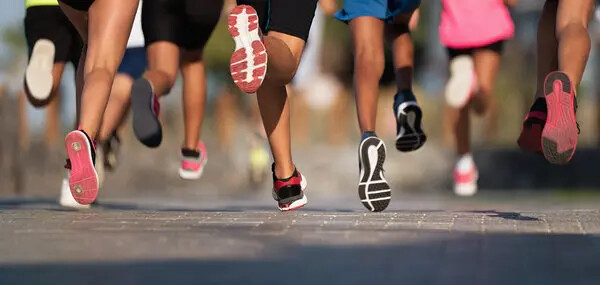
Run for Yourself
We’re totally on board with lacing up purely for the mental and physical benefits you get in return. Taking care of yourself is more than enough cause for celebration. And if you’re looking for a race medal, some kudos, or even some free swag to go with your movement, these brands have you covered.
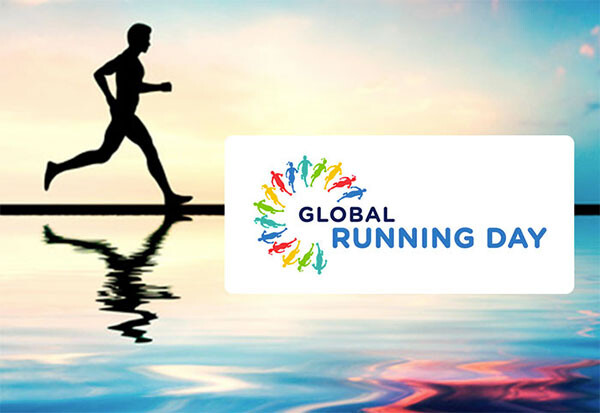
Coros Global Running Day Challenge
Endurance tech brand Coros enlisted the likes of pro marathoners Molly Seidel and Des Linden to create a special GRD 5K workout. Those who participate will be entered to win a $50 gift card to Coros. Note: You must have the Coros app to participate.
Virtual NYRR Global Running Day 5K
Run this virtual race, hosted by New York Road Runners, now through Sunday June 5. Runners are also invited to join their virtual racer Facebook group for daily inspiration and community building.
“It’s Your Run” with Brooks
Running shoe and apparel brand Brooks is encouraging everyone to get out and run no matter the distance or speed. “It doesn’t matter how far they go; it all counts, because It’s Your Run,” the brand told Women’s Running in an email. Post your run with the hashtag #ItsYourRun on Instagram and receive surprise shout-outs and “medals.”
Run for Others
If you’d like to make Global Running Day an intentional way to give to others while still getting in your miles, the following brands have some goodwill on deck for the holiday.
Under Armour All Out Mile
Under Armour is back this year encouraging runners to “go all out on Global Running Day” by attempting to run the fastest mile. Starting tomorrow through Sunday June 5, runners can attempt the mile race as many times as they want using FitRankings and Under Armour’s MapMyRun. The three fastest women and men will receive cash and gear prizes.
Runners can also compete as a team in attempt to nab the most participants. The teams in America, Europe, Asia, and South Asia with the most mile runners will receive $10,000 donated to a charity of their choice.
Run For the Oceans With Adidas
Going on now through Wednesday, June 8, Adidas has pledged to clean up the ocean in exchange for your sweat. For every 10 minutes run, the brand will remove one plastic bottle from the ocean (or the equivalent in weight). Download the Adidas Running app to track your miles.
Dick’s Sporting Goods Global Running Day Challenge
If you’re also in the market for some new gear, Dick’s Sporting Goods has teamed up with Run to Change Lives to donate to SportsMatter, a Dick’s Sporting Goods Foundation initiative that aims to raise awareness around the youth sports funding crisis.
How this GRD campaign works: Post your running selfie to the RUN to Change Lives Facebook group on June 1 using the hashtag #GlobalRunningDay. Print out your Dick’s Sporting Goods coupon given upon registration. When you shop at DSG using the coupon, Run to Change Lives will donate $5 to SportsMatter.
Global Running Day With Ventures Endurance
Event company Ventures Endurance is supporting Shoes That Fit, a national organization that helps kids get shoes. On Global Running Day, a $10 registration means $5 will go to Shoes That Fit. In return, runners will receive a $15 voucher toward a Ventures Endurance Race.
by Women´s Running
Login to leave a comment
Global Running Day
What is Global Running Day? Global Running Day is a worldwide celebration of running that encourages everyone to get moving. It doesn’t matter how fast you run or how far you go—what’s important is that you take part, and how you do it is up to you. Run a lap around your block, take your dog for a long walk,...
more...The 16th edition of Ras Al-Khaimah Half Marathon announced for February 2023
The Ras Al-Khaimah Tourism Development Authority announced that the 16th edition of the Ras Al-Khaimah Half Marathon will take place on Saturday, Feb. 18, 2023, with leading sportswear brand Under Armour named as the new technical partner.
Al-Marjan Island will again host the world’s fastest half marathon, which will see some of the best long-distance athletes, running enthusiasts and amateurs from across the globe compete in one of the key sporting events on the UAE calendar. Registration for next year’s race is now open.
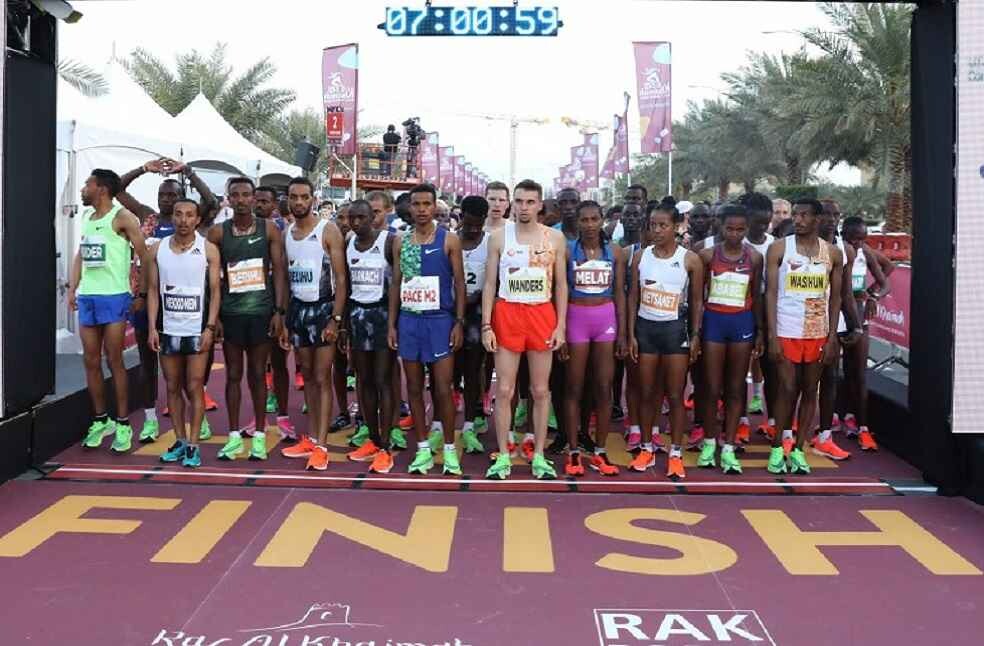
Iyad Rasbey, executive director, Destination Tourism Development & MICE at RAKTDA, said: “We are thrilled to announce the 16th edition of the world’s fastest half marathon to our nature emirate. The Ras Al-Khaimah Half Marathon has gone from strength to strength with each passing year and I am confident that the 2023 edition of the race will be no different.
“The standard of high-level performances along with the number of records broken that we witnessed in February truly demonstrates how popular the Ras Al-Khaimah Half Marathon is, attracting some of the world’s best elite runners and participants from across the world as well as the local community,” he added.
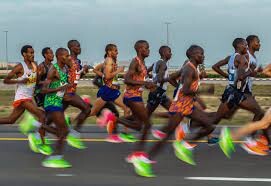
RAKTDA also announced that Under Armour will sponsor the half marathon as technical partner. The sports brand will provide all participants with its latest, top-of-line apparel to help ensure comfort while improving performance as runners take to the fast and flat course track.
“We are incredibly proud and excited to partner with the Ras Al-Khaimah Tourism Development Authority and the RCS Sports & Events organization for what is one of the world’s leading running events,” said Lee Devon, vice president of Under Armour. “At Under Armour, it is our mission to make all athletes better and we do this through the lens of great product, innovation and by providing opportunities for all athletes to take part in sport. We recently opened our first store in Ras Al-Khaimah. This and our other stores across the emirates will become hubs for all athletes as they prepare for this event.”
The announcement comes only a few months after world half marathon record holder Jacob Kiplimo of Uganda (57:56) and Ethiopia’s Girmawit Gebrzihair (1:04:14) set new course records in the men’s and women’s elite categories respectively. Their triumphs were among the highlights of the Ras Al-Khaimah Half Marathon, which saw a number of new records being set on the day, as well as some impressive performances and times across the categories.
As well as Kiplimo producing a 15-km world best time of 40:43 on his way to victory, the event also featured a new British record by Eilish McColgan. In just her second competitive half marathon, she smashed Paula Radcliffe’s British 21-year-old half marathon record, clocking an incredible total time of 1:06:26.
Login to leave a comment
Rak Half Marathon
The Rak Al Khaimah Half Marathon is the 'world's fastest half marathon' because if you take the top 10 fastest times recorded in RAK for men (and the same for women) and find the average (for each) and then do the same with the top ten fastest recorded times across all races (you can reference the IAAF for this), the...
more...Why training doesn’t stop after your run
Under Armour’s approach to training is different from its competitors. The company believes that performance doesn’t just come from training, it comes from a holistic approach to running which includes considering emotional, psychological, physiological and nutritional strategies. They call this approach 360 Performance – it means that running doesn’t stop when your watch does and highlights the ways in which training really is all-encompassing. This approach to running may seem daunting, but actually, it’s geared towards balance.
For Aisha Praught-Leer, a UA athlete and 1,500m Olympian, 360 Performance is how she lives her life. “Showing up on race day is such a small part of my existence. Everything else, the getting there, happens in the quiet moments.”
Georgia Ellenwood, Ashley Taylor, Patrick Casey and Aisha Praught-Leer are all professional UA athletes. However, when they talk about 360 performance, they talk about things beyond the nuts and bolts of training. To them, 360 means taking care of your entire being and improving yourself in every way.
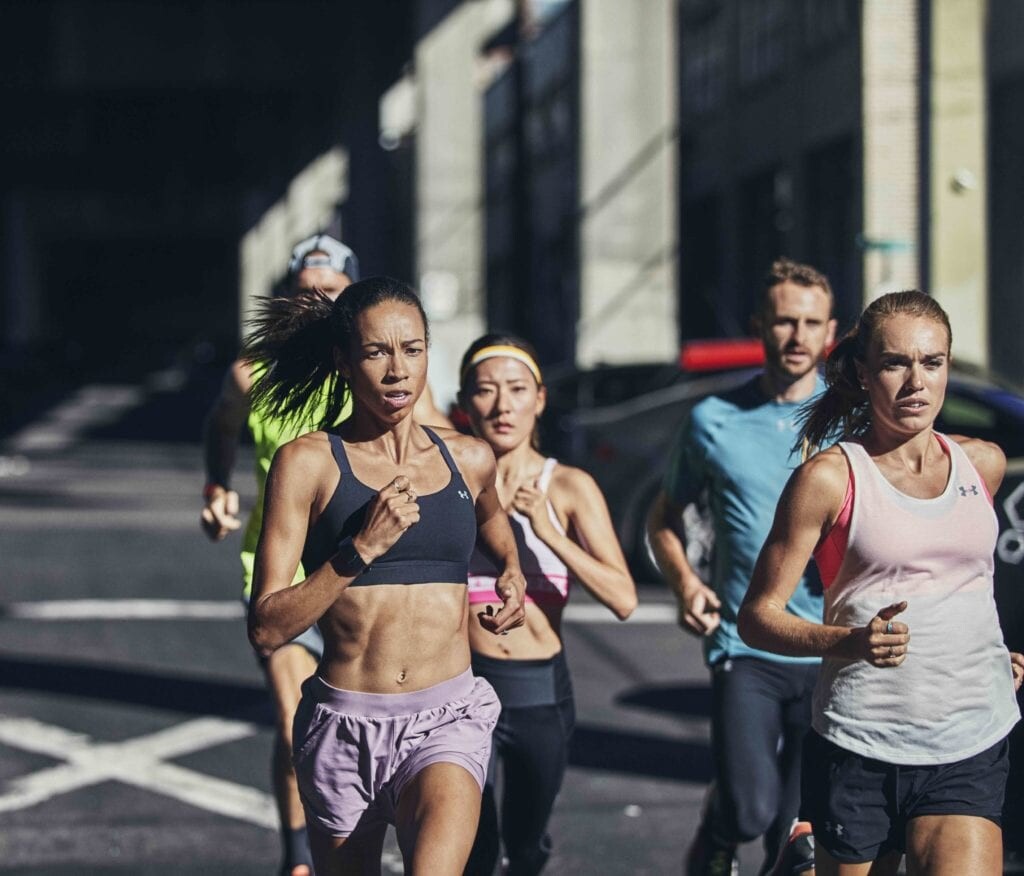
Michael Watts, Under Armour’s Director of Global Athlete Performance, feels that 360 Performance is what sets UA apart. “Every minute and every hour matters in the life of an athlete, if they are not training or competing then they are in a perpetual state of recovery. How they optimize their recovery depends on their own circumstances and journey. We want athletes to become more knowledgeable about themselves and how best to optimize their performance based on their data. Why does it matter? Because the best athletes in the world sweat the details, they are on a constant journey to master their mind, body and craft. We just help guide them.”
Believe in yourself
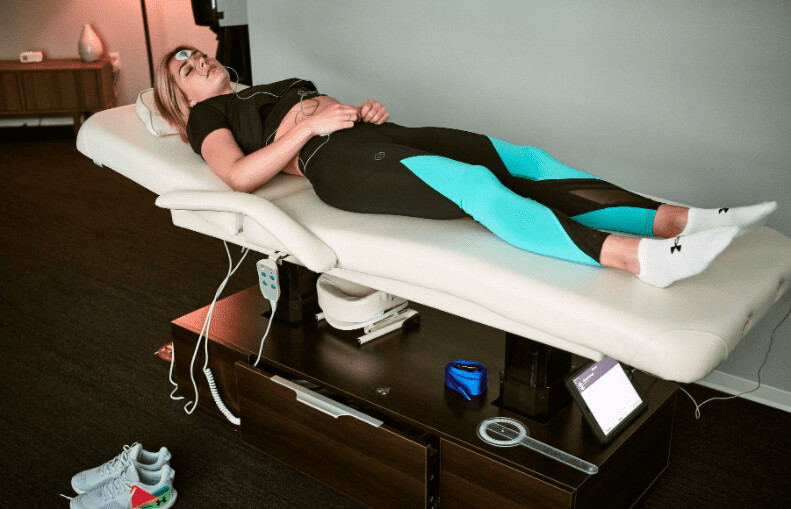
Ellenwood, a Canadian heptathlete, saw a difference in her results when she began to believe in herself. She says 360 Performance means so much more than training – it means emotional, psychological and physiological harmony. Under Armour helped her find this. “I’m a real perfectionist,” Ellenwood says. “I used to be so worried about taking risks in practice, because I didn’t want to look dumb or to fail. But I think sometimes you need to hit a hurdle hard or you need to fall. Do the ugly stuff in training.” Ellenwood says she’s made way more progress after allowing herself to make mistakes and becoming process-oriented, as opposed to obsessing over results.
When it comes to practically preparing for her day, Ellenwood needs to get her body physically and mentally prepared. “Before I even leave the house I do pre-hab, so that means getting my feet ready, I warm up my legs with a heat pack, I have an hour of exercises before I even start practice.”
From there, Ellenwood will train for six to eight hours. In order to maintain that level of activity, she says she takes comfort in her routine and allows rest when needed. “Running is my full-time job and I love it, but sometimes it becomes a lot. If I need to stop for a moment if I’m becoming overwhelmed by the load, I let myself. I’ve learned that stepping away from the track for a minute, to regroup, is ok.”
Be patient
Taylor, a Canadian 800m runner, echoes this statement. She says that she, too, used to place a big emphasis on results, but she feels supported by an organization that sees her as more than a runner. “UA gives us a lot of sport-specific support. But they support us beyond that. They help remind me to love myself through the process and to be patient.” With her goals for 2020 entirely changed, patience has been key.
Casey might be the most patient of the four UA athletes. The American miler has been looking forward to the 2020 Olympic Trials for nearly eight years. After being sidelined due to injury in 2016, he had his sights firmly set on qualifying this July. However, like everyone else, Casey’s plans have changed. He said he’s coping quite well with the new training, and feels like he’ll be ready when the time comes to line up again. “I used to think of running as the two or three hours I’d actually be training everyday. Now I think of it as what I’m doing when I’m not running. How I’m recovering, how I’m preparing myself – because you can only do so much physically in a day.”
It’s a lifestyle
All of the athletes feel that thinking about training in this new way, as a lifestyle as opposed to one aspect of their day, has made them better runners. Aisha Praught-Leer, a 1,500m runner and Olympian, feels like she places more of an emphasis on overall happiness now, which has in turn, made her a better runner.
“Showing up on race day and running a fast time is just a miniscule part of my existence. That’s just the tip of the iceberg. Training is how I’m sleeping, how I’m eating and how I’m keeping myself happy as a person.” Praught-Leer says while she’s a social person at practice, she’s an introvert at heart. For her, she unwinds with a solo run or a self-care routine that she’s perfected. While painting her nails doesn’t seem like training, it helps her unwind. She feels like the better she’s feeling about her life overall, the faster she will run. “My job is high pressure, so it’s imperative to take care of the below-the-surface stuff, to be able to run fast times on race day.”
Praught-Leer has learned that taking care of the below-the-surface stuff needs to be a priority. “Like Under Armour encourages, I really take a holistic approach to my training. It’s not my couple hours a day when I’m training. It’s how I recover, it’s how I’m sleeping, how I’m eating, how I’m hydrating and how I’m keeping myself happy and sane and motivated.”
360 Performance isn’t just about running – it’s actually about everything else outside of training that allows you to enjoy your sport. For the athletes above, running is their job, and they still ensure they’re loving what they do. If running is your leisure activity, enjoyment is even more important. A happy runner is a fast runner, and that’s what Under Armour wants to see in those they support.
by Madeleine Kelly
Login to leave a comment
The easiest gifts for runners this Christmas
If there is a runner in your family who hasn’t sent you their Christmas list yet, don’t worry, we have you covered. You shouldn’t stress about buying Christmas gifts for runners, as they are the easiest demographic to shop for. Here are a few ideas.
Stance performance socks
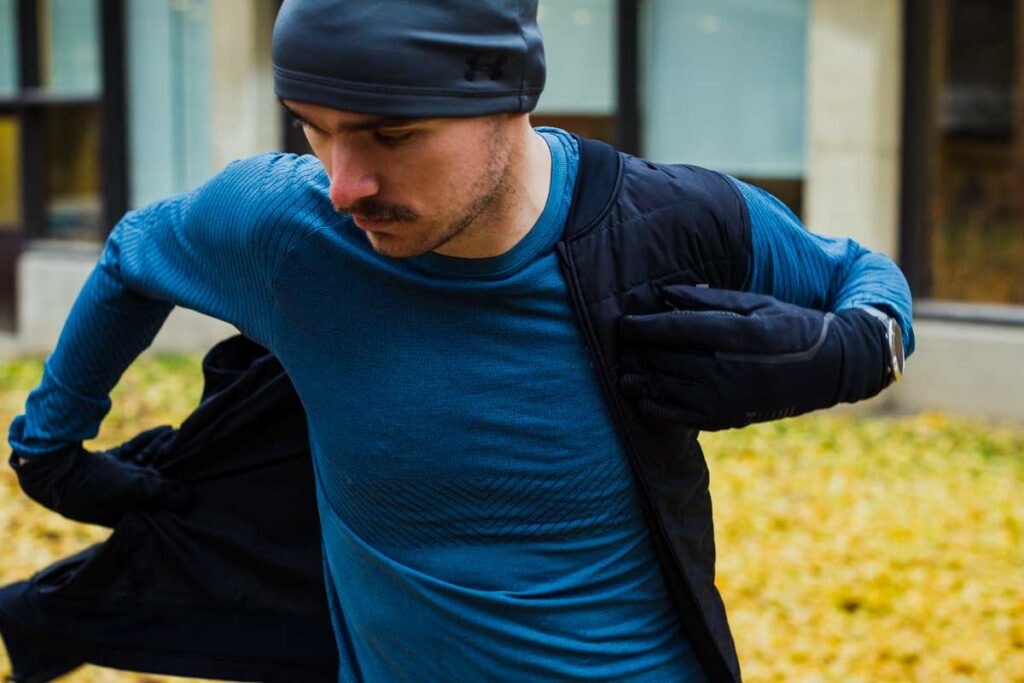
Runners can never have too many pairs of socks. Stance socks are made of a performance polyester called ‘FEEL360,’ a sewn fibre that reacts to your body’s temperature for high-performance comfort. They also feature moisture-wicking technologies guaranteed to keep you feeling fresh and dry in the summer heat and warm in the winter. A bonus is that these socks can be purchased in unique colours and designs, such as, Wu-Tang Clan, Forrest Gump and Bob Marley styles. Stance socks range from $25 to $45 per pair and can be purchased online at MEC.
A nice pair of running gloves
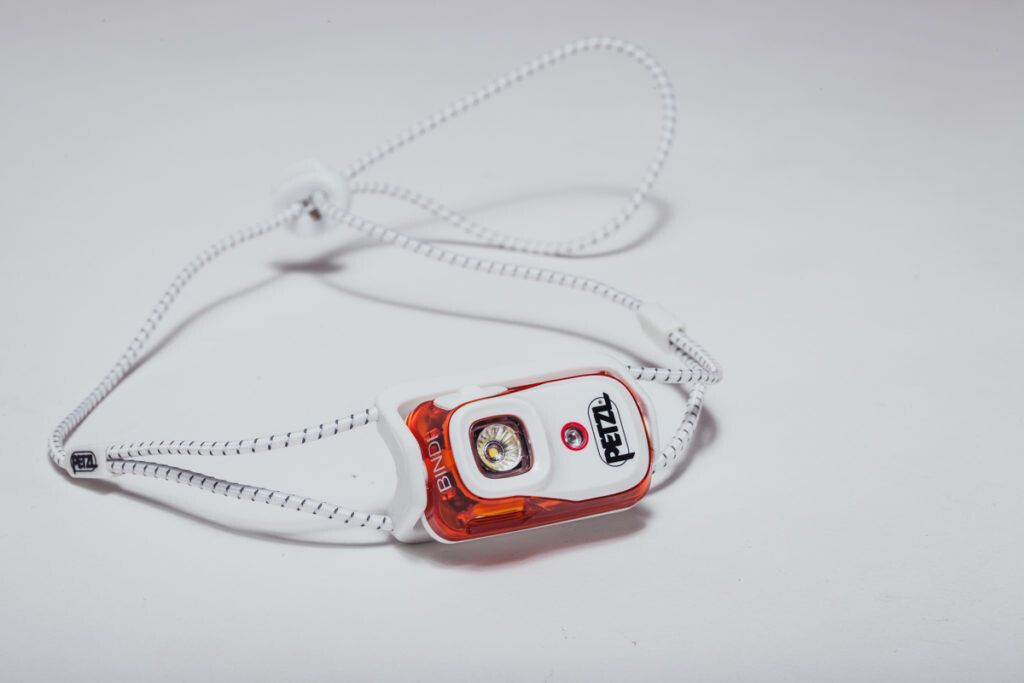
A runner truly appreciates a nice pair of running gloves to get them through the winter. The run liner gloves from Under Armour are a great base layer for your hands. They’re form-fitting, light and stretchy, with the right warmth when temperatures are below zero. These gloves have water and wind-resistant panelling on the front and a plush interior for the right amount of warmth. They’re also touchscreen-friendly, allowing you to use your phone without having to take your gloves off.
Smartwool merino men’s sport boxer brief
Men, it’s time to upgrade your running underwear this Christmas. These performance-style briefs are designed to help you operate in comfort regardless of the conditions. They feature a double front panelling designed to provide extra support down low, and sewn with a flatlock seam to eliminate chafing. These briefs are made to help keep you cool and dry while you’re out for a long winter run. Smartwool boxer briefs can be purchased online at MEC.
Petzl Bindi headlamp (200 lumens)
Light up the night sky with the Bindi headlamp from Petzl. This headlamp is ultra-compact and ideal for training in everyday urban environments. The headlamp has a range of 40 metres and is convenient to charge via a micro USB port. The Bindi headlamp is minimalist, yet functional, combining style and performance. The headlamp retails at MEC for $59.95.
Hydration is important all year for runners. They need an electrolyte mix to replace the nutrients lost in sweat during exercise. Skratch sports mix has a light, easy-drinking taste. The Skratch powder is non-GMO, non-dairy and gluten-free, so it will be easy on the stomach during or after a run. You can purchase Skratch online or at your local independent running retailer or MEC, prices ranging from $19.99 to $69.99
by Marley Dickinson
Login to leave a comment
Austin Marathon, Ascension Seton Agree to Title Sponsor Extension
The Austin Marathon and Ascension Seton have agreed to a long-term title sponsor extension. The agreement will allow the collaboration to continue to grow, further benefiting the fitness community. In addition to growing secondary community events and expanding content creation opportunities, Ascension Seton will remain the Official Medical Provider. Since 2019, the collaboration has helped others establish healthier lifestyles, prevent avoidable injuries, and provide services for injured athletes to recover. The 30th annual Ascension Seton Austin Marathon presented by Under Armour, owned and produced by High Five Events, will take place on February 20, 2022.
“Ascension Seton is excited to establish a long-term collaboration with the High Five Events team in support of the Ascension Seton Austin Marathon,” said Adam Bauman, Vice President of Orthopedics, Sports and Rehabilitation Services for Ascension Texas. “Over the past three years, our collaboration has helped encourage people to remain active in a way none of us anticipated due to the COVID pandemic. Ascension Seton remains committed to supporting our community and partners to ensure the Austin Marathon and other related events are sustainable well into the future.”
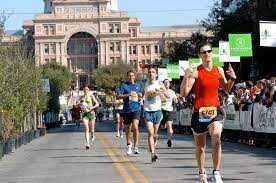
As the Official Medical Provider, Ascension Seton doctors and nurses will staff the finish line medical tent and work with Travis County EMS on course. During race weekend, Team Ascension Seton will participate in all events, volunteer their time, and have a major presence at the Health and Fitness Expo. Outside of race weekend, they’ll continue to positively impact the local fitness community, providing knowledge and insight curated by Ascension Seton Sports Performance’s Dr. Jakob Allen.
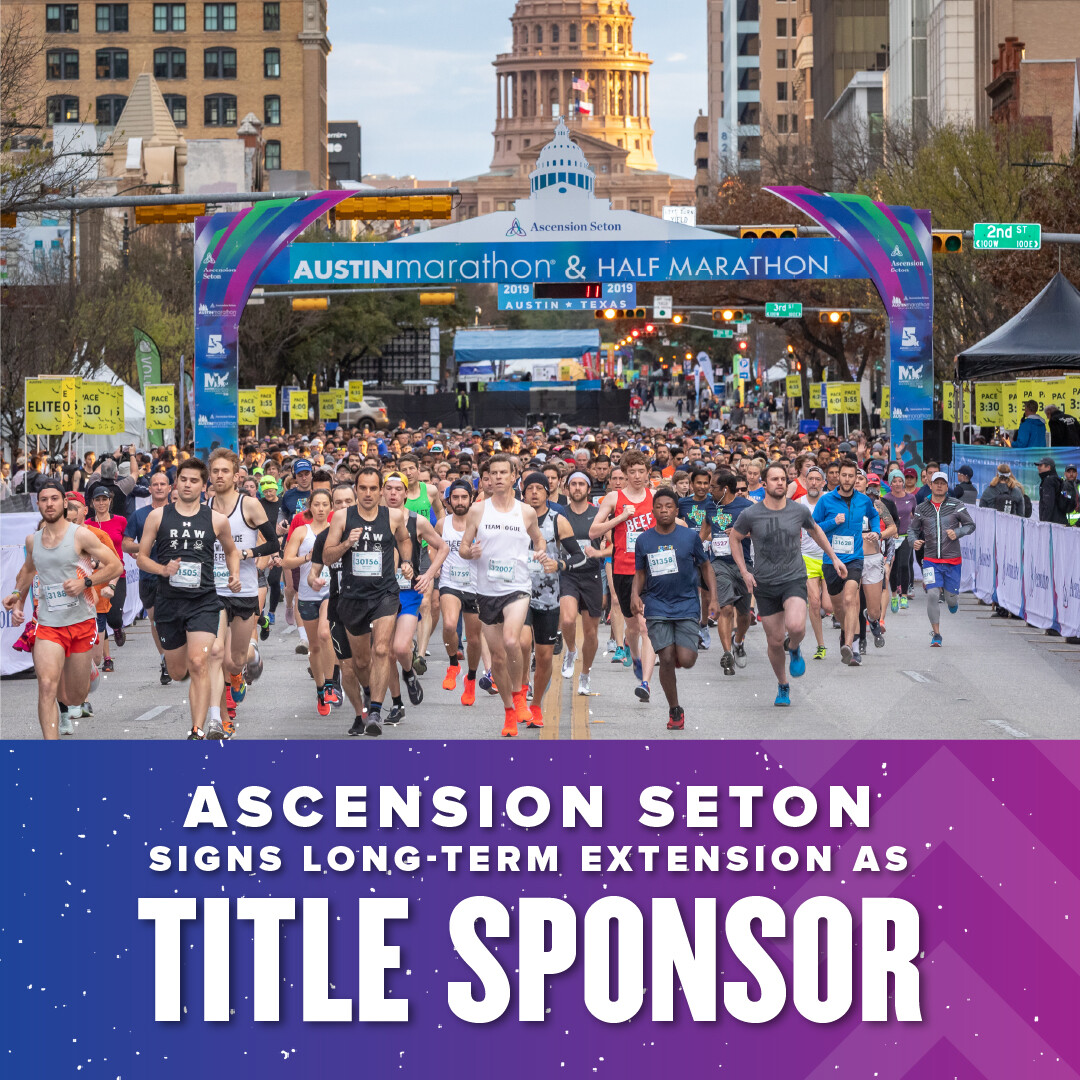
“Our collaboration with Ascension Seton has grown over the years and significantly benefited the fitness community,” said Jack Murray, co-owner of High Five Events. “With this extension we expect that trajectory to grow for the foreseeable future as we come up with new ideas and build new opportunities.”
The Austin Marathon will celebrate its 30th year running in the capital of Texas in 2022. Austin’s flagship running event annually attracts runners from all 50 states and 35+ countries around the world. The start and finish locations are just a few blocks apart and within walking distance of many downtown hotels and restaurants. The finish line is in front of the picturesque Texas State Capitol. The Austin Marathon is the perfect running weekend destination. Registration is currently open. The next price increase is scheduled for Tuesday, November 30th.
About High Five Events: Beginning with the launch of a single triathlon in 2003, High Five Events has grown to become one of the largest privately owned event production companies in the United States. High Five Events is a community-centric company based in Austin, Texas.
by Running USA
Login to leave a comment
Austin Marathon Weekend
The premier running event in the City of Austin annually attracts runners from all 50 states and 20+ countries around the world. With a downtown finish and within proximity of many downtown hotels and restaurants, the Austin Marathon is the perfect running weekend destination. Come run the roads of The Live Music Capital of the World where there's live music...
more...2022 Austin Marathon Will Offer Free, Personalized Finisher Video For All Participants
The 30th annual Ascension Seton Austin Marathon presented by Under Armour will provide a free, personalized finish line video for all participants who cross the finish line on February 20, 2022. This video, valued at $19, is just the beginning of numerous amazing perks being put together to commemorate the anniversary. The commemorative video will be produced by FinisherPix. It’ll include finishers crossing the finish line and commemorative 30th-anniversary designs and footage.
“Runners are ready to create new memories on the streets of Austin and this free video will be a keepsake they’ll be proud to share,” said Stacy Keese, co-owner of High Five Events. “We’re excitedly preparing to celebrate our 30th year of running Austin and building this event into one of the top experiences in the world!”
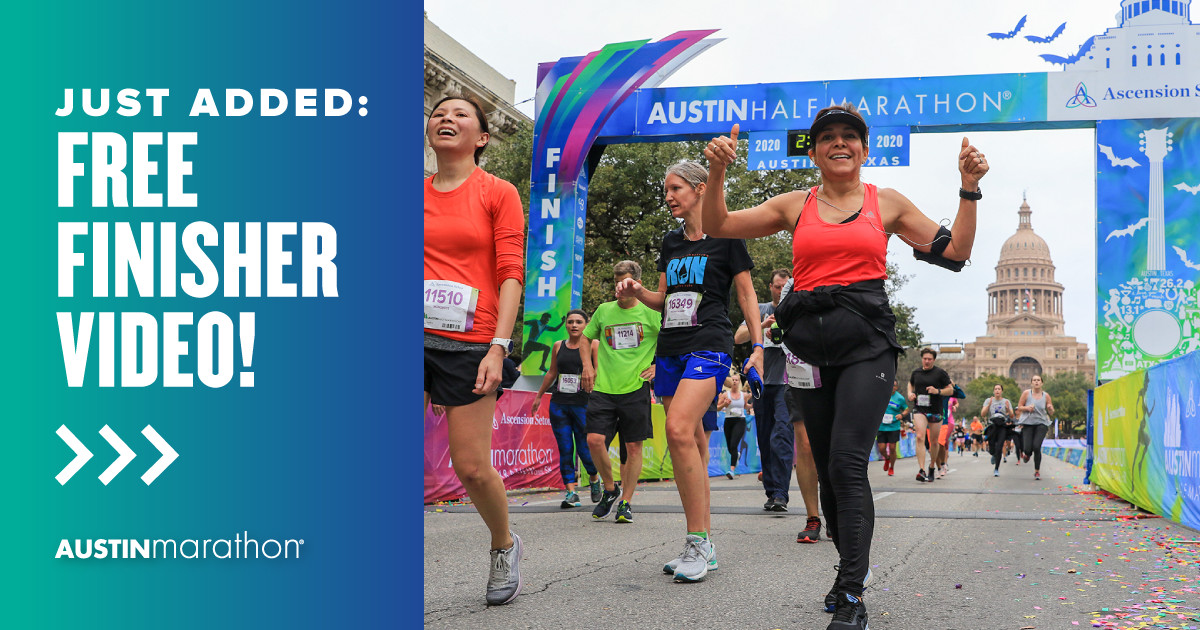
The marathon distance will return for the 2022 Austin Marathon, owned and produced by High Five Events. It was not part of the rescheduled 2021 event based on the COVID-19 Mitigation Plan that allowed running to return to Austin earlier this year. Plans are also underway to bring back many elements that make the Austin Marathon one of the top event experiences in the world. This includes the full expo, expanded beer garden, live music at the finish line, and 3-block-long finish line festival.
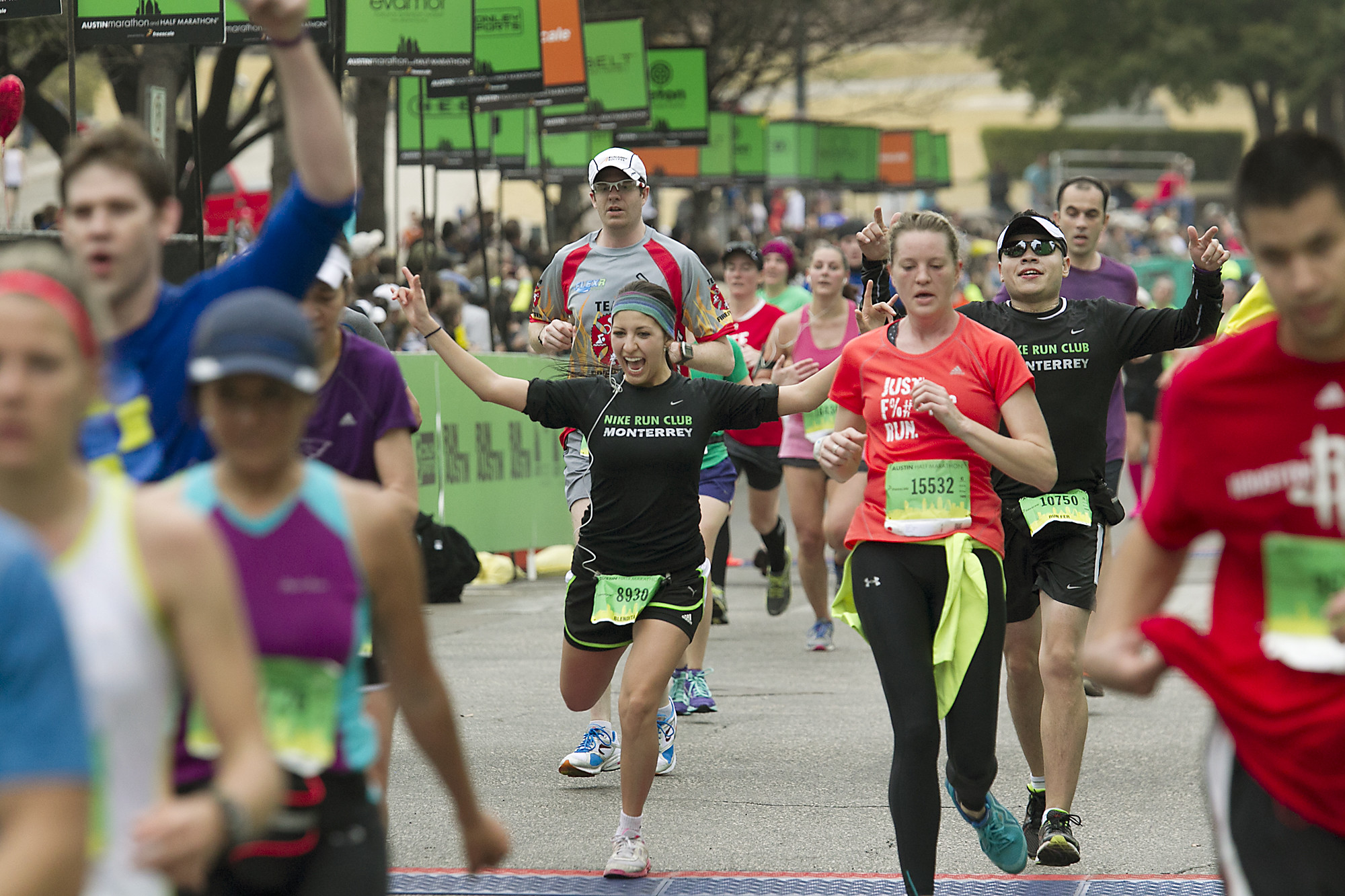
“Austin Marathon is a beloved and well-known event that regularly provides a memorable experience for runners from all over the world,” said Robbie Little, Vice President, Event Services at Outside. “We’re excited to produce this video that we know will be seen by friends and family around the world.”
Austin’s flagship running event annually attracts runners from all 50 states and 35+ countries around the world. The start and finish locations are just a few blocks apart. They are within walking distance of many downtown hotels and restaurants. The finish line is in front of the picturesque Texas State Capitol.
The Austin Marathon is the perfect running weekend destination. Pricing is currently $129 for the marathon, $109 for the half marathon, and $59 for the KXAN Simple Health 5K. Additional FinisherPix photo packages can be purchased at a discounted rate during the registration process.
by Running USA
Login to leave a comment
Austin Marathon Weekend
The premier running event in the City of Austin annually attracts runners from all 50 states and 20+ countries around the world. With a downtown finish and within proximity of many downtown hotels and restaurants, the Austin Marathon is the perfect running weekend destination. Come run the roads of The Live Music Capital of the World where there's live music...
more...How Visualizing Can Supercharge Your Running
Techniques to see success and overcome obstacles in your next race
When it comes to running, the mental game is as important as the physical game. “You can have the best training and coaching in the world, but if you don’t get your mind in the right place, it’s tough to get results,” says Under Armour’s performance coach Tom Brumlik. The pros understand this, of course, and use visualization techniques to push through difficult moments. Here’s how to take a page from their book.
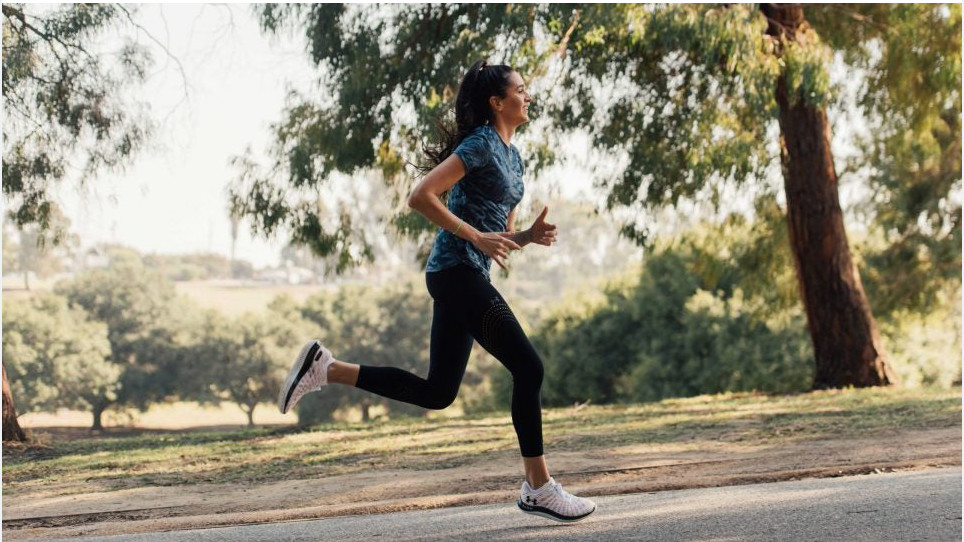
Start Practicing
Just as you train your body if you want to get fast, you must train your mind if you want to get skilled at visualization—creating a mental image of a future scenario and watching it play out as realistically as possible. “It helps to realize it takes time to develop,” says Brumlik. “The most important elements are consistent repetition and following up visualization with action.”
“If you are thinking daily about running the Boston Marathon before you have qualified, or even started the training needed to qualify, it won’t matter how well you can visualize the course,” cautions Brumlik. “That is daydreaming.” Instead, he says, focus more clearly on the actual task at hand, visualizing yourself doing it, and repeat many times over.
Olympian Joanna Zeiger, author of The Champion Mindset, adds “As with anything new, it takes practice. Start using visualization techniques long before you race.”
You Don’t Need to Follow Specific Rules
While there are certain approaches to visualization that will help, it’s not a one-size-fits-all method, says Zeiger. “The only thing that’s important is that you do it,” she says. Where you visualize isn’t important either—do it while in the midst of a hard workout or at home in a quiet, comfortable spot. For instance, “If you visualize your long run the next morning while you lie in bed the night before, that can be effective because you’ll be putting it into practice in the near future,” says Brumlik.
Experiment with What Works Best
When it comes to visualizing, athletes usually choose one of two paths: internal or external. Either is fine, but you need to figure out which works best for you. Internal visualization might look like practicing a certain aspect of running. Say you’ve been wanting to increase your cadence. “Picture driving your foot down underneath you, not throwing it out front and overstriding,” says Brumlik. External visualization is what most runners think of when they think of the practice. Imagine yourself on a racecourse with your competitors, leading the way. Or picture a particularly rough spot in training and running effortlessly through it. “I also recommend visualizing things going wrong,” says Zeiger, “so that the athlete can practice how they will handle certain adversities during a race.”
Visualize while Training or Racing
Visualization really starts to pay off when you can tap into it during a rough patch, whether during a race or training. “It can help to picture yourself finishing the interval when you’re in the midst of it, for example,” says Zeiger. “When I was doing intervals on the road, I would often picture myself on a track where I could count down in 400-meter increments. I would also visualize myself being able to stop at the end and catch my breath.”
For maximum impact, Brumlik coaches his athletes to focus on the process for months before important races, gaming out all the potential hurdles to achieving a positive outcome. “Then you will be better able to properly visualize a race when you know all the variables,” he says. No matter what you encounter during a challenging moment—rain, hills, heat, or humidity—you’re mentally practiced and ready to react in a way that will carry you through the moment.
by Outside Online
Login to leave a comment
Emily Sisson Secures First US Title & Olympic Berth with a 10K Masterpiece
EUGENE, Ore. — The spirit of Molly Huddle lives on. Last week, Huddle announced her withdrawal from the 2020 US Olympic Trials, her 36-year-old body no longer able to generate the speed or smoothness that had carried her to five straight US 10,000-meter titles and an American record. But on a sunny Saturday morning at Hayward Field (82 degrees in Eugene at start), Emily Sisson delivered a run her erstwhile training partner would have been proud of, methodically squeezing the life out of the women’s 10,000-meter field to win in a meet-record of 31:03.82 despite 86-degree temperatures.
Actually, we know Huddle was proud of the effort
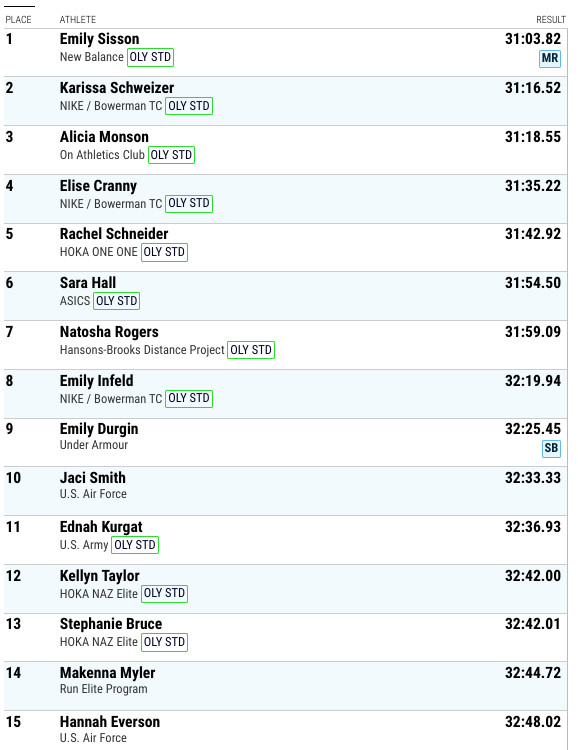
A Huddle comparison is selling Sisson short, however. This was dominance at a level we are unaccustomed to seeing at an Olympic Trials, particularly in an event in which 13 women in the field entered with the 31:30 Olympic standard. Only seven Americans (including Sisson) have ever run faster than her 31:03.82 today, achieved in the morning sun and without the aid of pacemakers. Her 12.70-second margin of victory left her almost a full straightaway clear of runner-up Karissa Schweizer.
Sisson had sealed the victory by building a 30-meter lead with three laps to go and would only pick it up from there, going 71.47-71.25-69.26 to close out a 15:14.67 final 5k and 4:44.45 final 1600. Schweizer took second in 31:16.52 to make the Olympic team at a second distance (she also made it in the 5k on Monday), while Alicia Monson gave On Athletics Club another Olympian by taking third in 31:18.55.
The top five women in this race will all be running in Tokyo — the top three in the 10k and fourth- and fifth-placers Elise Cranny and Rachel Schneider in the 5k.
Sisson lapped everyone in the field save for the top seven. The last person she lapped — in the final 100 meters — was none other than 2016 Olympian and 2015 world championship bronze medallist Emily Infeld, who stuck with the lead pack for 6k.
The Race
https://www.youtube.com/watch?v=OsYzi04MOQ4&feature=emb_title
The race had been shifted to a 10 a.m. start to avoid the hot weather (forecast to reach 100 degrees when this race would have originally been run at 6:44 p.m.), though the conditions were still hot and sunny when the gun was fired. Sisson took the lead just before two kilometers, dropping the pace from 78’s and 78’s to consistent 75’s, whittling the pack to 10 by 5k (15:49.15). Sisson would continue tightening the noose all the way home. She dropped the pace to 74’s just after halfway, which was enough to drop former New Mexico teammates and new US citizens Weini Kelati and Ednah Kurgat, as well as 2016 Olympian Infeld by four miles.
By 6800, Schneider, Hall, and 2012 Trials runner-up Natosha Rogers had been dropped as well, leaving a four-woman battle for three spots between Sisson, Cranny, Schweizer and Monson. After running consistent 74’s, Sisson let a 75 slip in for her 18th lap. From there, however, Sisson’s pacing was masterful: each of her final seven laps was faster than the one that preceded it. A 72.58 fifth-to-last lap gave her a 10-meter gap with a mile to go, and with 41 starters, it became hard to keep up with who was where as Sisson had been lapping multiple runners per lap. She would press on to win in dominant fashion, while Schweizer, who trailed Monson by 3.5 seconds at the bell, would use a big last lap (68.81, fastest in the field) to take second, with Monson safe in third, over 16 seconds up on Schweizer.
For the record, Schweizer said she plans on running both the 5k and 10k in Tokyo.
Quick Take: Total masterclass
Sisson has had some great performances in her career (she’s made two Worlds teams at 10k, won two USA road titles, and won two NCAA titles), but she had never had one like this.
Not only did she make her first Olympic team and win her first USATF track title, she put on a wonderful performance. She took the lead after the mile and never gave it up. She started clipping off 75-second laps (5:00/mile) through halfway. That whittled the lead pack down to 10. Then she upped the ante again, lowering the pace to roughly 74s through 8k. That made it a four-woman race for the three Olympic spots. Then she started running 72s or better and it was game over.
Quick Take: Redemption for Sisson, who used the extra year to her advantage
When we spoke to Sisson a month ago, she admitted that had the Trials been held as scheduled in 2020, she likely would not have been in contention to make the team. Her body felt broken after dropping out of the Olympic Marathon Trials on a brutal Atlanta course, and after a stellar 2:23 debut in London in 2019, she struggled to make sense of the result.
“Usually I’m good at moving on from bad races, but I struggled with that one,” Sisson.
It didn’t help that, after COVID postponed the Trials, there was nothing to move on to.
But eventually, Sisson was able to get back on track (she praised her husband, her former Providence College teammate Shane Quinn, for his support) and work back to incredible fitness. In December, she ran 67:26 to miss Huddle’s American record in the half marathon by one second, and she looked strong in her three track 5k’s this spring, running 14:55, 14:53, and 14:59. She had never broken 15 minutes prior to this year. Her plan today was to play to her strength and make it a fast race, as she knew she was in the best shape of her life.
“There were some workouts where I had to ask [my coach Ray Treacy] to repeat my splits, like what did I just run?” Sisson said.
QT: Alicia Monson pushed her body to the brink (and to the hospital) to make her first Olympic team
The newly-formed On Athletics Club (editor’s note: On Sponsored the Road to the Trials on LetsRun.com) got its second 10k Olympian at the Trials as Alicia Monson finished 3rd to make the team, joining teammate Joe Klecker who was 3rd in the men’s 10k on the first night of the Trials.
Coach Dathan Ritzenhein had been very bullish on Monson heading into the Trials, but how would she perform on the biggest stage and in the heat? Superbly well. While Monson was overtaken by Karissa Schweizer on the final lap, she was the last athlete to get broken by Sisson.
However, the effort really took its toll.
After the race, Monson did not look well. She eventually was resting in the shade in the bowels of the stadium, and was brought back out for an interview by NBC’s Lewis Johnson, where Schweizer helped support her. Monson said in the interview, “I have never gone to that point in a race before and I’ve always kind of wanted to. I think today was a good time to do that.”
Monson was able to go to the victory stand and do the award ceremony for the top 3, but the heat was still taking its toll.
Later as first reported by Sarah Lorge Butler, it was revealed that Monson collapsed after the medal ceremony and started vomiting and was taken to the hospital.
Ritzenhein told LetsRun he believes Monson will be okay, adding “she is just the toughest person I’ve ever met.” For anyone who remembers Ritzenhein’s all-out racing style, that is high praise indeed. Ritz even said she’d be available for an interview after she left the hospital. That definitely is a LetsRun.com first.
Quick Take: Sisson & Monson’s all-in bets pay off
When USATF switched the schedule to put the women’s 10k after the women’s 5k, athletes who qualified in both had a choice to make. If you thought your best shot to make the team was in the 10k, would you double — and perhaps wear yourself out with a heat and final in the 5k — or give yourself only one shot to make the team and focus on the 10k?
Both Sisson and Monson (and their coaches) felt their best shot was in the 10k and both decided to skip the 5k entirely. That paid off when both made the team today.
But both Schweizer and Cranny decided to attempt the double, and that decision worked out nicely for them as well, as Schweizer made the team in both events and Cranny was the US champ in the 5k. All four women are first-time Olympians.
Quick Take: Sara Hall’s Olympic dream is denied yet again, but she achieved her career-best Olympic Trials finish in 6th
Some great US runners over the years have failed to make an Olympic team. Chris Solinsky, the #2 US man ever at 5,000 and 10,000, never made an Olympic team, and Sara Hall, the 2nd-fastest US women’s marathoner ever at 2:20:32, may also end up with that label. Hall, 38, finished 6th in today’s race in 31:54.50, which was a career-best finish for her at the Olympic Trials.
Sara Hall at the Olympic Trials
2004 – 11th in 5000
2008 – 9th in 1500
2012 – 8th in steeple
2016 – DNF in marathon, 14th in 5000
2020 – DNF in marathon, 6th in 10,000
“I made all the right moves I needed to, I just didn’t have it. You know, those girls are really strong,” said Hall after the race. “Sisson, I’m really happy for her… I’m so happy she made the team, she’s so deserving… I respect all those women so much… I thought I had a shot at this team but at the same time that’s my highest Olympic Trials finish… I’m thankful I was able to do that today.”
Hall said she was rooting for her fellow marathoner Sisson — the US’s 8th fastest marathoner in history at 2:23:08 — to make the team.
“Emily’s run was so impressive, I didn’t doubt that she could do this… living in Phoenix, I’m pretty sure we’re all gonna wish we were living in Phoenix like she is… I was rooting for her so much because of the disappointment in Atlanta that was similar to mine,” said Hall, who said she’ll be announcing a fall marathon soon.
Saying Hall won’t make the team in 2024 may not be wise. The date for the 2024 marathon trials isn’t set yet, but they might be less than 2.5 years away and Hall is running better than ever. Bernard Lagat made an Olympic team at 41 in 2016. Hall will be 40 when the 2024 Olympic Marathon Trials take place. Of course, the difference is Lagat had been on many teams before.
Regardless of whether she makes a team, Hall’s late-career transformation has been incredible. At the 2016 Trials, Hall had pbs of 32:44 for 10k and 2:30:06 for the marathon. Now her pbs are 31:21 and 2:20:32.
Quick Take: Sisson handled the heat like a pro
At the last Trials, Sisson said she was “pretty out of shape and I actually overheated.” She handled the heat with ease today. That may be because she lives in Phoenix, Arizona (although she hasn’t been there since March, spending her buildup in Flagstaff and then Providence).
She wore sunglasses during the race but they weren’t hers. She often runs with glasses in Phoenix but didn’t have any today, so she just borrowed her husband’s pair before the race.
Quick Take: Emily Durgin has a strong run in 9th
The top 8 spots were all filled by people with the Olympic standard of 31:25. The first person without the standard was 9th placer Emily Durgin of Under Armour. No one in today’s race ran a PB, but Durgin came the closest. When her collegiate career at UConn came to an end in 2017, she had pbs of 16:00.93/33:49. Now she’s improved them to 15:24/32:22 and she ran 32:25 for 9th.
by Let’s Run
Login to leave a comment
How to Mentally Pull Through a Tough Moment
Whether training or racing, you’re going to hit some challenges. Here’s how to motor on.
You may not be back to racing quite yet, but you’re likely starting to train for a fall goal. Whether it’s your first time prepping for a race or your first time back at hard practice after a break, it’s time to train your mind as well as your body. As Under Armour coach Tom Brumlik will tell you, “The mind leads the body.” That means putting in the work to get your brain tuned up along with your body. Here’s how.

Tap into the Power of Affirmations
In order to set a baseline of positivity across all aspects of life, not just training, Brumlik recommends practicing positive self-talk. “I’m big on affirmations,” he says, short complete sentences you can state anytime. “I tell my athletes to practice ‘I am’ statements throughout the day, even when they’re not training or racing.” For instance, if you’re in the first stages of a giant project at work and feeling overwhelmed by how much of it lies ahead, tell yourself, “I am on my way.” When your alarm goes off at 0-dark-30 for a run, say, “I am a morning person.” Whatever the case may be, it’s the practice of “I am” statements that leads to the gains. “You can’t pull them out on race day alone,” says Brumlik. “The practice has to be ingrained.”
And Develop Some Mantras Too
In addition to finding some all-purpose affirmations that can apply to all facets of your life, you’ll also want to have some shorter, more running-specific mantras in your mental toolkit. Any training session or race can feel like a roller coaster, with highs and lows, twists and turns. One minute you’re feeling great, flying through the intervals, and the next you’re facing the biggest, steepest climb of your life. Knowing and embracing that fact—and having an automatic response—will help you push through.
Research shows that when you repeat a mantra whenever you hit a challenge, it can give you a mental and physical boost. The wording can be anything that reliably lifts your spirits. Think along the lines of “I am strong” or “I’ve got this,” for instance. Or repeat something that relates to the act of running, like “Swift and smooth,” “Light and fast,” or “I eat hills.” Other options include “Light it up” or “Go for it.” Whatever serves to motivate you, used on repeat, is what will get you through.
Focus on Your Breathing
You can put your breathing to use in a variety of racing and training scenarios. “I like to use breathing before a race or hard workout to calm my nerves,” says Brumlik. “You can also use it to relax and smooth things out during a race.” The quality of your breathing in the midst of a hard workout or race can also serve as a good indicator of your effort level. If you’re in the first mile of a race and find yourself breathing hard, it’s time to dial things back so you have something left for the end. “It’s very common to go out too hard, so pay attention to your breathing rate and breathe slowly and deeply to slow yourself down if needed,” Brumlik recommends. There are more than just physical upsides to using your breath as a barometer, as Brumlik suggests: in doing so, you're practicing mindfulness which can help you create focus, foster calmness, and, most importantly, reinforce that you are in control of your run.
Count Your Steps
If you find yourself in the pain cave during a workout, mentally settle into your cadence to take your mind away from the challenge. Have a look at the MapMyRun app to find your perfect cadence and then focus on the rhythm of your feet. Before long, you’ll forget the pain and fall into an easier, more efficient stride. “Think about light, quick steps, which will help your mechanics,” says Brumlik. “Think about driving your arms back and your foot straight down to get the most out of your stride.” Building mental skills is all about developing a positive mindset, says Brumlik. “Running can be a challenging sport,” he says. “Stay away from words like ‘I can’t’ and instead focus on positive practices until they become a habit.”
by Outside Online
Login to leave a comment
2021 Austin Half Marathon Marks the Return of in person racing
The Ascension Seton Austin Half Marathon presented by Under Armour is putting the final touches on Austin’s return to running. This year’s event was postponed from its original date of February 14th. Formal approval was issued by the City of Austin on March 23rd for the Austin Half Marathon and KXAN Simple Health 5K benefitting Paramount Theatre. Austin’s return to running will feature more than 5300 runners, overflowing goodie bags, live music, and a Mitigation Plan. The Austin Half Marathon, owned and produced by High Five Events, will take place on April 25, 2021.
“The return of the Ascension Seton Austin Half Marathon and 5K is extremely important to our city and a great start to bringing back large-scale sports events,” said Drew Hays, Director of the Austin Sports Commission. “The Austin Marathon was one of the last events held in 2020 and now one of the first to return in 2021 and we are excited to welcome athletes to Austin.”
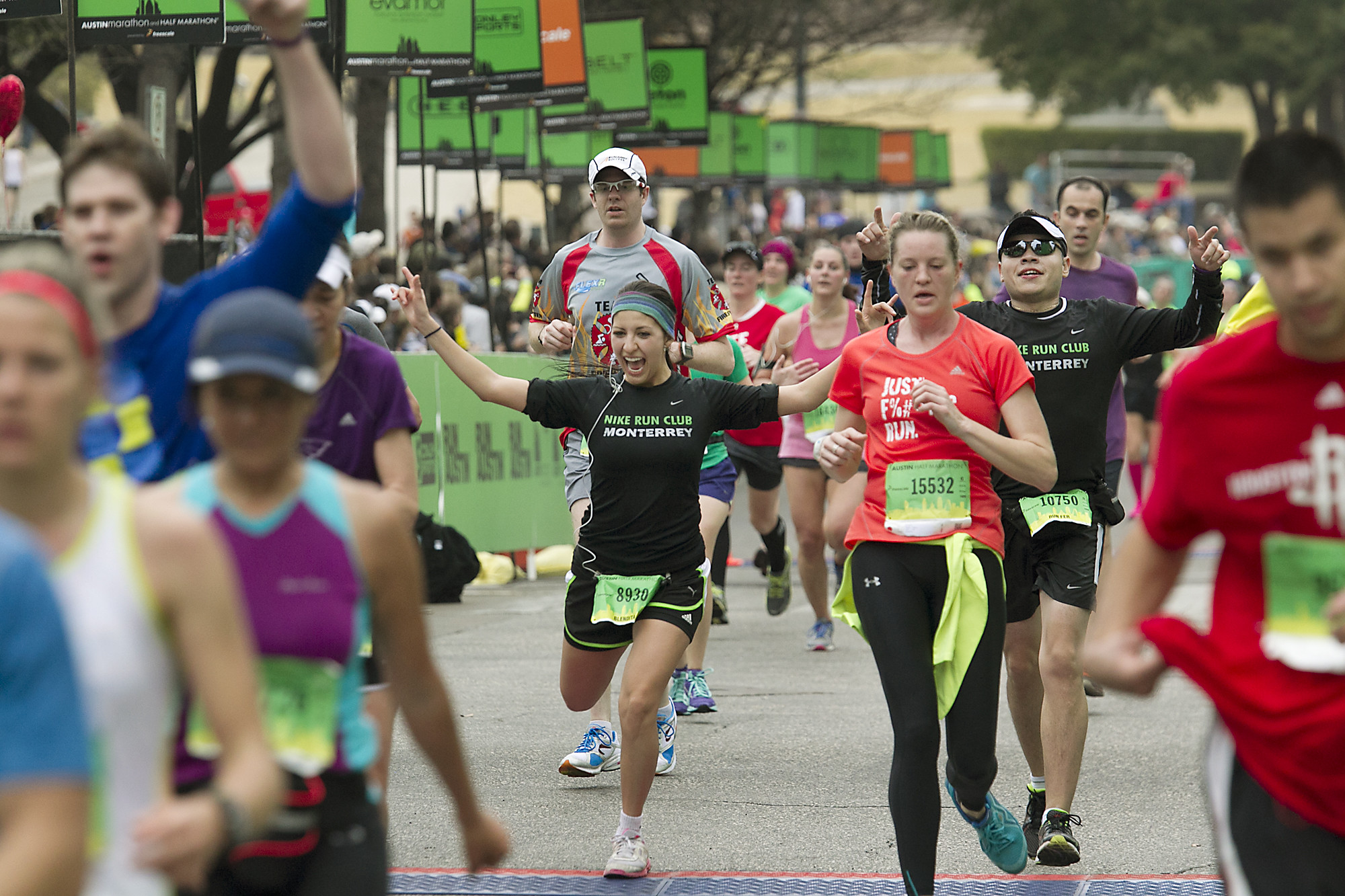
The Austin Half Marathon course will feature 12 local bands who will perform live music on the 13.1-mile course, giving participants a taste of The Live Music Capital of the World. In-person participant goodie bags will feature custom swag including an Under Armour shirt, pint glass, bandana, sunglasses, and more. In addition, each participant will be emailed a virtual goodie bag that will include exclusive deals from sponsors, partners, and local Austin businesses.
“The Austin Marathon has positively impacted Austin in so many different ways for many years,” said Jack Murray, co-owner of High Five Events. “We’ve worked tirelessly to bring this year’s event to life and we’re excited to produce the Austin Half Marathon and 5K alongside our many partners, sponsors, and the City of Austin.”
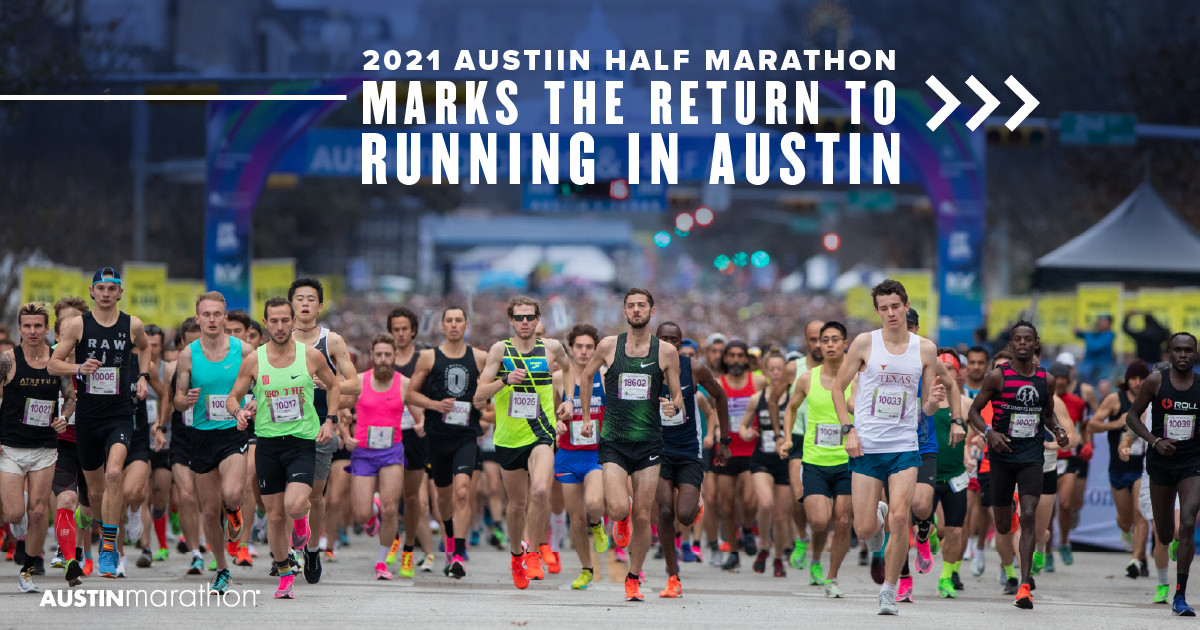
High Five Events and their sponsors and partners like Ascension Seton, Austin Public Health, and the City of Austin are all fully committed to the Mitigation Plan. The full COVID-19 Mitigation Plan is available to view and includes:
Participation capacity reduced by 53%
Density reduction by 88%
Assigned start times extended over a longer time frame
Enhanced sanitation
Adherence to COVID-19 safety protocols
Elimination of mass gathering activities
Discourage spectators from attending to reduce COVID transmission risk
Participants have been fundraising on behalf of one of the amazing 26 Central Texas nonprofits as part of the Austin Marathon Gives charity program which has a goal of raising more than $700,000. Austin Marathon Gives will receive a grant from presenting partner the Moody Foundation for the sixth year in a row. The grant will match donations raised, up to $10,000, for each participating organization. Since 2014, Austin Marathon Gives has raised $3.8 million for numerous worthy Central Texas nonprofits. Through their grants, the Moody Foundation has given $1.2 million to the program since 2016.
Login to leave a comment
Austin Marathon Weekend
The premier running event in the City of Austin annually attracts runners from all 50 states and 20+ countries around the world. With a downtown finish and within proximity of many downtown hotels and restaurants, the Austin Marathon is the perfect running weekend destination. Come run the roads of The Live Music Capital of the World where there's live music...
more...How to run efficiently on concrete, sand, dirt or trail
Running on pavement, cement, sand, dirt or trail have their unique challenges. It’s not simply about which running surface is better or more optimal since that answer is: “it depends” or “none of them is best.” In fact, your best bet is likely to mix up your running surfaces to change your loading and balance the way that you run.
“The human body adapts incredibly well to its situation,” says Jeff Knight, senior manager of digital product science for connected fitness at Under Armour and former running coach. “Basically, researchers have found that runners adjust to run with a softer stride over the firmer surface and a harder stride over the softer surface.”
When you switch things up, there are certain ways to optimize your running. Here’s what you need to know about different running surfaces and how to train on them for the best possible performance:
Concrete and cement are the hardest materials you’ll likely run on. If you observe most serious runners, you’ll notice they often eschew the sidewalk in favor of the shoulder of the road for this reason. On the flip side, sidewalks are going to be safer than running in the street when it comes to traffic. Some sidewalks have a dirt or grass medians you can take advantage of to give your feet a break.
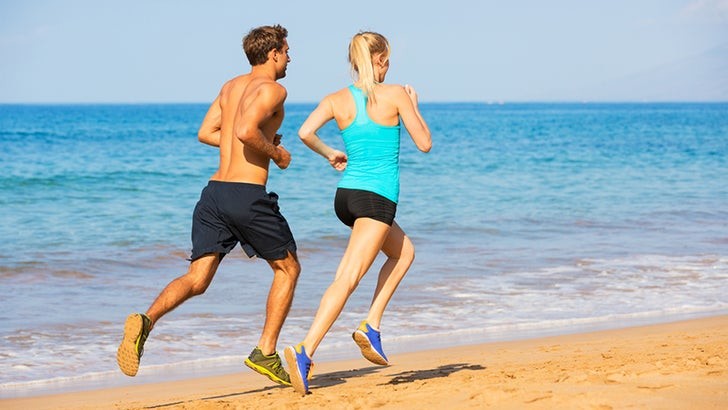
This is also where finding a good road running sneaker comes into play. “A standard road shoe. The cushioning of a neutral running shoe options helps dampen the impact of each stride.
Ranked slightly softer than concrete sidewalks, running in the streets or on asphalt paths is better than trying to stay on sidewalks when it comes to running efficiently. As Knight points out, humans are amazingly adaptable, so if you live in a concrete jungle, don’t stress: You’ve likely developed a stride that takes hard surfaces into account. But when you can, hop onto the grass and run the side of a field or a trail: Research shows running in grass reduces the stress on your body compared to running on a more rigid surface.
Gravel trails and roads are firm and are good for running since they’re slightly softer than asphalt without much difference in the actual surface, unlike a dirt trail in the woods. But the loose layer of dust and gravel on top ultimately slows you down. “In Austin, Texas, we have a popular running trail in the middle of town that surrounds Ladybird Lake. That trail is made of crushed up bits of granite,” Knight says. “When I was coaching, we added 5–10 seconds per mile if we did a tempo run on that trail!”
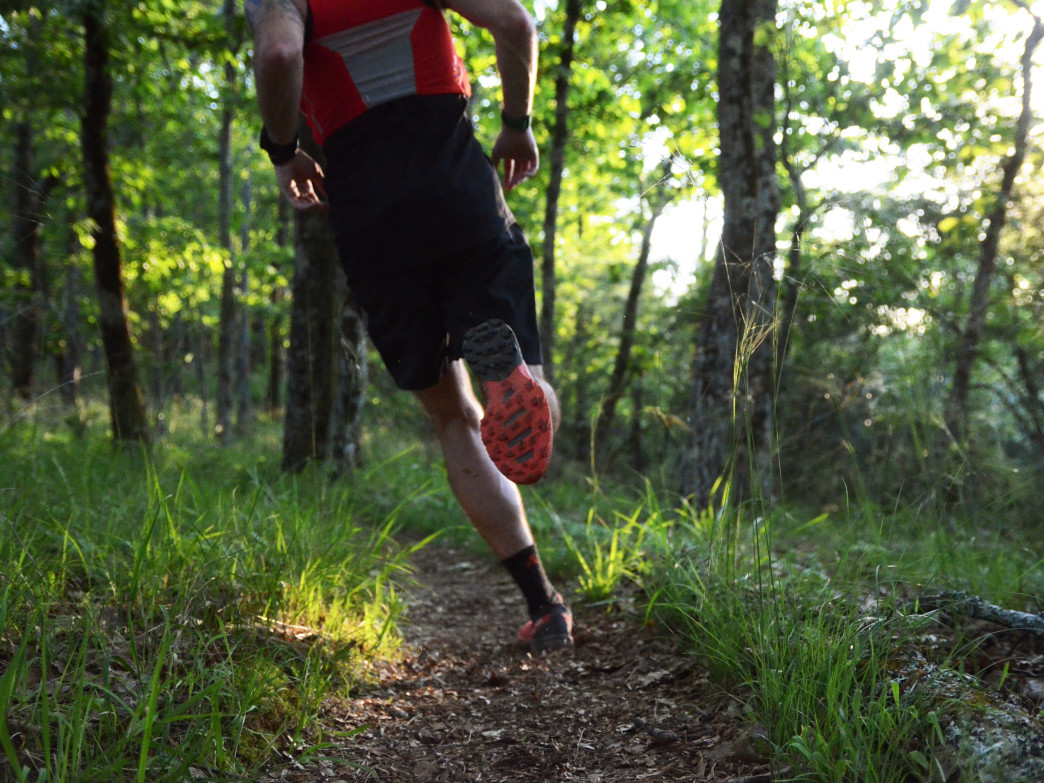
So, while gravel may be optimal for long endurance runs compared to pounding the pavement for hours, don’t expect a PR. Similarly, rail-trails are the best for your joints thanks to their cushiness and lack of any technical navigation. Rail trails also tend to be flat and straight, with relatively few obstacles. Their surfaces are akin to those of gravel roads, but the flatness makes them more beginner-friendly, while gravel roads can easily get ultra-hilly.
Here, we’re talking about technical trails, not dirt roads. Trails are softer in general, but present runners with more ankle-biting obstacles, and because of this, your stability may suffer. On technical trails, Knight recommends swapping to a more trail-friendly shoe. “Usually, trail shoes offer a bit more stability and traction,” he explains. “If I catch a root or rock wrong, I am less likely to slide off that root and turn my ankle. To summarize, lots of roots the size of baseball bats or rocks the size of baseballs means switch shoes.” He notes that if you’re looking for speed on the trails, a dedicated trail shoe helps with that as well. “That extra bit of traction and stability may keep you safe when you start getting sloppy,” he adds. “No one is as sure-footed at the end of a hard trail session as they are at the beginning!”
Soft sand is by far the most challenging surface to run on, and it will fight you every step of the way. If you’re a beach runner, stick to the hard pack sand by the water’s edge and wear your trail shoes for more stability. You can head into the soft sand as an interval, since it will immediately make maintaining your pace much more challenging as an almost full-body workout.
But if you have a tendency toward rolled ankles, skip running on soft sand altogether: It might be nicer on your joints from a softness perspective, but the lack of stability makes it potentially dangerous. Surprisingly, one study showed that compared to running on a sandy soft surface, running on asphalt actually decreased the risk of tendinopathy in runners.
by Molly Hurford
Login to leave a comment
Austin Marathon excited to announce its partnership with Siete Family Foods
Leading up to the 2021 Austin Half Marathon, Ascension Seton Austin Marathon presented by Under Armour is excited to announce its partnership with locally owned and operated Siete Family Foods.
The Austin-based company, which has quickly become the leading health-conscious Mexican-American food brand on the market, is donating 7,500 bags of their grain-free Sea Salt Tortilla Chips for the marathon’s post-run goodie bags. They’ll also provide healthy snacks for event volunteers. The Austin Half Marathon, owned and produced by High Five Events, will take place on April 25, 2021.
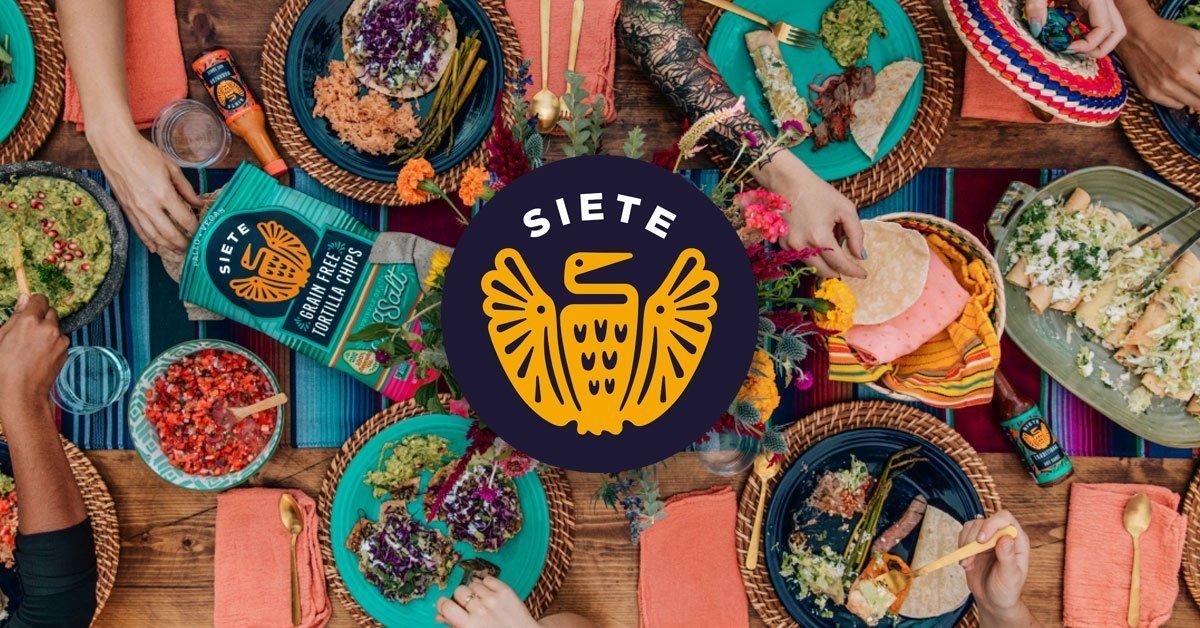
Founded in 2014, Siete Family Foods is a family-owned and operated company that is passionate about making real food that inspires inclusivity and brings families together around the table. They’re on a mission to share the heritage-inspired flavors and traditions that brought the Garza family together on their journey to health. In addition to helping celebrate this year’s runners at the finish line, Siete will provide an array of their flavorful, heritage-inspired, grain-free snacks to all event volunteers.
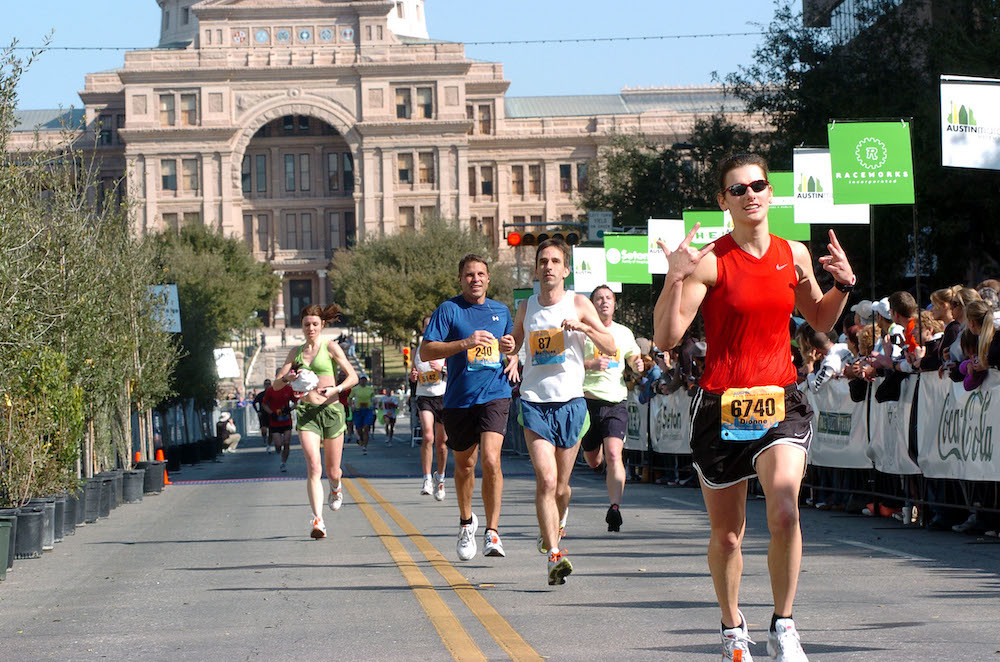
The post-run goodie bag pickup process will be touchless and in conjunction with the COVID-19 Mitigation Plan. Like most of Siete’s products, the chips included in the goodie bags are grain-free, dairy-free, and gluten-free, and made with better-for-you ingredients like coconut flour, avocado oil, chia seeds, and sea salt.
“Cultivating community is at the heart of our family and company,” said Veronica Garza, Co-Founder, President, and Chief Innovation Officer, of Siete Family Foods. “We are proud to partner with the Austin Marathon, an event that brings our community together with a shared purpose of giving back and staying active.”
“We’re proud to partner with Siete because many of their values align with ours, like helping others lead healthier lifestyles," said Jack Murray, co-owner of High Five Events. "Participants will love crossing the finish line, opening their goodie bag, and seeing a bag of Siete’s healthy chips."
Online registration is currently available. The in-person and the virtual options both have a maximum capacity set in the COVID-19 Mitigation Plan. The event has already surpassed 65% of the capacity based on current registrations. The event is expected to sell out.
Login to leave a comment
Austin Marathon Weekend
The premier running event in the City of Austin annually attracts runners from all 50 states and 20+ countries around the world. With a downtown finish and within proximity of many downtown hotels and restaurants, the Austin Marathon is the perfect running weekend destination. Come run the roads of The Live Music Capital of the World where there's live music...
more...People Are Double-Masking More and More and, Sometimes, That Includes Runners
While the CDC hasn’t officially recommended it yet, here’s what experts want you to know to stay safe and slow the spread
From healthcare workers to politicians, double-masking is the latest coronavirus trend. In a press briefing Wednesday February 3, National Institute of Allergy and Infectious Disease (NIAID) director Anthony Fauci, M.D. said that double masking could be a common-sense approach in mitigating the spread of COVID-19. He even added that he wears two masks in situations where he won’t be able to sufficiently socially distance himself from others. But does that mean runners should think about wearing two masks when training?
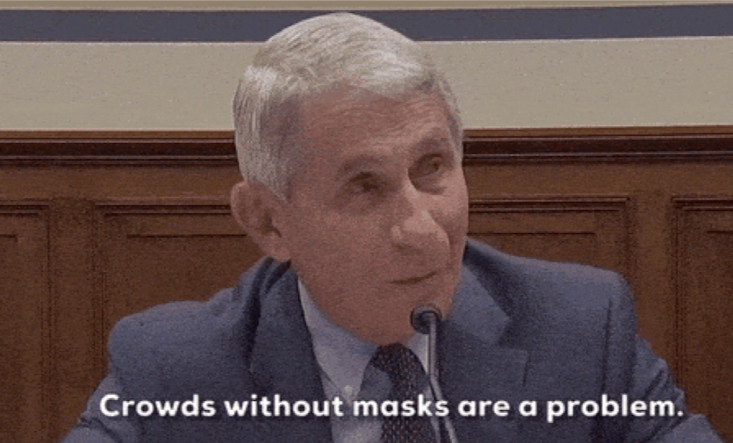
Fauci said the CDC will continue to update recommendations as more research is completed, but in the meantime, here’s what you need to know about double-masking, according to David Nieman, Dr.PH., health professor at Appalachian State University and director of the Human Performance Lab at the North Carolina Research Campus, Brian Labus, Ph.D., MPH, assistant professor in the School of Public Health at the University of Nevada Las Vegas, and Matt Ferrari Ph.D., associate professor of biology in the Eberly College of Science, and a researcher with the Center for Infectious Disease Dynamics at Penn State.
Why are people double masking?
First and foremost—the focus is still on using high-quality masks that will protect the wearer and others, explains Ferrari. That means it’s important to find a mask with good filtering material and a proper fit. Your mask should cover your nose and mouth, and fit snugly to the face with no gaps. (Get more helpful mask-wearing tips from the CDC here.)
“Two masks might be the way to do that, but one really good mask, say a KN95, may still be better than two single-ply gaiters,” Ferrari says.
For context, an N95 respirator, the U.S. standard that should be reserved for healthcare workers, and the KN95 mask, the China standard, both filter 95 percent of aerosols and protect the wearer better than a single layer fabric mask.
“What we are usually talking about with double-masking is doubling up on the fabric masks to increase filtration,” Labus says. But the caveat is, both masks need to fit properly.
And, adding a less-effective fabric mask over an N95 or KN95 mask won’t provide much additional protection. However, medical professionals sometimes do this to help extend the life of the masks, as PPE has been in short supply.
When might double-masking be necessary?
Wearing a well-fitting mask (or two) may be especially important for protecting others and yourself if you are in a setting where people are close together or breathing heavily, such as a gym.
“If you’re an athlete and going to be with other people indoors I would highly recommend double-masking,” says Nieman.
Currently, the CDC suggests that you wear masks with two or more layers of washable, breathable fabric, and avoid using those intended for healthcare workers, such as N95 or surgical masks. However, opting for a KN95 is okay, because U.S. healthcare workers don’t use that mask, explains Nieman.
“It gets old saying it, but if you have the luxury of avoiding settings where you would need to double-mask—indoors, poorly ventilated, crowded—then avoiding those settings is better than two, or three, or four masks,” says Ferrari.
For runners, this may mean avoiding a crowded gym and instead opting to run outside where there is plenty of space for distancing or setting up a home gym space.
However, if you can’t avoid indoor settings with other individuals (say, for work or to care for others) then double-masking may provide the extra protection to reduce risk in high-density indoor settings.
What is the best way to double-mask?
“As with a single mask, it’s about having a good fit to your face,” explains Labus. Ensure that your mask or masks cover from above your nose to below your chin, and that air is not escaping around the sides.
“In addition to the extra filtration provided by the second mask, [doubling] can also allow the mask to fit better on your face, covering any gaps from the first mask,” Labus says.
But two bad masks are not necessarily better than one good one. In fact, the healthcare industry has shown that one, high-quality, well-fitted mask can be very effective, says Ferrari. And, leakage tends to be a problem in masks, so even if you’re wearing two masks, if they don’t fit well, they won’t be effective at protecting others, says Nieman.
What is the best mask to wear while working out?
That all depends on what the masks are made of. Masks like an N95 or KN95 are designed to filter out much smaller particles than a cloth mask and require more effort to breathe through. So, even if you are just wearing a single high-filtration mask, it’s likely not going to work to wear during intense exercise, because once you begin sweating, breathing will become more difficult.
It also depends on what type of exercise you are doing. If you’re lifting weights and don’t expect to get breathless as you would when doing treadmill intervals, a KN95 and cloth mask or two cloth masks may work just fine, says Nieman. But, once you start to sweat and breathe harder, that’s when it can get tricky.
Nieman recommends finding a mask that is at least double-ply with tightly woven fabric or one that is specially made for exercising, such as the Under Armour Sportsmask, which is used in his lab when tests are being done.
“Try to focus on workouts and activities where the mask isn’t the limiting factor. Outdoors and distanced is better for everyone,” says Ferrari. This might mean getting creative with your workouts if you live in a cold climate or trying other socially-distant cross-training activities like Nordic skiing.
The bottom line: Remember, the CDC has not yet changed their recommendations and still recommends a single fabric mask that’s at least two layers. While some are starting to wear two, it is still okay to wear a single mask, says Labus. That second mask can provide some extra protection, but wearing any mask is much, much better than not wearing one at all.
“If you’ll be near others, or out running with friends, wear a mask. If you have to do an indoor workout with others in the gym make sure you’re masked up with the best filtering, best fitting mask(s) you’ve got,” says Ferrari.
by Runner’s World
Login to leave a comment
Molly Seidel and Aisha Praught-Leer have signed with Puma
Two U.S. athletes recently announced they have signed sponsorship agreements with Puma heading into the 2021 Olympics: Olympic Marathon Trials second-place finisher Molly Seidel and Olympian and 2018 Commonwealth Games steeplechase gold medallist Aisha Praught-Leer.
Seidel surprised everyone with a second-place finish in her debut marathon at the Olympic Marathon Trials last February. She completed the race a time of 2:27:31, earning her a spot Team USA for the Tokyo Olympics. The following October, she lowered her PB during the elite-only London Marathon, finishing in sixth place in a time of 2:25:13.

After her first sponsorship deal as a professional athlete with Saucony came to an end, she officially announced on January 22 via Instagram that she has signed a new contract with Puma. This new sponsorship comes on the heels of a fantastic year for the Turkey-Trotting runner, and should the Olympics go forward as planned, we look forward to seeing what Seidel can do.
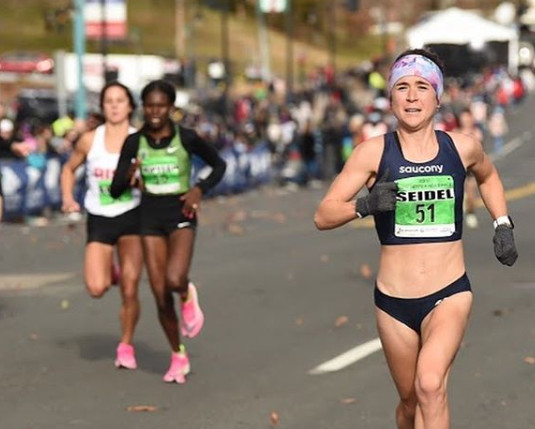
Jamaican-American Praught-Leer competed for Jamaica in the steeplechase at the 2016 Olympics, won gold in the event at the 2018 Commonwealth Games and holds the national record at the distance. She had been sponsored by Under Armour since 2017 but announced via Instagram on January 1 that her partnership with the company had come to an end.
Since that day, runnin fans everywhere waited to see where she would be going next, and on January 18 she made the official announcement that she would be partnering with Puma for the next few years. She and Seidel will be joining other notable Puma-sponsored athletes, including Canadian sprinter Andre Degrasse, two-time world record-setter in the 100 metres Asafa Powell and of course nine-time Olympic gold medallist Usain Bolt.
by Brittany Hambleton
Login to leave a comment
Why Running Outside in the Winter Is So Good for You
The mental and physical benefits make it worth the extra effort
Sure, the treadmill can be a valuable training tool in winter. But most of the time, gearing up, embracing the outdoors, and hitting the roads is the better option. What’s the difference, you ask? Training outside any time of year—but especially during the year’s darkest days—unlocks a host of mental and physical benefits. Here are four reasons to take your workouts outdoors this winter.
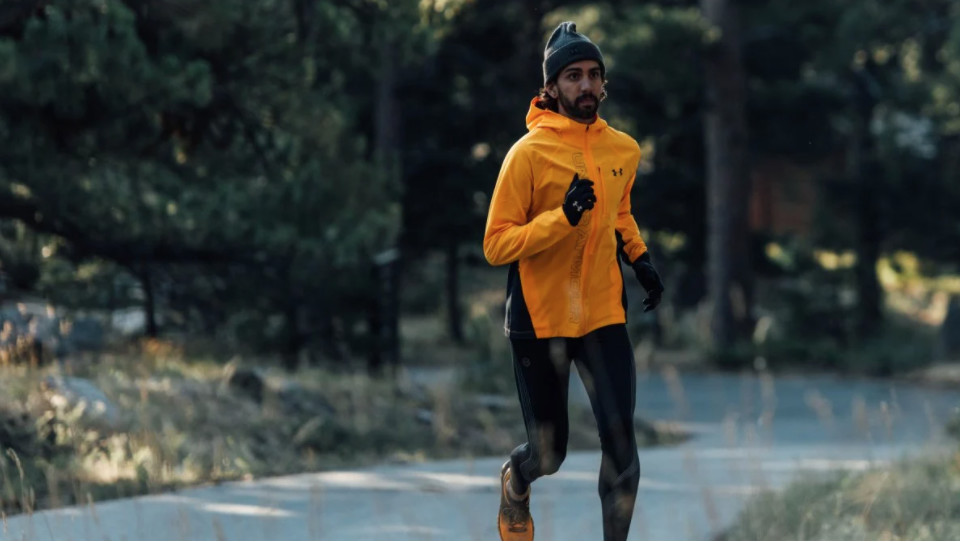
Amy Kugler understands firsthand how running can help combat seasonal affective disorder (SAD). Back in 2013, when the 30-year-old content strategist had just moved to Seattle, she found herself unconsciously upping her mileage as a way to cope with the lack of sunshine. “The rainy season kicked in around September and it was gray all the time,” she says. “My husband would encourage me to get out the door because he saw that when I returned from my runs, I was much happier.”
Robert J. Stock, a California-based psychotherapist, says that about 5 percent of Americans suffer from SAD, and as many as 10 percent more have a subclinical variant they may not recognize. “There are theories that the lack of light in winter triggers hormonal changes, with the leading belief being that the brain may create less serotonin, one of the important chemicals to create a sense of well-being,” he explains. Running, then, can be a great antidote. “Running outside, preferably in daylight, creates endorphins that give a runner a happy feeling and greater energy rush,” Stock says.
Even with a schedule and climate that often prevents her from training in the sunlight, Kugler feels better after training outdoors through winter. And that's no coincidence. A 2016 Harvard and Syracuse University study showed that the elevated levels of carbon dioxide often present in indoor environments can have negative effects on cognitive function. Translation: breathing fresh, oxygen-rich air—not just exposure to sunlight—can positively affect more than just your mood. “Would I love a sunny day?” she asks. “Yes. But more importantly, I am out there, and the endorphins make all the difference.”
Winter Weather Beats Summer Weather
Truly, it does. Instead of slowing the pace to build endurance in the heat, winter weather makes everything better: you’ll sweat less and remain better hydrated. You’ll feel more energized. Your heart will run slower and you might find yourself adding on a mile or two some days, rather than quitting early. “Breathing in the cold air wakes you up and makes you feel alive,” says Baltimore-based running coach Alison Staples. “I wouldn’t miss it.”
You’ll Feel like a Boss
If you haven’t noticed, there aren’t many people out running on the roads in the middle of winter. If you have the chutzpah to get out there, your tenacity deserves a few pats on the back. When he first arrived at the University of Wisconsin to join the track team, Under Armour runner Morgan McDonald was a bit unsure about running in the cold. Originally from Sydney, Australia, he’d never encountered real winter conditions (the average low temperature in January in Madison, Wisconsin, is a bone-chilling 11 degrees Fahrenheit). “It can be a bit daunting,” McDonald says. “But once you get used to it, you’ll be glad you tried.”
Professional runner and coach Breanna Sieracki, who lives in Minnesota and runs in just about any temperature, agrees. “You have to be tough to get out there,” she says. “It will make you more resilient and ready to handle anything.”
You’ll Make Real Gains
Winter running is about mental toughness, to be sure. You’ll emerge stronger and ready to handle the rough spots in a race come spring. But it also adds up to physical benefits. “With the exception of a few big marathons, like Houston, most of your races will be in warmer months,” says Sieracki. “So winter can be great for base building.” With the break from races, winter is the perfect time to build up your base so that you’re ready for that harder training come spring.
Use this time to work mostly in your aerobic zone, laying down a firm foundation. Think of your training as a pyramid—your wintertime base miles form the bottom layer on which your other efforts can rest. Skip out on this step and spring training and racing won’t get you nearly as far. The case for winter running couldn’t be stronger. As the days get shorter and the temperatures drop, make a plan for joining the ranks of winter warriors. Your mood and your body will thank you.
by Outside
Login to leave a comment
Runners sponsored by smaller companies might be in a better position than those who are signed by major brands
Earlier this week, the Swiss running shoe company On announced that it was starting an elite training group in Boulder, Colorado, called the On Athletics Club. It’s safe to say that this doesn’t seem like the most auspicious time to invest in professional running. Even though the Diamond League—the world’s premier track and field competition circuit—is scheduled to begin an abridged summer season on Friday, this year has seen an unprecedented number of race cancellations and it’s difficult to predict when the bleeding will stop.
International Olympic Committee President Thomas Bach has already gone on record saying that the Tokyo Games, which have been postponed to summer 2021, will not be delayed a second time. If they can’t be staged next August, the Olympics will be canceled outright, thus depriving track athletes of their quadrennial moment in the sun.
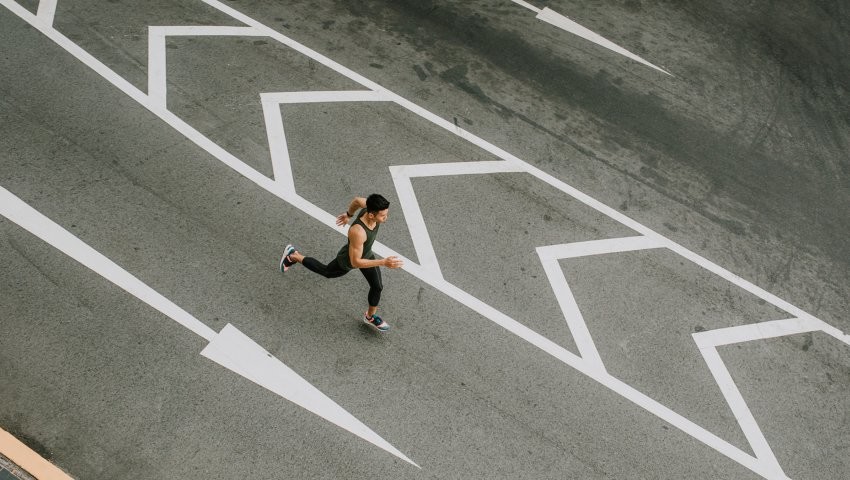
According to Steve DeKoker, On’s Global Sports Marketing Manager, the company has long been looking to develop an elite running team and the Boulder-based group represents the most significant move in that direction to date. For now, the On Athletics Club consists of eight runners, all of whom are in their 20s and were standout NCAA athletes (the University of Colorado’s Joe Klecker and the University of Wisconsin’s Alicia Monson are the headliners).
Recently retired Olympian Dathan Ritzenhein will act as coach. It has been disclosed that these athletes will be signing multi-year deals with no reduction clauses (i.e. performance quotas)—a risky move, perhaps, but one that On might currently be well-positioned to make thanks to a potential pandemic-inspired uptick in recreational running.
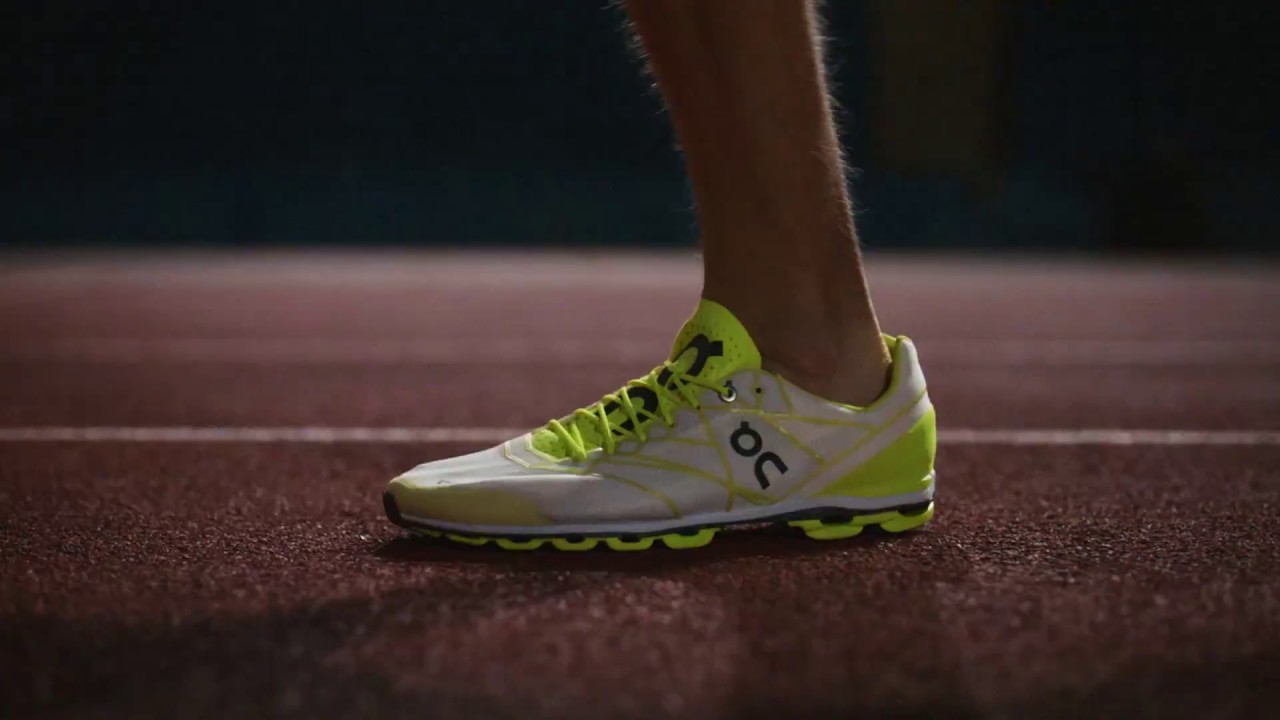
“Running is kind of experiencing this second boom,” DeKoker told Letsrun.com. “We’ve got all these folks at home who are struggling with different issues, but running is a viable activity for them. Whereas if you’re Nike, and you’re in 50 different verticals, running might be a positive one, but you’ve got a bunch of other sports that are hemorrhaging right now.”
There has been some evidence to bear this out. Nike has reported a 38 percent decline in total revenue through May 31. More specifically, last week, the market research company NPD published an article noting that prominent brands (Nike, Adidas, Under Armour) had an overall sales decline in athletic footwear in the first half of 2020, while several running-focused shoe companies had fared conspicuously well.
Hoka One One and On, in particular, saw year-over-year sales increases of 75 and over 50 percent, respectively. (An On representative has confirmed this, and added that the brand had recorded its highest ever sales month in June 2020.) Matt Taylor, the co-founder and CEO of the independent running apparel brand Tracksmith, told me that “there’s been a noticeable uptick in people running over the last few months,” and that Tracksmith was “seeing this trend reflected” in its business.
While the running industry will never be entirely insulated from the state of the overall economy, there is some logic to the notion that the sport is well-suited to weather a financial downturn. To use DeKoker’s term, running is a “viable activity” for many people because it is relatively cheap, accessible, and offers both physical and mental health benefits during times of uncertainty.
The most recent running boom occurred during the years immediately following the Great Recession; starting around 2008, there was a continual increase in running event participation, culminating in 2013, when a record 19 million runners took part in U.S. road races.
Of course, from a running perspective, one of the uniquely cruel aspects of the COVID-19 recession is that the pandemic has precluded the staging of most mass participation events. The New York Road Runners, the largest non-profit running events company in the United States, laid off eleven percent of its employees and furloughed an additional 28 percent in July. Hence, any discussion about how the pandemic might end up “benefiting” the running industry in shoe or apparel sales must be weighed against this freeze of running events.
For professional runners, meanwhile, the cancellation of big-ticket races signifies a loss in prospective appearance fees and prize money. Some athletes might also be contractually obligated to run a pre-set number of races, which, needless to say, has not been so easy in 2020. That’s why this has been the summer of intrasquad competitions, in which training partners take part in de facto time trials that have been spruced up just enough to qualify as official meets. While some of these events have yielded impressive performances—most notably Shelby Houlihan, of the Bowerman Track Club, breaking her own American record in the 5,000-meters—there have also been farcical scenarios where world-class athletes phoned it in, presumably so that they can reach their race quotas. (Last week, reigning Olympic 1,500-meter champion Matthew Centrowitz “raced” an 800... and ran 3:08. His personal best in the event is 1:44.)
It’s not a coincidence that the most prominent examples of these sham races have involved Nike athletes. After all, the Oregon-based company sponsors far more runners than any other brand. They have the funds to do it, but casting a wide net might also make it more difficult for Nike to offer elite runners the contractual perks of smaller, running-focused companies like Oiselle, On, and, recently, Tracksmith. For now, reduction clauses still seem to be the norm for the typical Nike track athlete. (A Nike spokesperson told me that the company does not comment on athlete contracts.)
Hawi Keflezighi, an agent whose clients include his brother Meb Keflezighi and recent U.S. Olympic Trials Marathon champion Aliphine Tuliamuk, agreed that this was likely to be the case. “I think Nike deserves credit for all the athletes and events that they sponsor, but at the same time, within that business model, if you have a lot of athletes, you can’t be as flexible as when you only have five or ten athletes on your roster,” Keflezighi, whose brother was a Nike athlete for years before signing with Skechers in 2011, told me. He added that, while it’s typical for companies to reassess which athletes they want to sponsor at the end of an Olympic cycle, the current uncertainty surrounding the fate of the Games, and looming recession, mean that conditions for athletes are even more cutthroat than usual.
“I think the bigger brands definitely have tougher decisions to make, just because they have a bigger investment overall,” Keflezighi says. “The athletes with those brands, especially if they are not medal contenders or in a great position to make the US Olympic team—under this environment, those athletes’ contracts are a little bit more vulnerable. If you have a smaller roster of athletes, you might be able to say, ‘Hey, you know what? Let me give that athlete an extra year or two.”
DeKoker echoed this sentiment. “Obviously, performance is going to be a key element, but it’s not the only element with On,” he says. “I do think that, at some of these other companies, it’s much more of a numbers game and unfortunately some athletes are going to be on the losing end of that.”
What will the “numbers game” look like in a worst case scenario where next year’s Olympics ultimately do get canceled? With any luck, we won’t get to find out.
by Outside Online
Login to leave a comment
Nick Willis, Emma Coburn, Cory McGee, Ce’Aira Brown And Morgan McDonald Among Those Competing At The Music City Distance Carnival
Putting on an invitational track meet in the United States is hard in the best of times, but is nearly impossible during the current COVID-19 pandemic. Meeting the USA Track & Field requirements for a COVID-safe meet are very difficult, never mind getting adequate sponsorship in the middle of a recession, attracting the attention of top athletes who are hunkered down at home just trying to stay safe, and having to stay within state and local regulations for in-person gatherings. Large crowds aren’t permitted anywhere, so you can forget about revenue from ticket sales.
But Dave Milner of the Nashville Track Club is an especially determined meet director. The 49 year-old coach and former athlete, originally from Leeds, England, was determined to hold the 18th edition of the Music City Distance Carnival this year, and do it at a high level despite the crisis. After several delays, countless hours of work, and a little bit of good luck, his meet is set to go this Saturday in Nashville and will feature top-level athletes with Olympic or World Championships credentials like Ben Flanagan of Canada; Nick Willis of New Zealand; Edose Ibadin of Nigeria; Morgan McDonald of Australia; and Emma Coburn, Cory McGee, and Ce’Aira Brown of the United States.
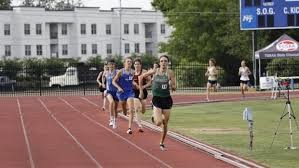
Milner started the process of re-thinking the meet when the COVID crisis first struck in March.
“The meet is typically end of May, beginning of June,” Milner told Race Results Weekly in a telephone interview today. He continued: “When all of this stuff happened in early March I was still optimistic that I could get it done that weekend. Nobody knew then how bad it was going to be.”
But as the virus spread in the United States, especially in the south, keeping the meet on it’s normal date became impossible. Milner first tried for a one-month delay, thinking at the time that it would be adequate.
“I pushed it back to the end of June, still thinking, yeah, we can have the meet,” Milner said. He was in communication with USA Track & Field about the new requirements for battling the spread of COVID and thought that staging the meet was doable in that time frame. He had a core set of training groups which had traditionally sent athletes to the meet including Team Boss in Boulder, the Atlanta Track Club, and the Under Armour District Track Club in Washington, D.C., and he felt he could count on those athletes for 2020.
But Milner had another big problem: securing a venue. The meet had usually been staged at Vanderbilt University, but that wasn’t an option this year.
“I was having a hard time trying to find a venue,” Milner said. “Vanderbilt, where the meet usually is, didn’t really want to have anything to do with it. I foresaw that early and started speaking to other venues as early as April.”
Eventually, Lipscomb Academy agreed to host the meet, and Milner decided to push the date back much further to increase the chances that athletes would be in shape and that he wouldn’t have to delay it again. He also wanted his meet to fall into a sequence with the two other meets planned for the southern region, Sir Walter Miler in Raleigh, N.C., (scheduled for August 7, but ultimately cancelled), and the Ed Murphey Classic in Memphis (scheduled for August 22).
Milner also caught another break. Swiss shoe company On, which just launched a new USA training group in Boulder under coach Dathan Ritzenhein, decided to come on board as a sponsor. To give his new sponsor the best exposure, Milner wanted the meet to have a free, live broadcast. Working with timing and meet production consultant Cody Branch from PrimeTime Timing, the meet will be broadcast live via YouTube with commentary (link to be posted on the meet website at runmcdc.org).
“We really felt there was an opportunity to hit this out of the park from a production stance,” Milner said enthusiastically. He added: “It will be live and free, which I think people will be thrilled about.”
On Saturday, access to the track will be tightly controlled. The athletes (except high school athletes) have to demonstrate that they have had two negative COVID tests since August 8 in order to compete, and the tests have to be at least 24 hours apart. Athletes must present proof of the negative tests before they will be allowed to compete, and most are emailing those results in advance of their arrival to the track at Lipscomb. Event staff and officials will have to wear masks at all times, and the athletes will have to wear masks while they are not warming up, competing or cooling down. The races are spaced out wider than usual on the schedule because competitors must leave the track completely before athletes running the next race are allowed onto the track. Milner also has to follow state guidelines to control the total number of people who are in the stadium.
“As far as the total number of people at the event, we’re allowed 250 at any given time,” Milner said. “We’re asking people not to show up for their event more than 90 minutes beforehand. And we’re asking people after they run to leave, please. We’re not encouraging people to stick around and watch the meet.”
Milner has organized some excellent races for Saturday, despite the lack of prize money. Many athletes will be trying to earn qualifying marks for next year’s USA Olympic Team Trials (standards are here: https://bit.ly/3kDXDlb). The two 1500m races may be the best with top athletes like McGee, Yolanda Ngarambe of Sweden, Coburn, Katie Mackey and Emily Lipari in the women’s section, and Abraham Alvarado, Willy Fink, Sam Prakel, Ollie Hoare and McDonald of Australia, and Carlos Villarreal of Mexico in the men’s. Milner is hoping for the fastest time on U.S. soil for this year (currently 3:34.53 by Britain’s Josh Kerr in Newberg, Oregon, on July 31).
“That race is stacked,” said Milner of the men’s 1500m. “We’re pacing it for 3:33-high pace.”
by Let’s Run
Login to leave a comment
Recovery is the key to performance for runners
Many new runners believe that the more they run, the fitter and faster they will get. While this is true to a certain degree, performance gains actually happen not during activity, but during recovery – those periods of downtime when muscles and tissues repair themselves from the microtears inflicted during a workout – which is why runners need to pay as much attention to recovery as they do to training. Making sure you’re adequately recovered between workouts is also a good way to avoid getting injured.
Michael Watts, Under Armour’s Director of Global Athlete Performance, says recovery is “arguably more important than the training.” He adds that “Recovery can help us maximize our adaptation, or it can help us get ready for another training session, or it can help us get ready for an event.”
Watts says the most important aspect of recovery is planning for it. “I think most of us, when we start to think about training for a marathon or a half-marathon, we spend a lot of time on the training aspect: I’m going to run this pace and this many miles, I’m gonna do this on this day, and we forget to plan recovery.”
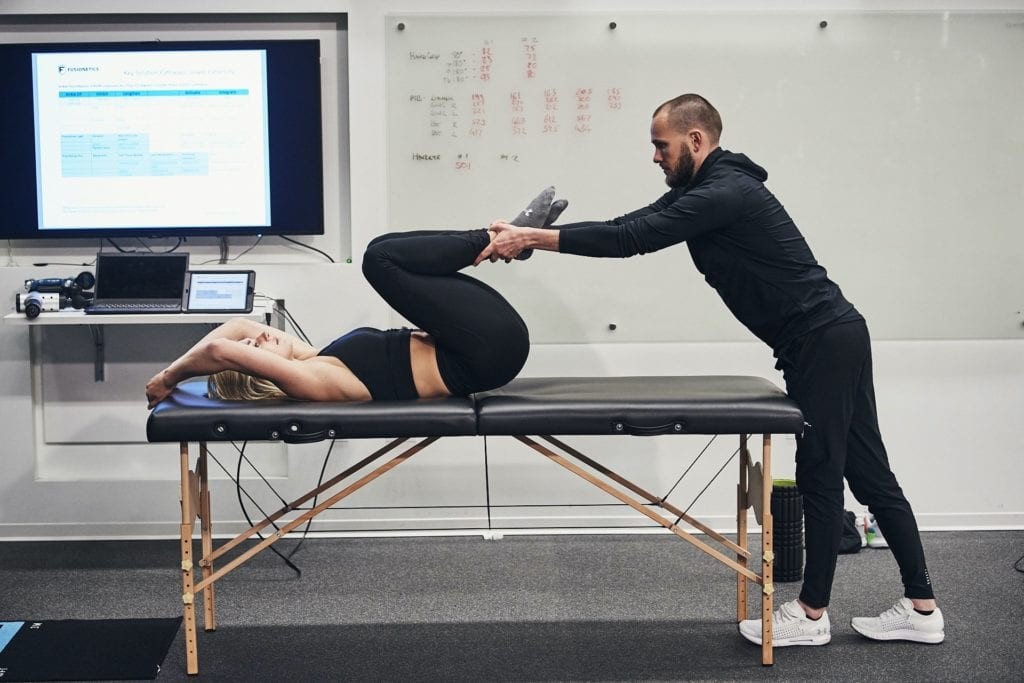
One easy way to train yourself to plan for recovery is, when designing or choosing a training plan, always include “easy” running days between hard workout days. For example, if you plan to do some combination of tempo runs, fartleks, track intervals and strength training once or twice a week, as well as your weekly long run, for best results schedule them at least a day or two apart, and either run easy on those days or take the day off. That way, after each hard or long session, you’ll be adequately recovered by the time the next one comes around.
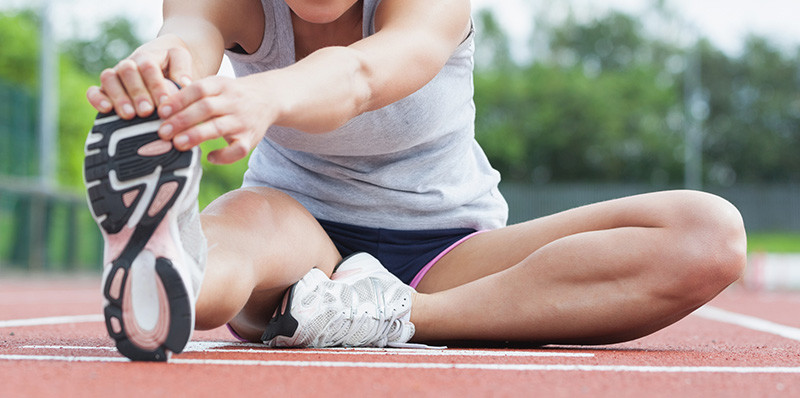
Watts recommends having a recovery system that’s built into your training plan. “The tools, really, are the things that come and go, because technology changes and companies develop different tools,” says Watts. “We say, ‘Don’t chase the shiny objects, just make sure you have a bit of a system.’ For example, if you are going to do cold therapy, or contrast bathing, or infrared sauna, or whatever it might be, just know why you are doing that and how it fits into your system, rather than just doing it.”
It’s also important to have practical, lightweight, packable alternatives when traveling – such as compression socks and a stick roller, when you would normally use compression boots and a bulkier foam roller if you were at home.
Recovery starts with your cooldown
Getting into the habit of doing a proper cooldown after every workout is an excellent way to promote recovery. Always take several minutes to move around, jogging or walking, after your workout. Foam rolling and stretching (carefully, and avoiding any areas that may have been strained during your workout) can also be extremely useful, as are regular consultations with a physiotherapist and massage therapist.
The importance of sleep
Watts says that sleep is the No.1 recovery modality in helping both body and mind recover from hard exertion. “The science and research are growing, and we are starting to really understand the importance of sleep, not only for our health, wellness and longevity but also for our performance,” says Watts. He adds that the research recommends eight to 10 hours of sleep per night for athletes, with 20 to 25 per cent of sleep time being REM (rapid eye movement) and 15 to 20 per cent being deep sleep.
Watts can’t emphasize enough how important sleep is for performance: “Sleep can help repair and regenerate both the body and the mind, so it’s an essential recovery tool for athletes,” he says, pointing out that sleep reduces inflammation, promotes the production of human growth hormone, regulates blood sugar levels and hormonal responses throughout the body and allows the brain and body to detoxify. He adds that it’s while we sleep that the adaptations we’ve been training actually occur in the body (not while we are working out), so your best performance as an athlete depends on planning for adequate sleep, creating an environment that’s conducive to getting enough sleep and cultivating habits that protect your sleep.
by Anne Francis
Login to leave a comment
How to makes the weekly long run a key part of your training plan
When starting to train for a race of almost any distance beyond the sprints, the weekly long run is key to building endurance. The main principle is to add mileage gradually over time. In the case of the marathon, a four- to six-month build is recommended, and less for a half-marathon or 10K race. Most training plans are conveniently built on a weekly schedule, and your weekend long runs are interspersed with short, easy runs, once- or twice-weekly speedwork sessions and/or strength training and recovery time.
How to incorporate the long run into your weekly routine
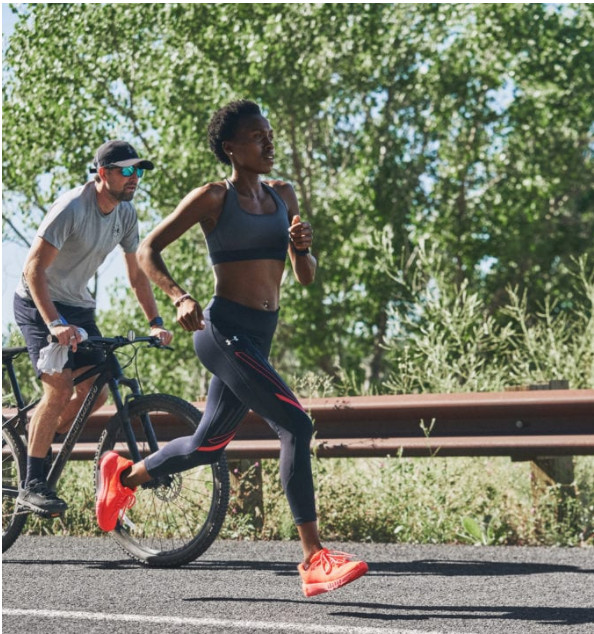
The point of the weekly long run is to build your endurance. Starting with a modest goal, such as being able to run for at least an hour without stopping, those who are new to running should run at a pace that lets them carry on a conversation. “You want to be able to actually do the long run, to be able to start it and to finish it – to me that’s where the win is, regardless of your pace,” says Under Armour runner and YAMAJO Run Crew founder David Joseph, who is based in Montreal. Putting in those weekly long runs will give you the confidence to go the distance on race day.
For a first half-marathon, a good rule of thumb is that a runner should have some experience with the 10K before they begin training, and similarly, those tackling their first marathon should have raced a half-marathon first, according to Joseph.
Initially, you’ll be better off running without a watch and getting used to what an easy, conversational pace feels like. More experienced runners might prefer to train by distance rather than time, starting with a long run of 12K to 15K. Adding a kilometre each week, after training for a couple of months you’ll have your long runs up to or beyond 21K and be well on your way to a successful result in the half-marathon – assuming you’re also running shorter distances, and occasionally running fast, in between your weekly long runs.
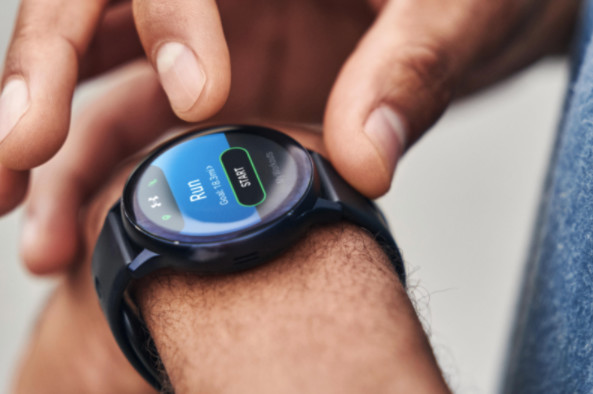
Under Armour trainer and former Canadian national decathlon champion Rich Hesketh, who is based in Calgary, recommends that beginners build mileage slowly: “Keep your increases quite progressive in a linear fashion,” he says. “Don’t try and have big jumps or go too long at the same pace for more than a couple of weeks. As a principle of progressive loading, we could look at up to one to two kilometres per week for marathon training. And you’ll eventually get to the point where you’re doing your three- and four-hour long runs.”
Keep your long runs easy
It’s important to do the long run at an easy, comfortable, conversational pace in order to train your aerobic system and slow-twitch muscle fibres, which are what the body uses during all but the final sprint of the marathon. You can work on speed over short distances during your mid-week runs. On race day, the two elements of your training (endurance and speed) will come together, and if you’ve also dialled in your nutrition and recovery, you should be able to hold your goal pace and sprint across the finish line. The challenge is to trust that this process works!
Runners should be guided by the 80/20 rule: run 80 per cent of mileage at an easy pace and 20 per cent at a faster pace (steady state, tempo or race pace). Many runners think they will only get faster if they hammer every workout, but this is a very unwise approach that will likely lead to overtraining and injury. Hesketh explains, “People feel like they’re not working hard enough – they feel like they’ve got to go out and blast a hard run. And that’s not necessary – in fact, that steady, even pace, once you find your pace and your cadence for that, will go a long way in your ability to maintain and improve your running.”
Use a heart rate monitor
The best way to determine how fast to run your long runs is to calculate 220 minus your age, and keep your heart rate at or below 60 to 65 per cent of that. For best results, use a wrist-based or chest strap heart rate monitor. For example, a typical 30-year-old’s max heart rate would be around 190 beats per minute, so on long runs their heart rate should not exceed 123 beats per minute. You might feel like you could easily go faster, especially at the beginning of a long run, but you should resist the urge and save the speed for your short midweek runs. The Samsung Galaxy Watch Active2, Under Armour Edition offers accurate wrist-based heart rate monitoring to keep you honest! And in addition, Under Armour’s MapMyRun app offers heart rate analysis, whose detailed heart rate graphs help runners train at the right intensity.
Your total weekly mileage should increase by not more than 10 per cent per week. Let’s say, for example, that you’re running 6K to 8K four times a week, plus your 10K weekly long run (to start). That’s 34K to 42K total for that week. The following week, if you increase your long run to 13K while keeping your other runs at roughly the same length, you’re now running 37K to 45K per week – an increase of around eight per cent. Keep in mind that as you gain fitness and experience, you’ll want to make your mid-week runs a bit longer, as well. (There’s a certain amount of mental math necessary to make sure you’re increasing your mileage at an appropriate rate – not so slowly that you don’t reach your goal, but not so quickly that you end up overtrained, and possibly injured.) Always schedule at least one or two rest days or easy run days between the long run and your next speed workout.
Shoes for the long run
For your long runs, you want a shoe with plenty of cushioning. The UA HOVR™ Infinite 2 is an excellent high-mileage shoe and perfect for the long run. The midsole is made with UA’s signature HOVR cushioning foam, and the shoe has the embedded chip in the heel to give you all your key running metrics via the UA MapMyRun™ app. The Samsung Galaxy Watch Active2, Under Armour Edition also comes pre-loaded with UA MapMyRun™, so you can also receive real-time audio cues on your form and cadence.
f you prefer a shoe that will work well for easy runs, speedwork and tempo runs as well as the long run, the most versatile choice would be the UA HOVR™ Sonic 3, which has all the lightweight cushioning and flexibility you need. It, too, comes with the built-in chip that connects to the UA MapMyRun™ app.
by Running Magazine
Login to leave a comment
Austin Marathon Invites Runners from around the world to run Free Global Running Day Virtual 5K
The Ascension Seton Austin Marathon presented by Under Armour invites runners from around the world to register for the free Global Running Day Virtual 5K. This is an excellent opportunity for everyone to come together to celebrate the sport we love and the entire running community.
You can run with anyone from anywhere during the free Global Running Day Virtual 5K! Invite friends, family, neighbors, and your running group to join you. Plus, finishers could win some sweet prizes! Registration is open until Wednesday, June 3rd.
“I’m hyped that the Austin Marathon is offering a virtual 5K to celebrate Global Running Day,” said Will von Rosenberg, who attended last year’s Global Running Day event in Austin. “It was great to see the Austin running community come together at last year’s event. I’m ready to run the Global Running Day Virtual 5K with runners from around the world!”
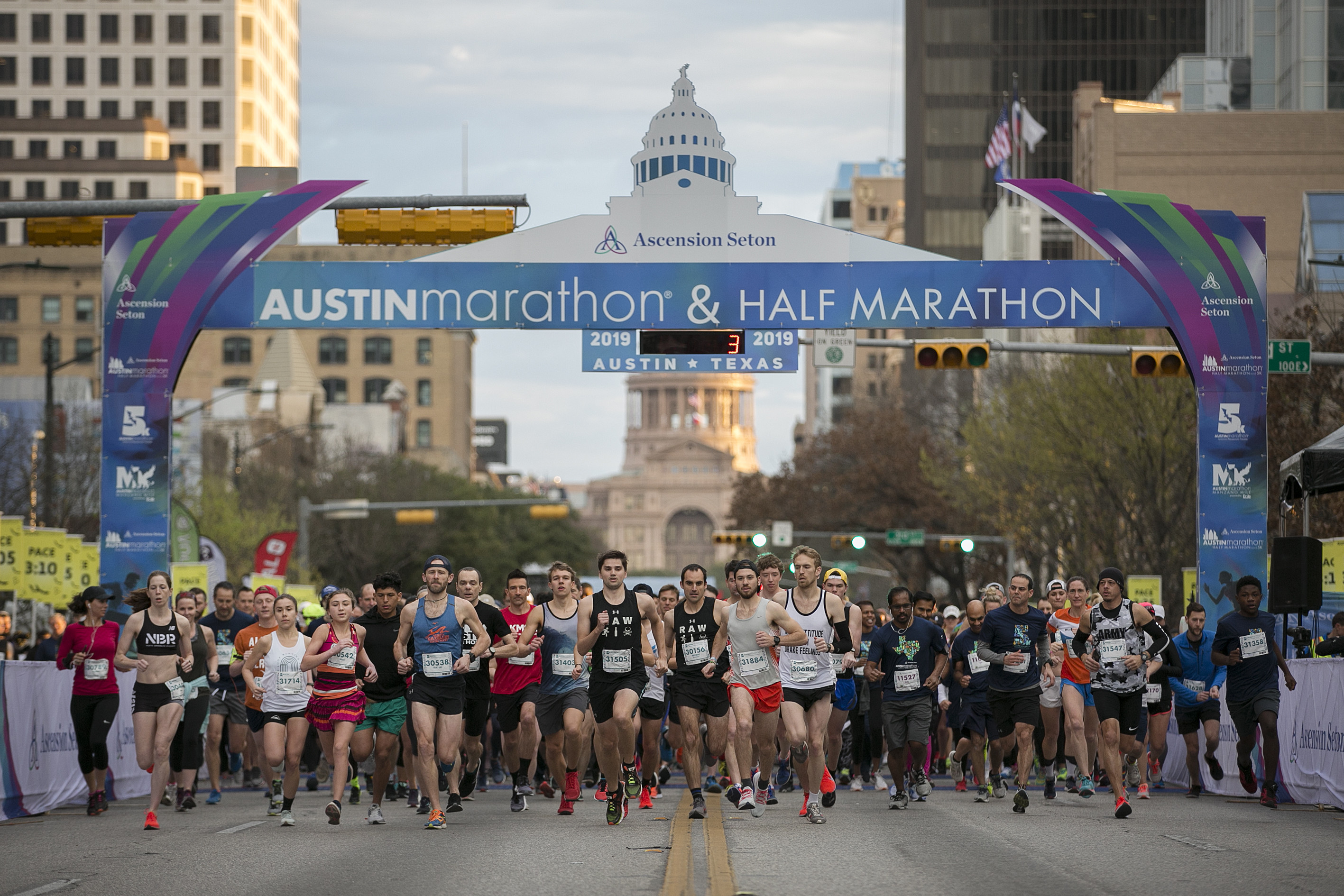
Participants of the free Global Running Day Virtual 5K can submit their 5K results at any time between May 20th and June 4th. Every participant will receive:
Customizable, downloadable bib that can be printed at home.
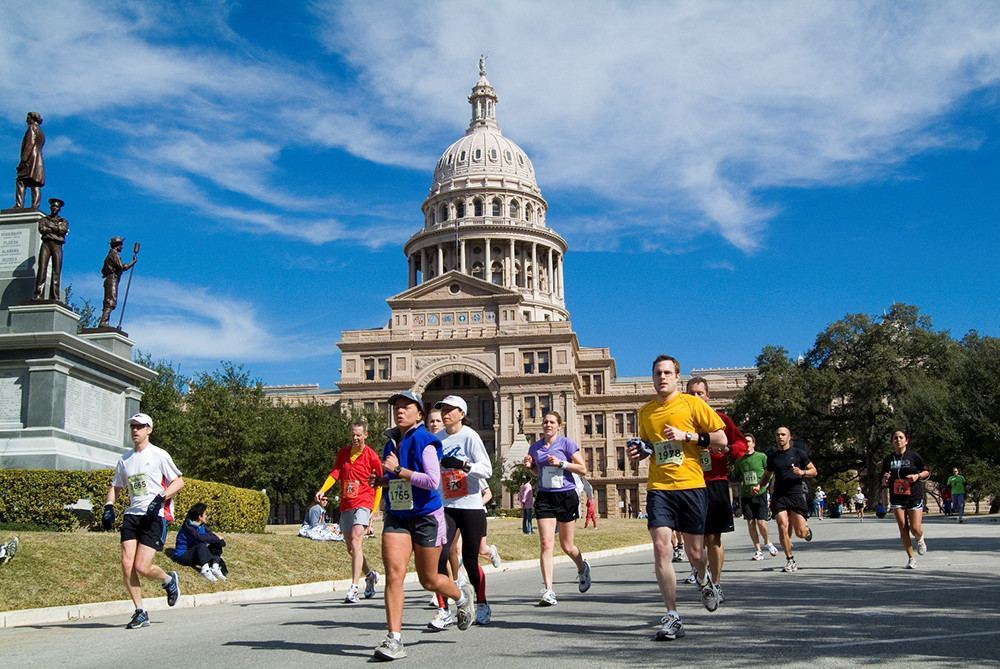
Limited-edition 2020 Global Running Day digital finisher medal.
Official digital finisher’s certificate.
Automatic entry into the giveaway to win 1 of 5 grand prizes including entry to the 2021 Ascension Seton Austin Marathon, Half Marathon, or 5K + VIP Experience
“I'm delighted to celebrate Global Running Day with the Austin Marathon. Their 30th anniversary will be the North American leg of my attempt to be the first 6-time cancer survivor to run a marathon on every continent,” said Jonathan Acott, who will participate from London. “After 6 cancers, running is the way I manage both my mental and physical health. It gives me the time I need to manage my emotions but also to celebrate my body and what it's been through and can still do.”
Austin’s flagship running event annually attracts runners from all 50 states and 35+ countries around the world. The start and finish locations are just a few blocks apart.
They are within walking distance of many downtown hotels and restaurants. The finish line is in front of the picturesque Texas State Capitol. The Austin Marathon is the perfect running weekend destination. Registration opens on June 1st.
Login to leave a comment
Austin Marathon Weekend
The premier running event in the City of Austin annually attracts runners from all 50 states and 20+ countries around the world. With a downtown finish and within proximity of many downtown hotels and restaurants, the Austin Marathon is the perfect running weekend destination. Come run the roads of The Live Music Capital of the World where there's live music...
more...The Ascension Seton Austin Marathon presented by Under Armour donated Nearly $23,000 to Paramount Theatre
The Ascension Seton Austin Marathon presented by Under Armour donated $22,780 to Paramount Theatre. The donation, in conjunction with Austin Marathon weekend, has increased annually since High Five Events took over in 2017. Nearly 2400 participants registered for the KXAN SimpleHealth 5K benefitting Paramount Theatre.
A portion of their registration fee supports the historic Austin theatre and its educational programs. The event is a part of Austin Marathon weekend and is the only 5K to run on historic South Congress Avenue.
“We are thrilled to continue this partnership and be the recipient of funds from the KXAN SimpleHealth 5K. The funds from this event support our Education programs serving over 22,000 students each year. Performing, experiencing and learning through the arts helps all young people have the creative confidence they need to be successful in their communities,” said Maica Jordan, Chief Development Officer.
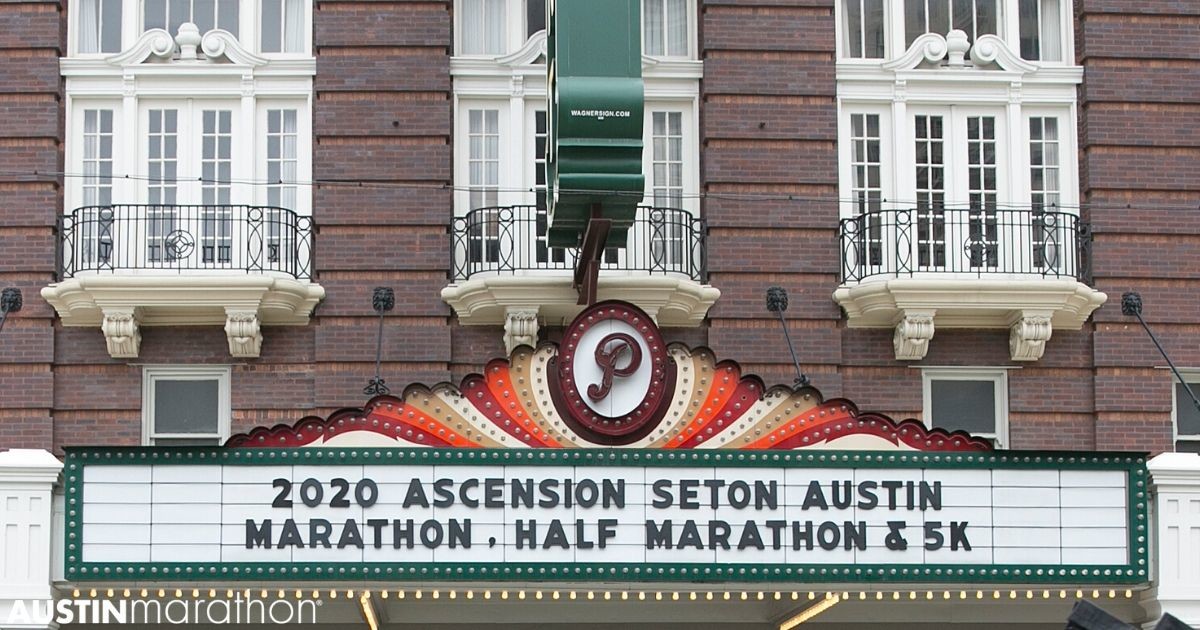
“These funds have immediate and enormous impact on our ability to serve the students most in need. Thanks to all who participated in the 5K and we look forward to seeing you all again next year.”
Inspired by the power of the arts to change lives, the Paramount Theatre strives to engage all Central Texans through extraordinary live performances and films, to ignite the intellect and imagination of our youths through Paramount Education programs, and to ensure the preservation of the crown jewels of downtown Austin. Constructed in 1915 and listed on the National Register of Historic Places, the Paramount Theatre is one of the world's few surviving examples of a fully operational early twentieth-century vaudeville theatre.
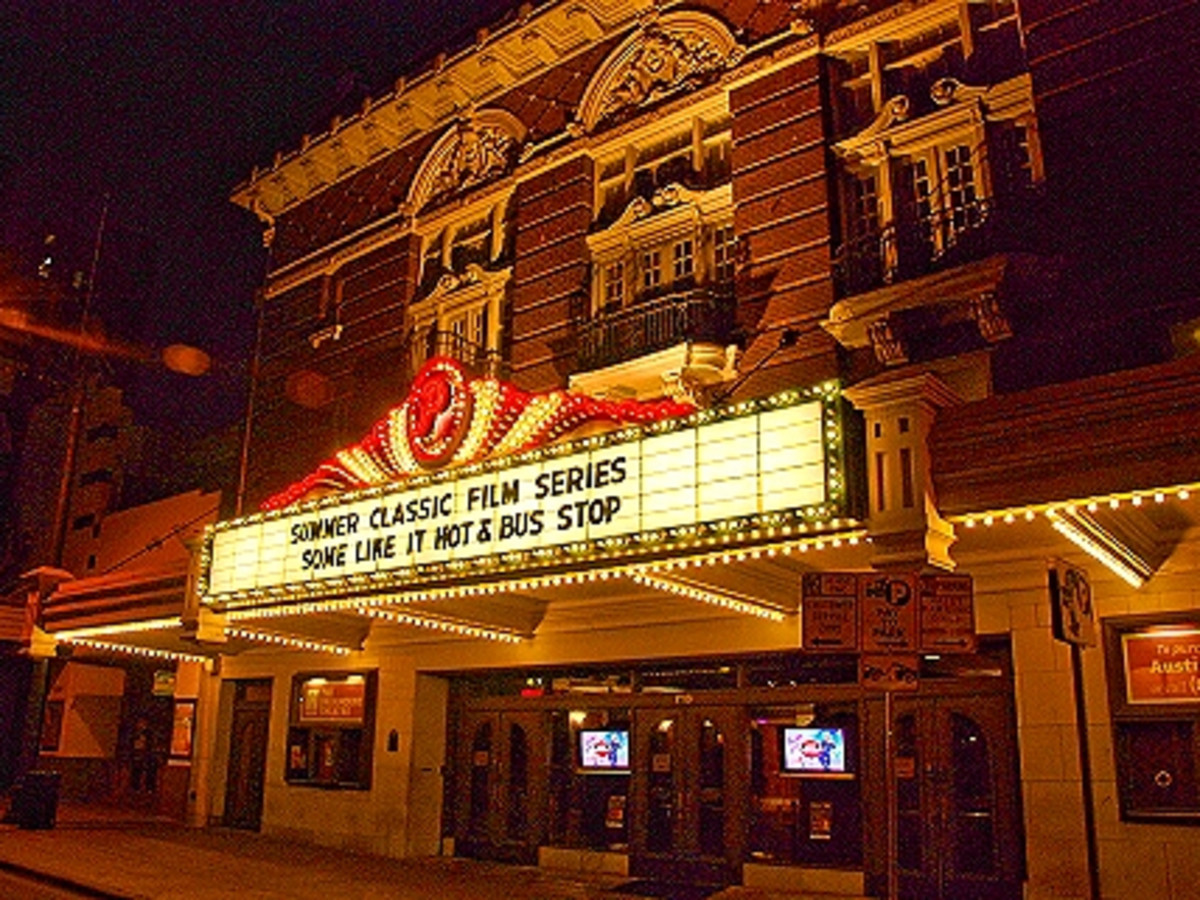
More than 250,000 guests attend performing arts events, concerts, film, and talks downtown each year; the Paramount is a principal venue for the SXSW Film Festival, the Austin Film Festival, the Moontower Comedy Festival, and the Summer Classic Film Series.
“The historic Paramount Theatre has a massive impact on Austin through its shows, community engagement, and educational programs," said Jack Murray, co-owner High Five Events. "We’re excited to grow our partnership and proud to continue our support for the Paramount through the KXAN SimpleHealth 5K."
The Austin Marathon will celebrate its 30th year running in the capital of Texas on February 14, 2021. Austin’s flagship running event annually attracts runners from all 50 states and 35+ countries around the world. The start and finish locations are just a few blocks apart. They are within walking distance of many downtown hotels and restaurants.
The finish line is in front of the picturesque Texas State Capitol. The Austin Marathon is the perfect running weekend destination. Registration is currently open.
Login to leave a comment
Austin Marathon Weekend
The premier running event in the City of Austin annually attracts runners from all 50 states and 20+ countries around the world. With a downtown finish and within proximity of many downtown hotels and restaurants, the Austin Marathon is the perfect running weekend destination. Come run the roads of The Live Music Capital of the World where there's live music...
more...

